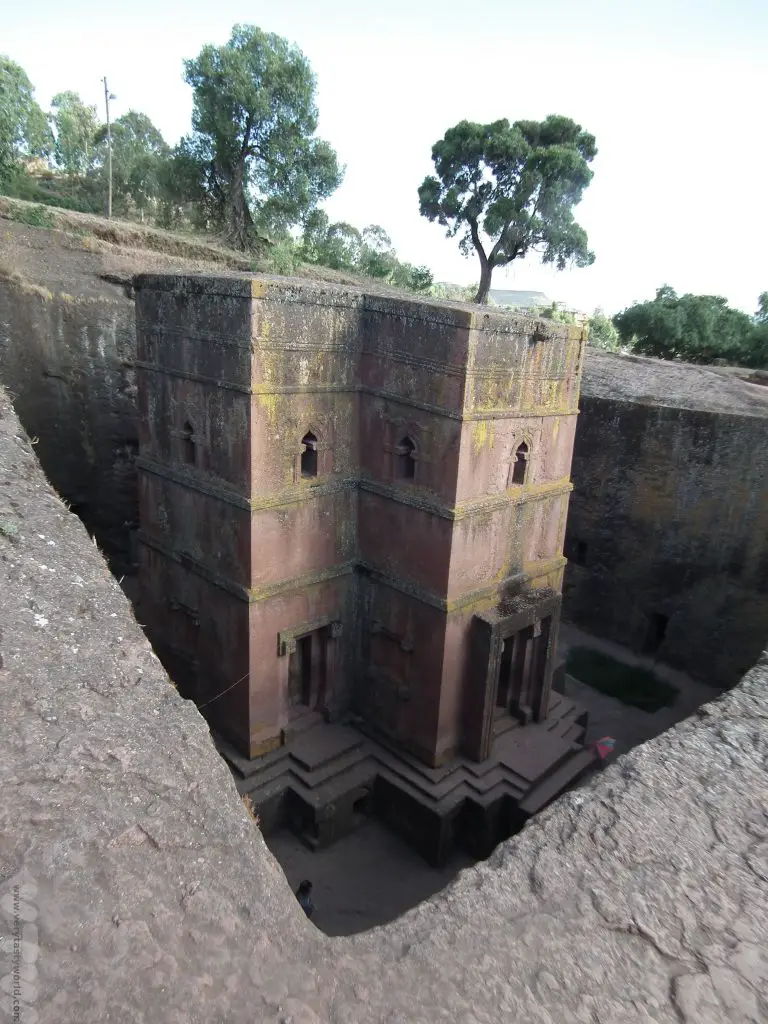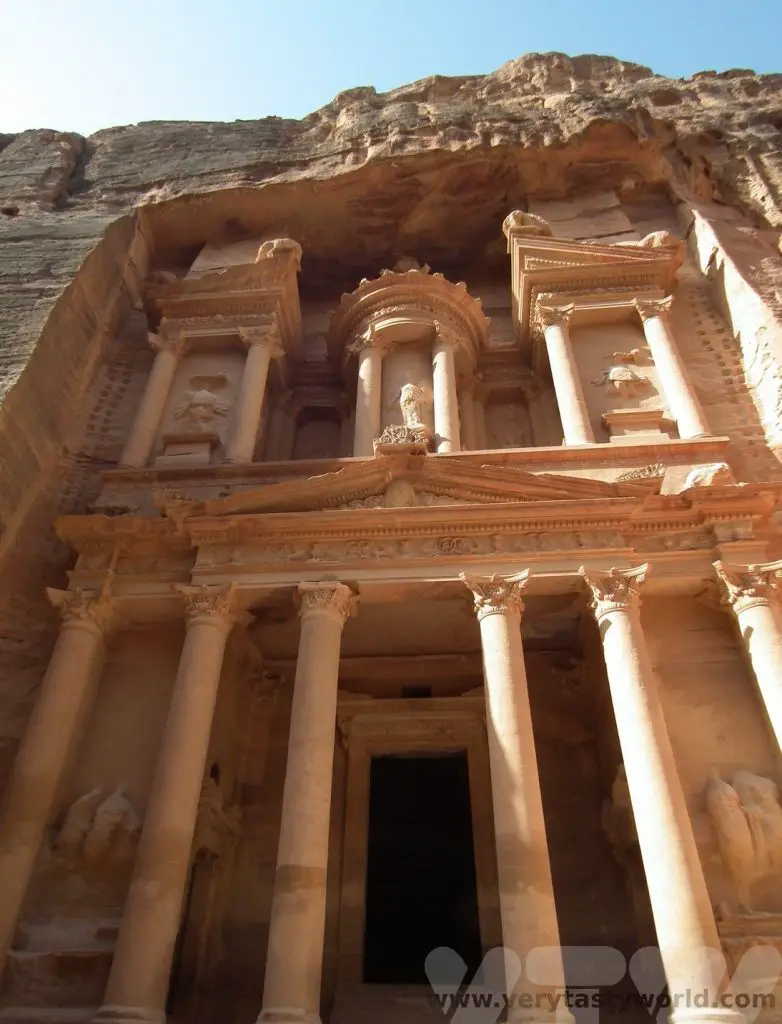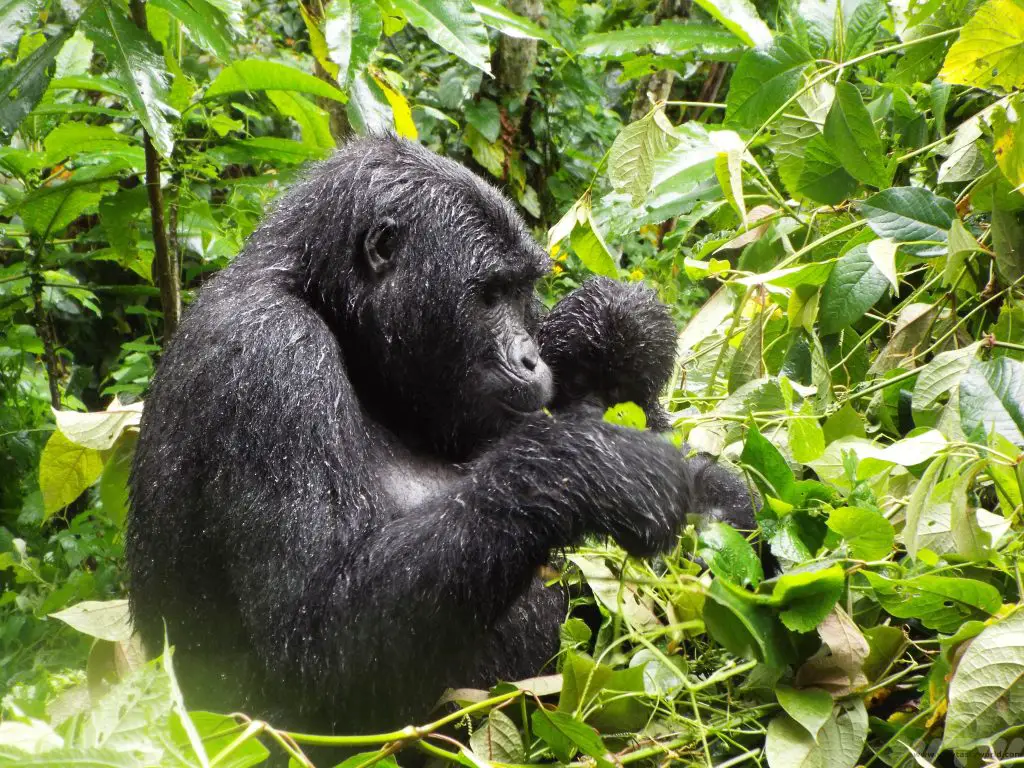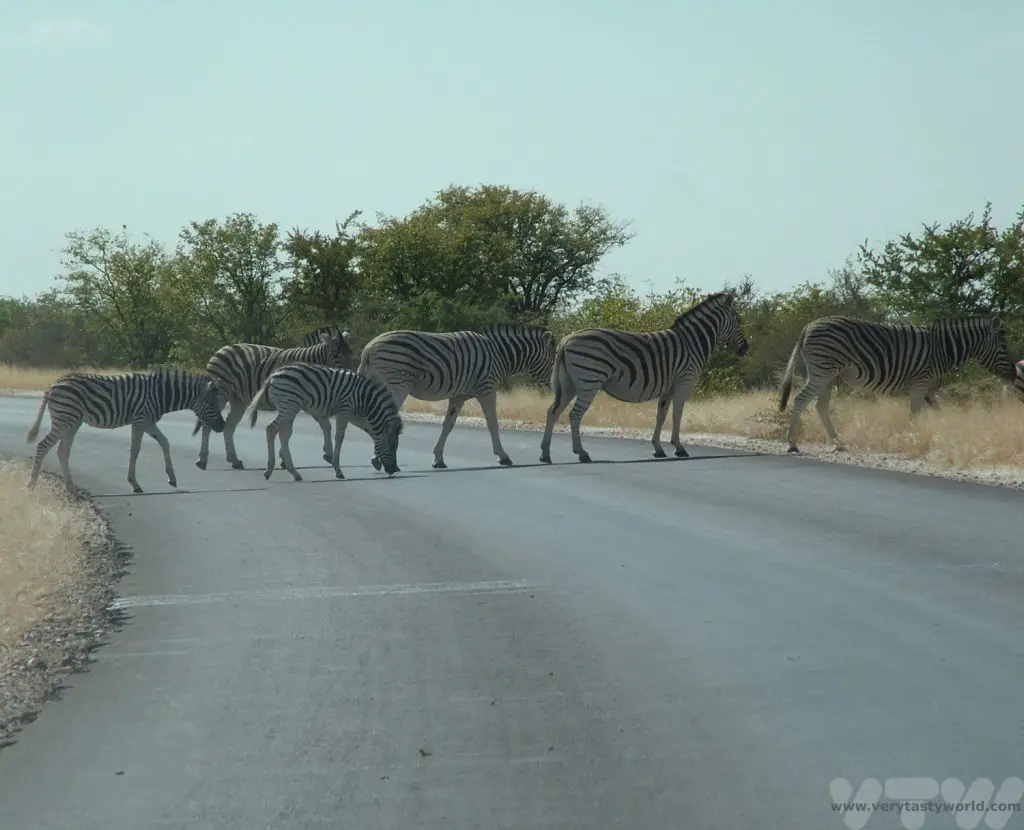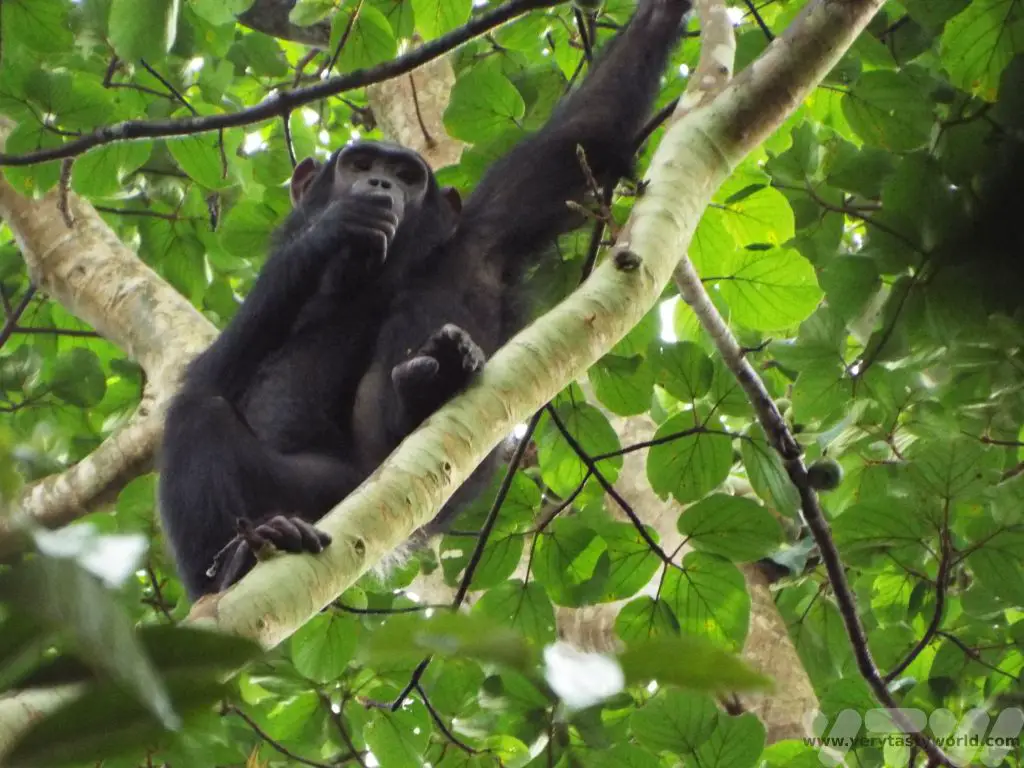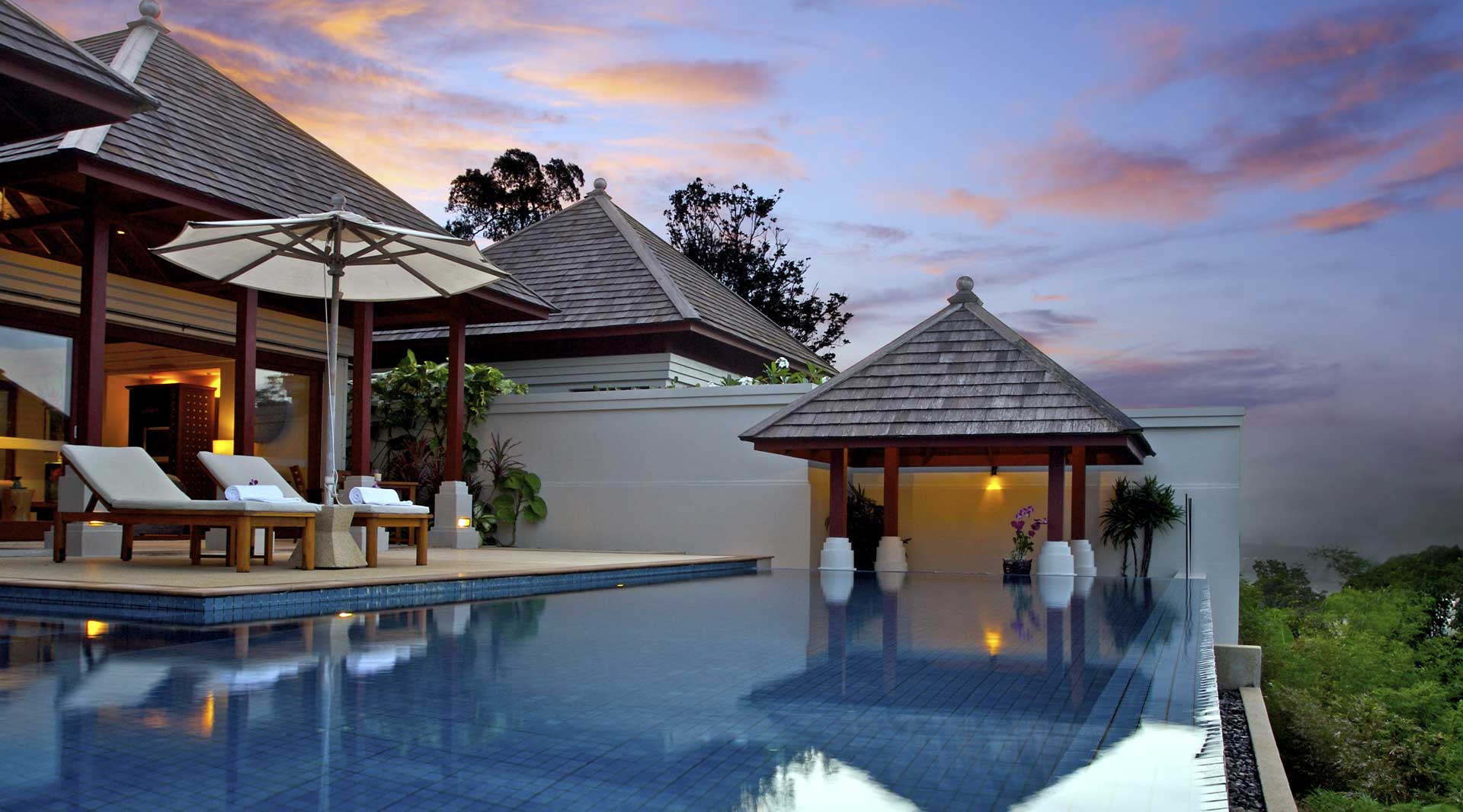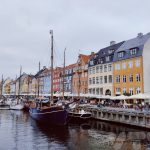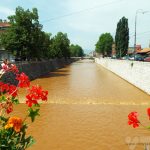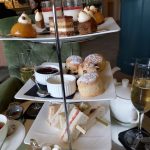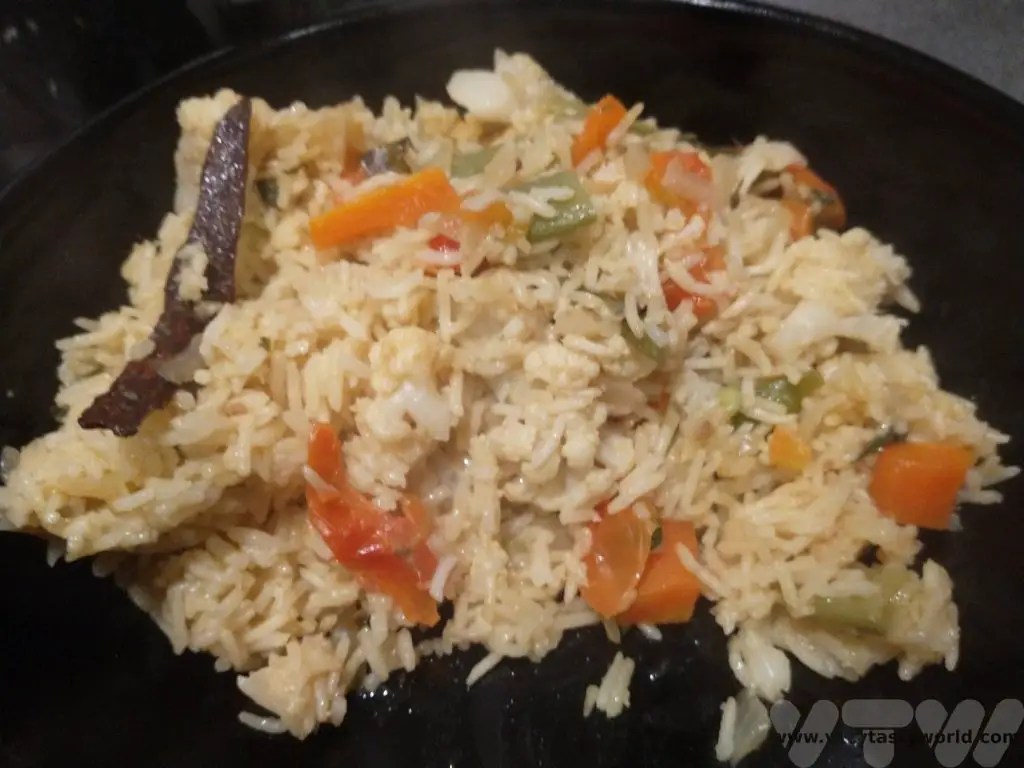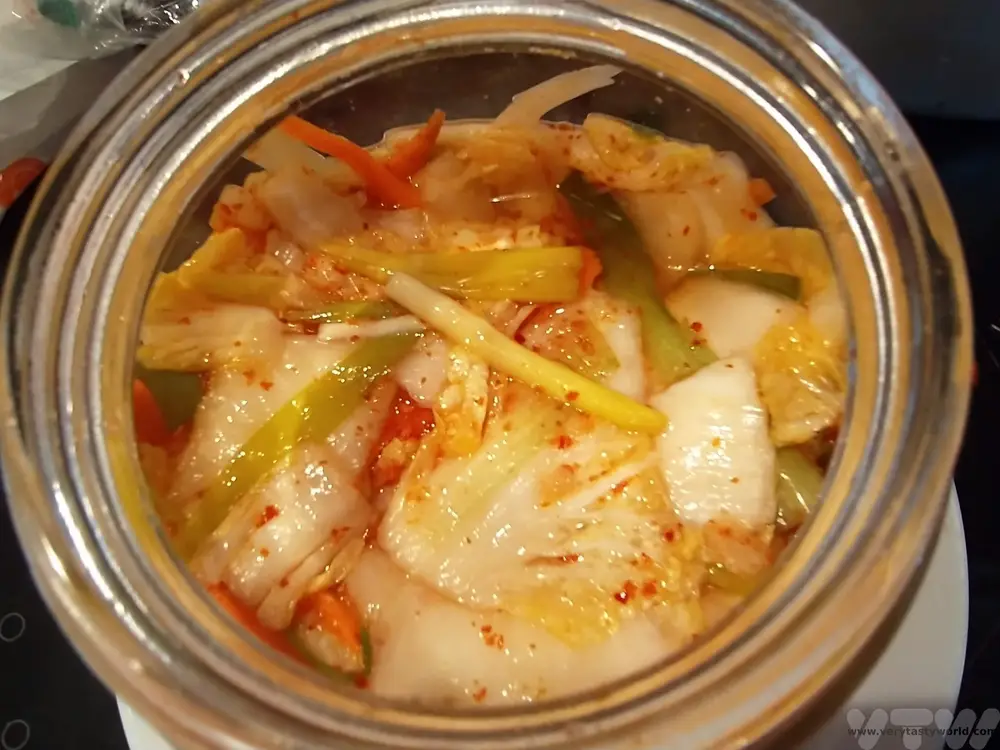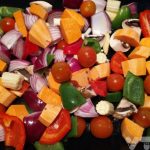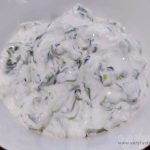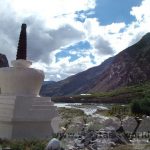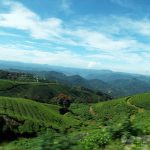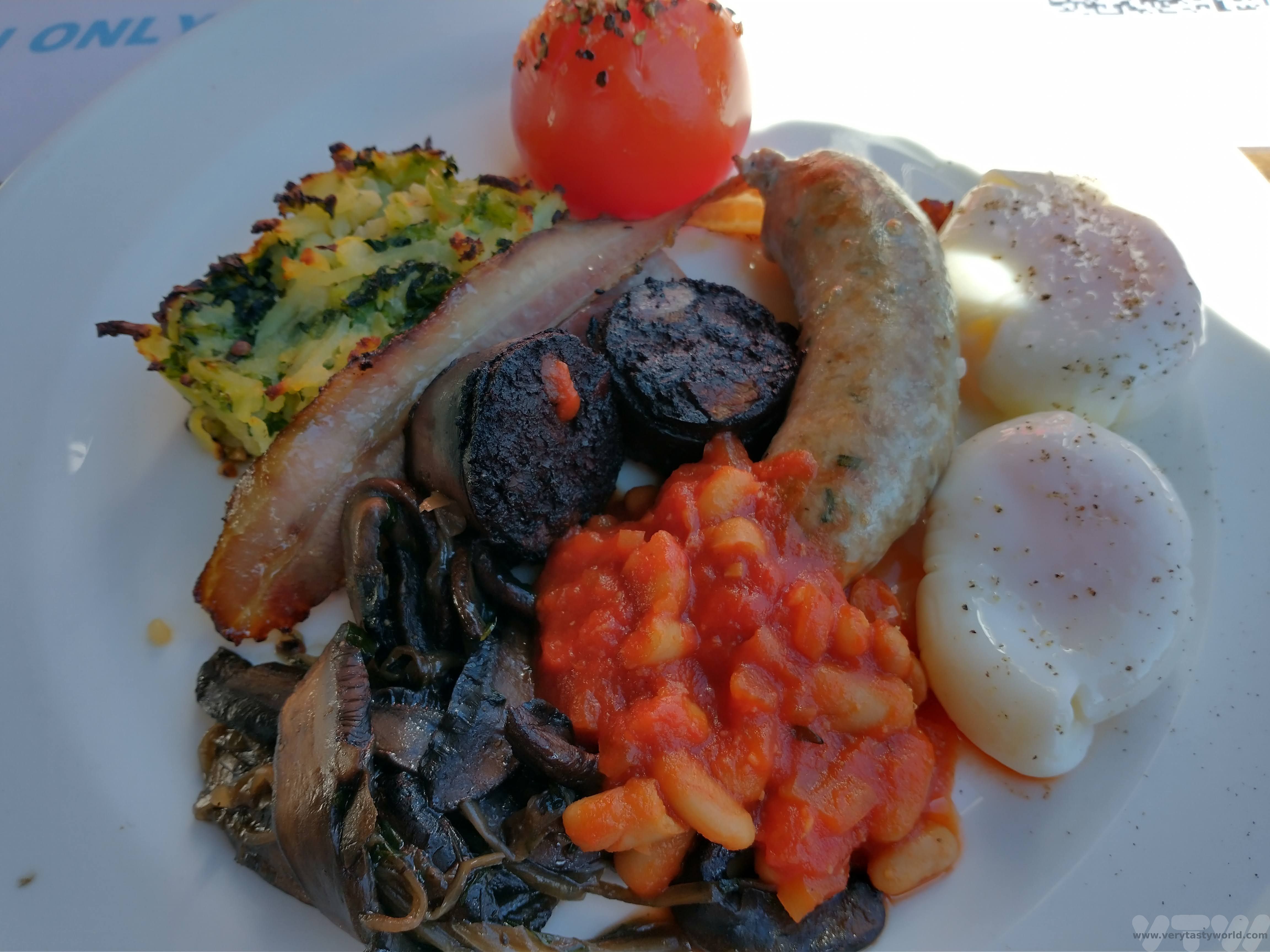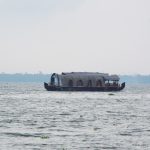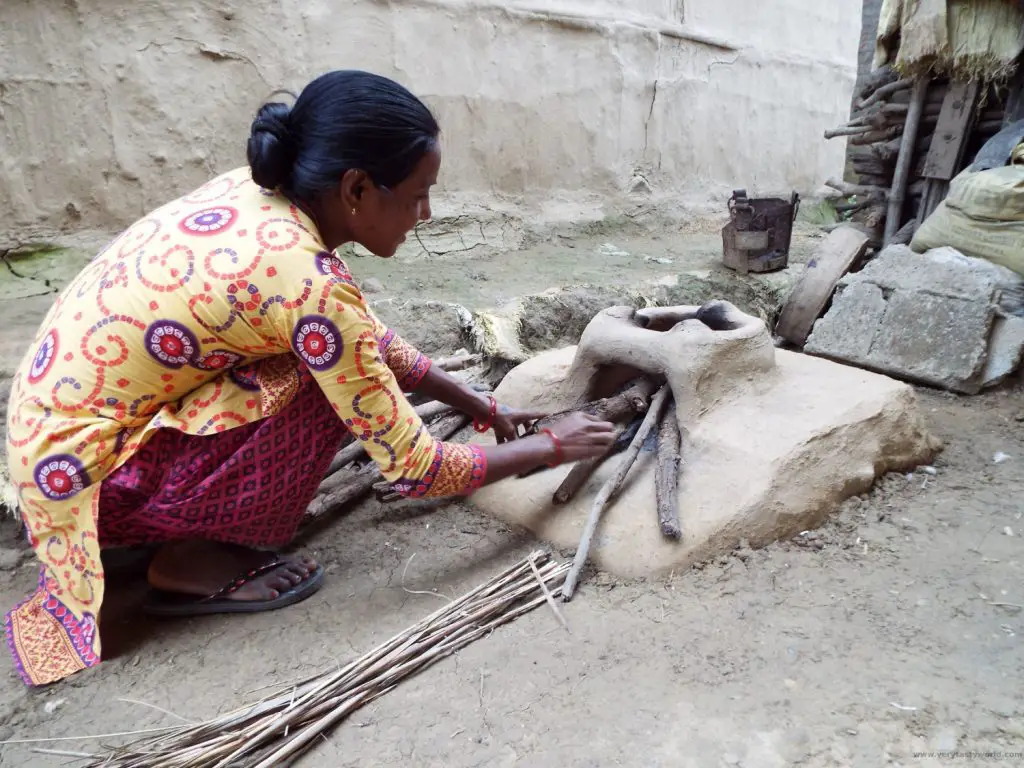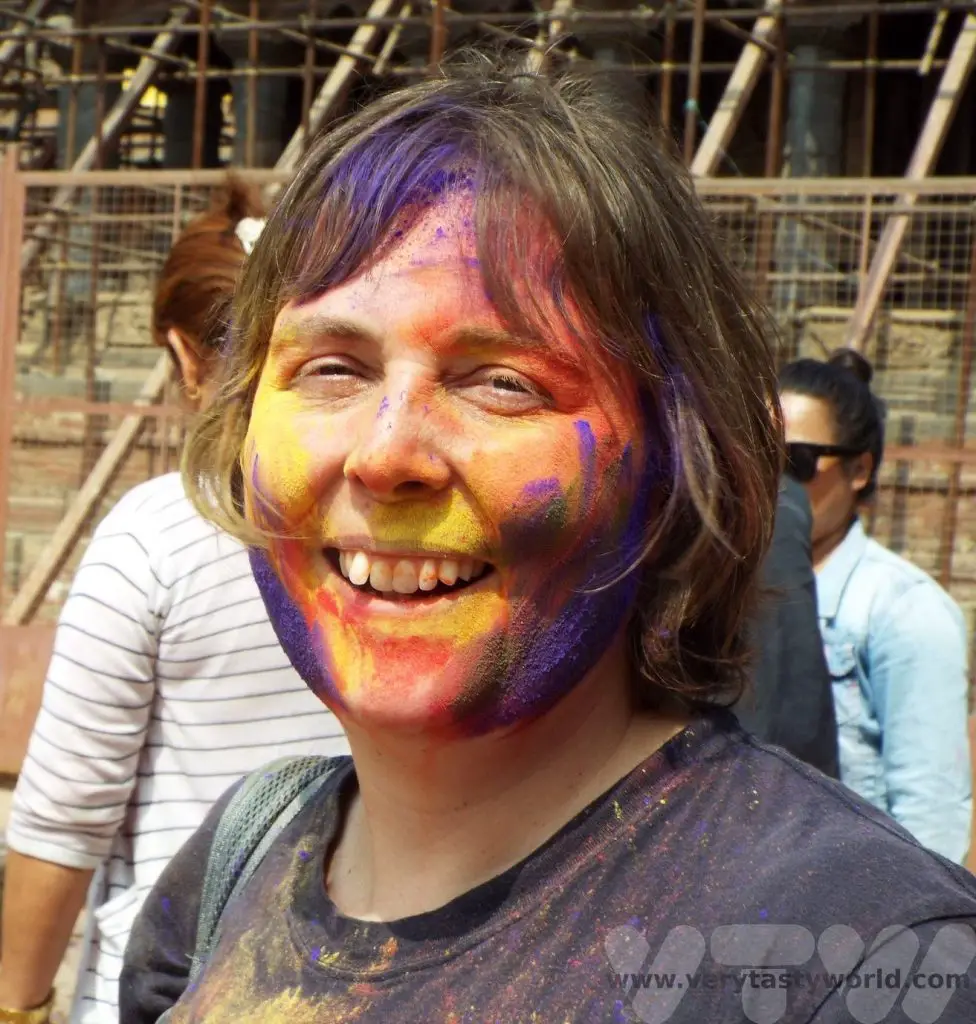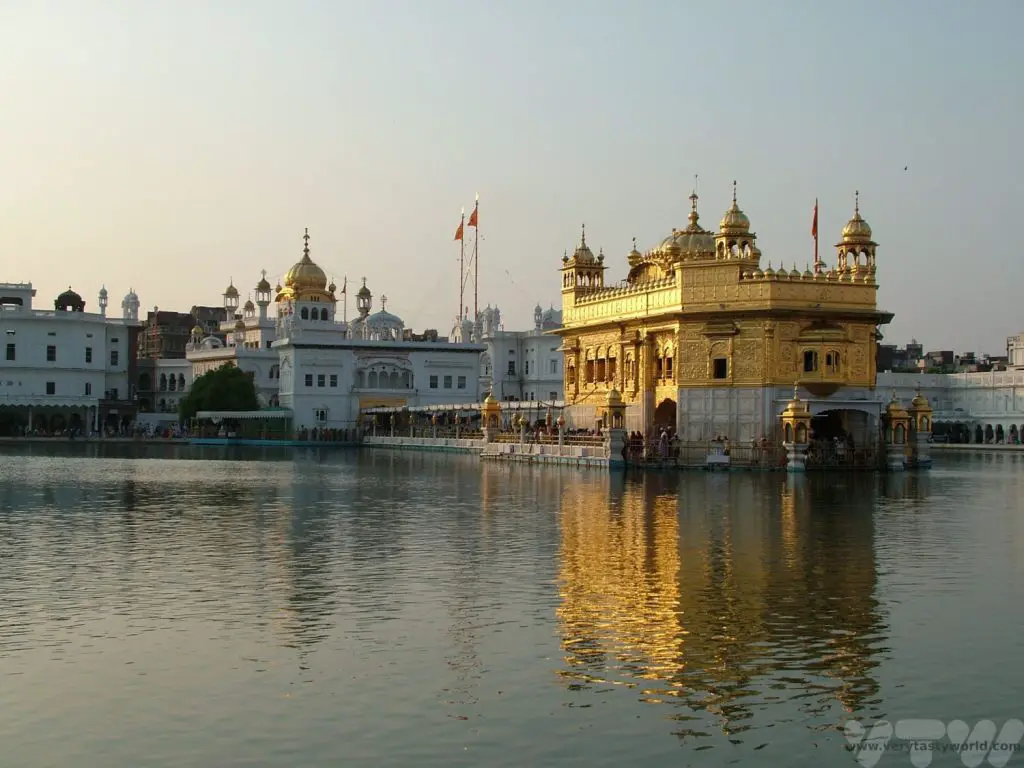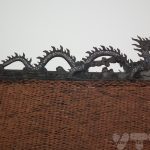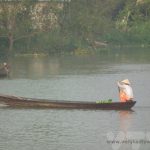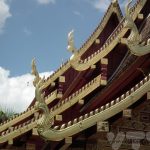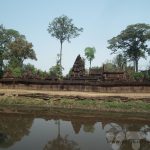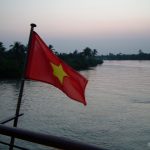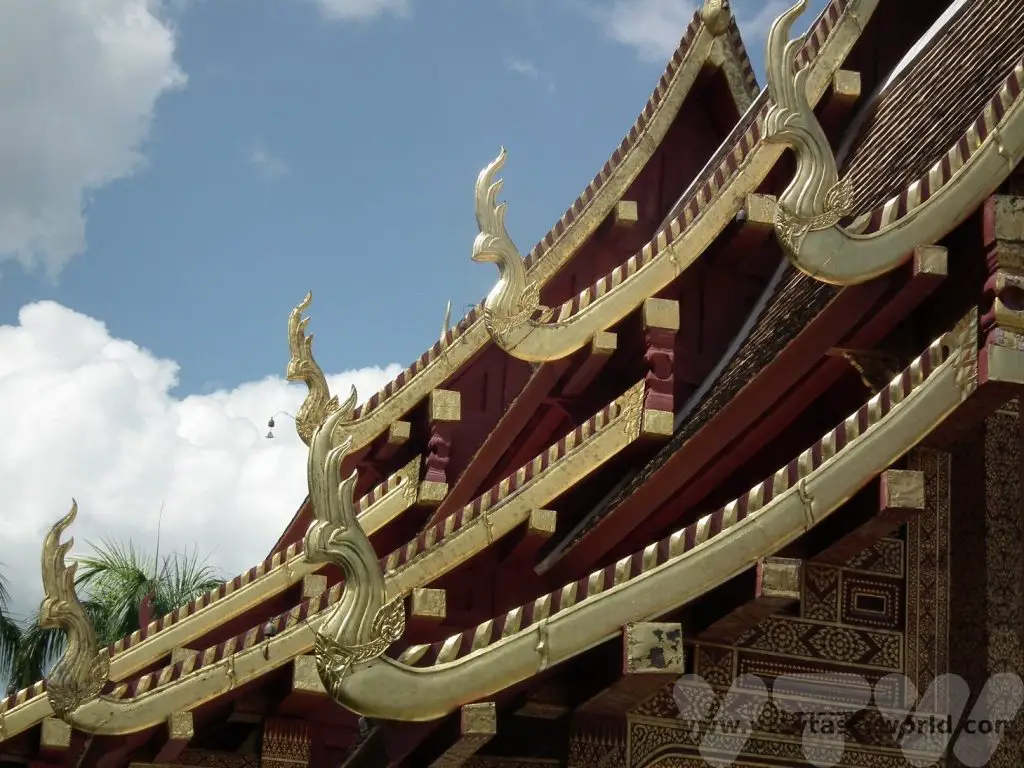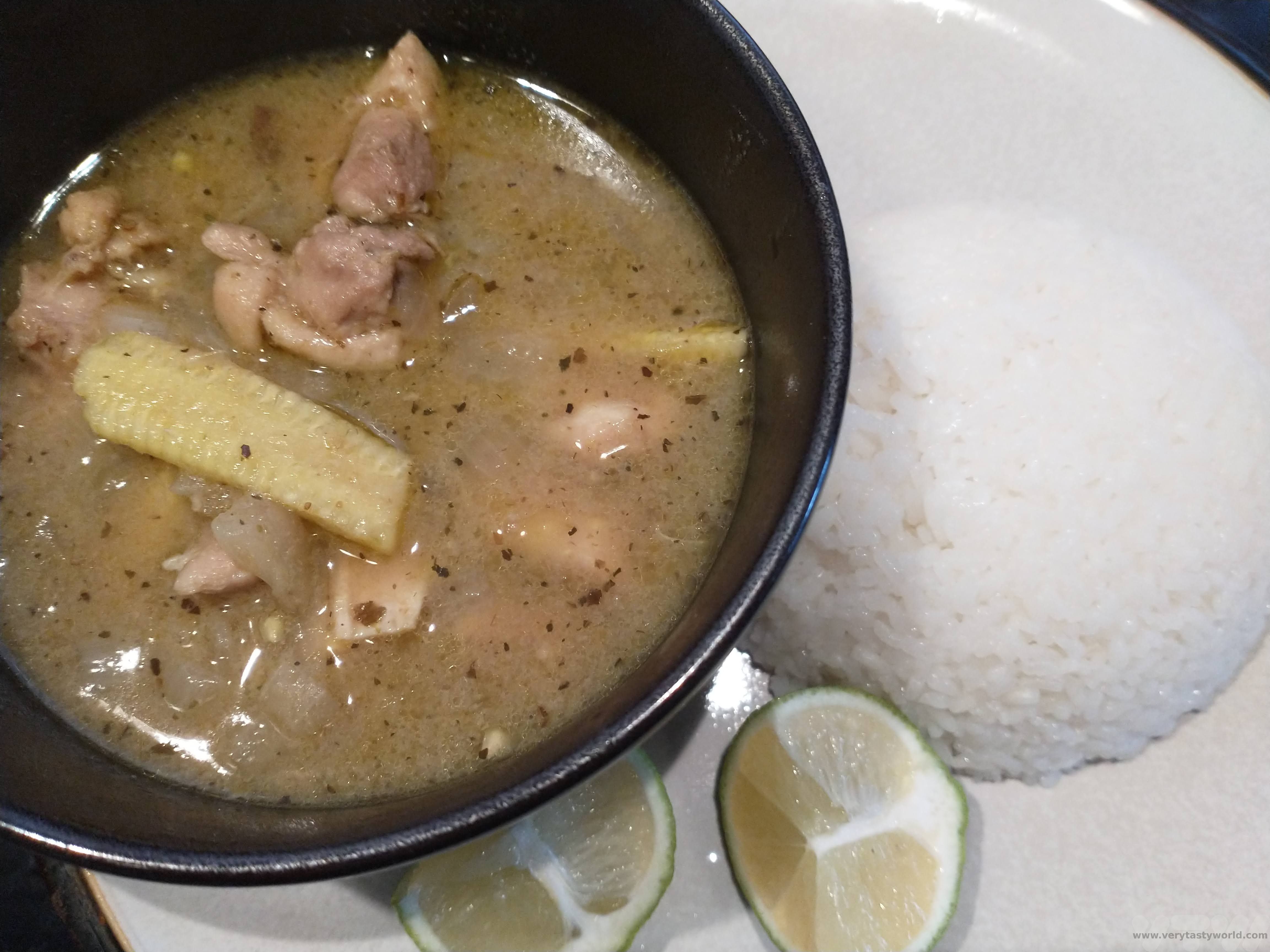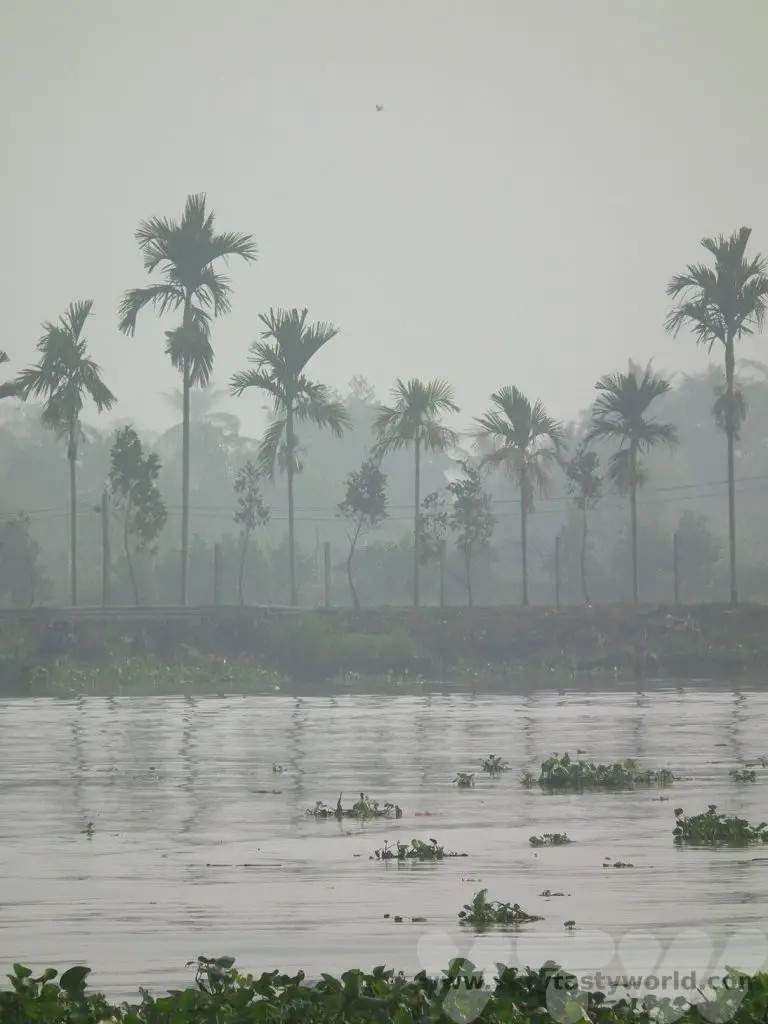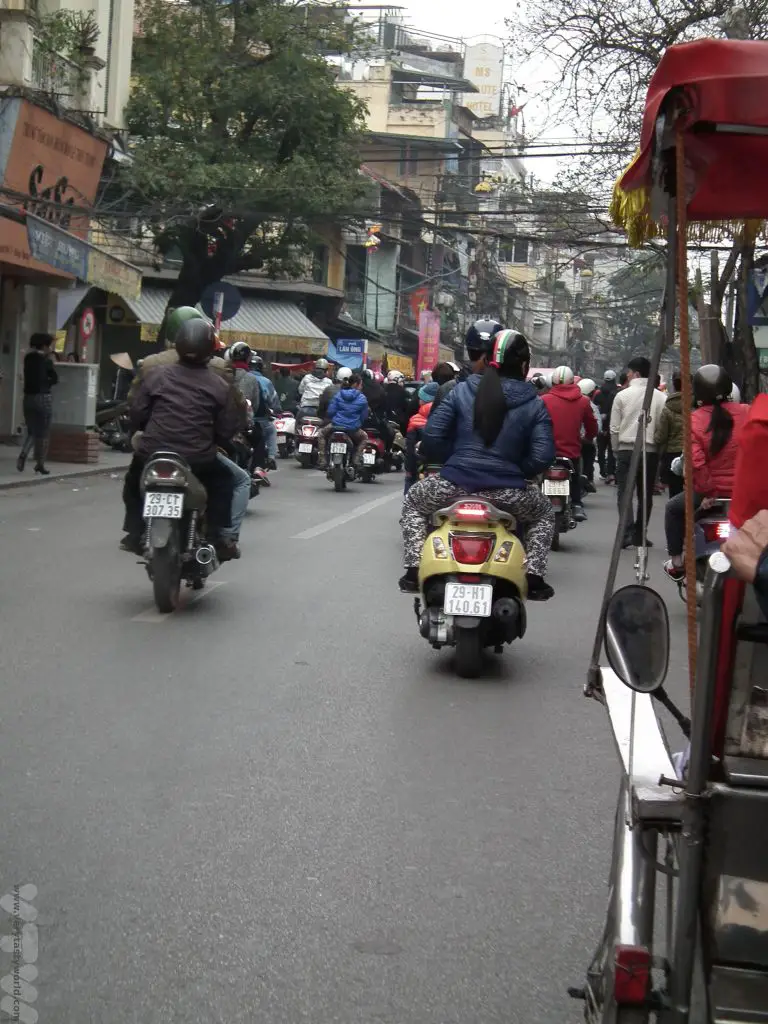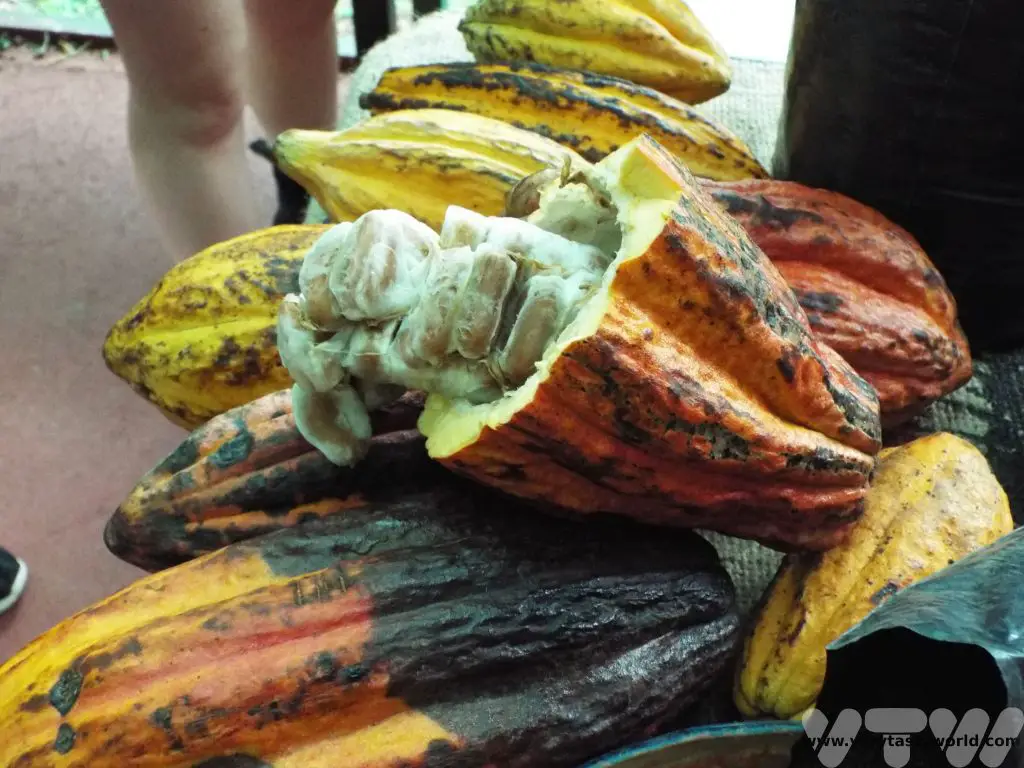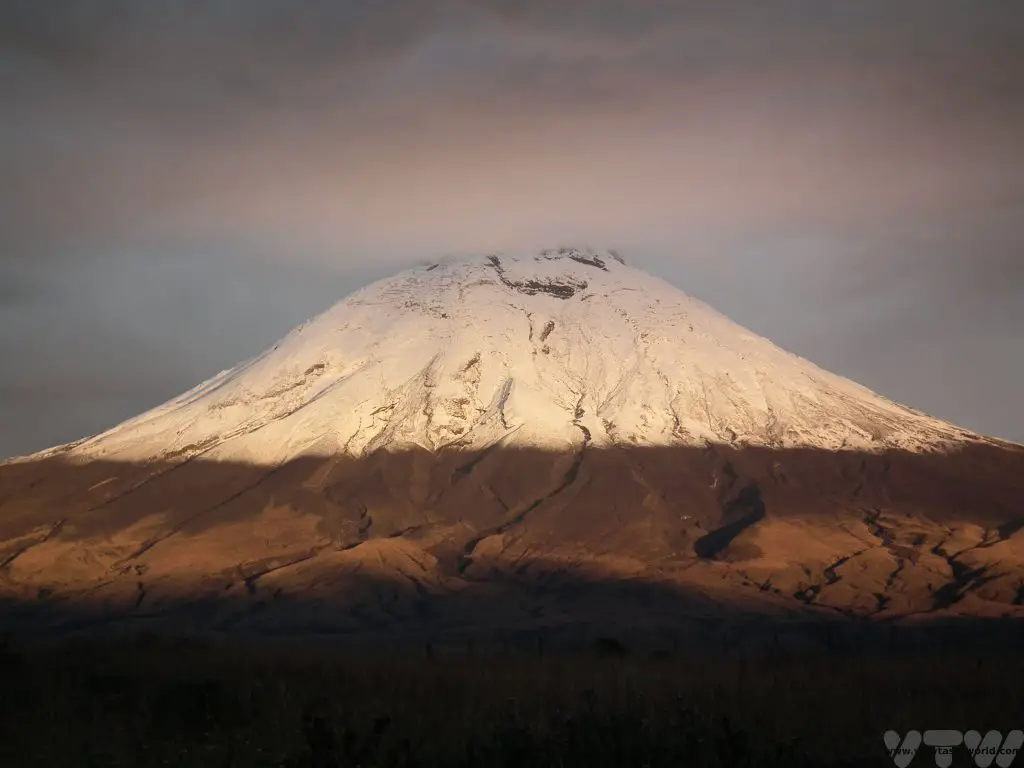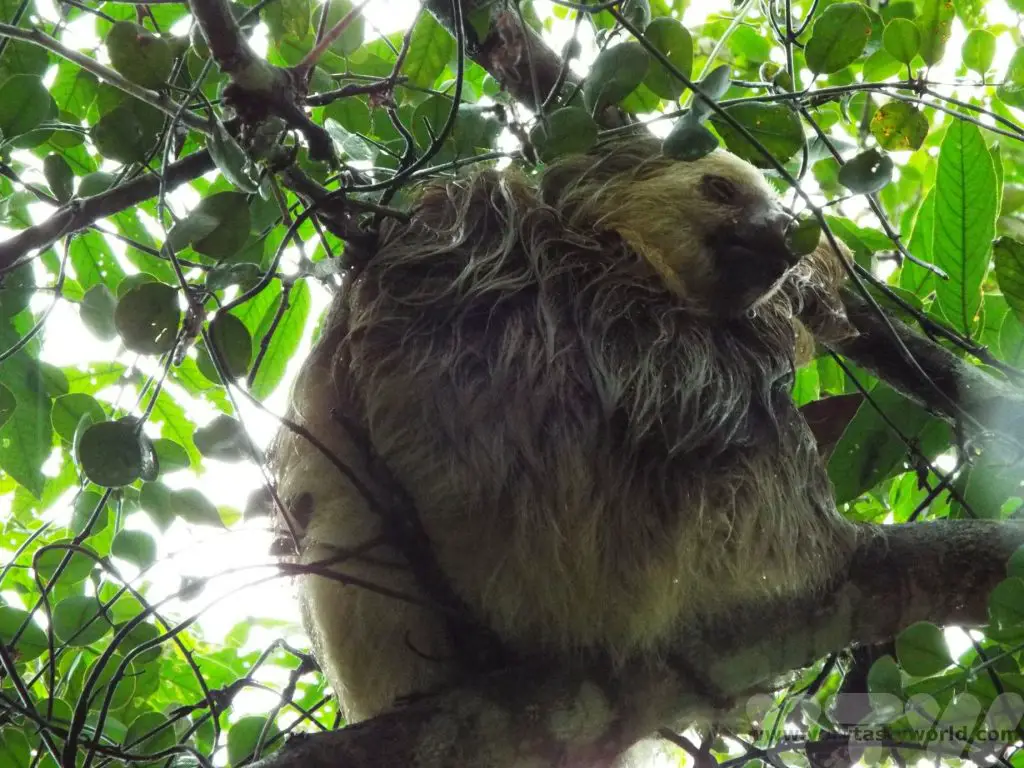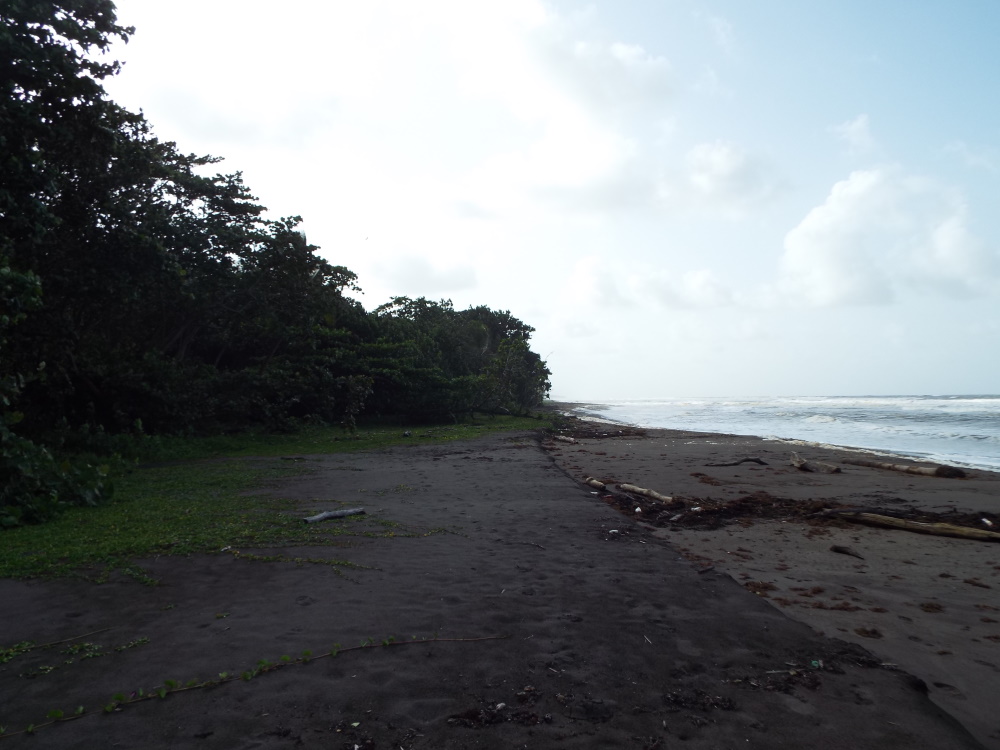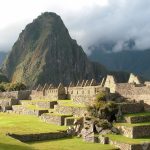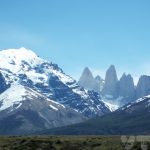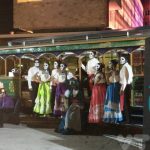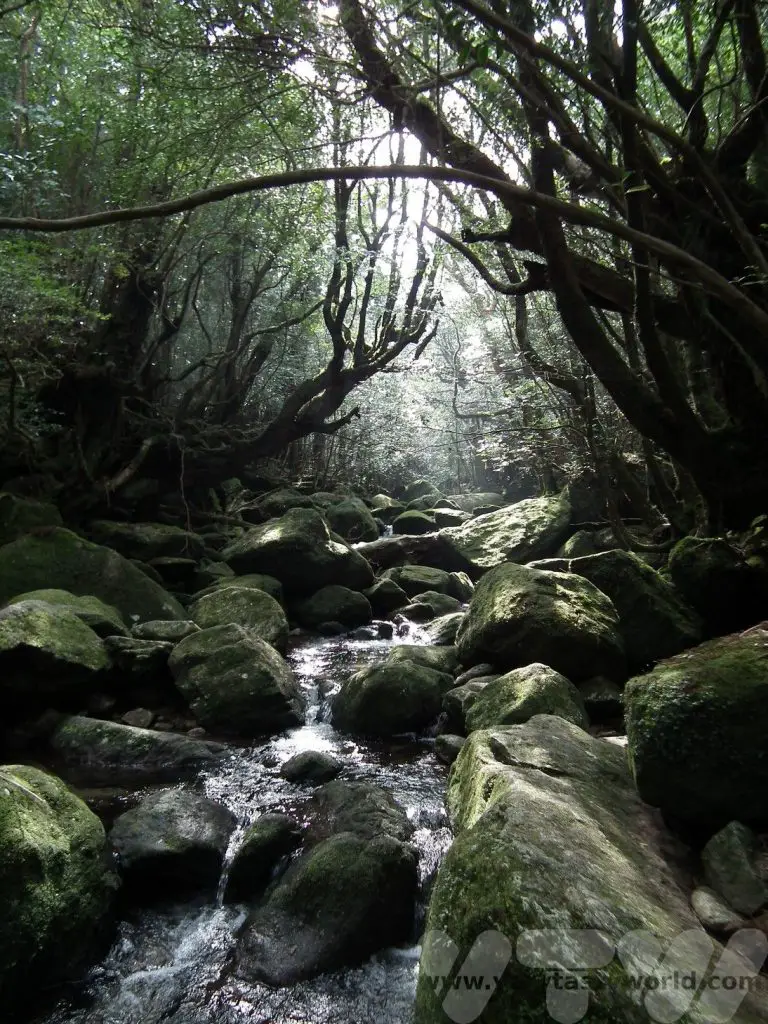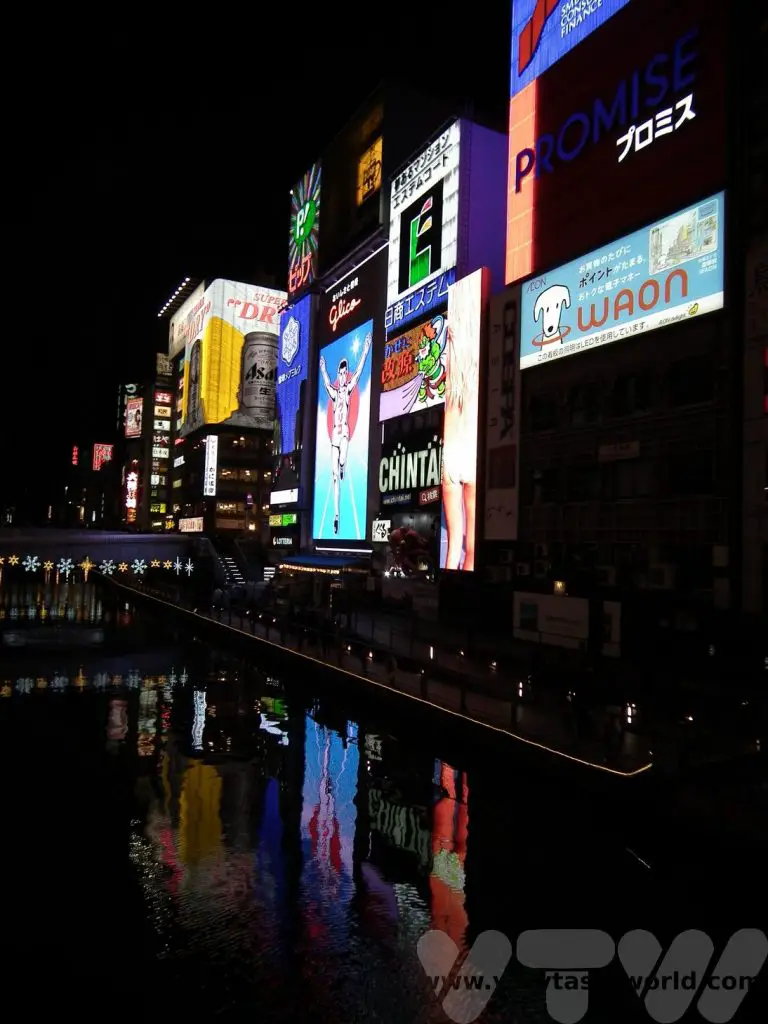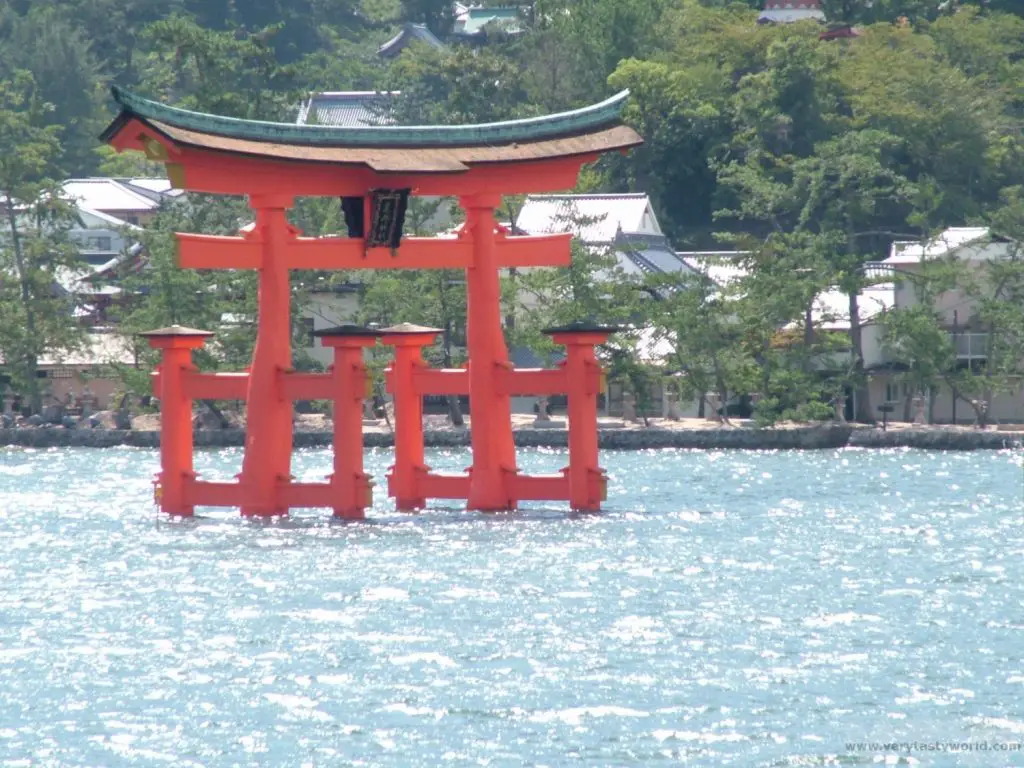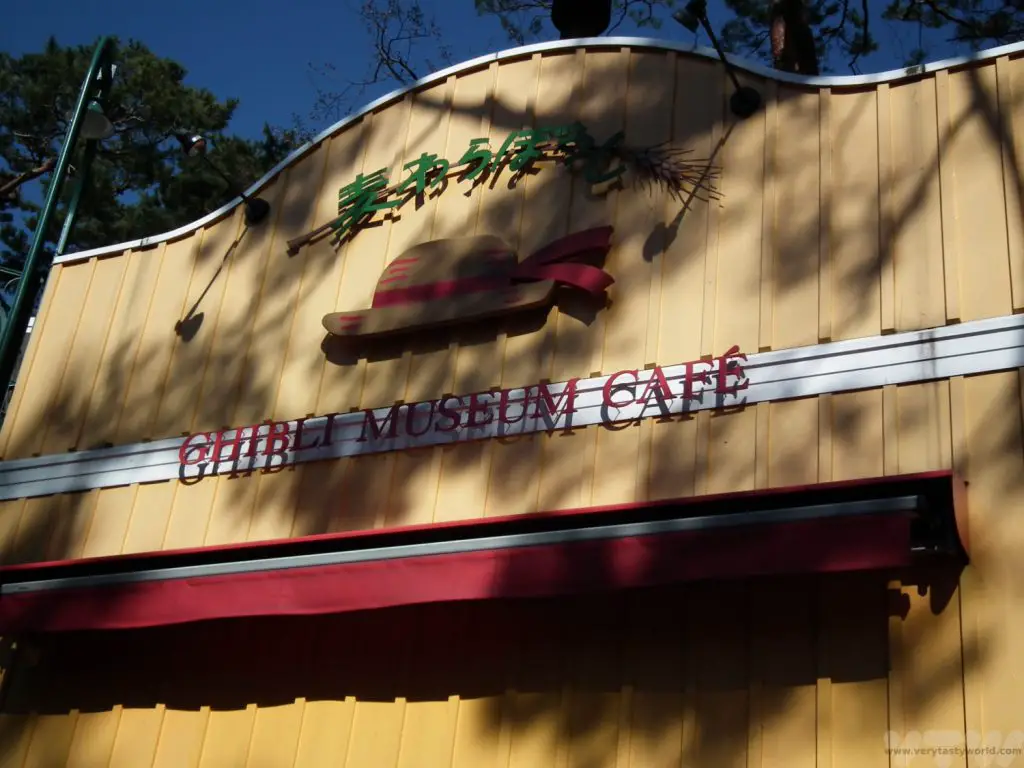Tourist Attractions In Ethiopia
Ethiopia is a country we had long wanted to visit. When we visited Armenia in the late 1990s a number of people we met were travelling there because they seemed – to us youngsters – to have visited everywhere else. On a trip to the beautiful Armenian rock-hewn Geghard Monastery a couple told us about the underground churches of Lalibela and in that moment Ethiopia was added to the To-Visit list. It would be many years before we could make the journey but we found a local company who were able to offer us a tour.
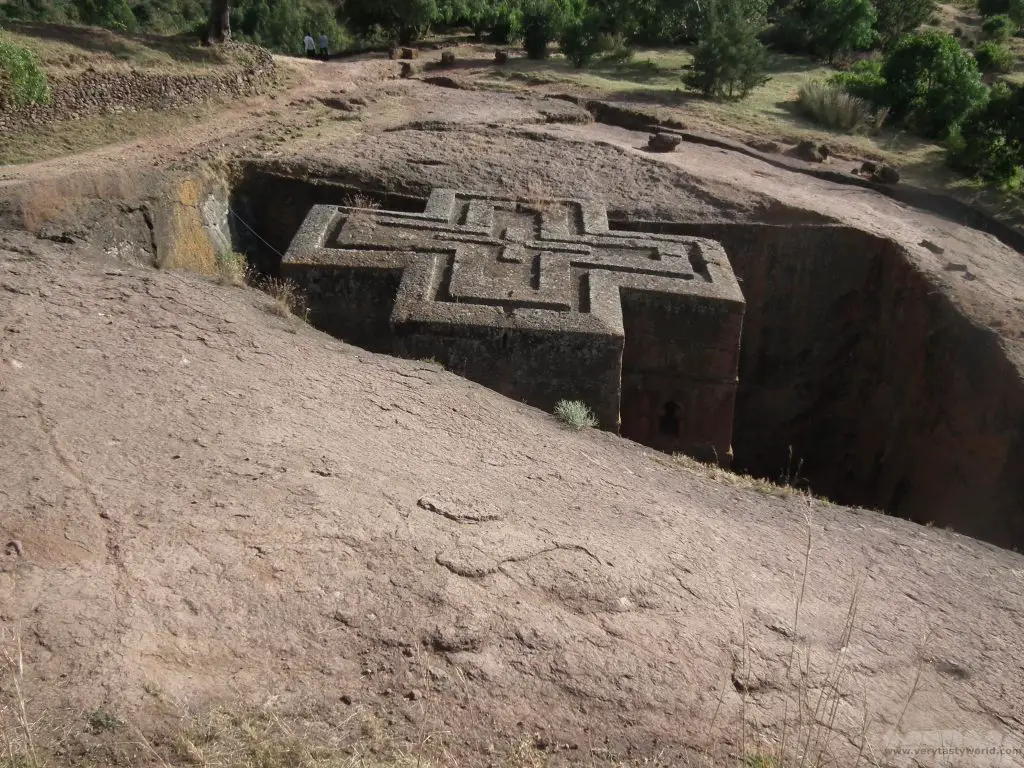
Although it was Lalibela that piqued our interest, we discovered that this wonderful country has so much more to offer than its star attraction. With a rich history, stunning landscapes and amazing wildlife, here is our guide to the tourist attractions in Ethiopia.
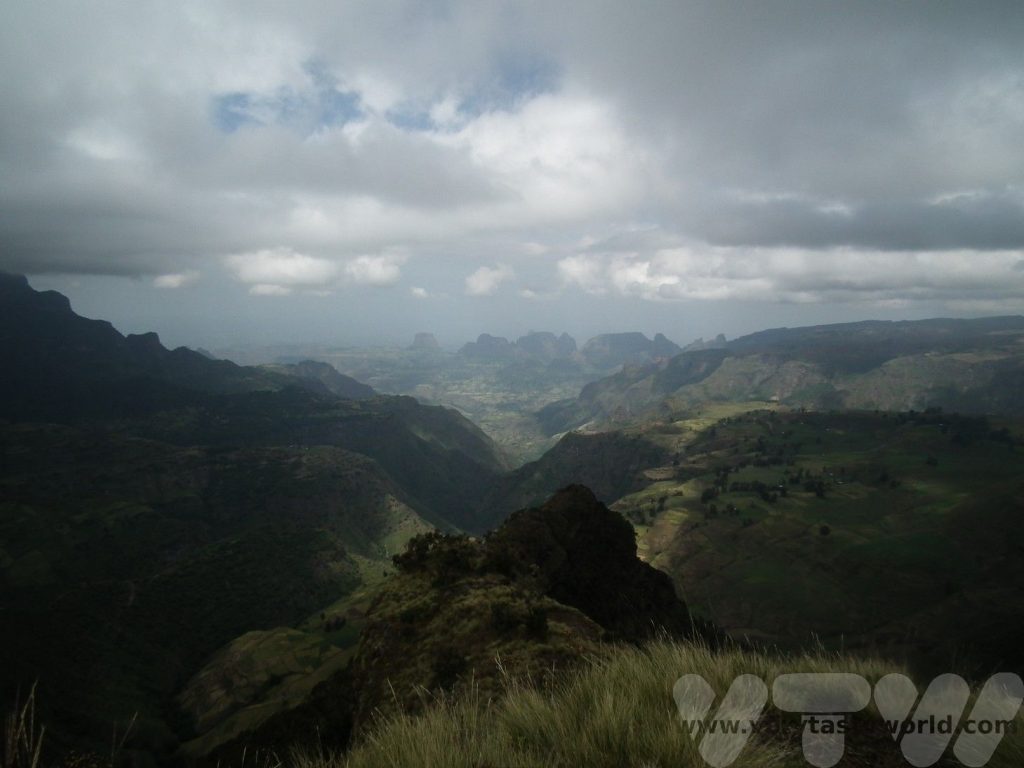
A Northern Ethiopia Itinerary
Ethiopia is huge. Our itinerary covered some of the best historical sites and spectacular landscapes in the northern part of the country. Although the route involved a lot of driving, we also needed to fly between key locations. This itinerary took 13 days to complete. This post is intended to provide an overview of the tourist attractions. We have some other posts on the blog that provide more detail about some of the places we visited.
Addis Ababa
We started off in Addis, Ethiopia’s sprawling capital city. Emperor Menelik’s third wife Empress Taytu Betul settled in the region in 1886. Eventually the emperor established himself there in 1887 and the city started developing. Addis became the capital in 1889 after It has continued to expand to this day. Its name means ‘new flower’. It is a lively, bustling city and a centre of commerce. The Merkato district is home to the largest open market in Africa. There are plenty of interesting places to visit .
National History Museum
This museum houses a collection of artefacts, set out in chronological order, depicting Ethiopia’s long and fascinating history.
One of the most interesting exhibits is that of ‘Lucy’ – a 3.2 million year old skeleton, who was discovered in the mid-1970s and became enormously famous as the oldest human. Lucy is no longer the oldest since ‘Ardi’ was discovered – she predated Lucy by about 1.2 million years, but she was a local lass as well, suggesting that Ethiopia could well have been the place where humans evolved to stand upright.
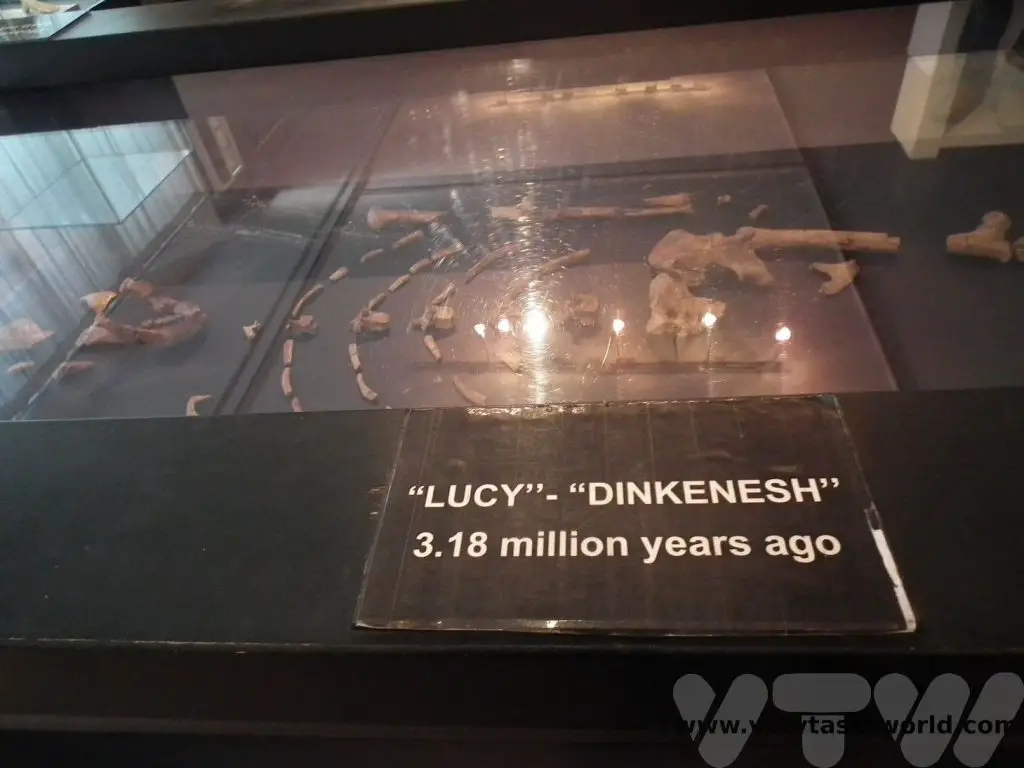
Ethnographic Museum
This museum, located at Addis university, exhibits all sorts of cultural artefacts, including tools, clothing and cooking implements.
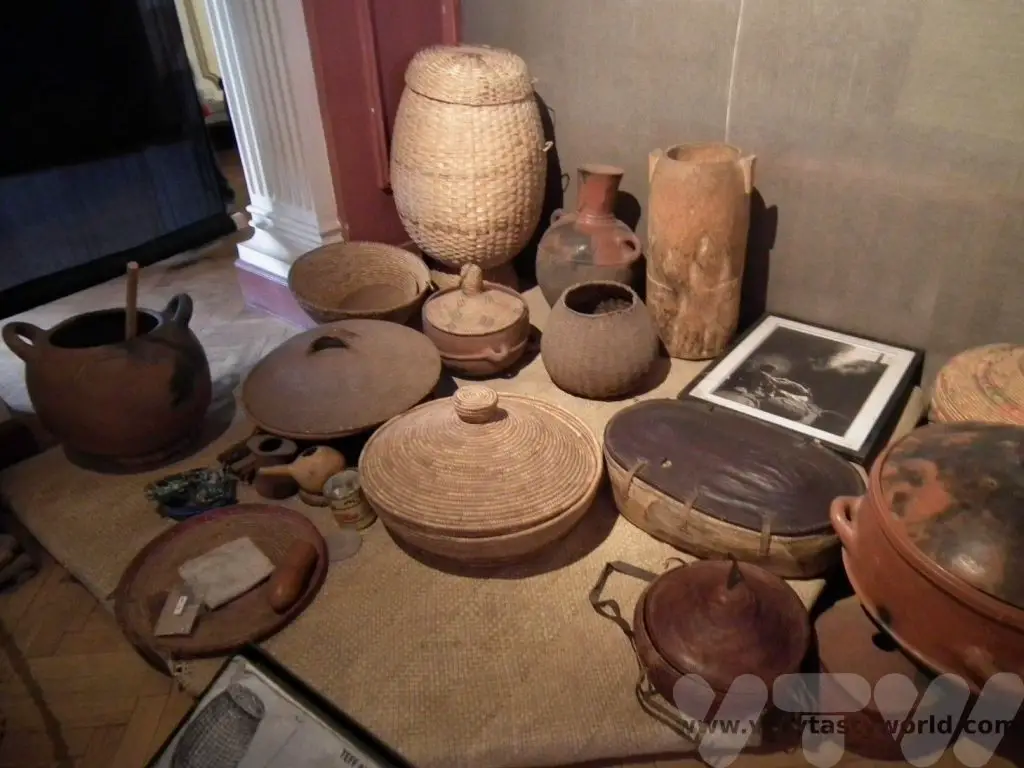
A coffee ceremony set – something that is hugely important in Ethiopian culture.
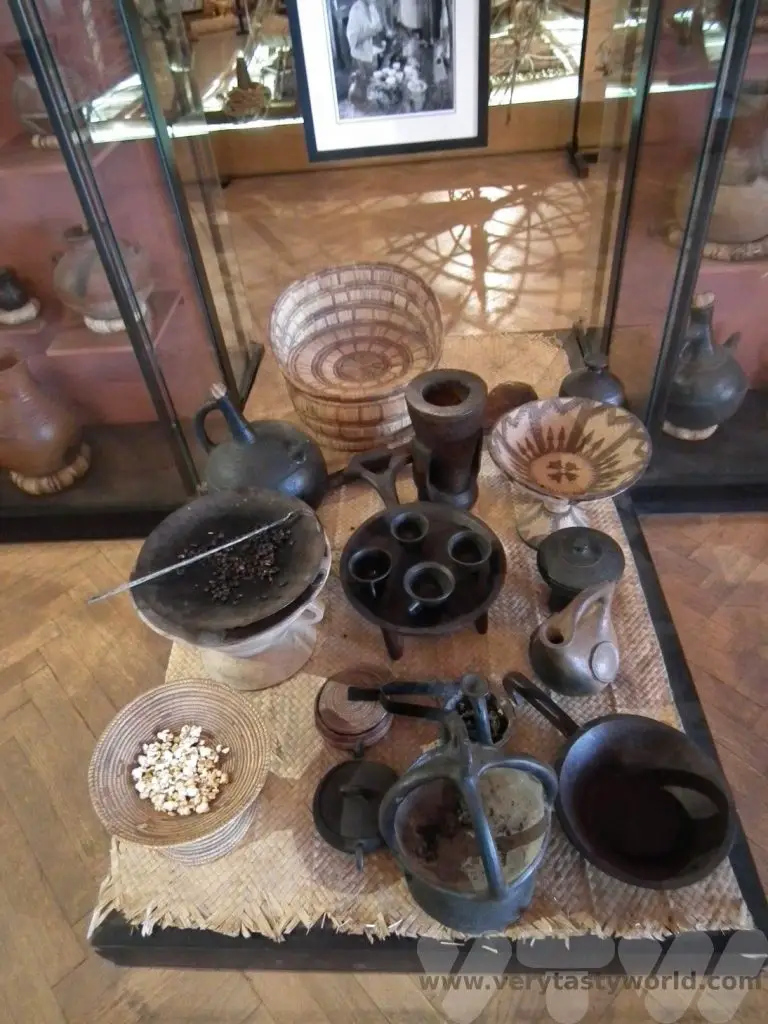
The entrance is interesting – it has a staircase to nowhere constructed by the Italians who occupied Ethiopia from 1935/6 until 1941. Each step represents a year of Mussolini’s power. But at the top of the staircase is the Lion of Judah, which represents the Ethiopian monarchy. It was placed there as an insult to the occupation.
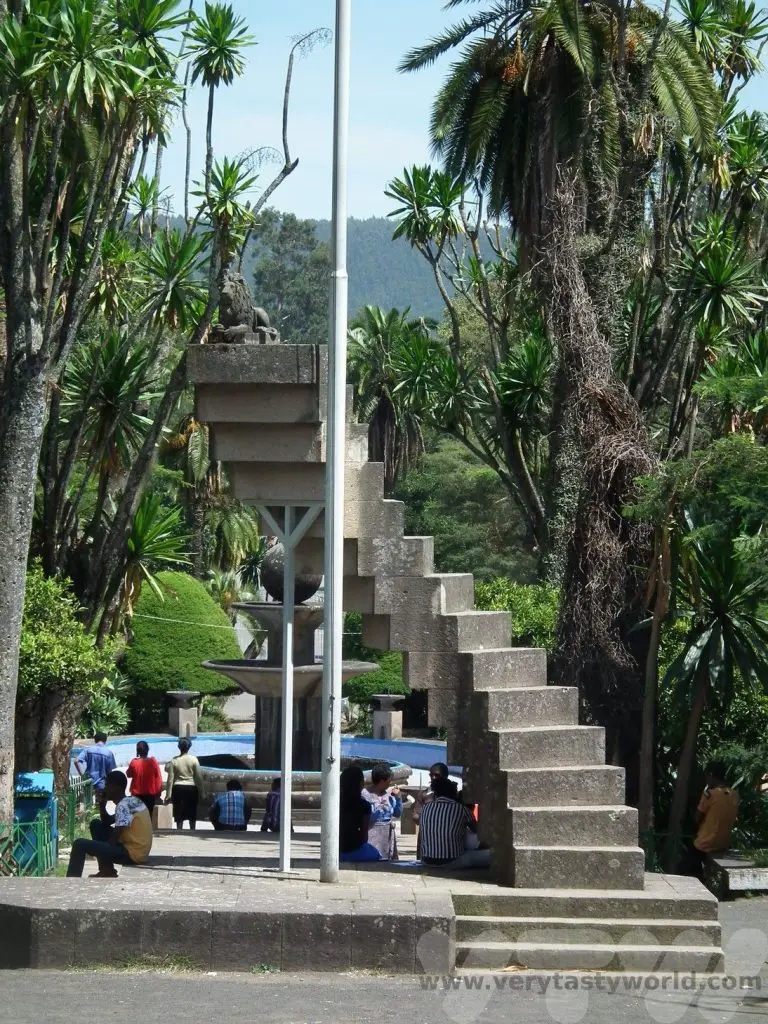
Day trip to Bishoftu
A visit to the resort town of Bishoftu (formerly known as Debrezeit) which is located around 50km southeast of Addis, is a popular day trip. There are five crater lakes to visit. These formed following a number of volcanic eruptions which created the craters that then filled with water over the years.
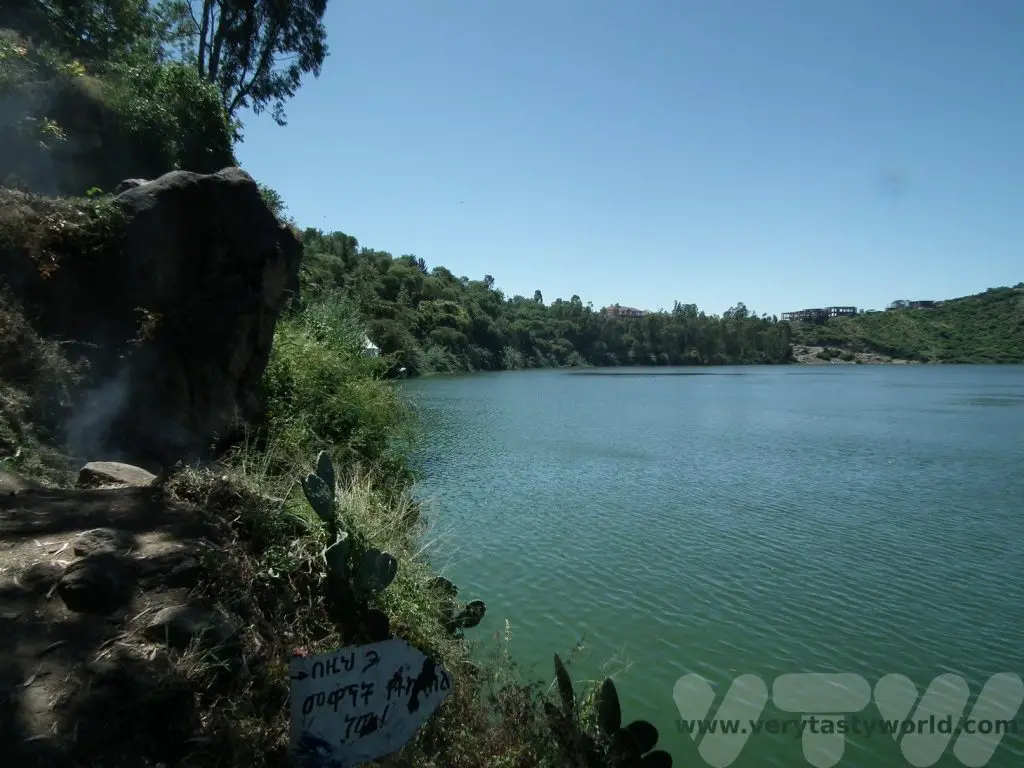
It’s a very pleasant area to go walking and there are plenty of places to enjoy a nice meal with some drinks while observing the plethora of birds that can be found in the area. These cormorants were enjoying drying their wings in the sunshine.
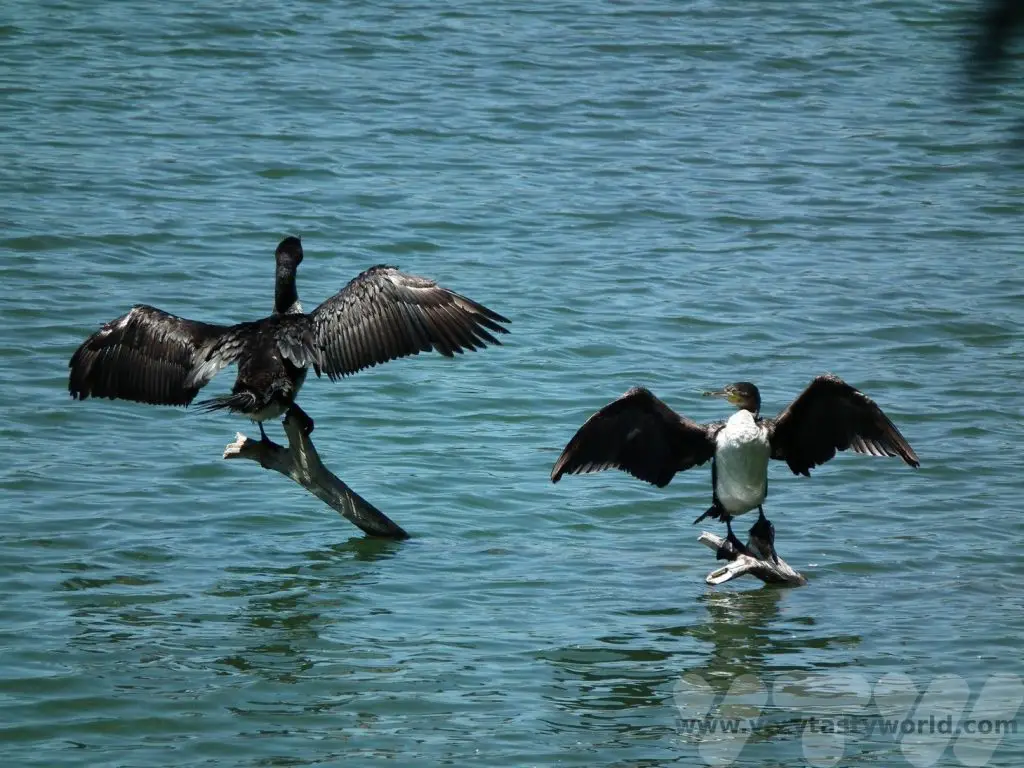
Fly to Bahirdar
Lake Tana
We flew from Addis to the town of Bahirdar. Its main attraction is Lake Tana which is the source of the Blue Nile. It’s a lovely place to visit where you can see a variety of wildlife and, of course, the amazing Blue Nile waterfall.
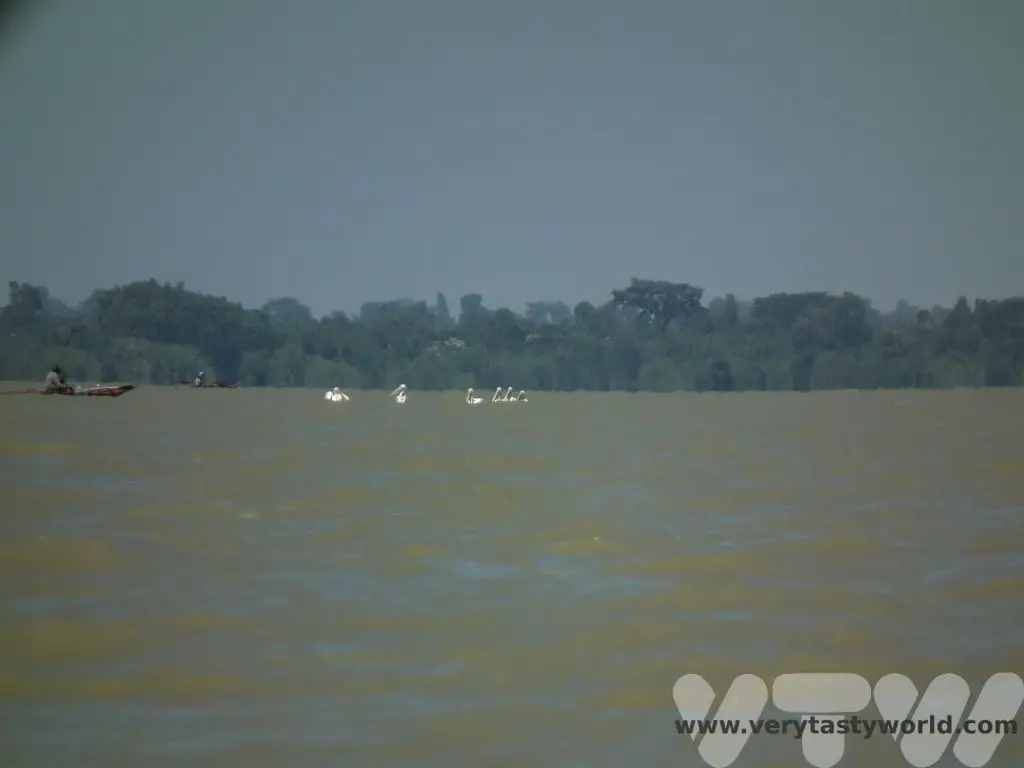
A boat trip across the lake took us to the the Zege peninsualar where we visited the Ura Kidanne Mehret convent. This is a living church where services still take place.
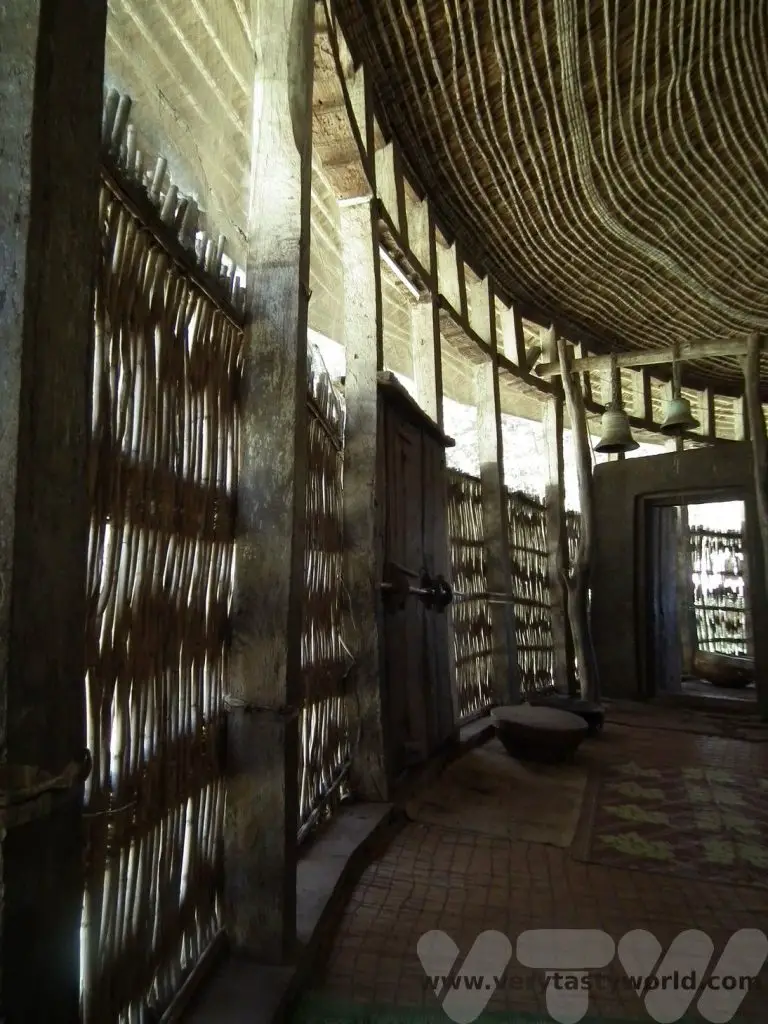
The structure is circular and the inside is decorated with beautiful centuries-old murals, many painted by Alaga Engida. We would see these distinctive designs through out this region.
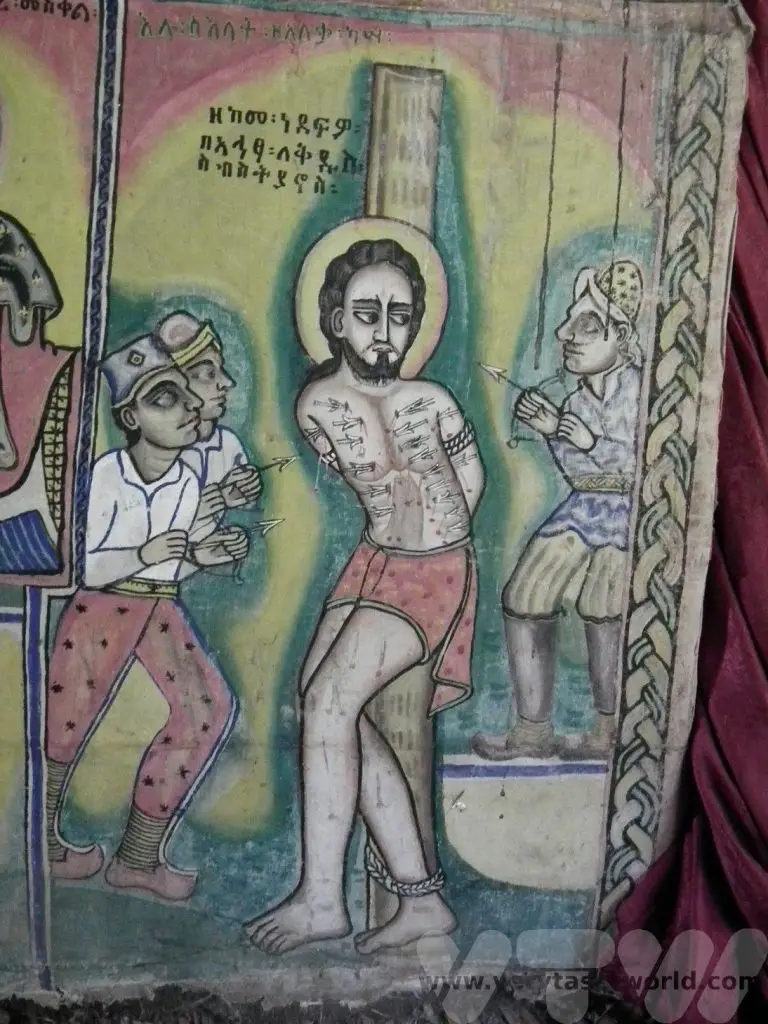
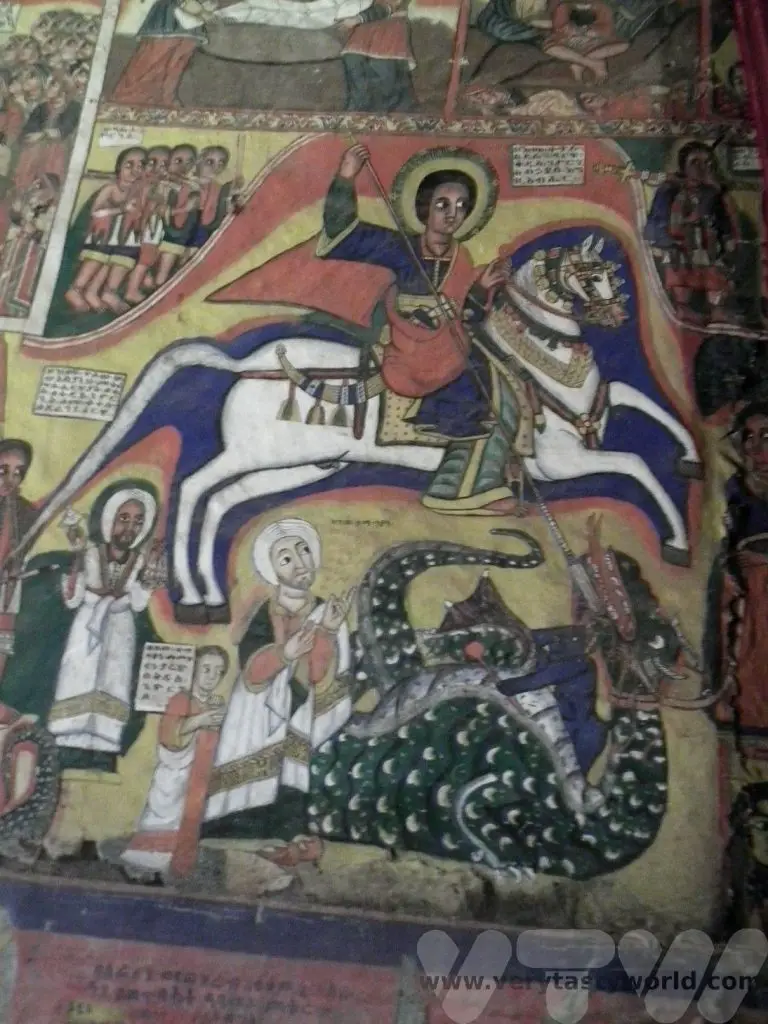
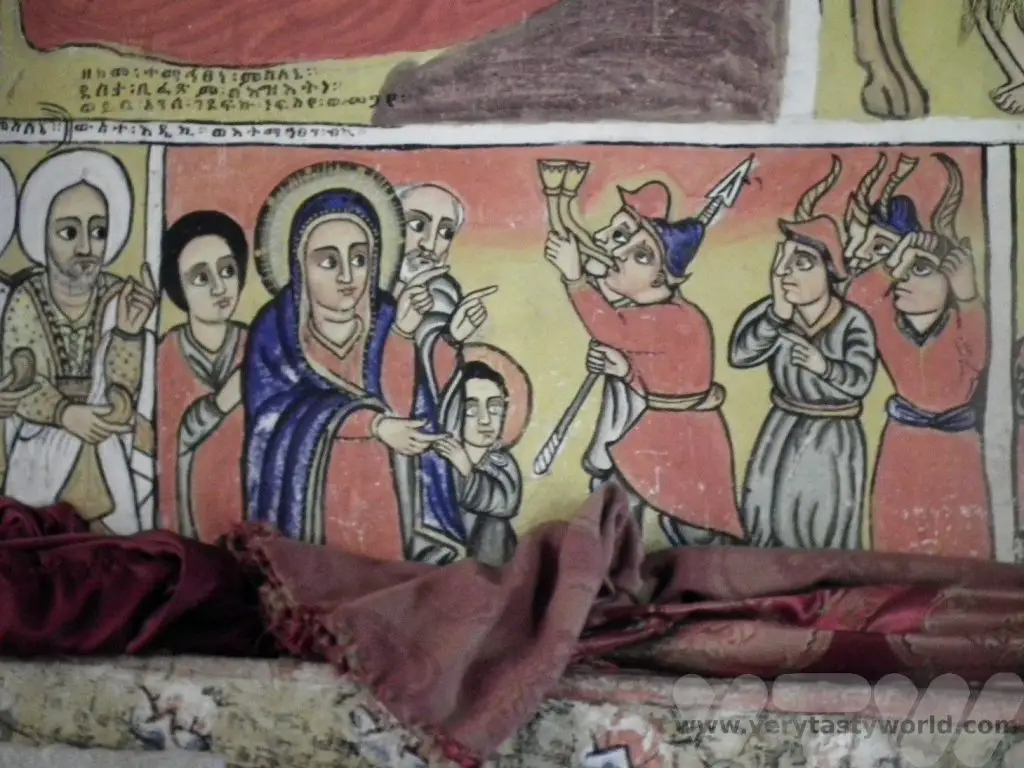
We saw lots of wildlife on the boat trip on the way back.
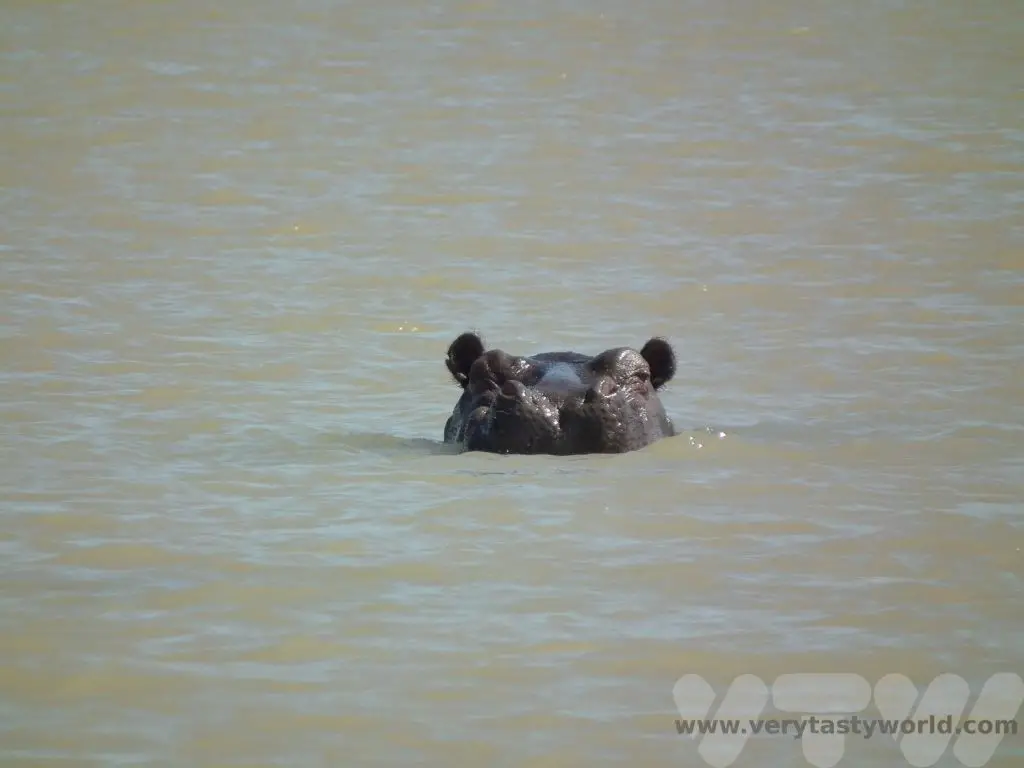
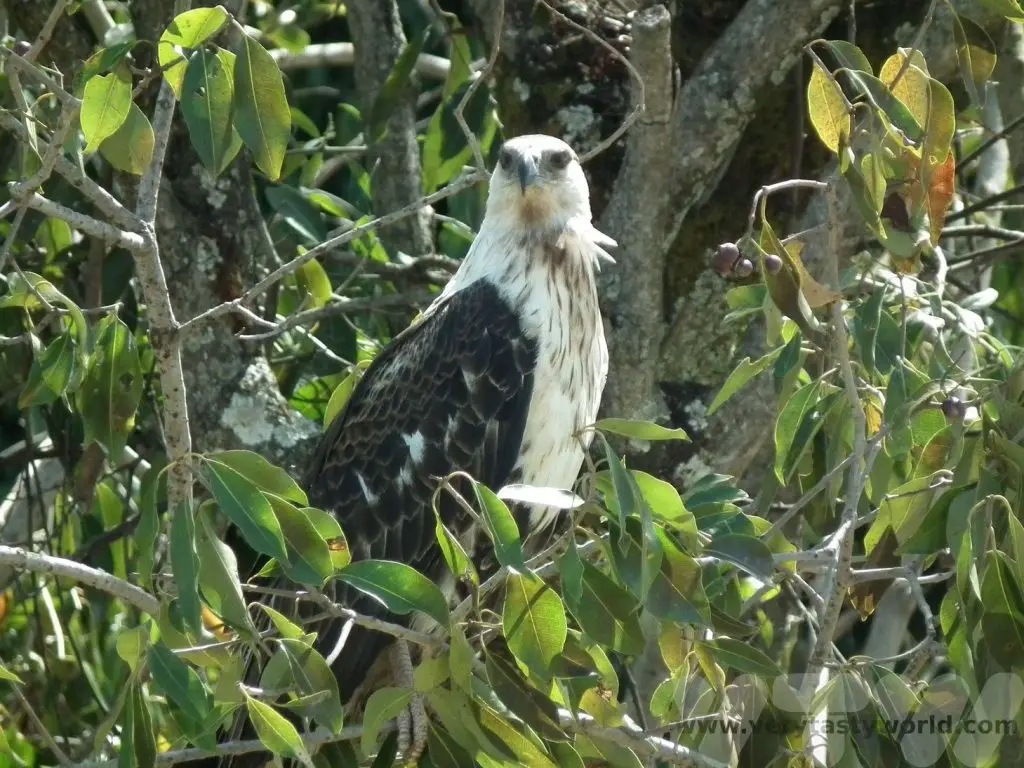
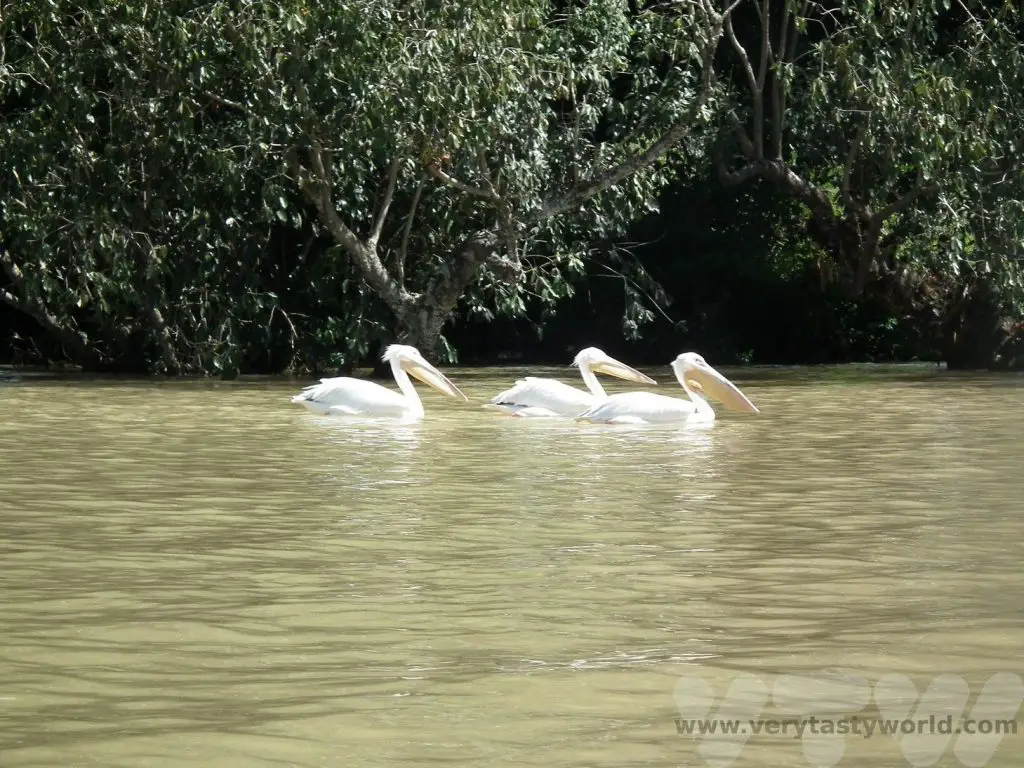
Lake Tana is the source of the Blue Nile and is located around 30 km from the lake itself is the Blue Nile waterfall. The 42m high falls are known as Tis Abay, meaning ‘great smoke’ in Amharic, which is a far more romantic name than Blue Nile Waterfall. The moniker is highly appropriate- they are spectacular. But it’s worth noting that they are spectacular in the rainy season. There is a hydro-electric power station which regulates much of the water flow these days, so it’s worth checking whether you are likely to see a cascade or a dribble.
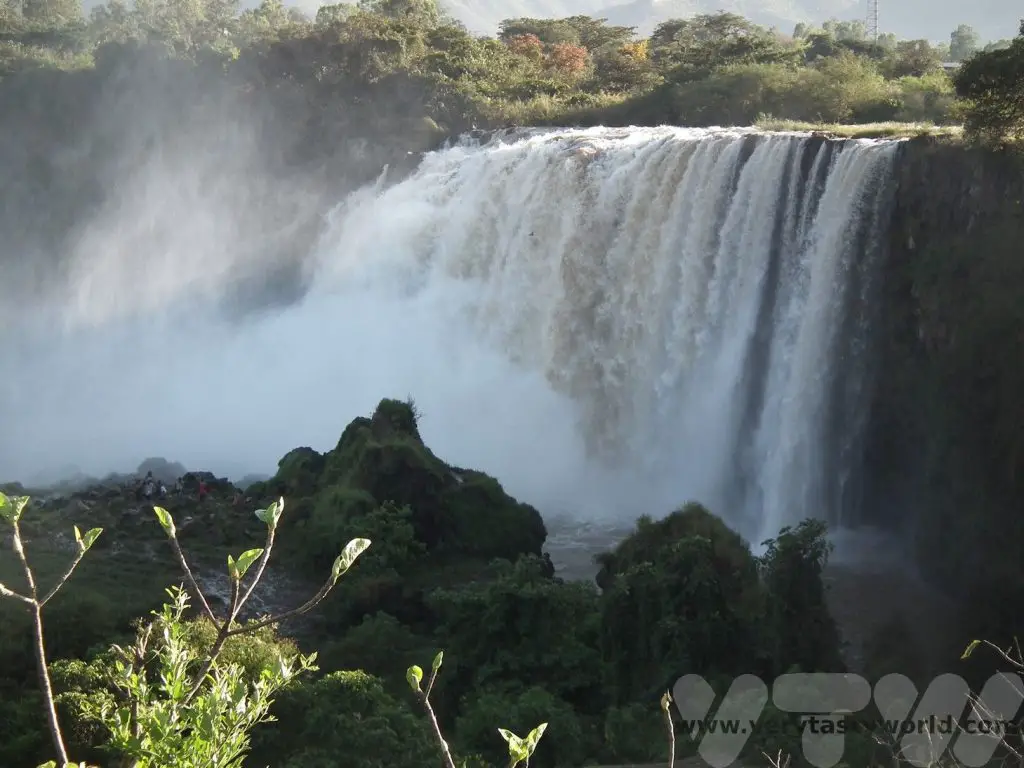
Drive to Gondar
The City of Gondar
Gondar sounds like a city from Lord of the Rings and also looks like a city from Lord of the Rings. It has a grand history. It was the central location of the Ethiopian government and home of the Ethiopian emperors for several centuries and is a UNESCO heritage site.
Established by Emperor Fasilides in the 17th century, the city of Gondar boasts a number of castles and palaces that were residences to successive Ethiopian leaders. The buildings are particularly interesting because they resemble European mediaeval castles.
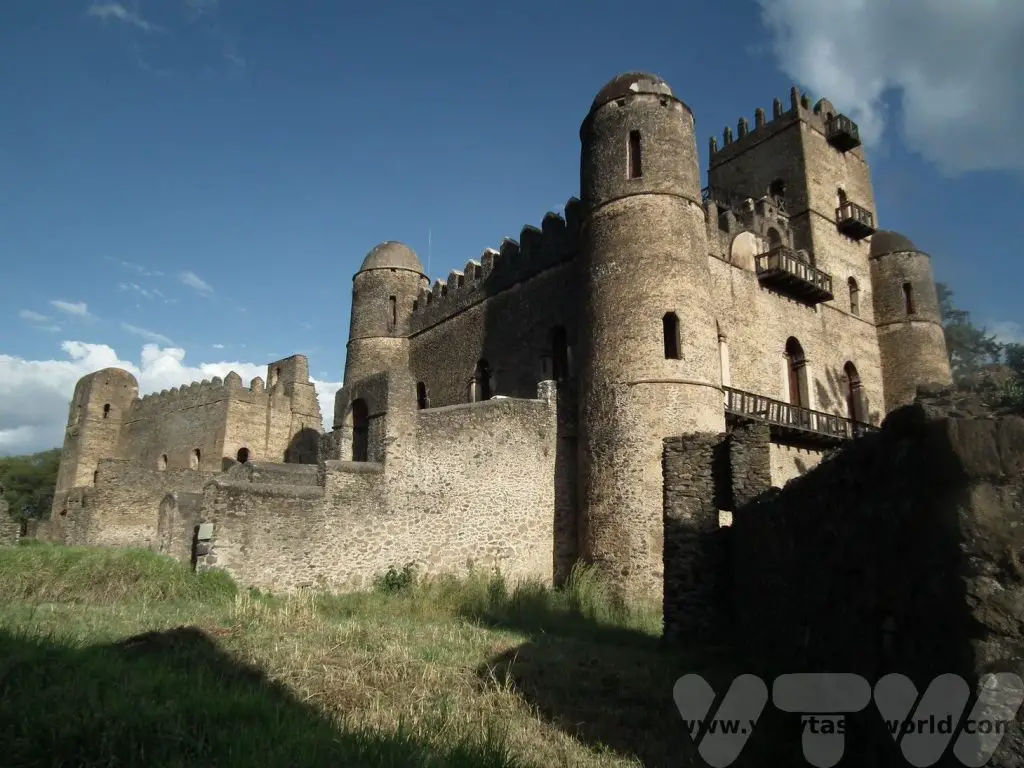
The history of the emperors is fascinating. There are all sorts of tales of skullduggery – poisonings, murders and mysterious deaths. It is possible to explore the ruins of the castles, palaces and royal baths.
Fasilides was emperor of Ethiopia from 1632 until 1667 and decided to establish Gondar as the capital of Ethiopia. He built the Royal Enclosure which was further developed by his successors. A little way out of town he also constructed a remarkable bath complex, compete with bathing pool, tower and bridge. It is considered a sacred site to this day.
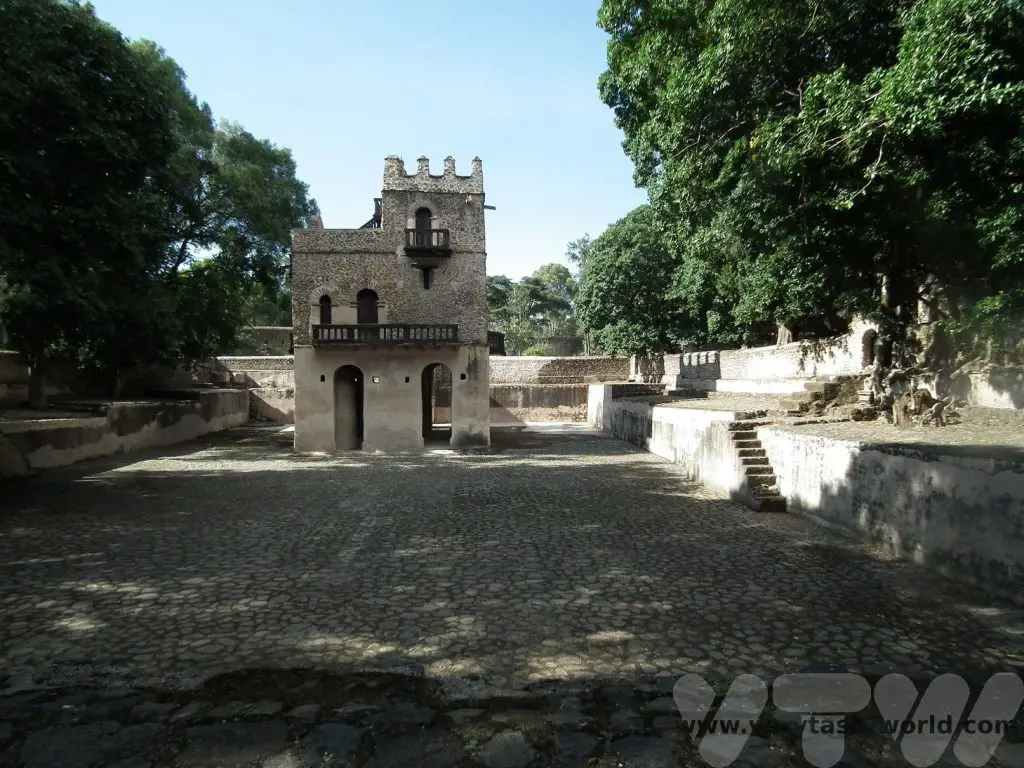
Simien Mountains
On leaving Gondar we got into a van and had a bumpy ride to the spectacular Simien mountains national park. This is another UNESCO world heritage site. There are plenty of opportunities to go hiking amidst spectacular scenery and have a drink at the highest bar in Africa.
In the Simien mountains you can walk among wild gelada monkeys in fields scented of wild thyme, a magical experience.
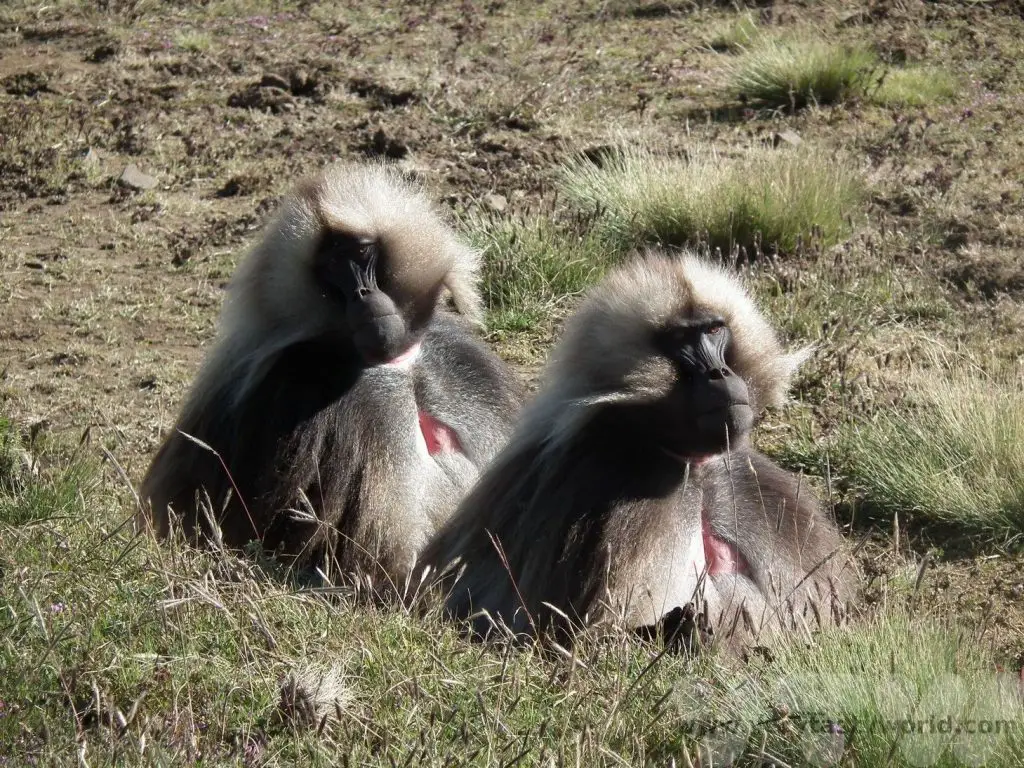
You can read more about the fascinating history of Gondar and see the beauty of the Simien mountains.
Fly to Lalibela
We caught a flight from Gondar to Lalibela where we spent a couple of days exploring the astonishing rock-hewn churches. They were as spectacular as we had been promised many years before.
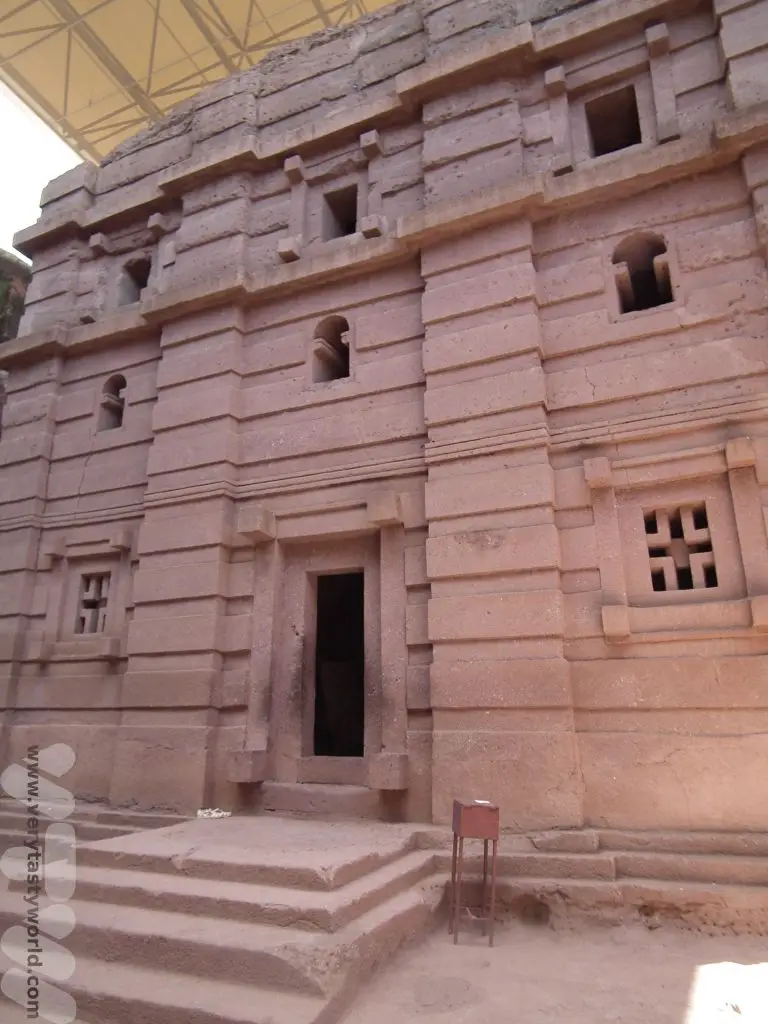
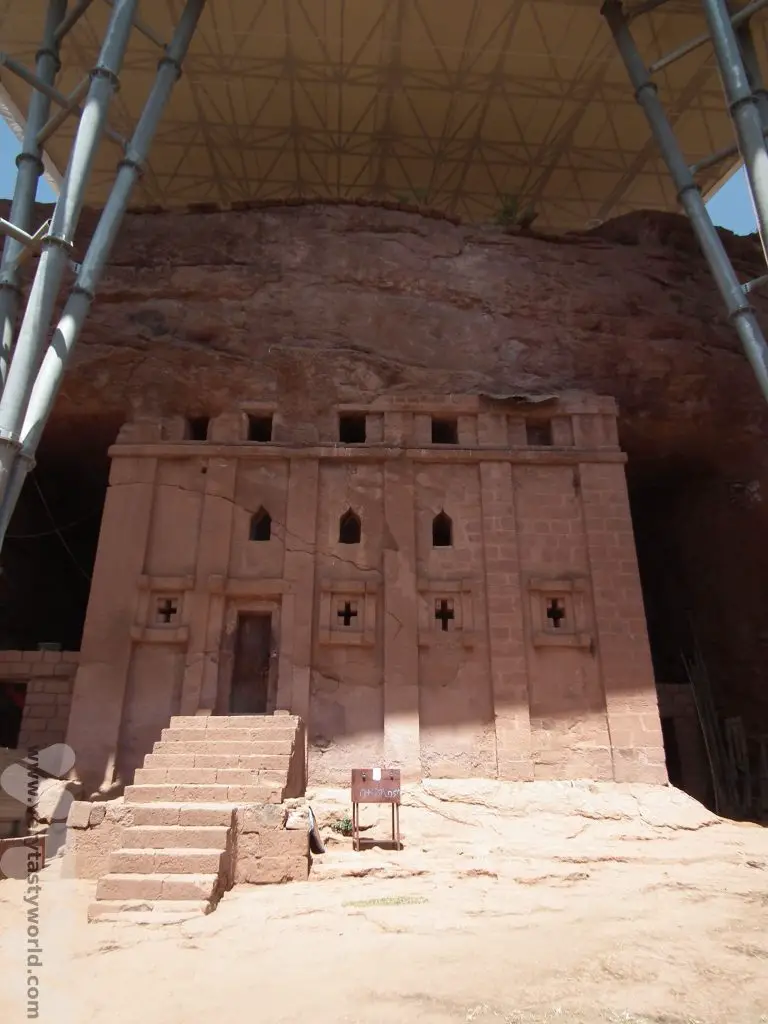

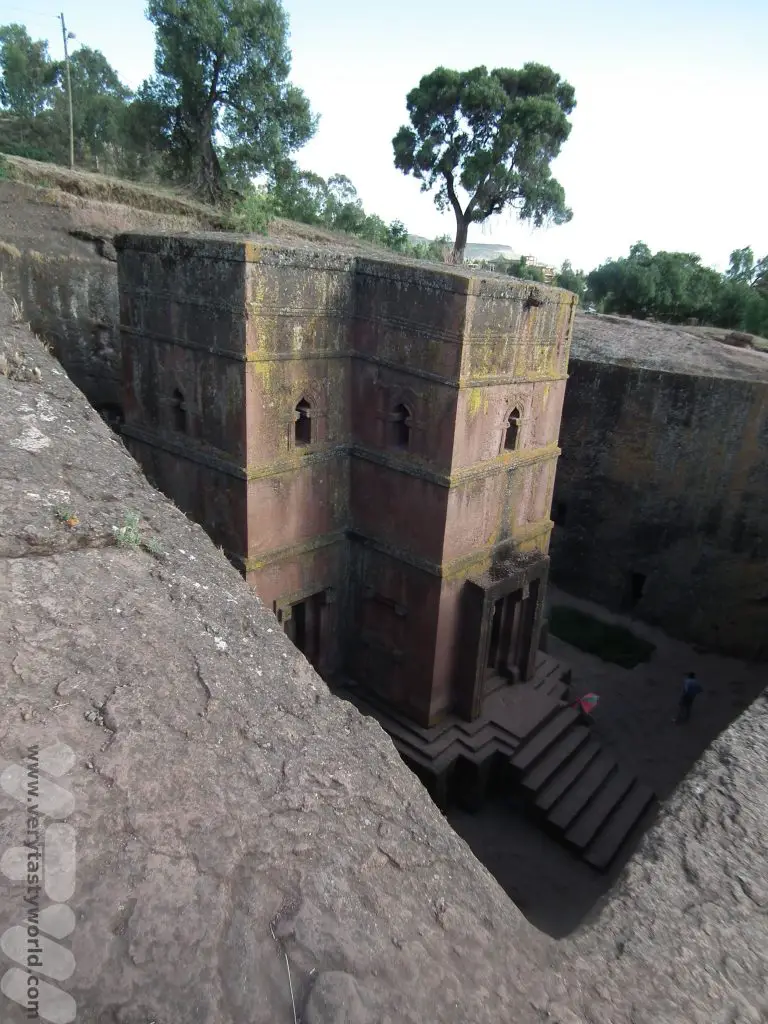
Another UNESCO world heritage site the churches date from the 7th to the 13th centuries. They are remarkable because rather than being constructed from the ground up, they have been hewn from within the rock, using basic tools such as chisels and hammers, and were built from the top down. This meant that they couldn’t be seen from a distance.
Fly to Tigray
More history beckoned when we flew to the far north of the country to the region of Tigray. Tigray has had a difficult history in recent times. It was the location of the Ethiopian famine of the 1980s, which prompted the Band Aid and Live Aid appeals. And recently it has been engaged in a civil war between the Tigray People’s Liberation Front and the Ethiopian government. A peace treaty was signed in November 2022 and we very much hope that tourism will be able to be revived in the area once more.
Axum
First stop was Axum, which has a history dating back to 400 BCE. It was the capital of the Aksumite empire which ruled the region until the 10th century. It is famous for its towering stelae, obelisks that are around 1700 years old. They were designed as impressive grave markers for royal burial chambers. They are huge – the tallest is 33m. Some of them have fallen and others were taken, notably King Ezana’s obelisk which was transported to Rome after Italy’s occupation of Ethiopia ended.
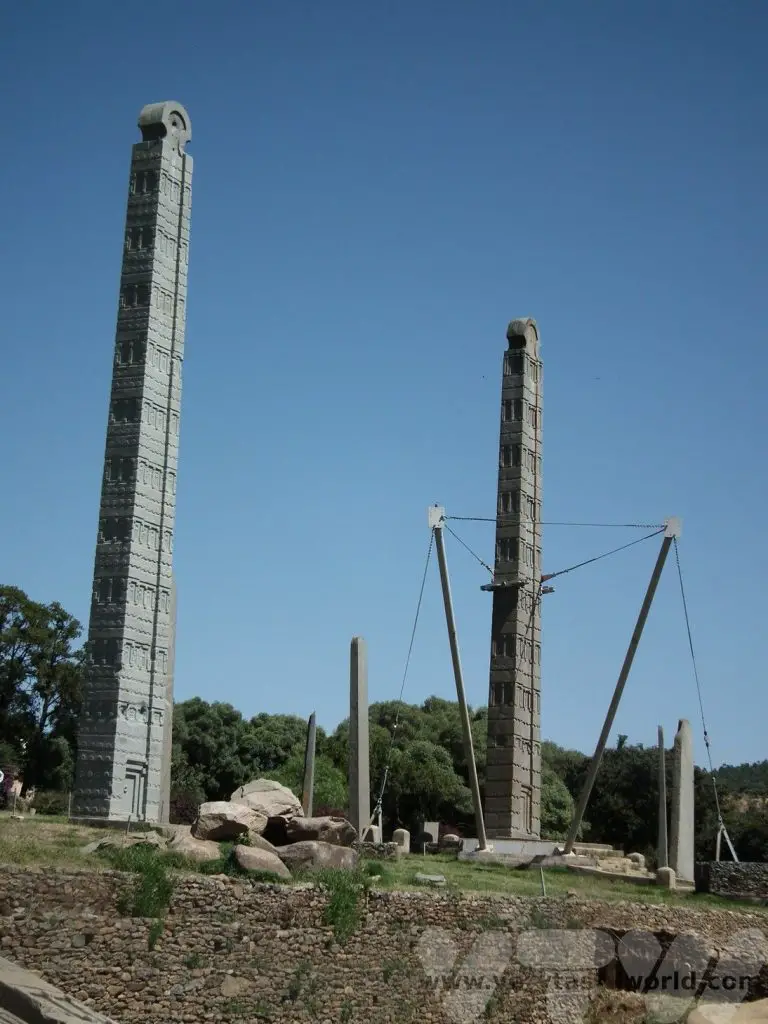
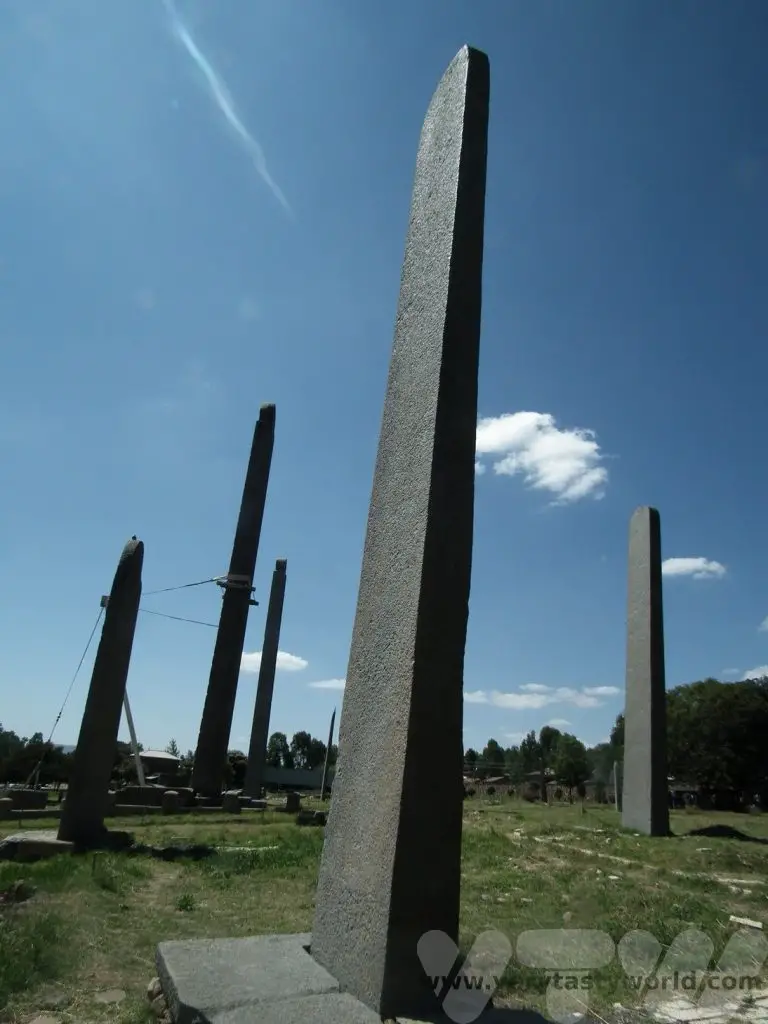
The Aksumite Empire ended in the 10th century and the emperors of Ethiopia moved southwards, eventually settling in Gondar some centuries later, when Fasilides established his government there.
Churches of Our Lady Mary of Zion
Axum is also home to two important churches. The church of Our Lady Mary of Zion was built by Fasilides in 1665. It is rumoured to have housed the Ark of the Covenant.
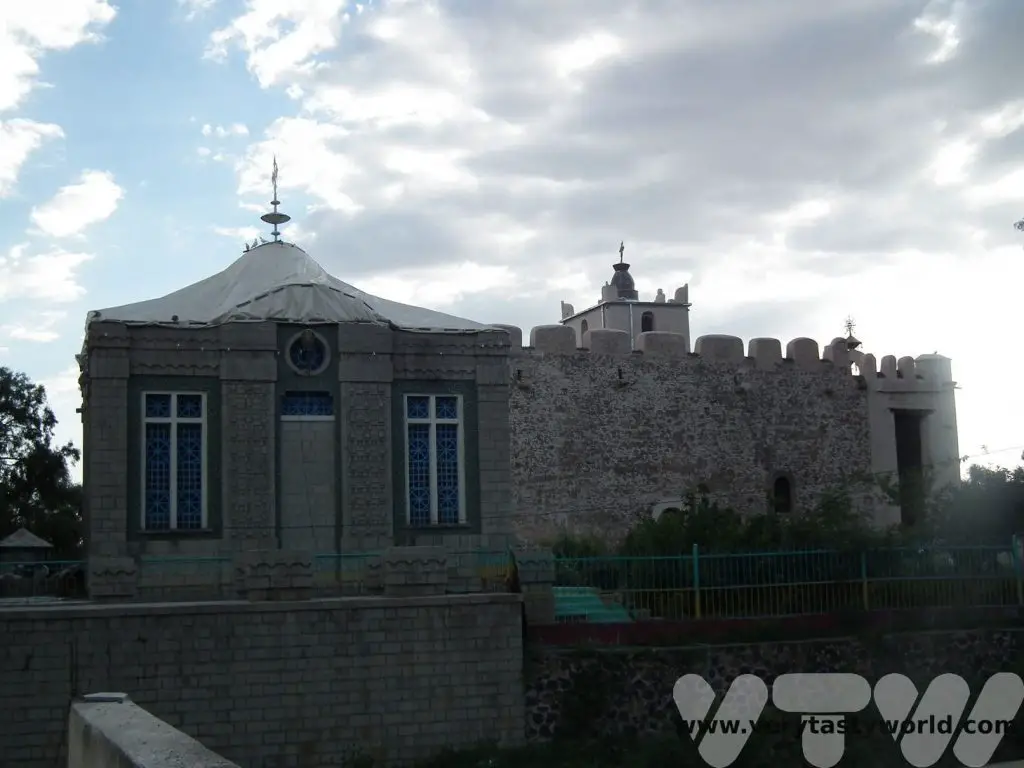
Emperor Haile Selassie built a new cathedral of St Mary of Zion next to the old church. It is possible to enter this church and to watch the services.
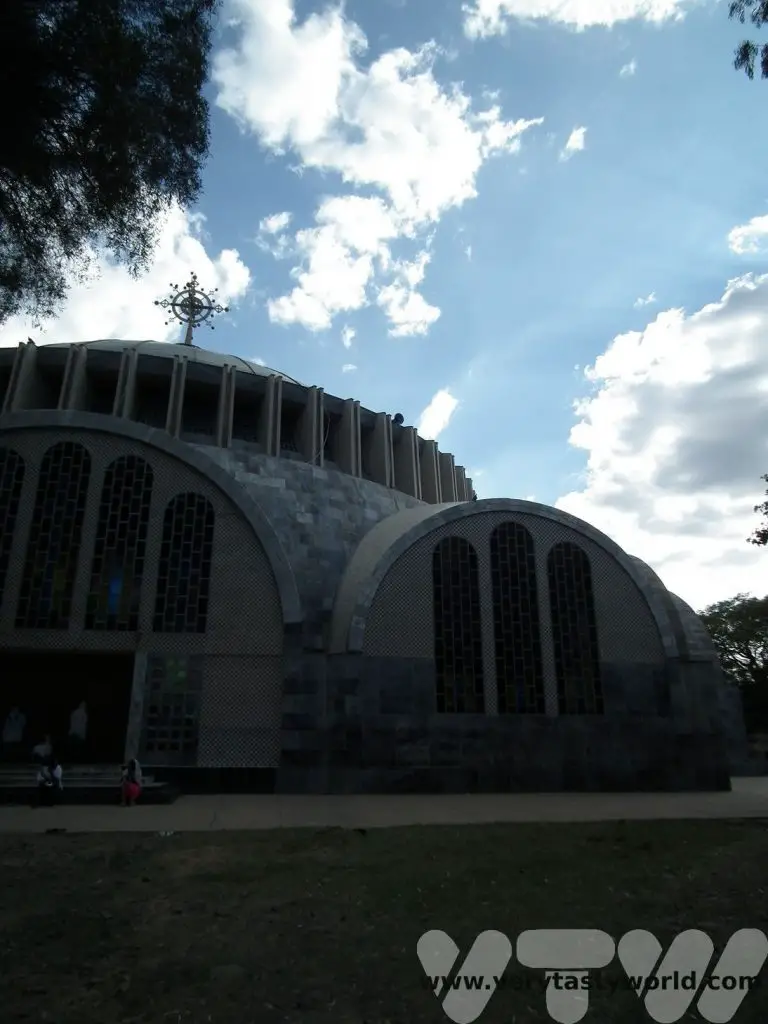
Tombs of the Kings
A few kilometres out of the town of Axum are the Tombs of the Kings which date from the 3rd century.
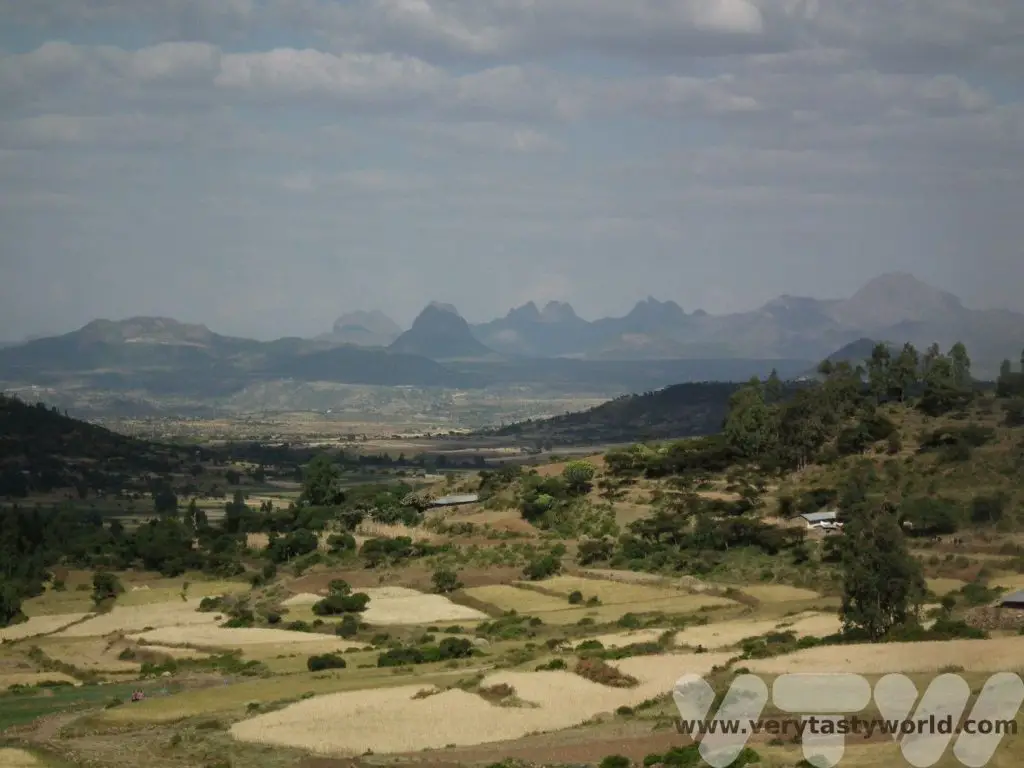
King Kaleb’s tomb is located here. Kaleb was king of Axum between 514–542 CE.
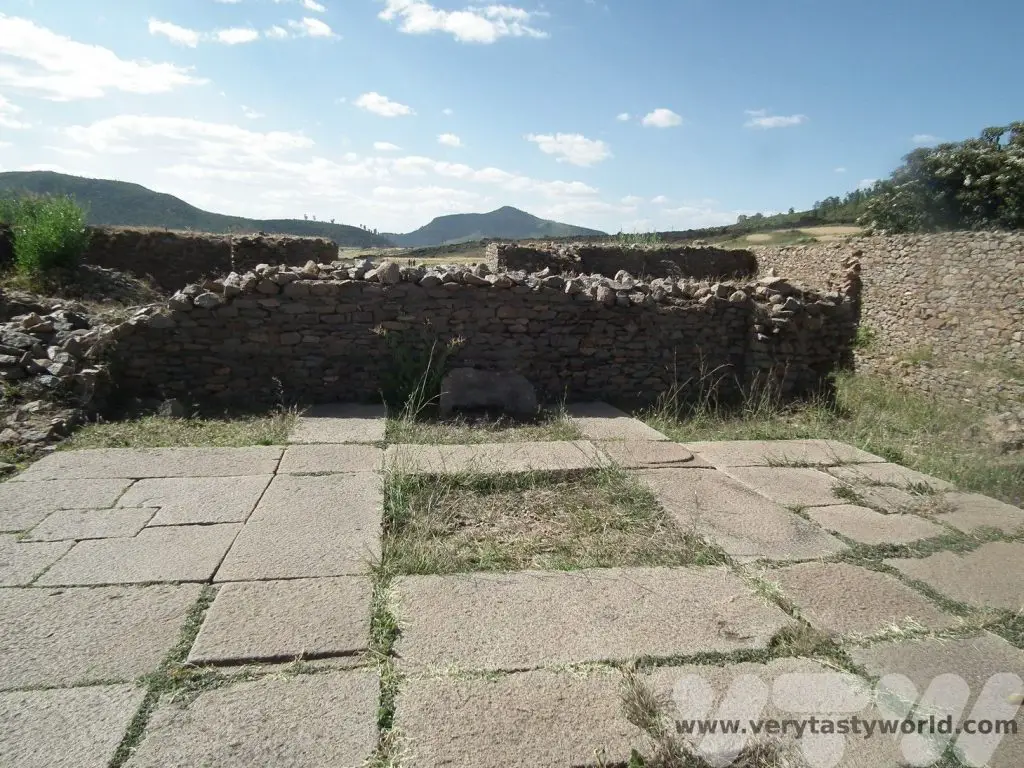
Nearby is the Ezana Stone, a stelae, which shows an inscription in three different languages: Ethiopian Ge’ez, South Arabian Sabaean, and Greek. It’s similar to the Rosetta Stone.
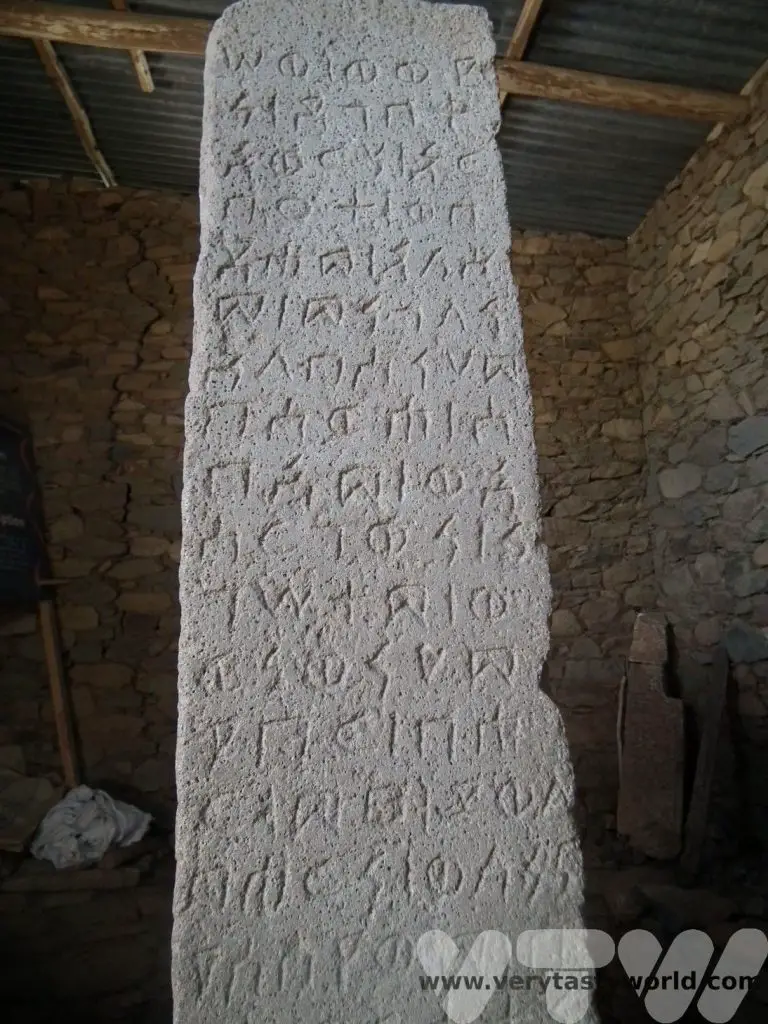
Beware though, the stone is cursed and anyone who touches it is likely to meet an untimely end. (No, we didn’t dare!)
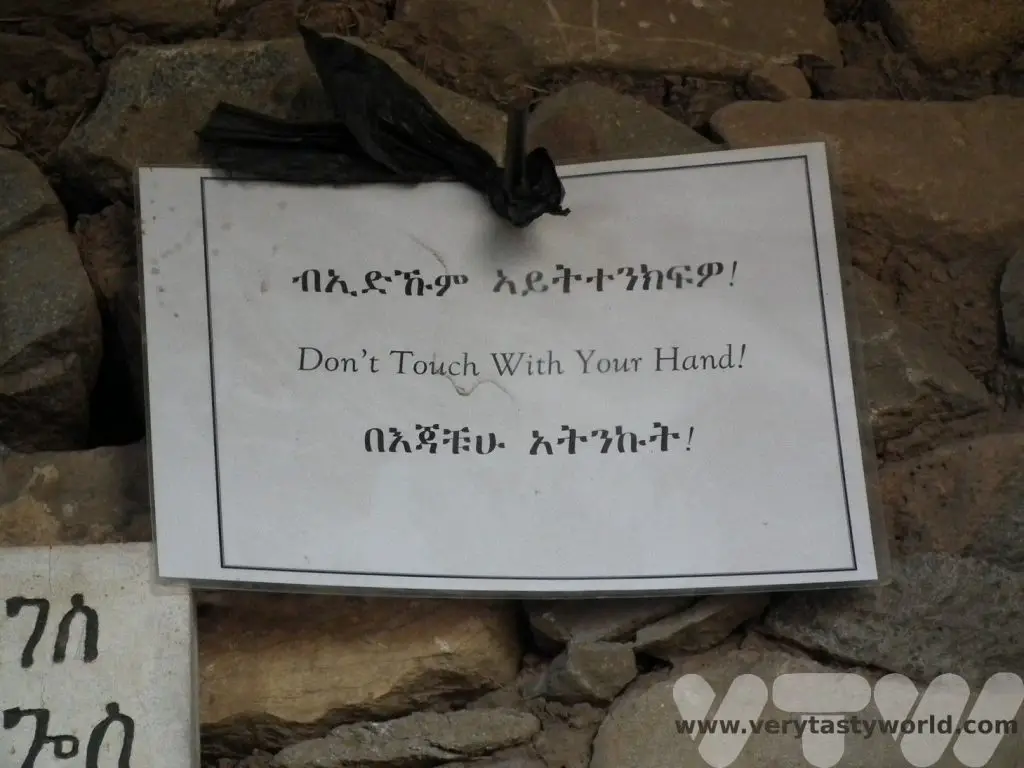
Gheralta
The final stage of our journey through the Tigray region involved a drive across the countryside to Gheralta where we could view the rock churches of Tigray.
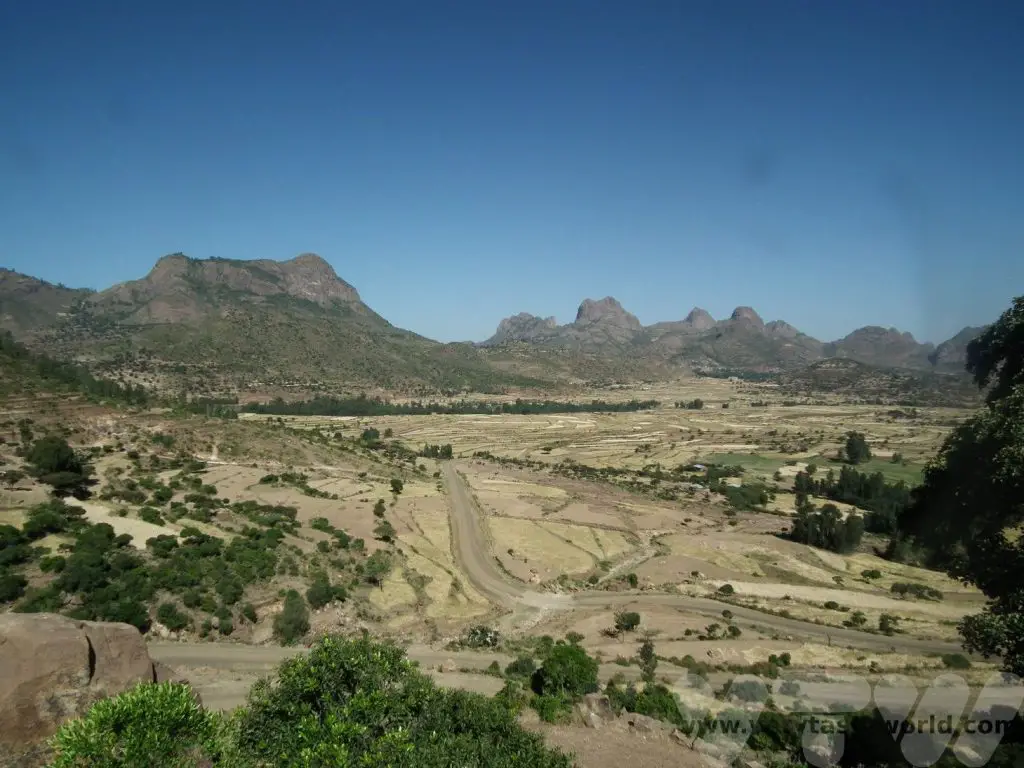
There are over 100 churches in the regions, largely dating from the 6th to the 14th centuries and they are mainly carved into cliff sides or rocky outcrops.
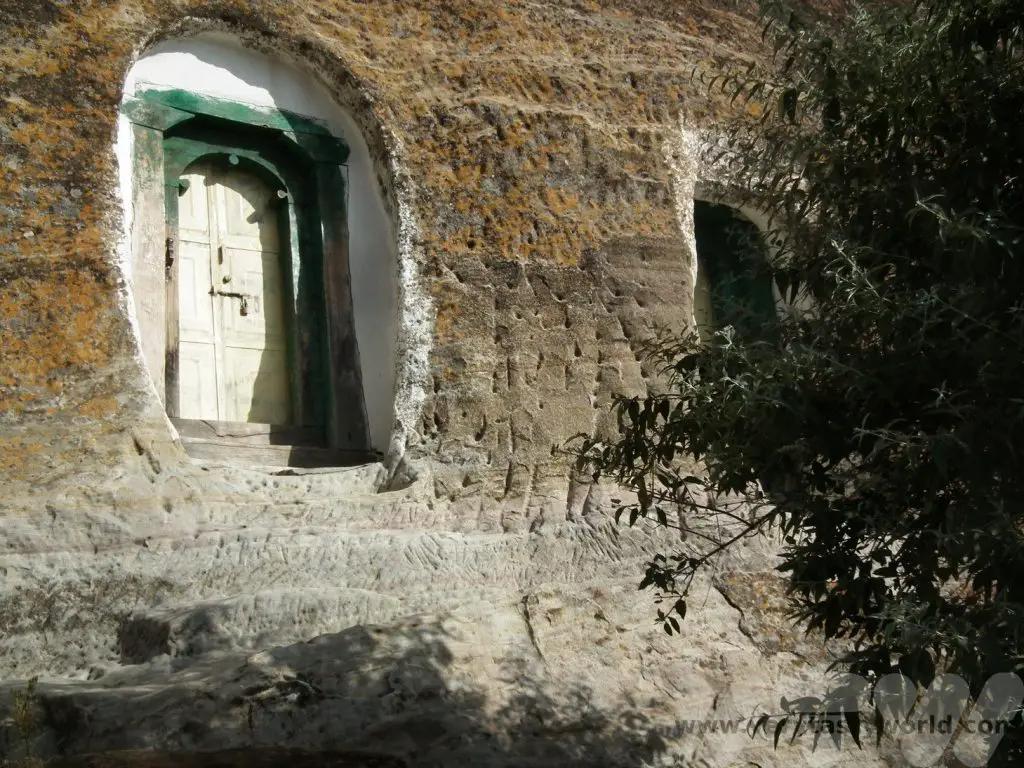
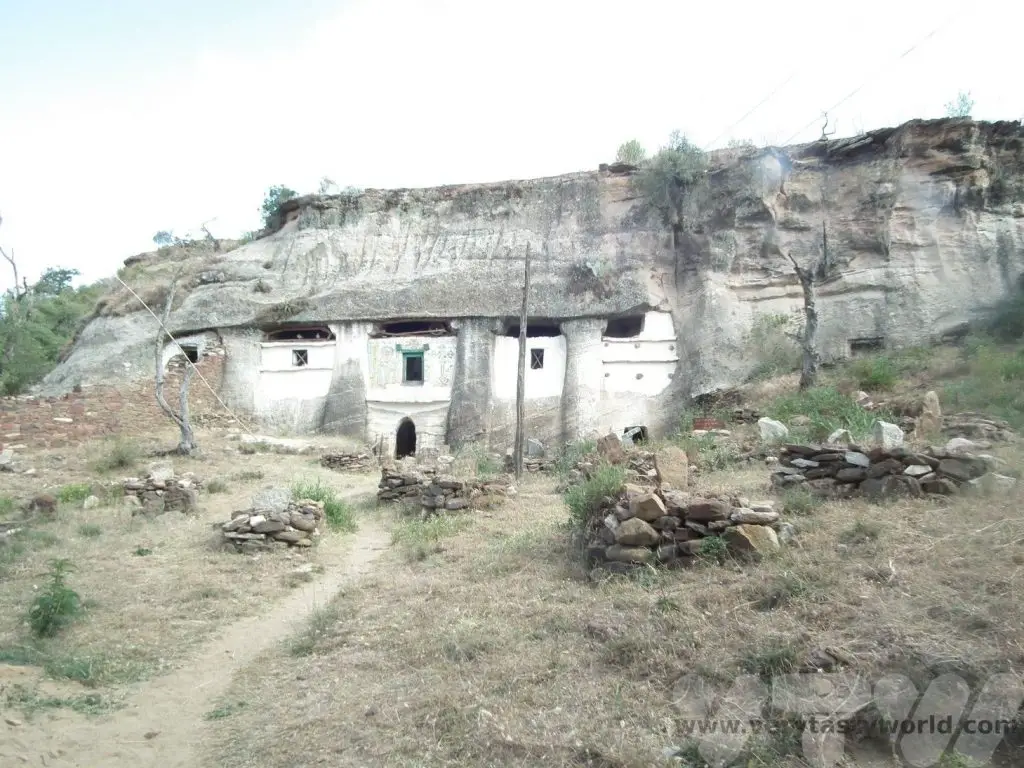
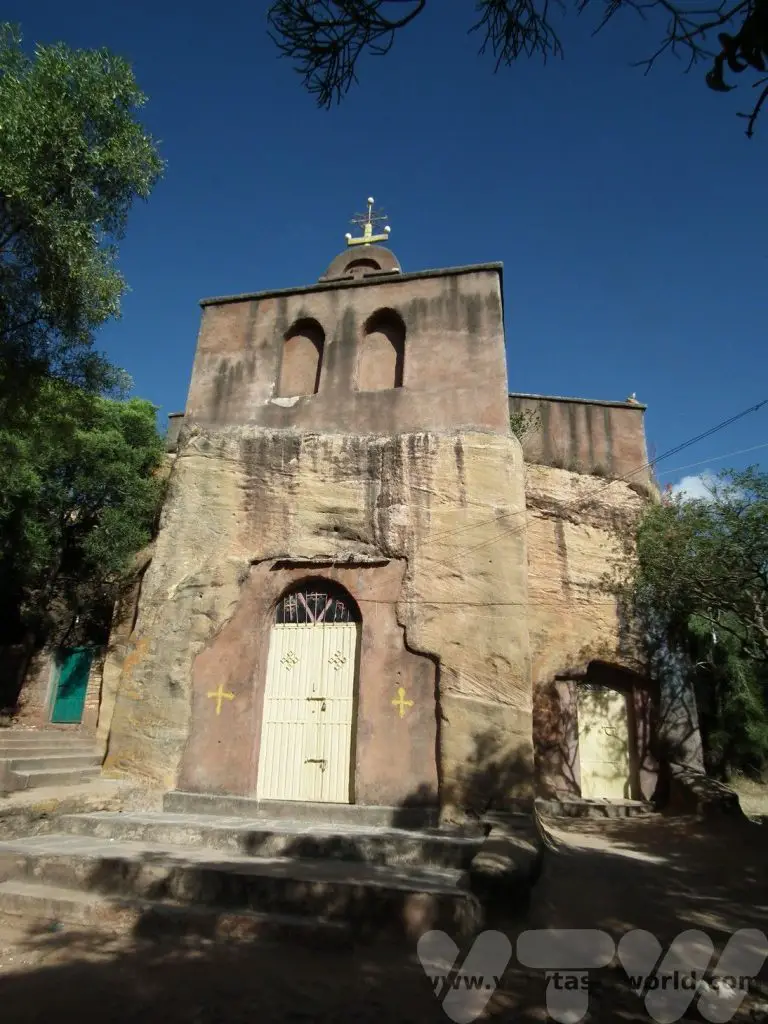
And that concluded our Ethiopian itinerary. We drove to Mekele, the major city in the region, and caught a flight back to Addis before our return home.
Ethiopian Food
Something that intrigued us before we arrived was Ethiopian food: we had absolutely no idea about what to expect. A quick internet search revealed ‘injera’: Ethiopian traditional bread.
We still had no idea what to expect.
Injera is a flatbread that looks like a cross between a dirty dishcloth and a sponge.
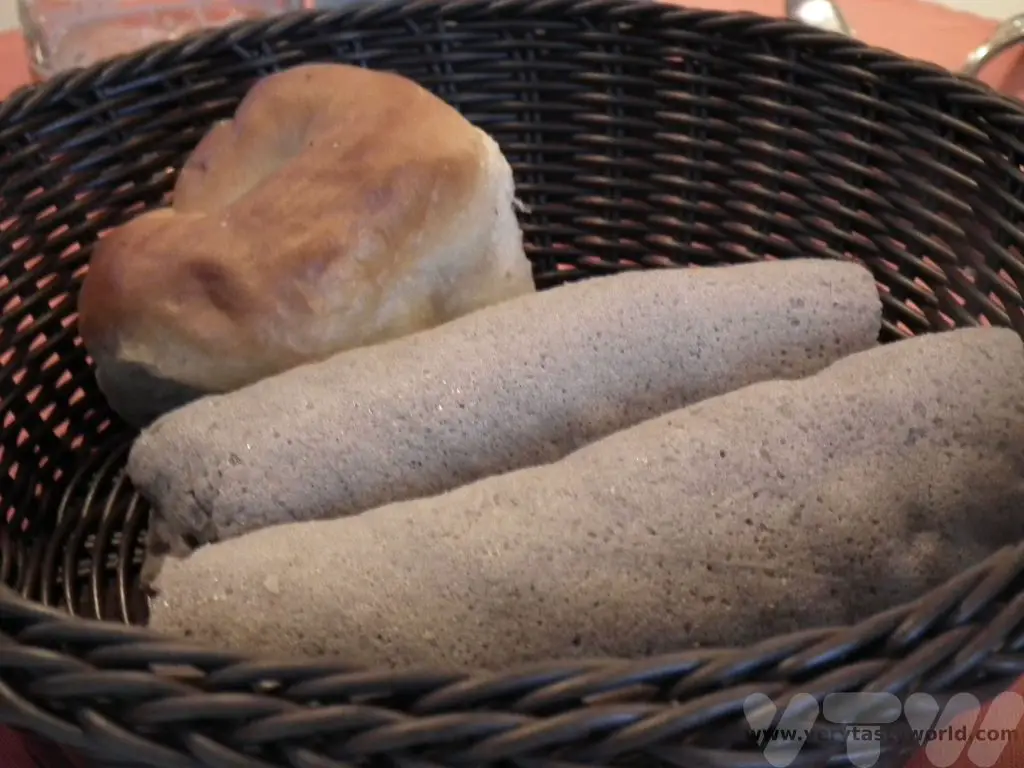
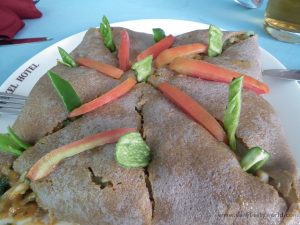
It really doesn’t look enticing at all. This was about as attractive as it got.
Actually, it tastes really good. It has soft texture and a slightly sour flavour. Injera is made from teff, apparently the world’s latest superfood – a grain that is highly nutritious. Injera is made using a fermenting process rather like sourdough or dosas. A combination of teff flour and water are combined to make a batter which takes a few days to ferment. When the mixture is bubbly and smells sour it is ready. It can be fried on a skillet (on one side only) until the characteristic bubbles appear in the surface.
It is often served laid out flat with stew (wat) or with meat and vegetables placed on top – you can pull off chunks of the injera to scoop up the stew. So it serves as plate, cutlery and delicious food.
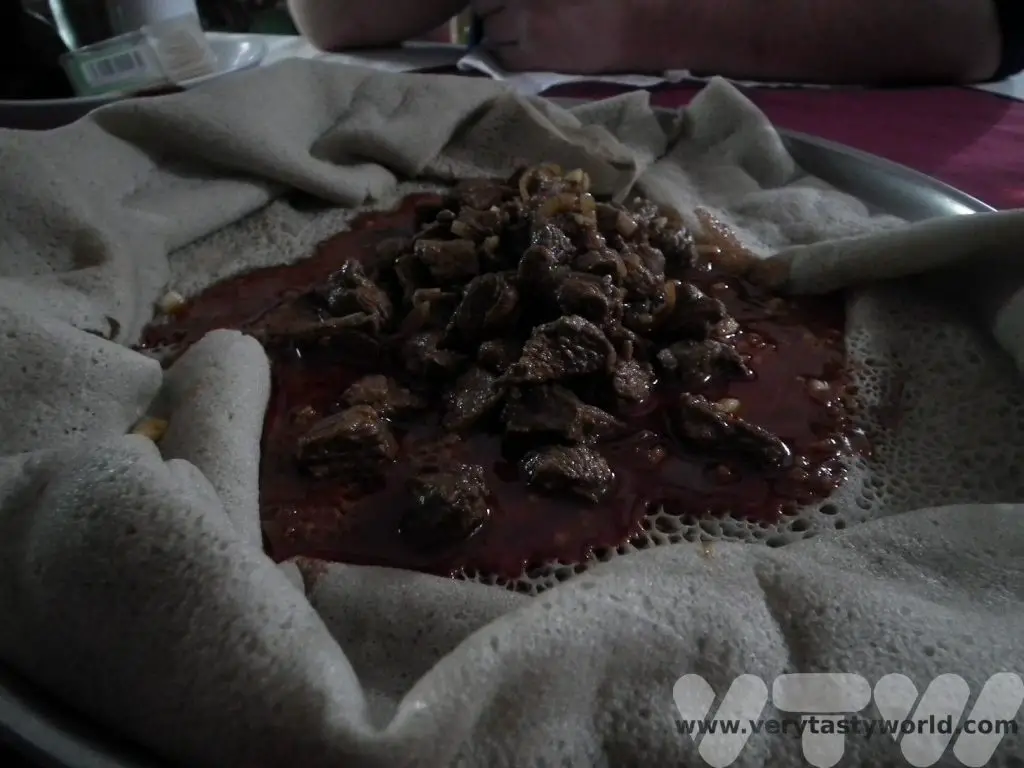
The local people we met were quite surprised that we were willing to eat injera and that we enjoyed spicy food.
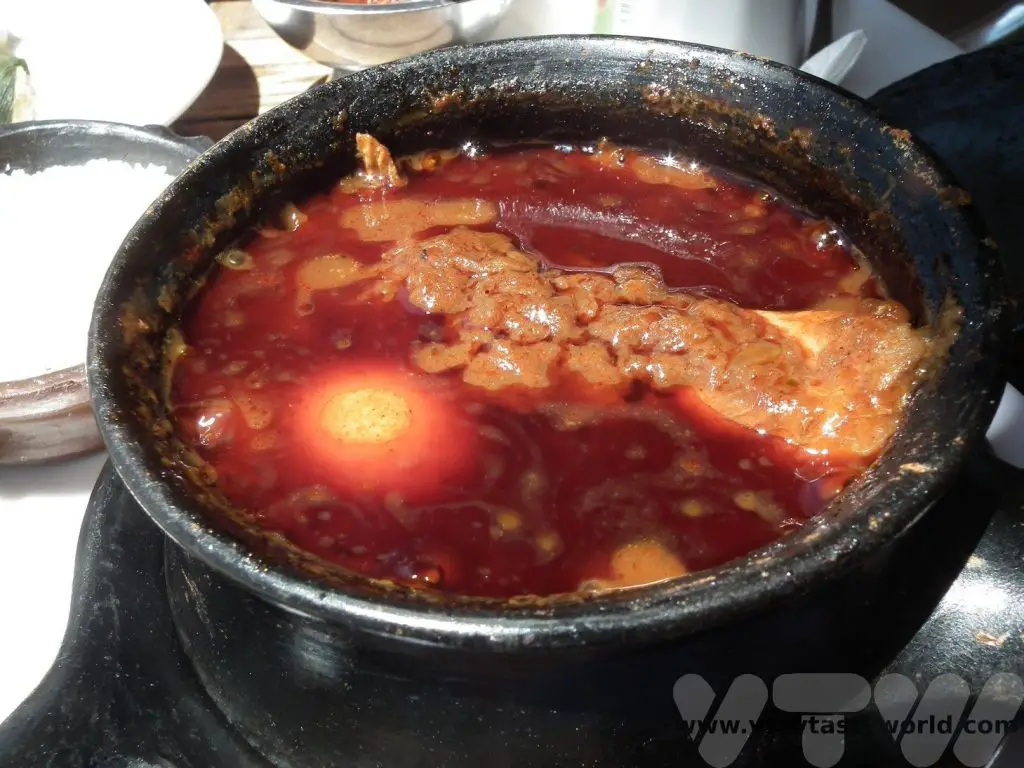
In the UK the county of Yorkshire is renowned for providing large portions of food. Ethiopian portions are so enormous that we quickly discovered that one meal between the two of us was more than enough to fill us up. We generally only needed to eat brekkie, then we shared all other meals.
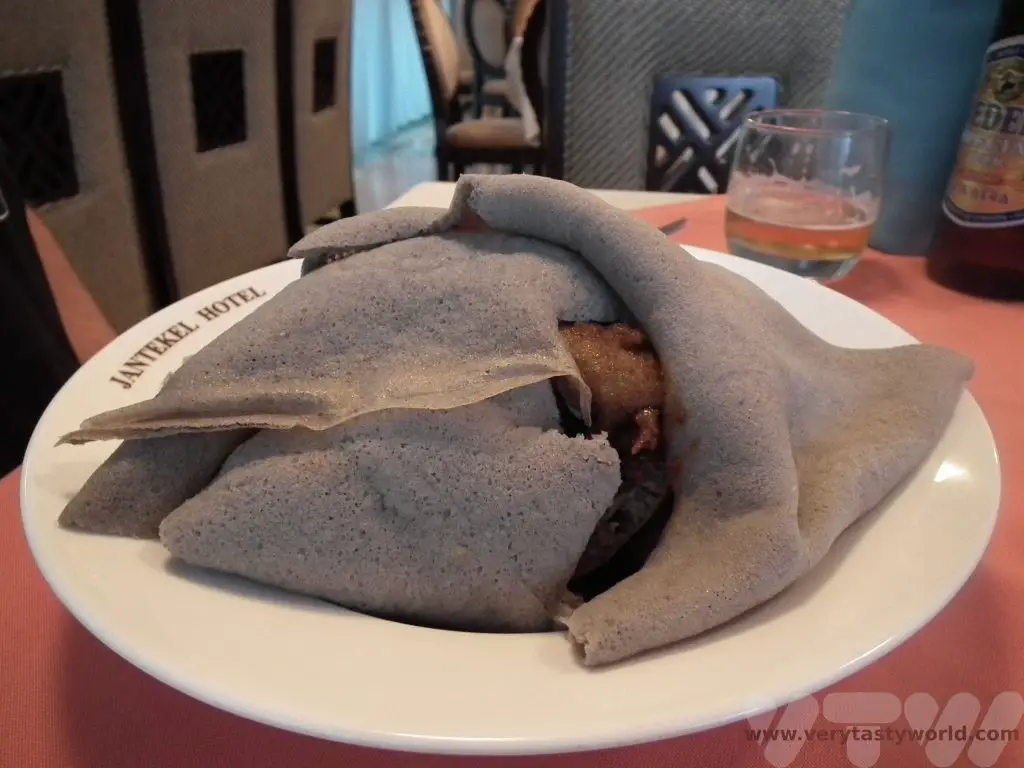
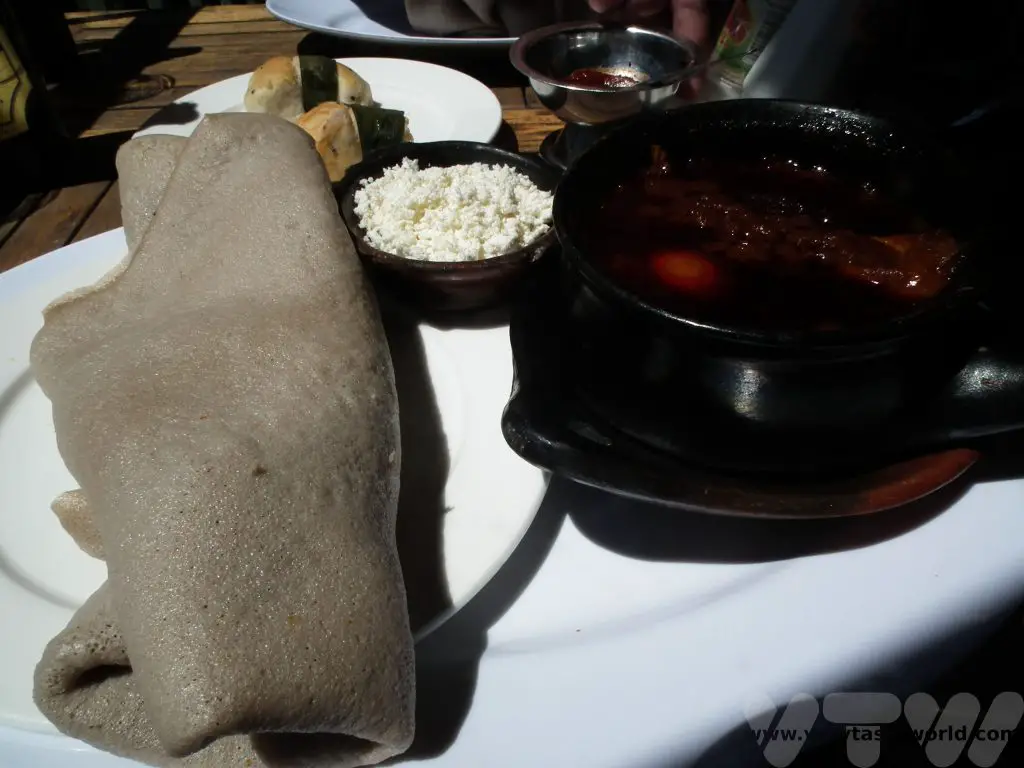
Ethiopian Coffee
Ethiopia can claim to be the country where the coffea arabica originates. Coffee has been grown in Ethiopia for centuries and it forms an important part of the culture.
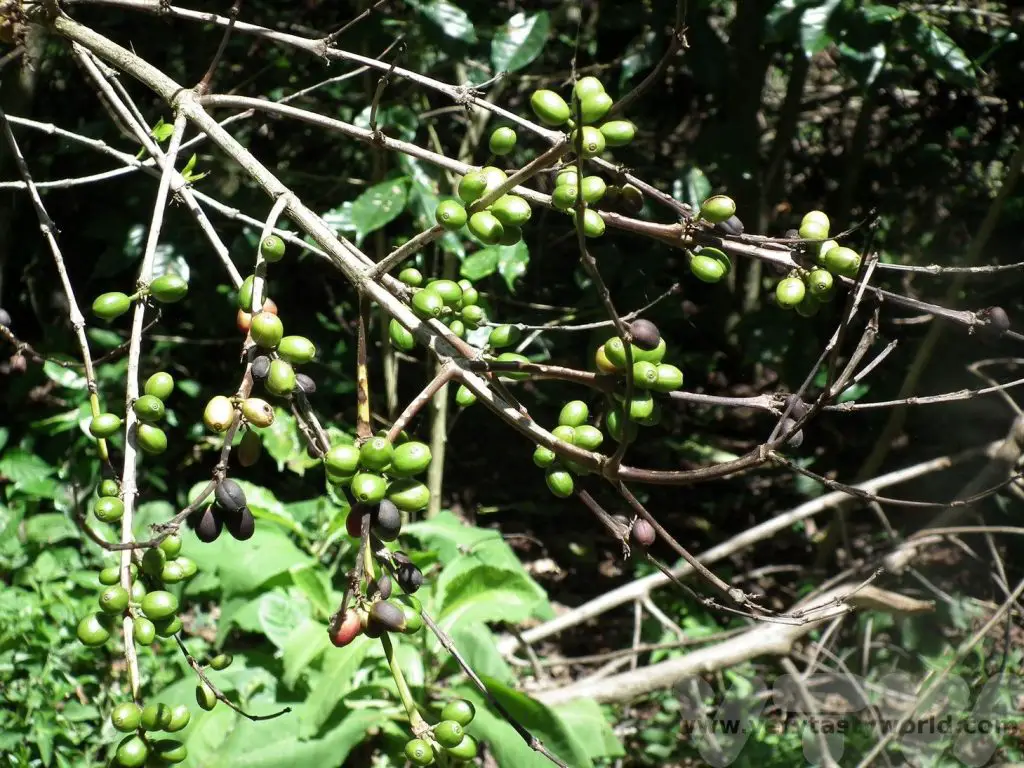
Coffee ceremony is highly social activity and the ceremony is usually performed by the female members of a household. The process starts with green coffee beans which are roasted in a pan over a flame and then ground using a mortar and pestle. Then the ground coffee is placed into a pot which has a spherical base and long neck and water added. It then boils on the flame so that the coffee can infuse and is then filtered using a sieve. The finished drink is poured from height into small cups. The grounds may be brewed a couple more times.
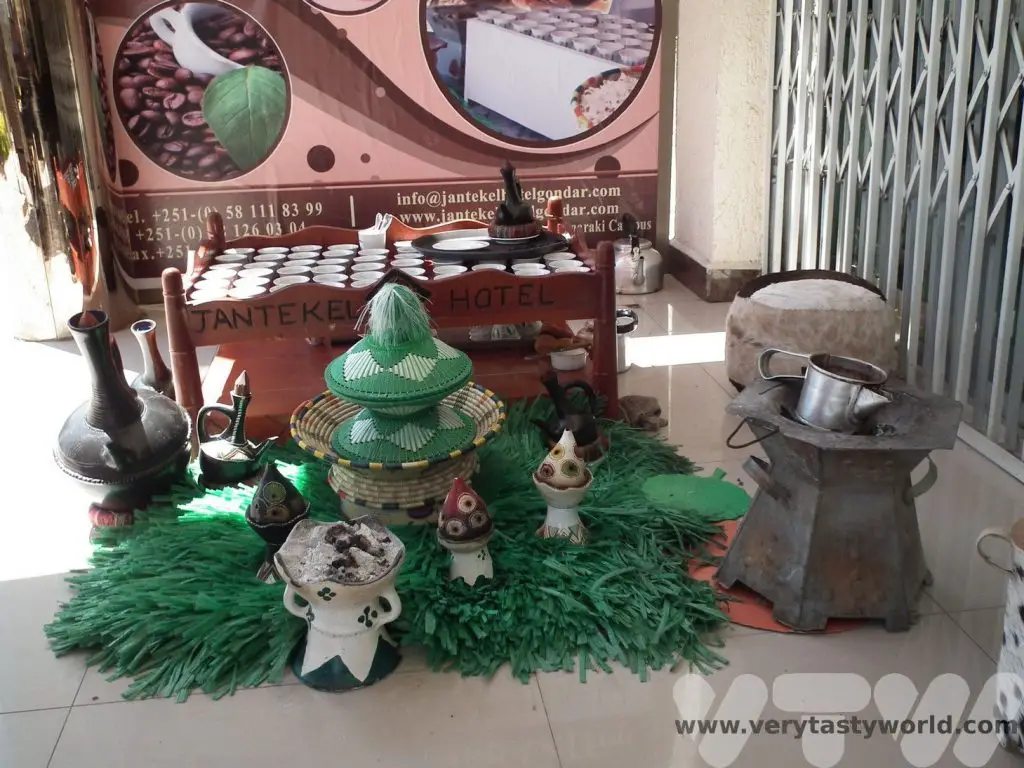
It is also possible to drink home-made beer in Ethiopia. Bars aren’t common in rural areas so you need to know someone local because the beer is only available in private homes. These are called tella places. We were lucky to have a guide who invited us to a tella place to enjoy the beer. It’s a beer brewed with teff or sometimes sorghum and the variety we tried was quite light – around 3%. Drinking beer in a home was a nice way to enjoy a tipple with local people.
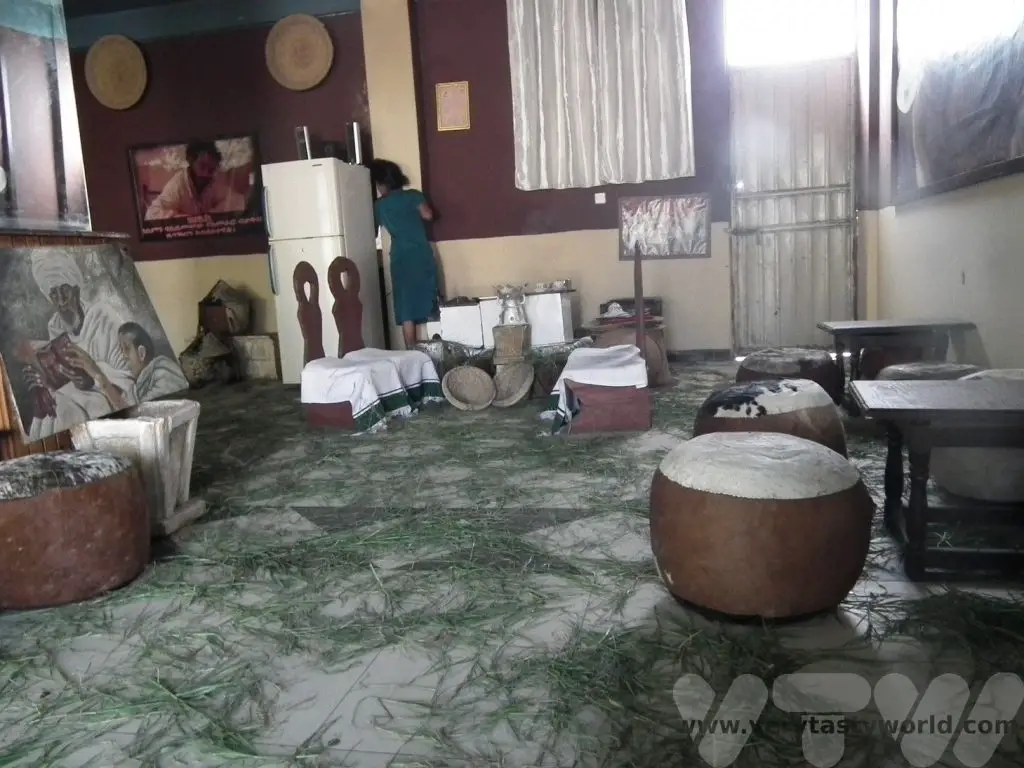
Some Interesting Facts About Ethiopia For Travellers
Because Ethiopia isn’t located too far from the equator daylight and nighttime are pretty much equal all through the year. The Ethiopian time system is very different to ours and uses a 12 hour clock. Sunrise, at 6am, is 12:00 dawn time. Night starts at 12:00 dusk, which is the equivalent to 6pm international time. While many tour guides will work on international time, it can get a little confusing if you are looking at a local clock, especially if you have a flight to catch.
Additionally, Ethiopia has thirteen months in its year. This means that, at the time of writing in 2023, it is still 2015.
Another interesting element to Ethiopian culture is that many people follow the Ethiopian Orthodox church and hence don’t eat meat on Wednesdays and Fridays. This is great for vegetarian/vegan visitors as there is a good selection of veggie food available. Ravenous meat-eaters don’t need to worry though, hotels and restaurants will still offer meat on those days.
Ethiopia has so much to offer – a fascinating history and culture, remarkable architecture and really beautiful landscapes and wildlife. We received a warm welcome wherever we visited and would love to return to explore the south of the country.
Related Posts You May Enjoy

- Malagasy Cuisine – The Food of Madagascar
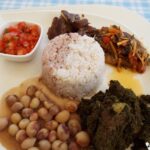
- Mora Mora on the RN7 Madagascar – A Road Trip

- Tree Climbing Lions, Hippo Hordes and Safari Shenanigans in Uganda

- Tourist Attractions In Ethiopia

- Kibale National Park Chimpanzee Trekking

- Visit Ethiopia – Gondar and the Simien Mountains
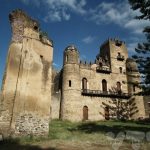
A Northern Ireland Road Trip
Northern Ireland is blessed with vibrant cities, beautiful countryside and a stunning coastline. We visited this lovely country as part of a road trip around much of the island of Ireland. We flew into Belfast airport and hired a car which gave us maximum flexibility to explore. Here’s a Northern Ireland road trip itinerary for spending two to three days in this lovely country. It can be extended or compressed, depending on how much time you have and how long you wish to spend at some of the attractions.
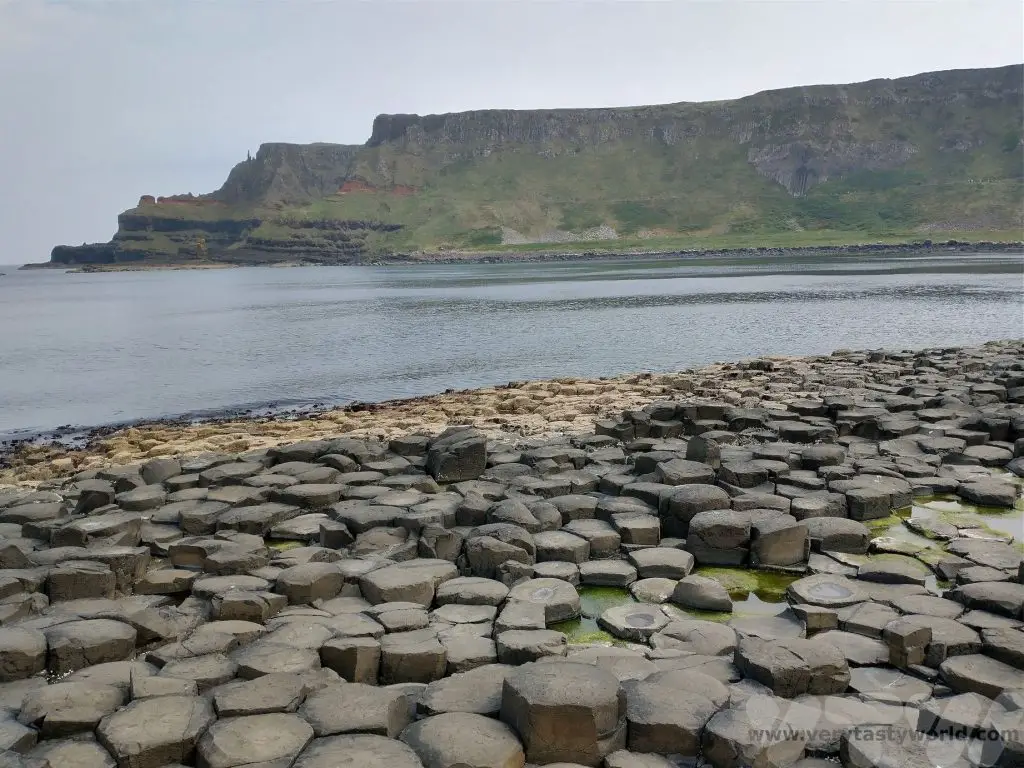
Belfast
Belfast is the capital city of Northern Ireland and is probably one of the liveliest places we’ve visited. The city’s name derives from Béal Feirste which means ‘mouth of the sandbar’. Although there have been settlements in the area since Neolithic times, Belfast town was established in the 17th century by Sir Arthur Chichester. It grew rapidly over the years as a trading centre and industrial hub. Most of Ireland seceded from British rule in 1921 to form the Irish Free State but six counties in the north of the island remained part of the UK and Belfast become the capital city of these.
Arriving in Belfast
We flew into Belfast airport, picked up our car and drove the short journey into the city. We arrived at at 4 pm on a Saturday evening, and the place was already throbbing – bars were full, and everyone was dressed up and ready to go out. A walk through the city was interspersed by raucous mobile bars filled by revellers and fuelled by boozy pedal power.
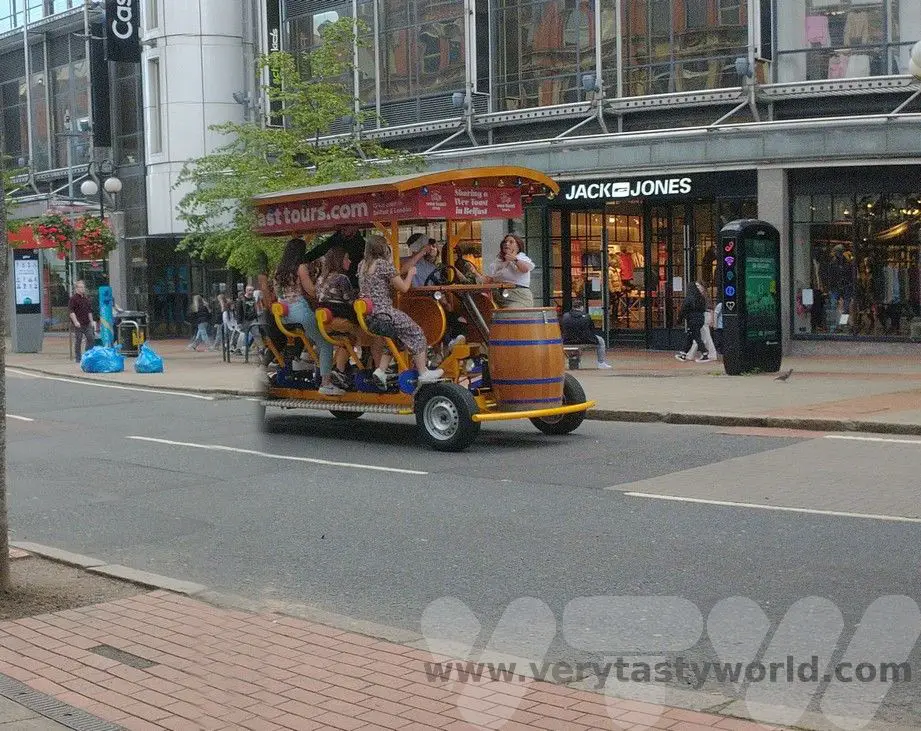
The following day we spent some time in the city. Belfast is a great place to explore on foot and has a number of impressive buildings:
The City Hall in Donegall Square council building is the civic building of Belfast City Council.
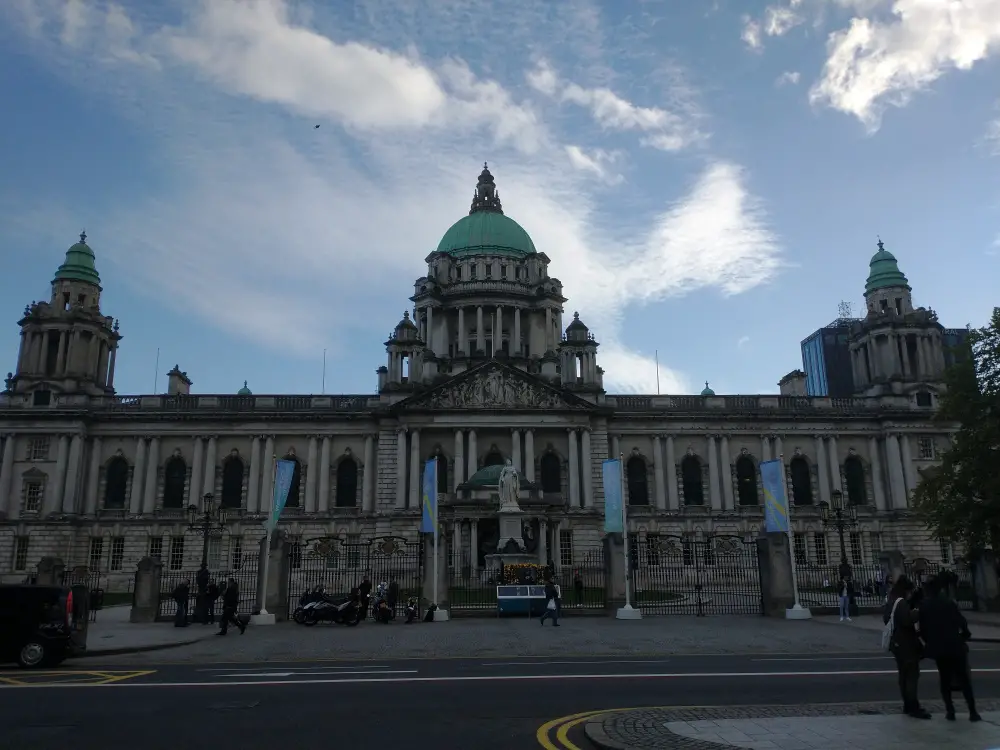
Belfast Cathedral, the Cathedral Church of St Anne, dates from 1899. In the background of the picture below you can see a very thin spire. It’s so slim it looks like a spike. It’s called the Spire of Hope and was designed to be extremely lightweight because the cathedral is suffering from subsidence into the silty mud it was built upon. Hence, with no chance of it having a full spire or bell tower, this elegant, svelte and minimalist spire was installed in 2007.
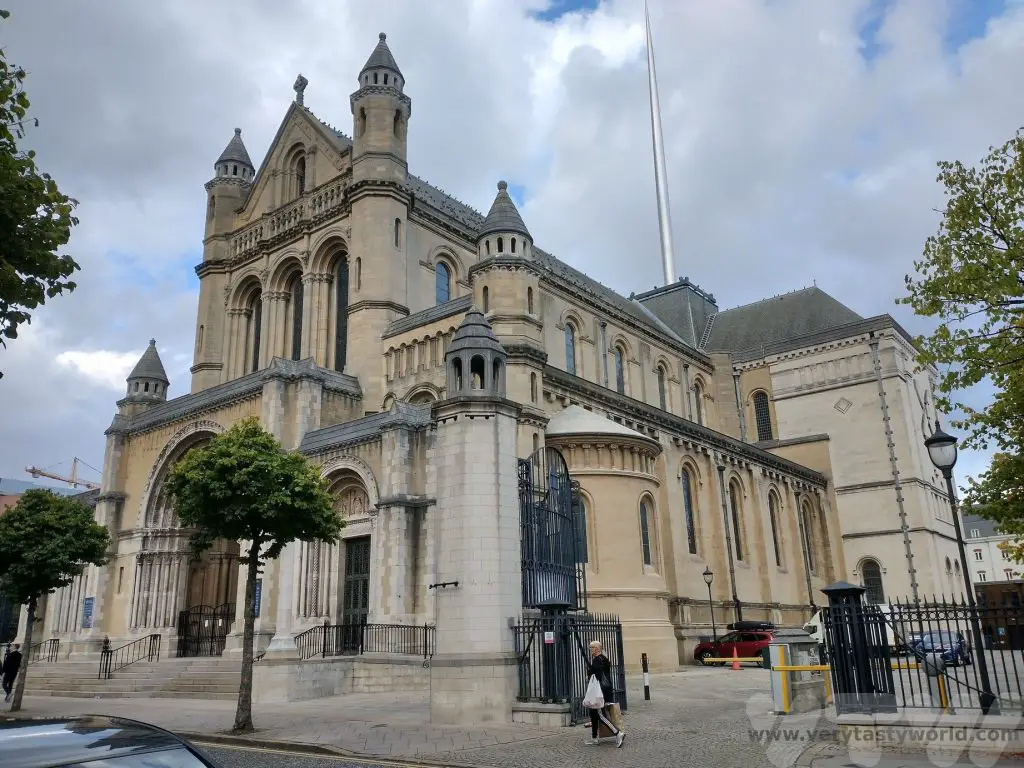
The Albert Memorial Clock Tower was built in 1869. It was designed by WJ Barre who won a competition to design a memorial to Queen Victoria’s late husband, Albert the prince consort.
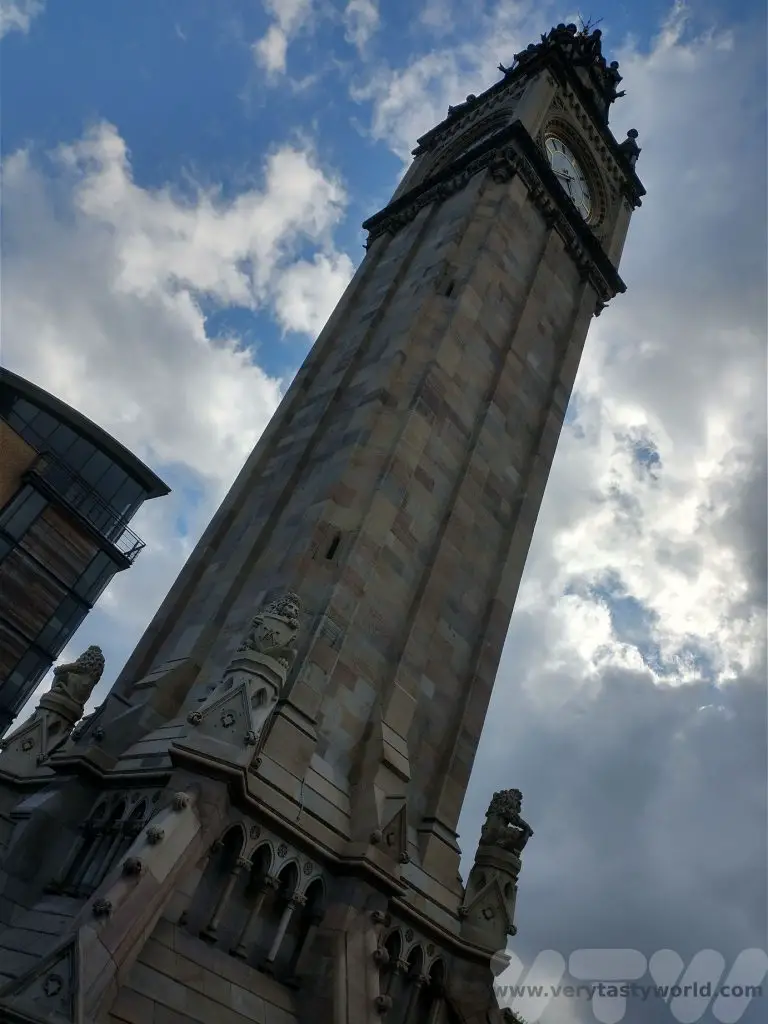
Belfast also has an impressive street art scene.
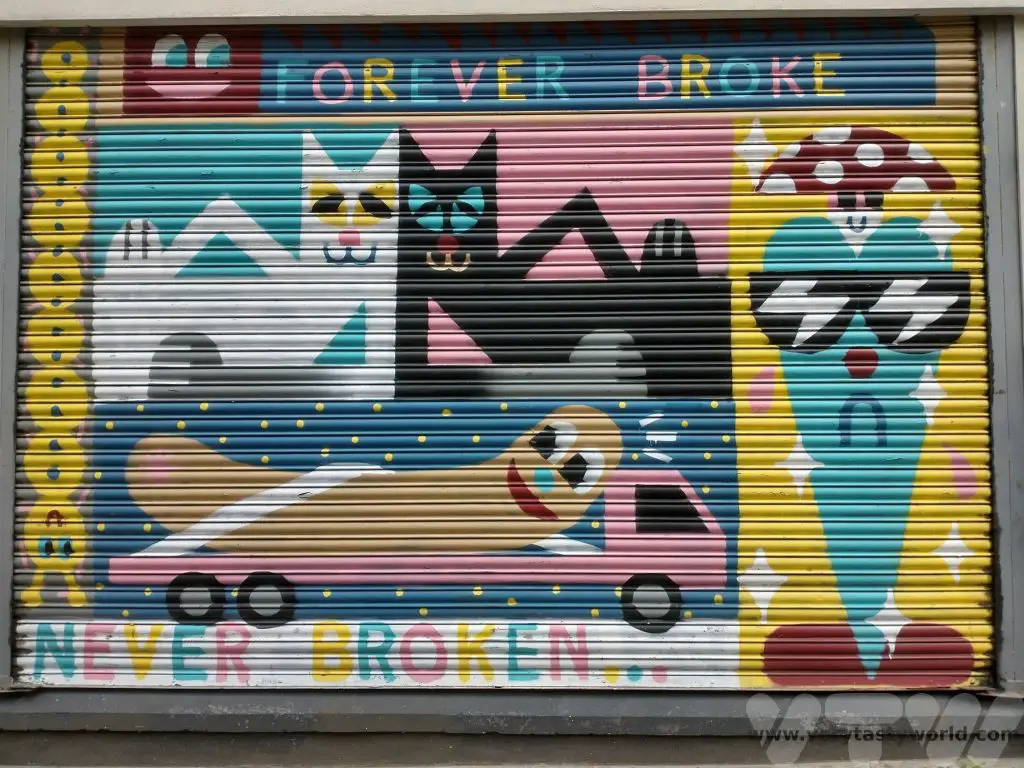
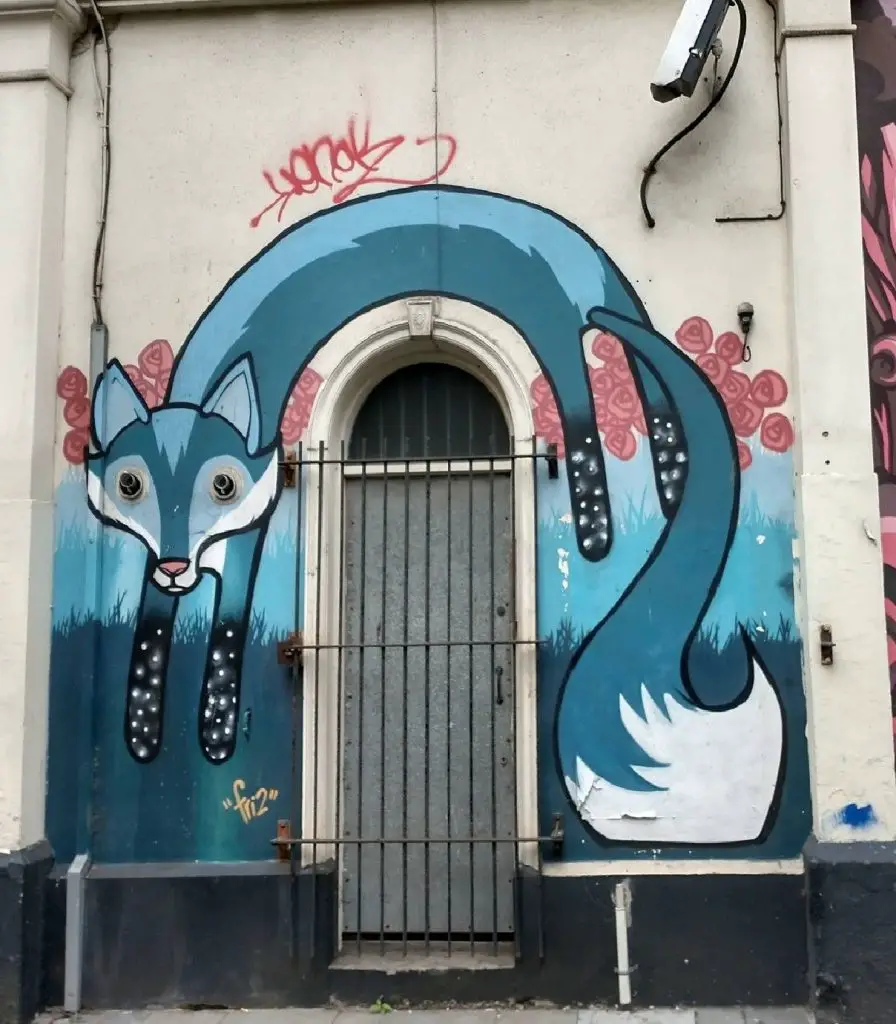
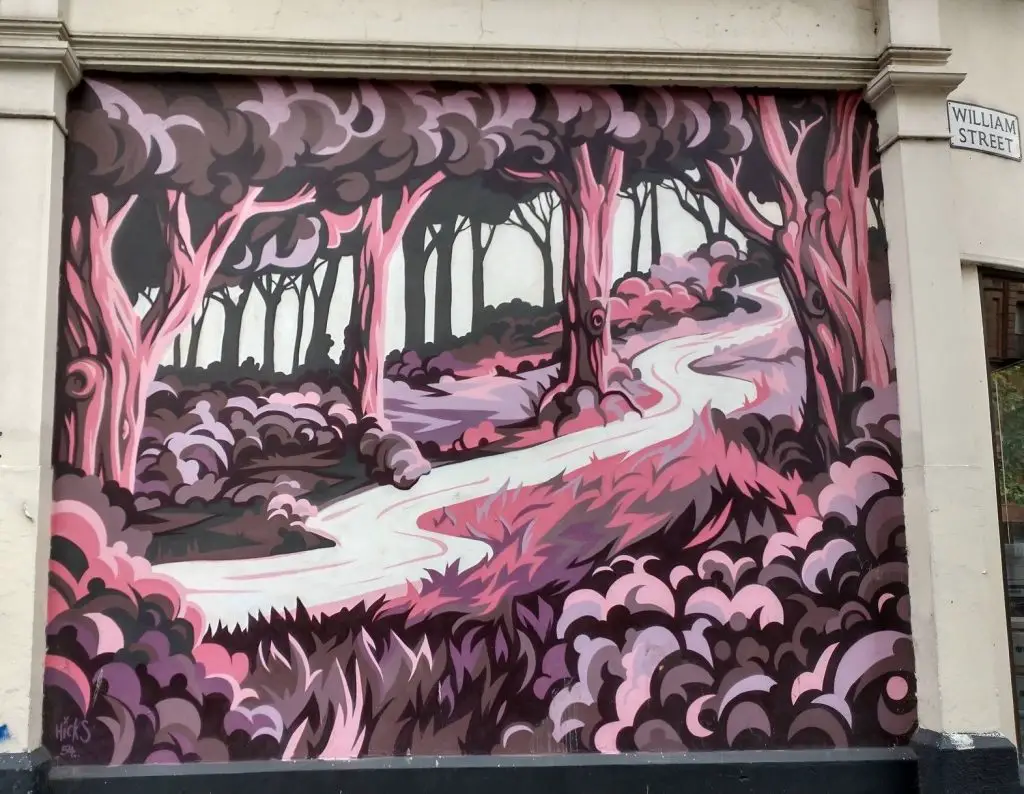
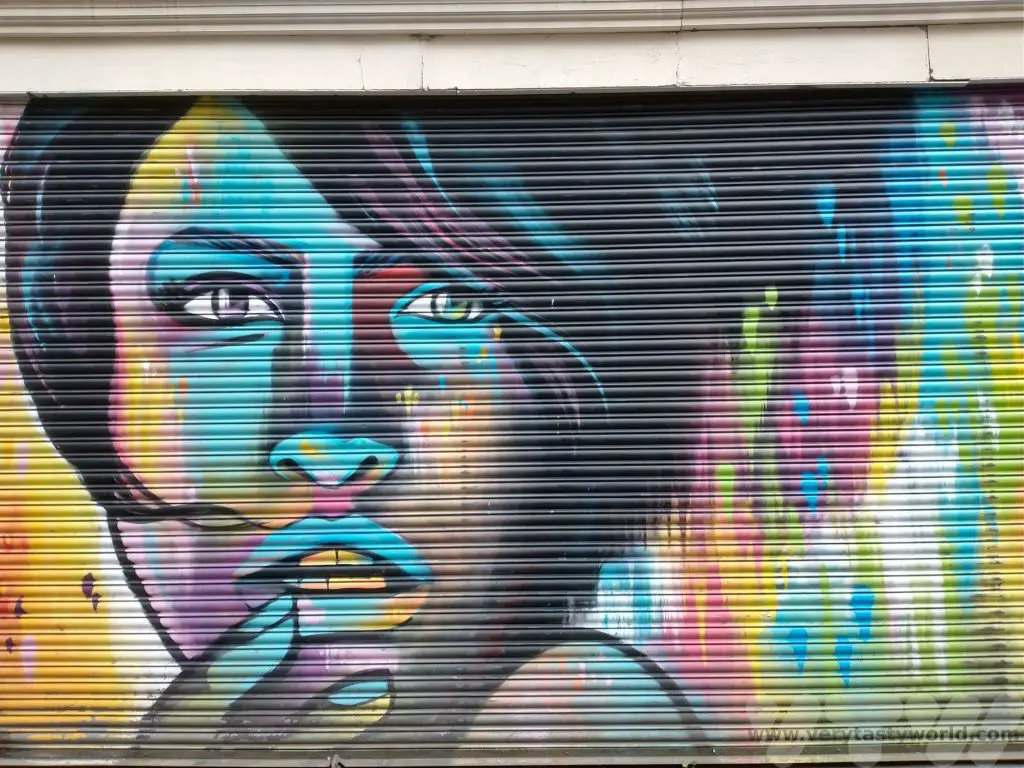
Things to Do in Belfast
The Titanic Experience is Belfast’s most popular tourist attraction. It’s worth setting aside a few hours to spend in this area.
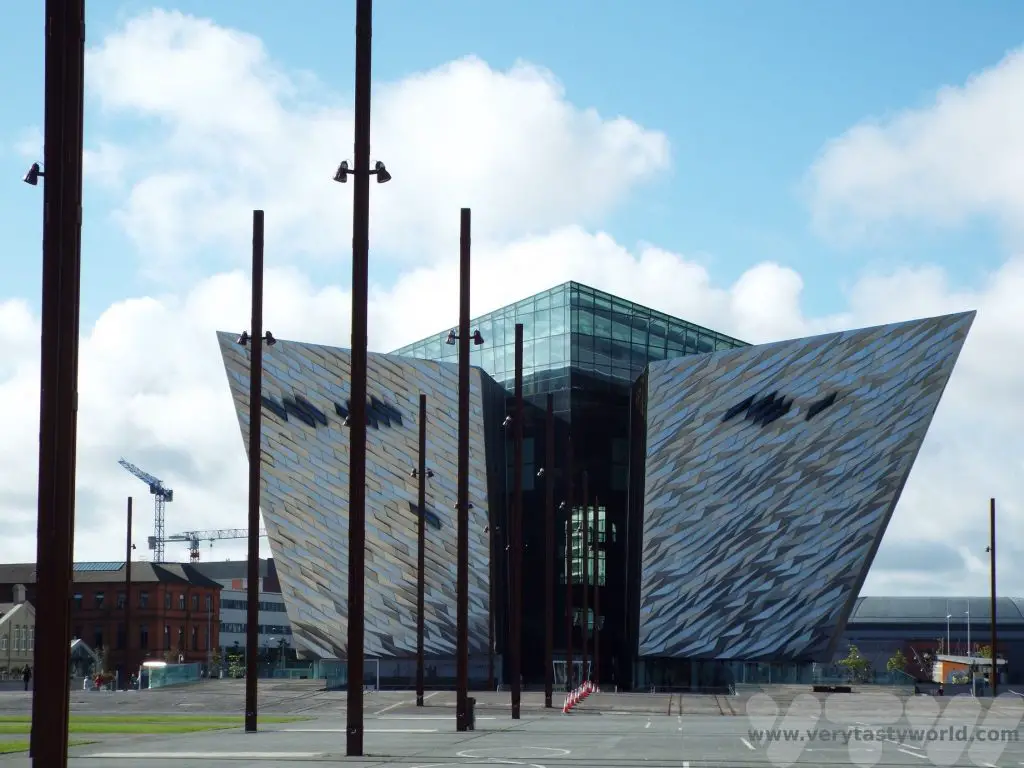
Housed in a gargantuan building located in the Titanic Quarter on the site of the former Harland & Wolff shipyard, visitors can embark on an extensive and highly interactive tour which shows the history of possibly the world’s most famous ship.
The tour depicts the story of the ship from its conception to the discovery of the wreck in its watery grave. It sets the narrative in the social context of Belfast’s history, notably its industries and particularly its shipyards. It also shows the construction process and includes a gentle theme park style ride through a mock-up of the shipyard.
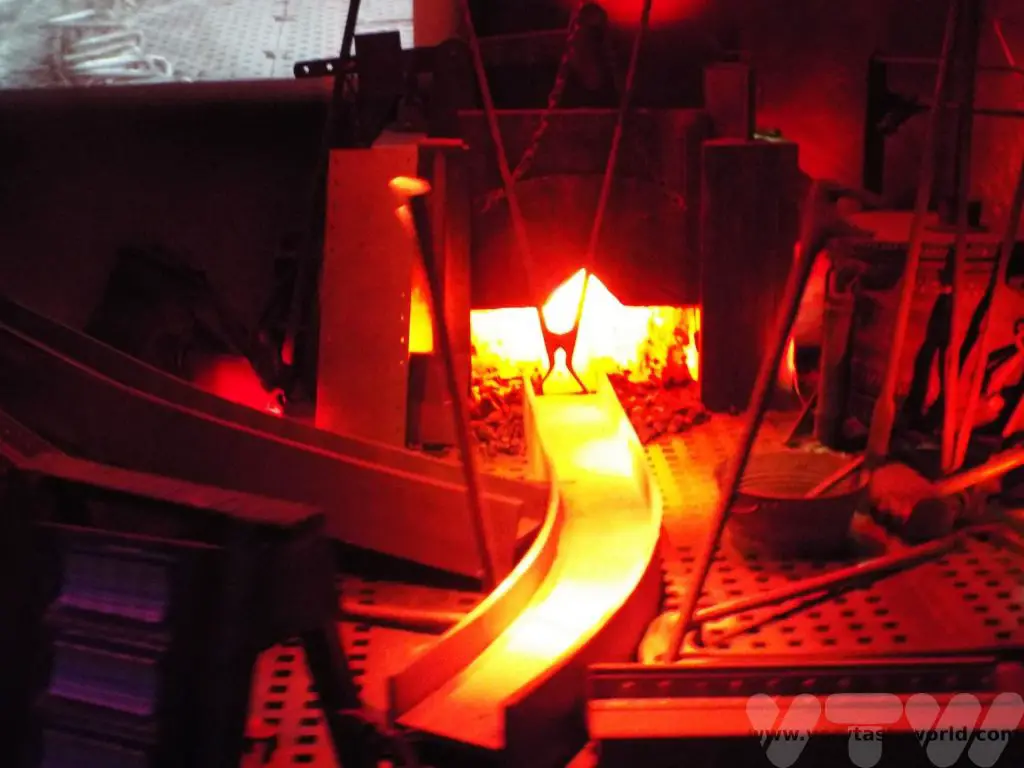
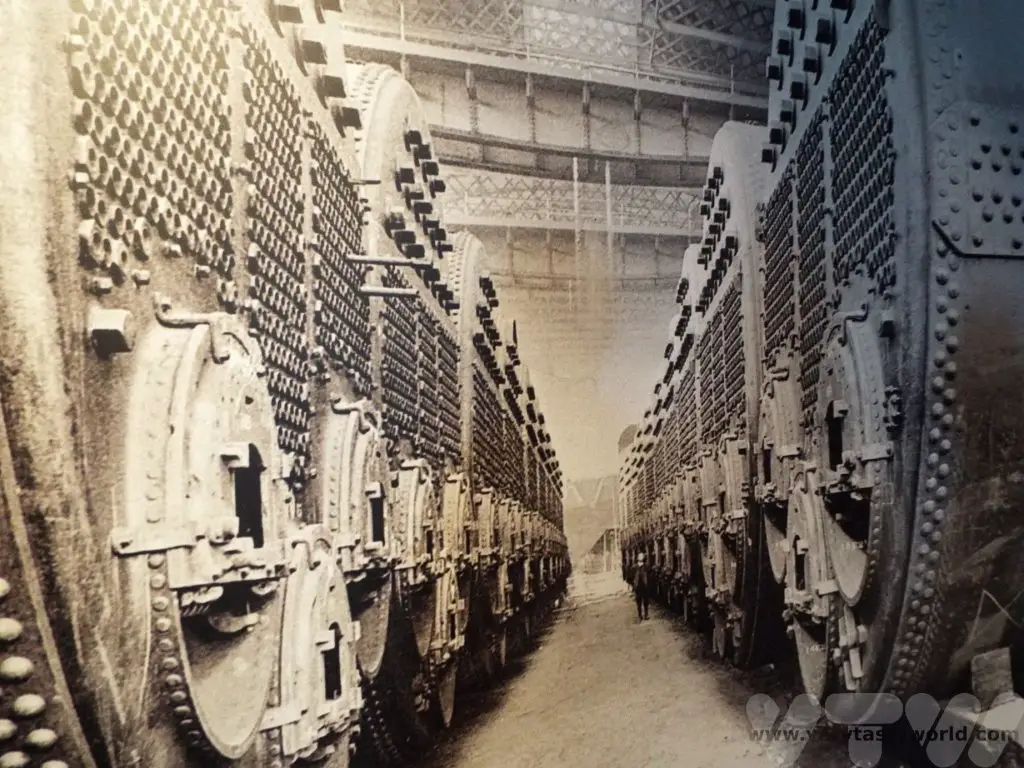
There are detailed displays showing how the ship was fitted out. It was interesting to learn about the facilities that were available for the different classes of passenger.
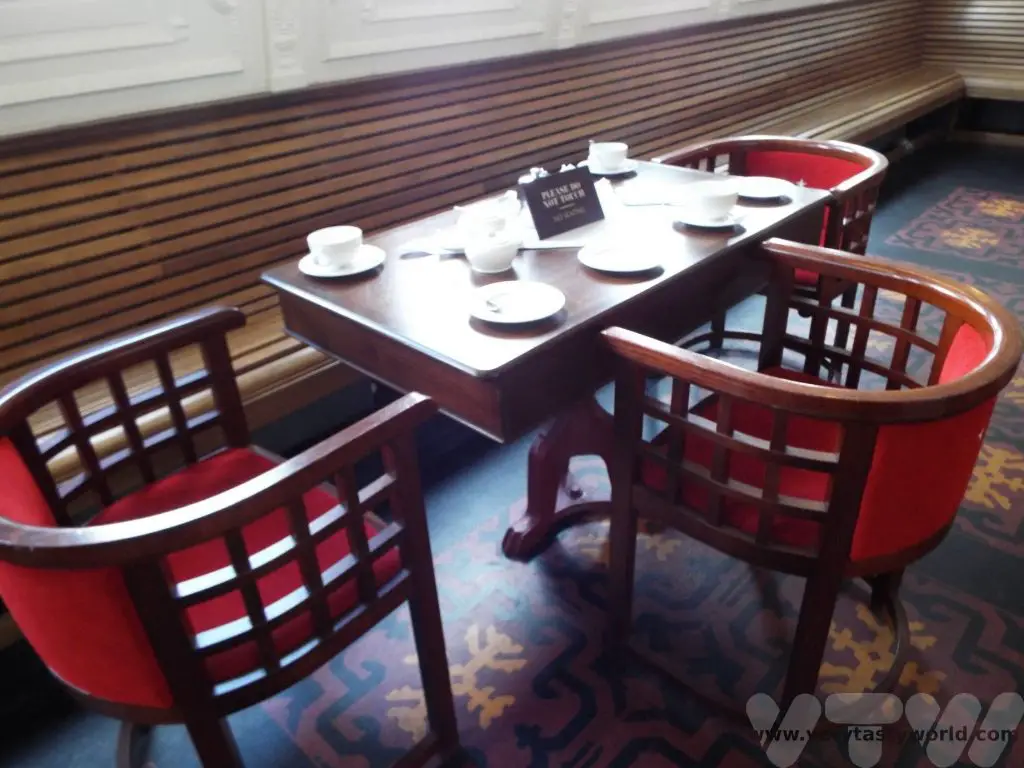
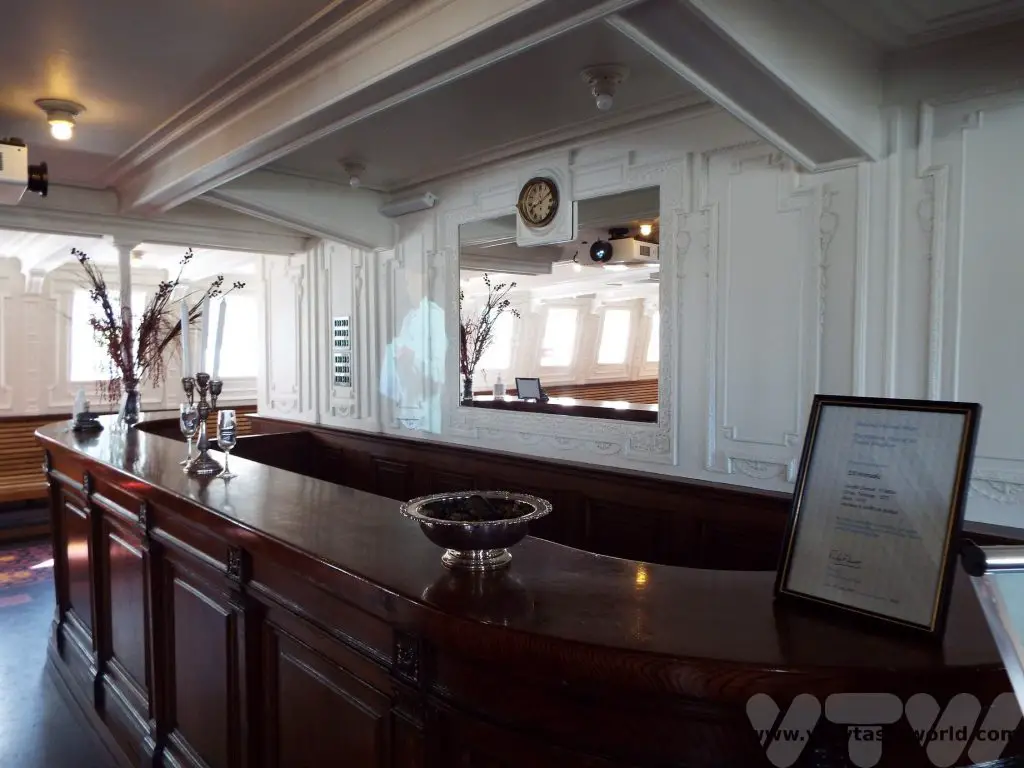
It provides information about the launch and the Titanic’s disastrous maiden voyage as well as the search for the elusive wreck, which was discovered many decades later, and the depiction of the disaster in the media and on film.
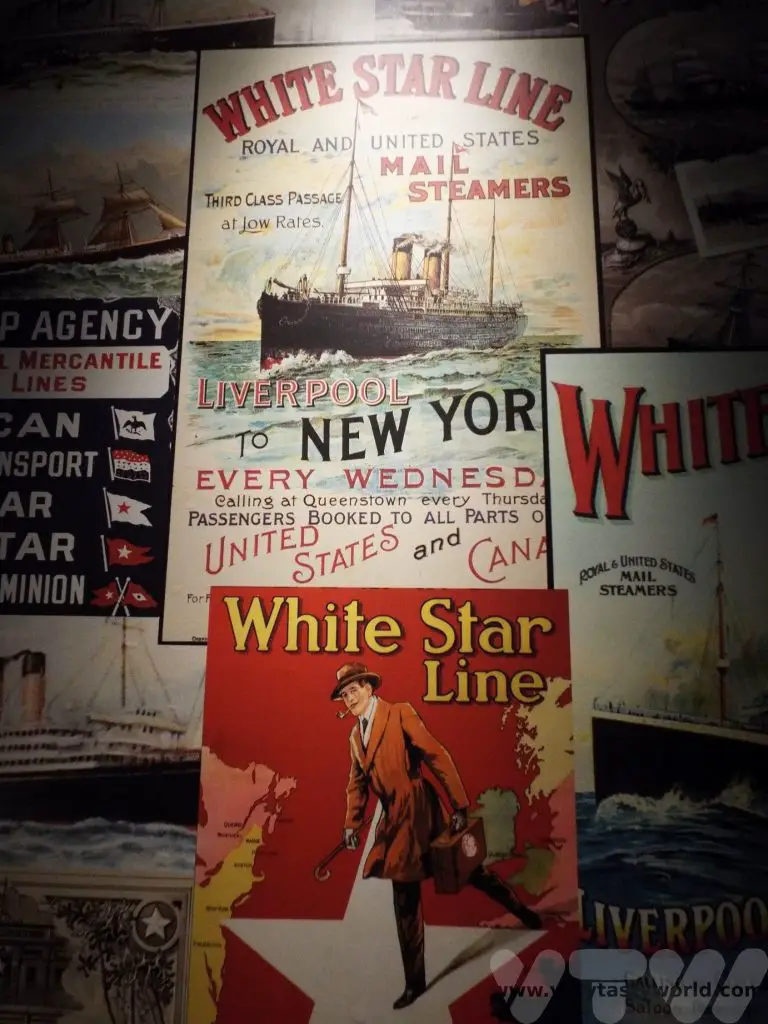
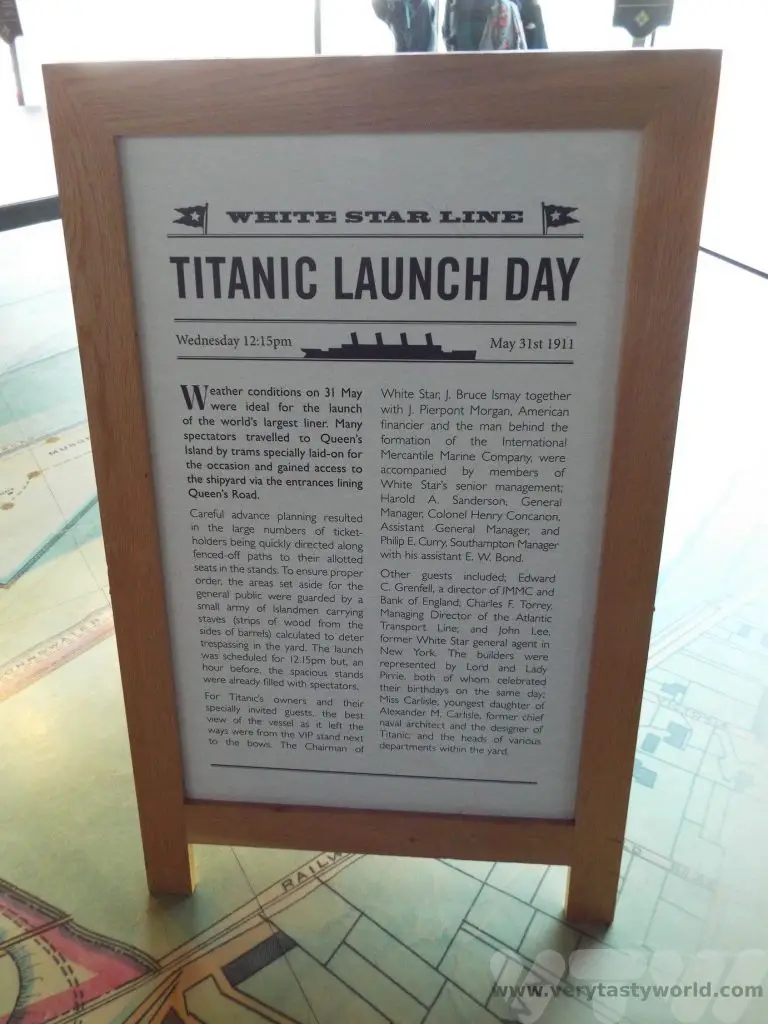
Included in our ticket price was a visit to the SS Nomadic which is located in a dry dock outside the main building. This was another White Star Line ship (the last surviving in the world), built at the same time as the Titanic but exactly one quarter of the size.
She was the tender ship which transferred passengers from the docks in Cherbourg to the Titanic. Because of its size the Titanic itself was moored in deep water away from the shore.
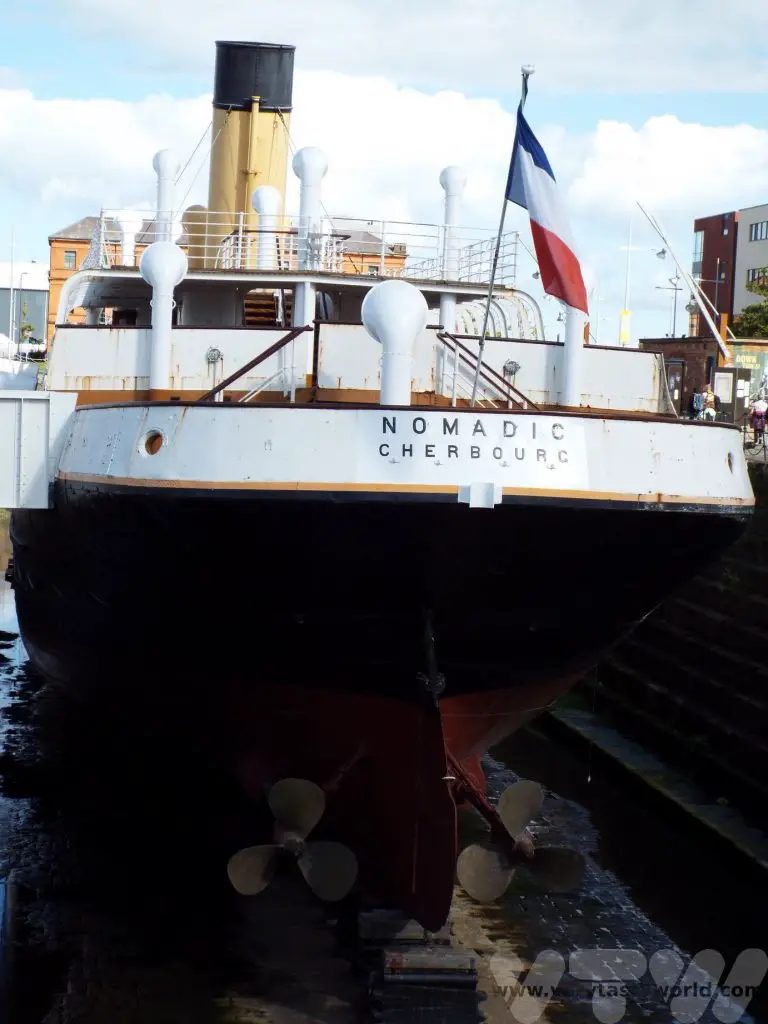
Since our visit, the Titanic Experience has been revamped and the reimagined experience, with an emphasis on telling the story of many of the people involved with the Titanic, launched in March 2023.
While you’re in the area, the Maritime Mile on the waterfront has a lot to discover, from historic attractions showcasing the area’s maritime history, art installations and a bunch of restaurants and shops.
Other Belfast attractions include the Crumlin Road Gaol, a prison that was operational between 1845 and 1996. It has been renovated and is now open to visitors.
Ulster Museum offers an extensive collection of artefacts, covering history, science and the natural world, as well as an art gallery.
Game of Thrones
With so many beautiful locations, it’s easy to see why this country has a thriving film and television industry. Northern Ireland offered one of the primary settings for the filming of the popular TV series Game of Thrones. Producers HBO hired Titanic Studios, a building located just behind the Titanic Experience, for much of the filming and they also used exterior locations dotted all over Northern Ireland.
If you are looking to see all the Game of Thrones locations there are several tours available in Belfast or, if you are driving yourself, you will spot loads of brown tourist signs on the roads indicating where to visit. Just south of Belfast is the Game of Thrones studio tour for fans of the show.
The Titanic Quarter has some Game of Thrones stained glass windows located along the waterfront as a tribute to the series.
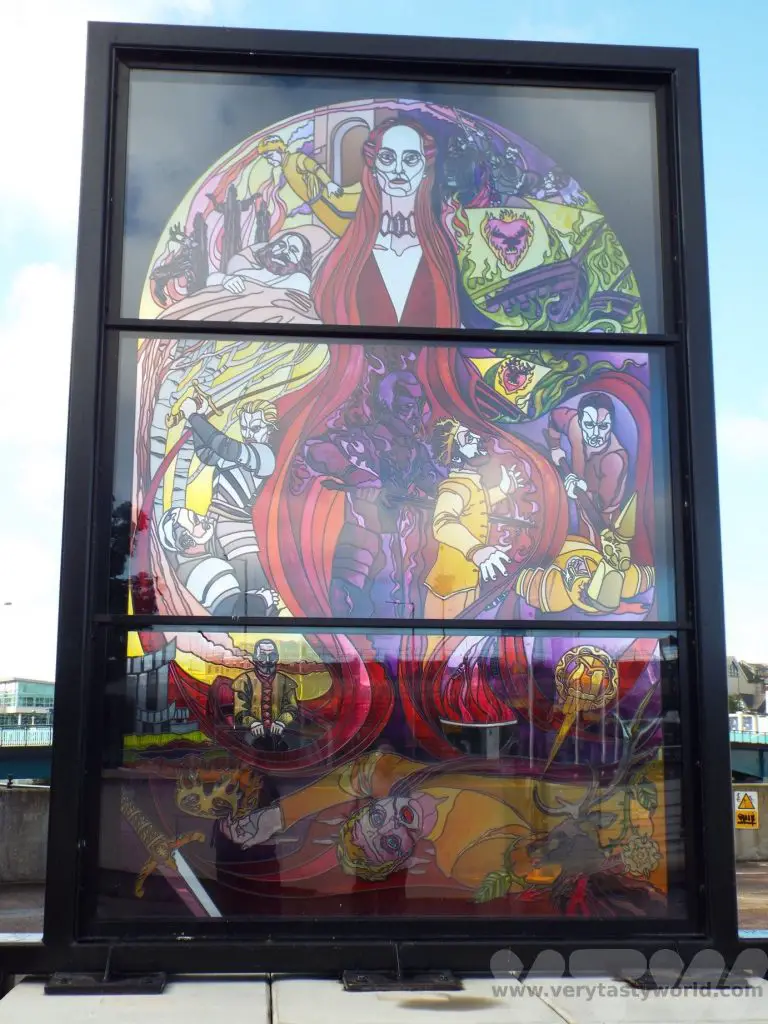
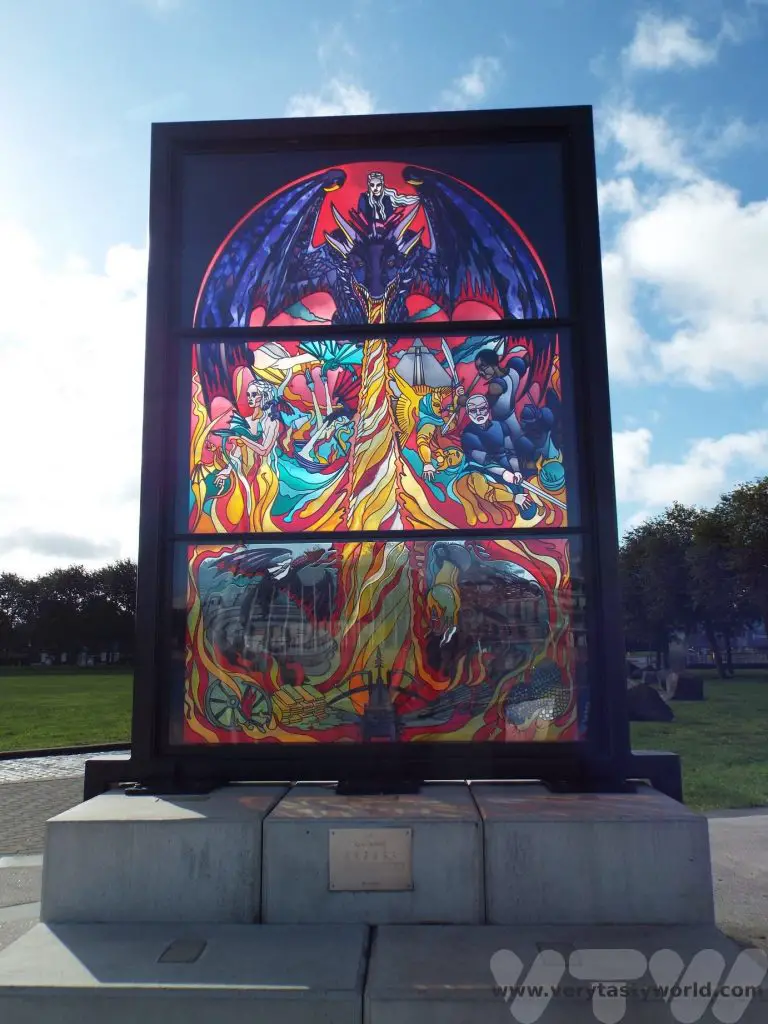
Driving To The Antrim Coast
We decided to spend a day on our Northern Ireland road trip driving from Belfast to Derry visiting many attractions along with way.
We headed out from Belfast to the Antrim coast, taking a quick detour to the Dark Hedges. This is an avenue of gnarled and twisted beech trees which were planted in the 18th century, one of many locations made famous by Game of Thrones. The trees are located on the Bregagh Road, Stranocum – follow the brown road signs to a car park which is very close by.
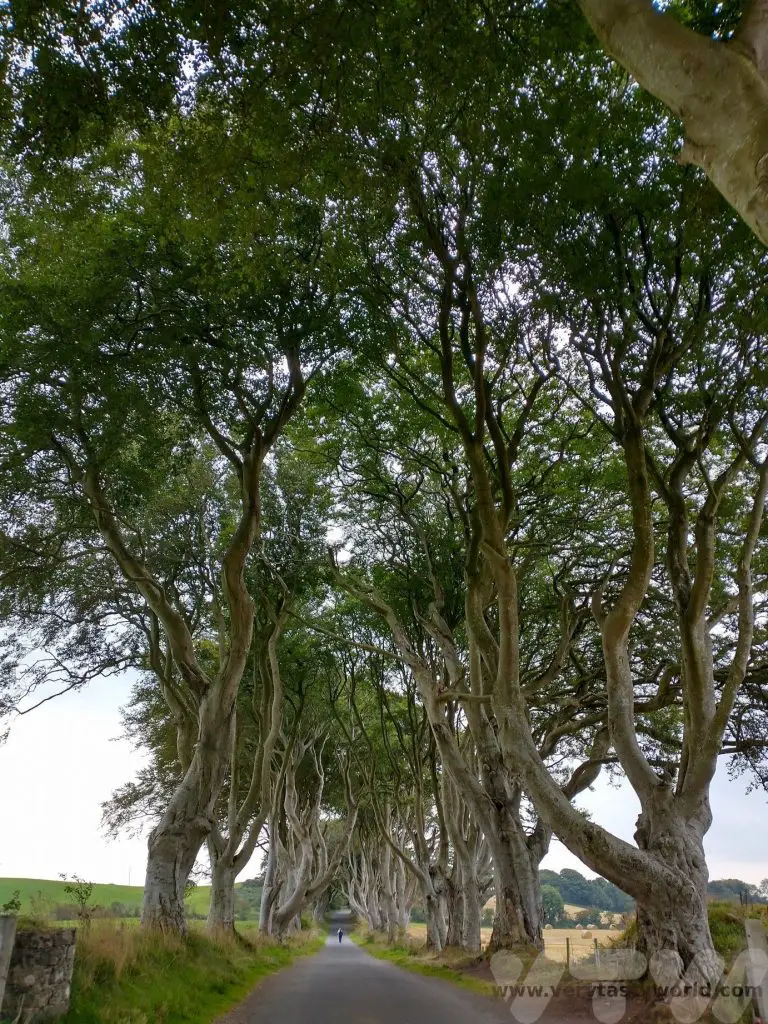
The Antrim Coastline is a place of great beauty and it’s a pleasure to drive along it. There are two locations that are unmissable.
Carrick-A-Rede Rope Bridge
The Carrick-A-Rede rope bridge was originally constructed by salmon fishermen over 350 years ago, it links the mainland with the teeny island of Carrickarede. The bridge has been rebuilt several times over the years. The current bridge is 20 metres across and is at a height of 30m above the sea.
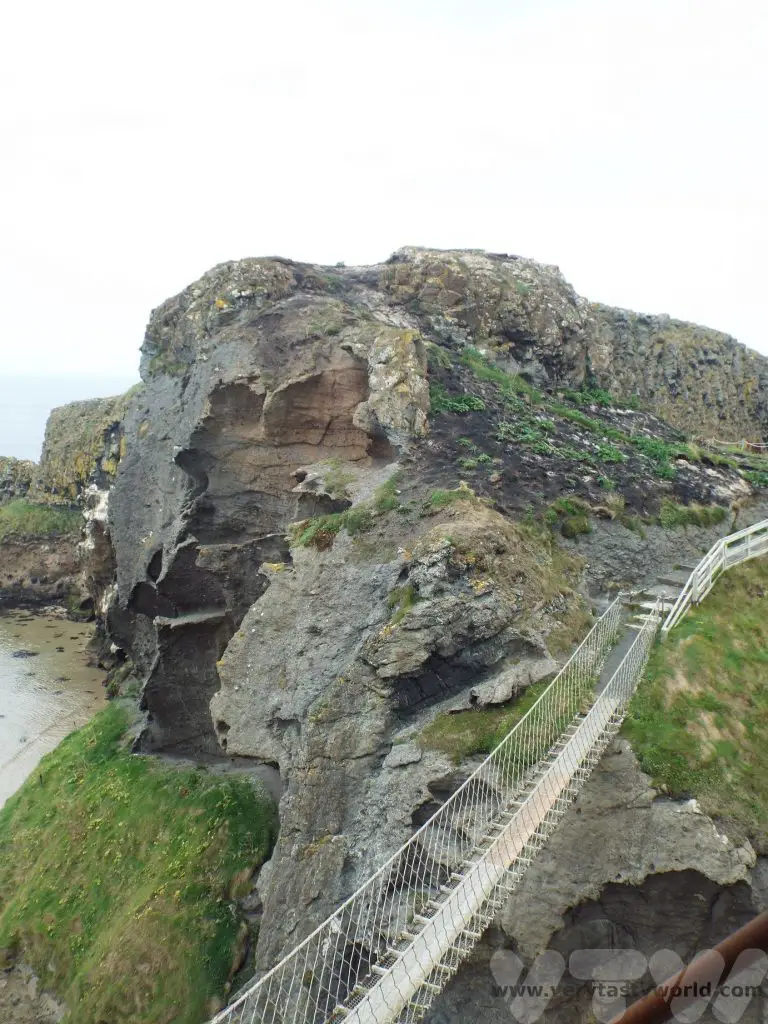
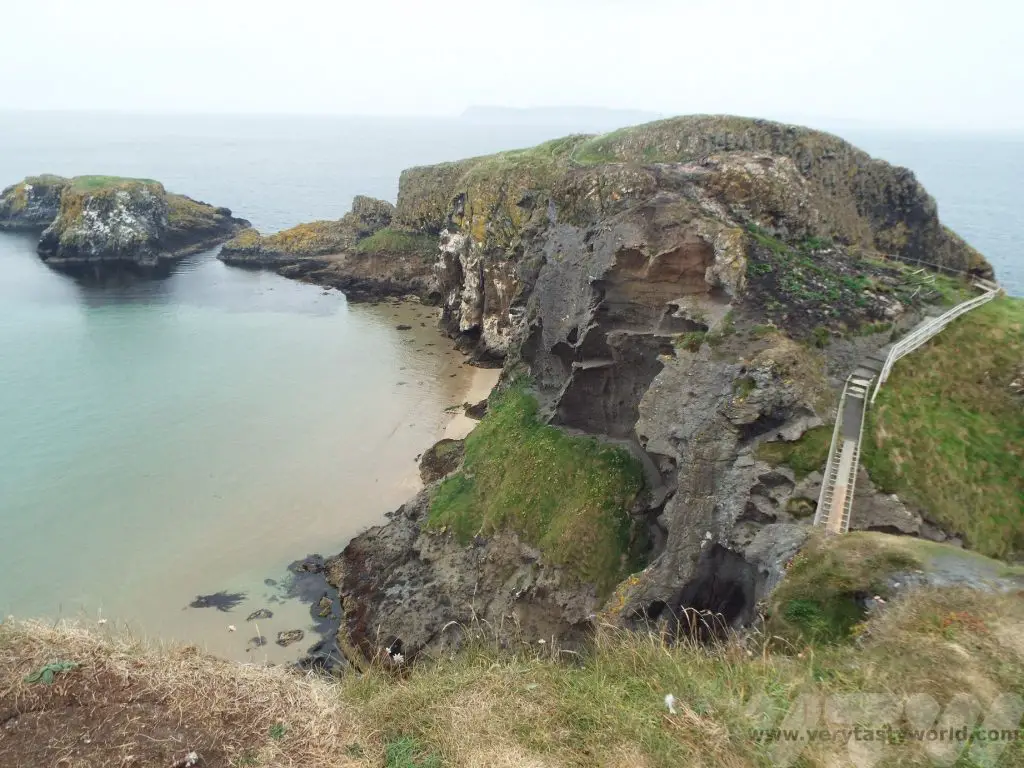
The car park is located on the North Antrim Coastal Path, just under a kilometre from Ballintoy village. Visitors need to prebook in order to cross the bridge. There is a car park (a fee applies) and the island is located along a coastal path – just follow the signs.
Sometimes the bridge is closed so it’s worth checking the National Trust website before visiting. Even if you can’t use the bridge it’s a stunningly beautiful walk along the coastline.
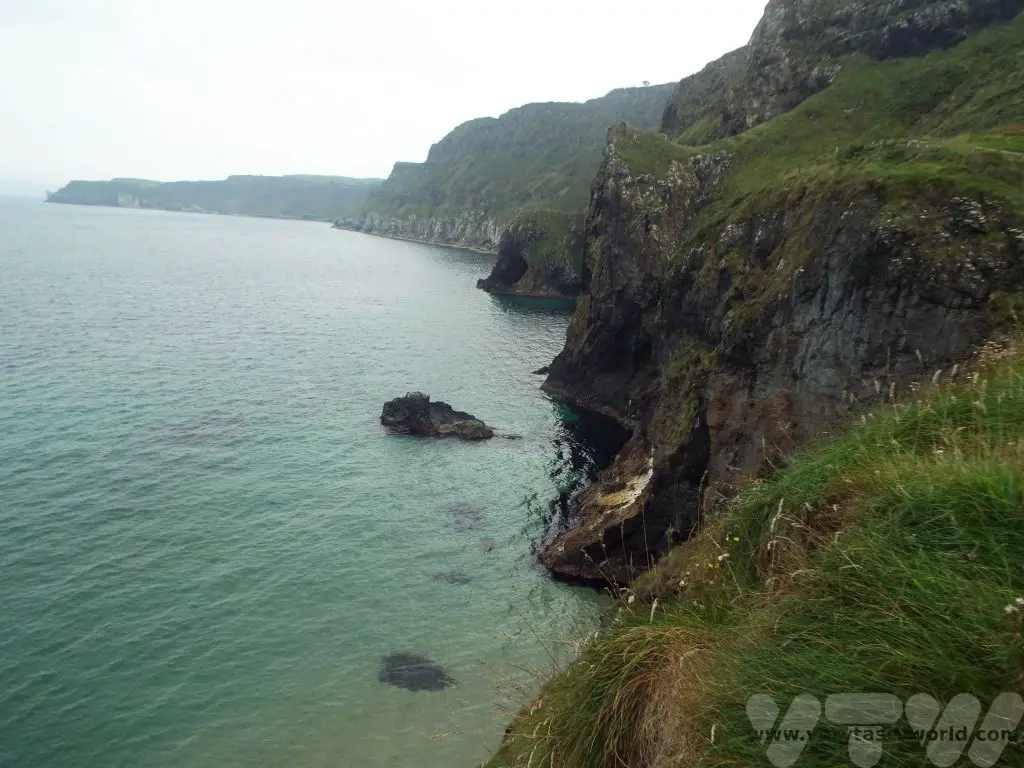
Giant’s Causeway
Around 11km along the coast from Carrick-A-Rede, the Giant’s Causeway was one of the attractions we had most wanted to visit on our trip. Mitch’s Geography A-level is entirely to blame, as it has been for all sorts of geographical attractions that we’ve visited over the years, from glaciers to oxbow lakes. Northern Ireland’s only UNESCO heritage site, the Giant’s Causeway is a wonder of nature.

It comprises some 40,000 basalt columns, largely in hexagonal shapes, that all interlock. They formed over 60 million years ago following volcanic eruptions which forced the layers of molten basalt to develop and then solidify on the chalk beds. As the lava cooled it contracted to form the columns, the relatively even rate of cooling determining that the liquid basalt settled into the characteristic shapes. But the cooling wasn’t totally uniform, so while most of the columns on the causeway are hexagonal, there are a few with more sides.
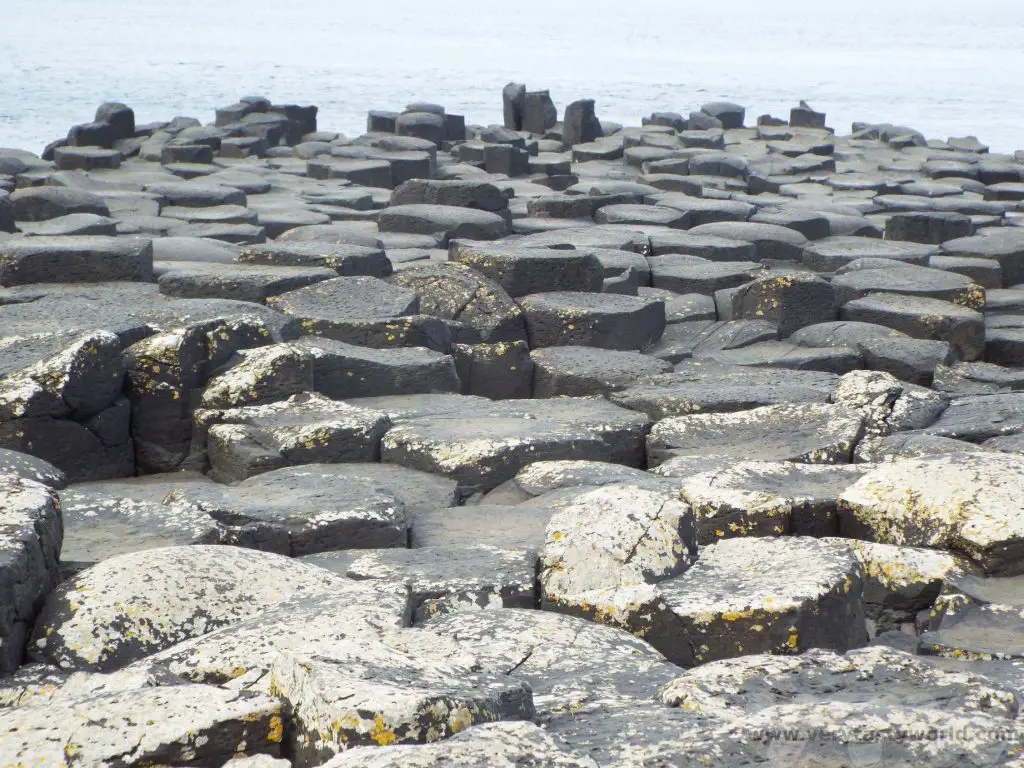
The causeway really is marvellous and, unsurprisingly, this is the most Instagrammed spot in Ireland. It’s possible to walk on the basalt columns themselves and there are a number of short hikes in the area that will take you to and from the visitor’s centre. Make sure you wear suitable walking shoes, the causeway can get slippery.
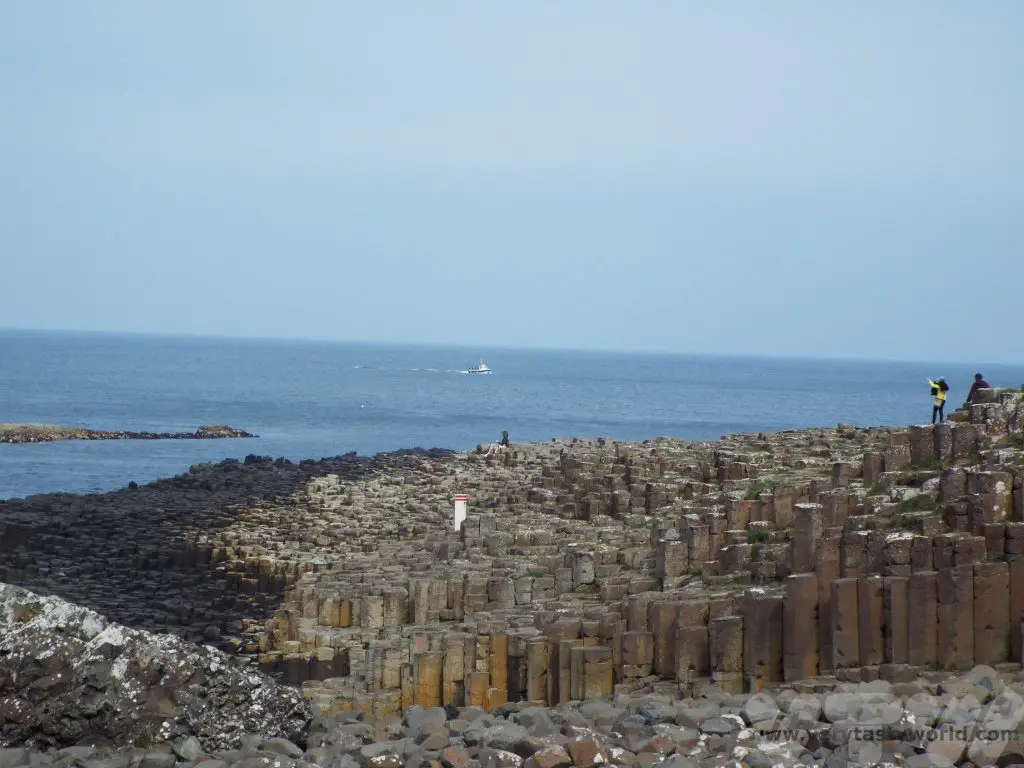
But alongside the geological wonder lies a legend. The giant of the eponymous causeway is Finn Macool who built it in order to take on rival giant Benandonner from Scotland. But Macool later learned that Benandonner was a much larger giant and would have presented a real challenge in a battle. So Finn’s wife had a very clever idea.
When they heard about the imminent visit from his rival she wrapped Finn up in baby clothes and placed him in a giant cradle. Benandonner arrived and was informed that Finn was not at home. And he was so shocked at the size of a ‘baby’ giant, he figured that the adult Macool must be enormous so he fled Ireland, destroying the causeway behind him to ensure that Finn wouldn’t follow.
Further Finn Legends
Finn was also the giant reputed to have scooped out a large portion of soil in Northern Ireland to chuck at his Scottish rival. Unfortunately he missed and it ended up in the sea, forming either the Isle of Man or Ailsa Craig. The scooped out hole in the earth became Lough Neagh.
There are all sorts of other legends about the various rock formations in the area. Finn’s giant camel, which was apparently his only form of transport when he wanted to cover long distances, can be seen on the approach to the causeway. Sadly it was turned to stone. There is most definitely a camel-shaped rock in the picture below.
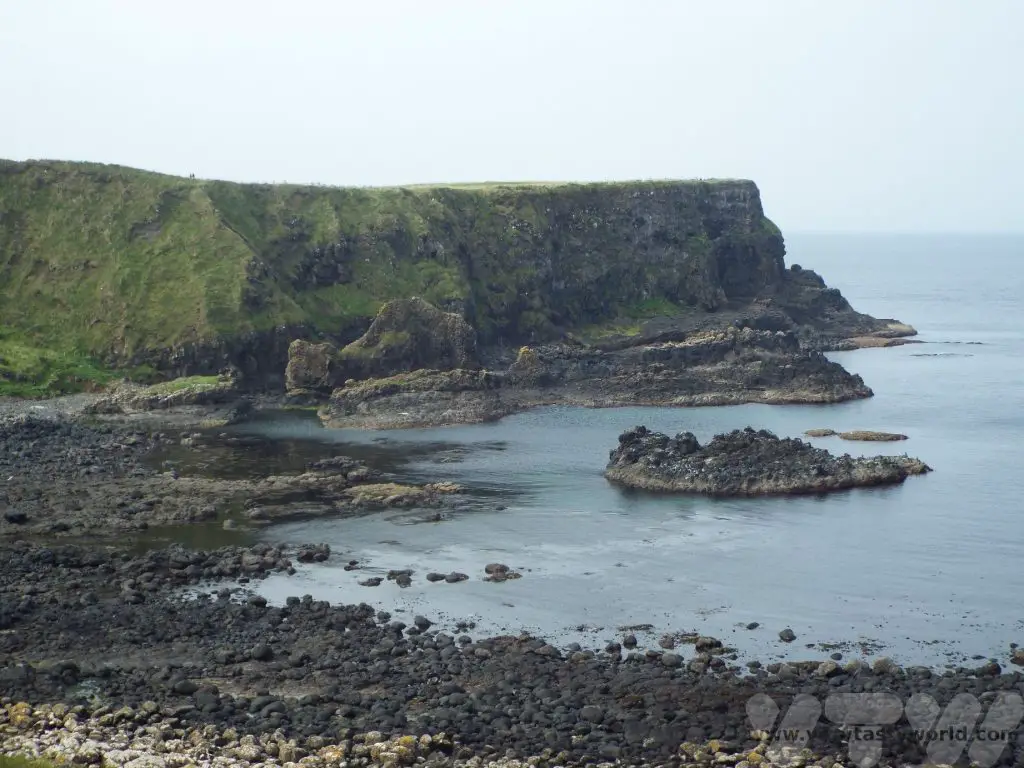
And apparently he used to play the organ – there are organ pipes on the headland overlooking the causeway, which are also basalt stacks.
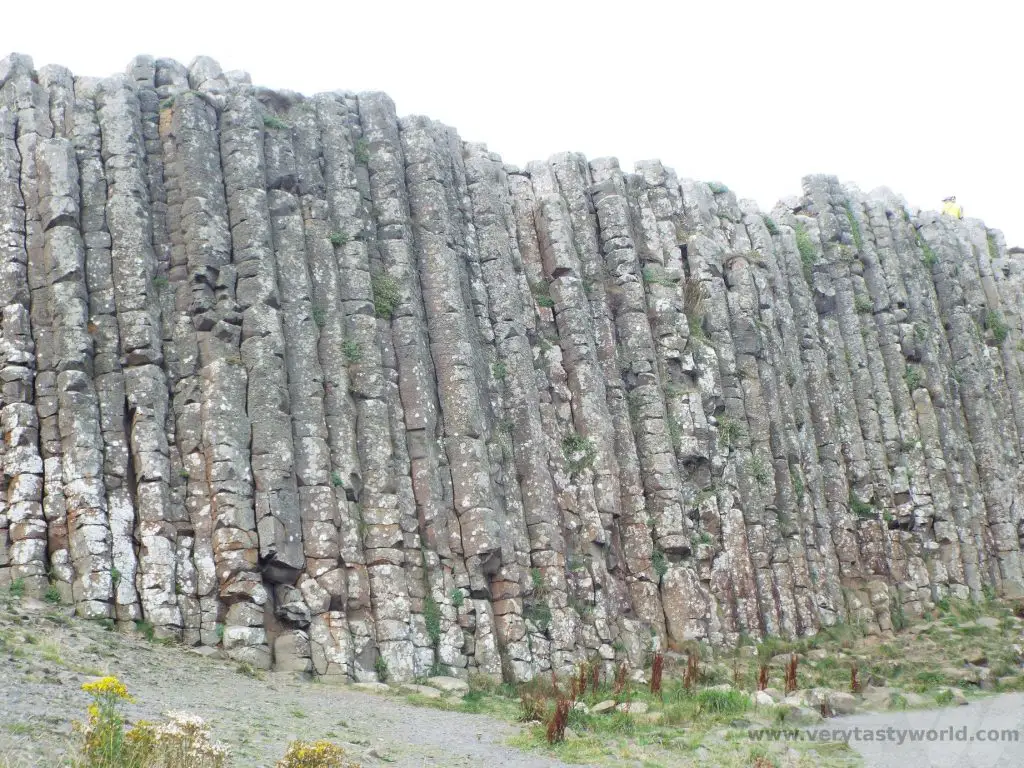
The Giant’s Causeway is a National Trust site, so members can visit and park for free. It’s advisable to pre-book tickets online, especially if you want a space at the local car park if travelling by car. The visitor’s centre has lots of information about the site and runs free guided walks for visitors – you are provided with a headset, because it can get very windy, and this ensures you can hear the commentary. We recommend a tour as the guides provide loads of geological information as well as stories of the giant’s legends.
Bushmill’s Distillery
Moving inland, Bushmill’s is Northern Ireland’s best known whiskey distillery and the oldest working distillery in the world. It dates from 1608 when King James granted a licence and is named for all the mills located on the nearby River Bush. It offers distillery tours and tastings.
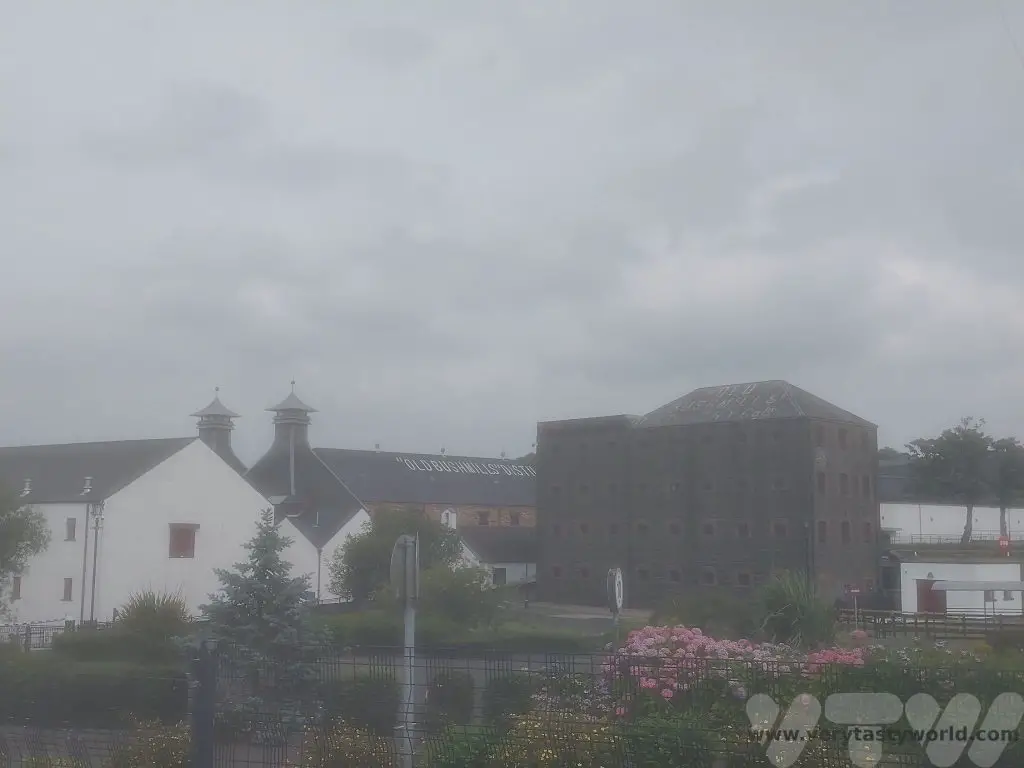
Old-Fashioned Seaside
If you’re looking for a bit of beach time, head back to the coast and then travel west to Portstewart or Portrush which are both popular locations. Portrush offers amusement parks and arcades whereas Portstewart enjoys a long beach with promenade. Portstewart also boasts Morelli’s ice cream parlour, established in 1927, which has a fantastic reputation for really good ice cream.
Derry
Continuing in a westerly direction we arrived at Derry – also known as Londonderry. It is the second largest city in Northern Ireland.
This is the only city in Ireland to have retained its original walls and is considered to be amongst the best walled cities in Europe. Walking the city walls is an essential activity in Derry.
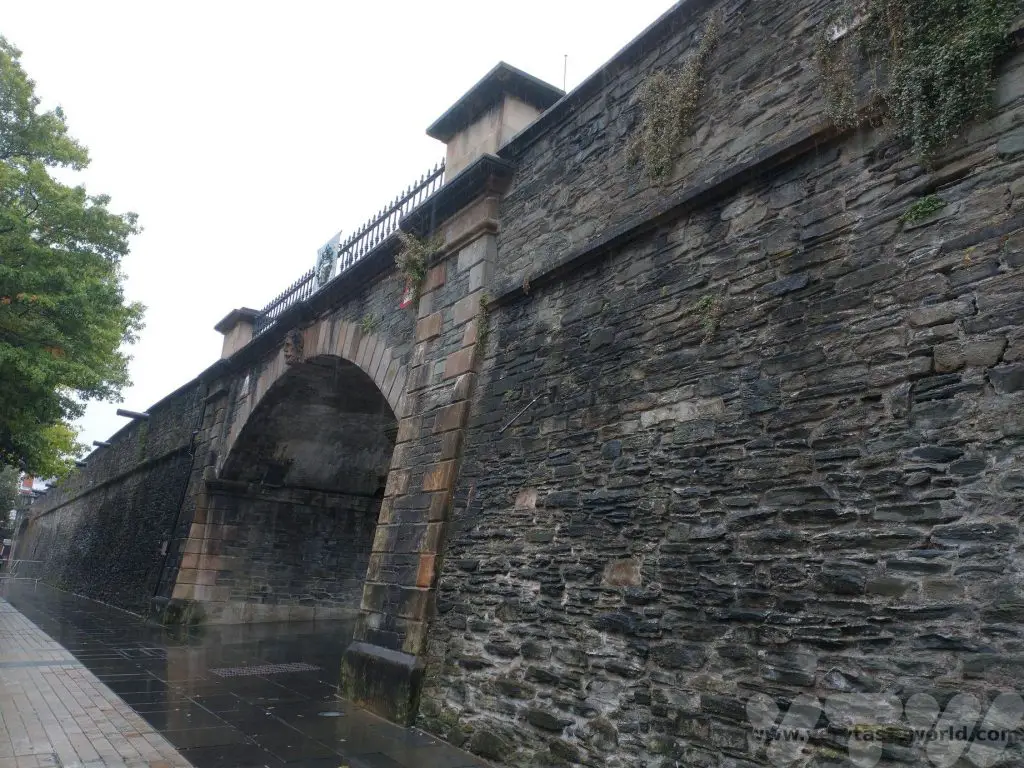
The walls were built in the 17th century by the Irish Society in order to protect the city from English and Scottish settlers. The Siege of Derry started in 1689 when apprentices locked the gates against invading forces loyal to James II. Eventually, the king himself arrived to demand a surrender but the citizens refused. The siege lasted several months and the walls were never breached – ships on the river Foyle eventually managed to get supplies to the hungry but stubborn Derry folk.
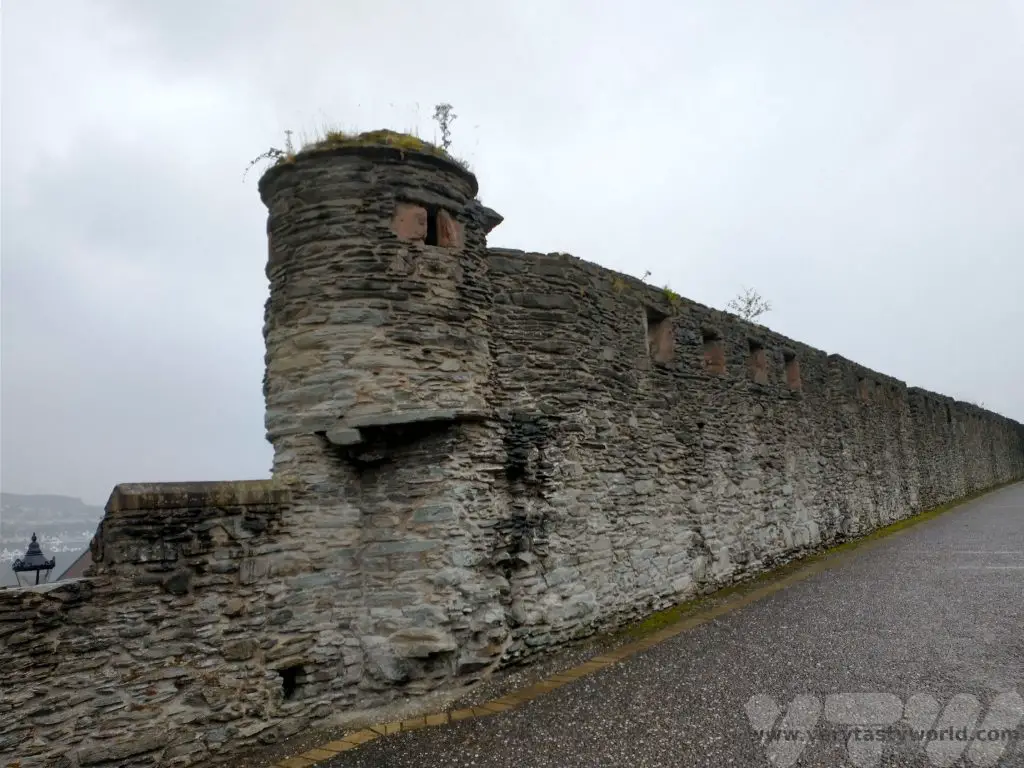
The city walls are around 1.5km in length and take around 20-30 mins to walk around. There are seven gates: Shipquay Gate, Butcher Gate, Bishop’s Gate and Ferryquay Gate are the four original gates, with New Gate, Castle Gate and Magazine Gate being added later. Many defensive cannon can still be seen.
St Columb’s cathedral is is dedicated to Saint Columba who was an Irish monk who set up a Christian settlement to the area and then brought Christianity to Scotland after being exiled from Ireland. Construction on the cathedral started in 1628 and it is the first cathedral to have been built following the Reformation in the UK.
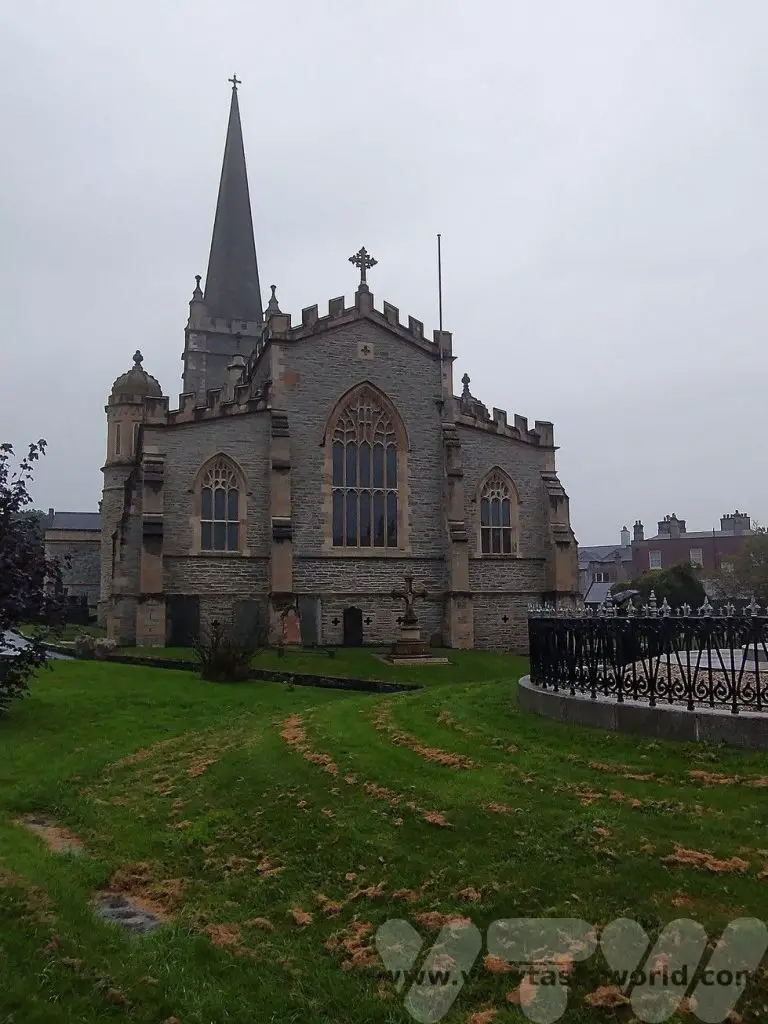
Derry’s beautiful Guildhall is where the city council meet. Completed in 1890 the design of the distinctive clock tower was influenced by the Elizabeth Tower in London, more commonly known as Big Ben (which is actually the bell of the great clock).
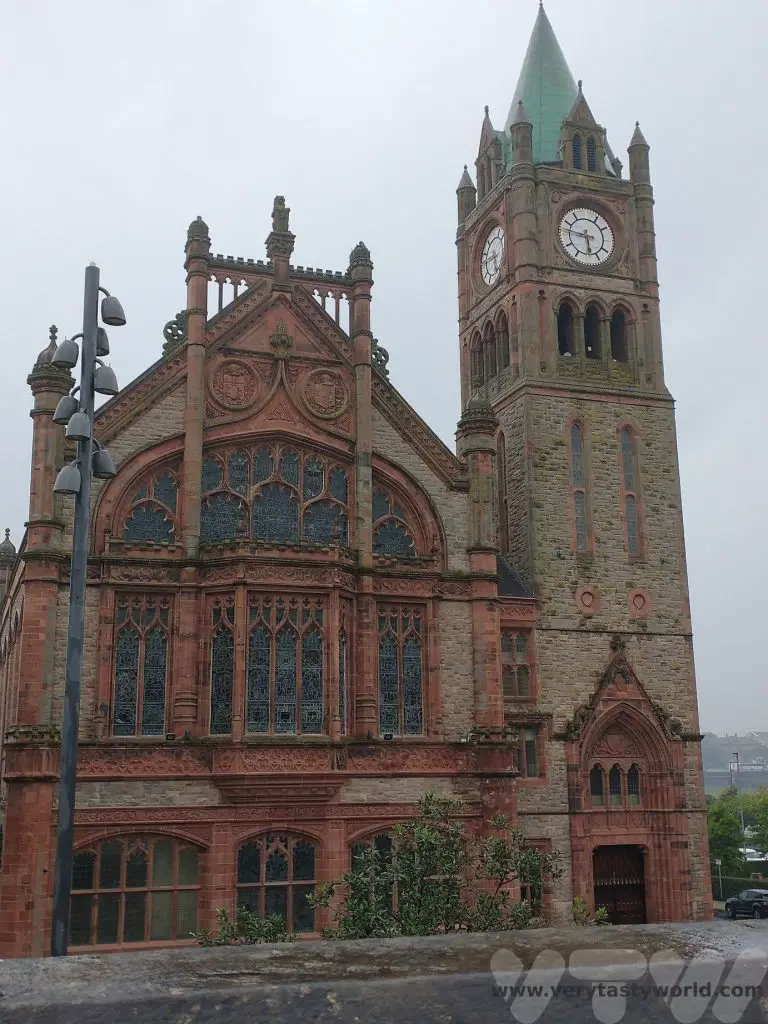
Derry has a history of sectarian tension and is the place where the conflict known as the Troubles began. The Battle of the Bogside took place in 1969 and this area was also the location of the Bloody Sunday incident in 1972. The Museum of Free Derry is dedicated to the struggle for civil rights in the region in the context of the creation of Free Derry in the 1960s and 1970s.
The street art has a political edge.
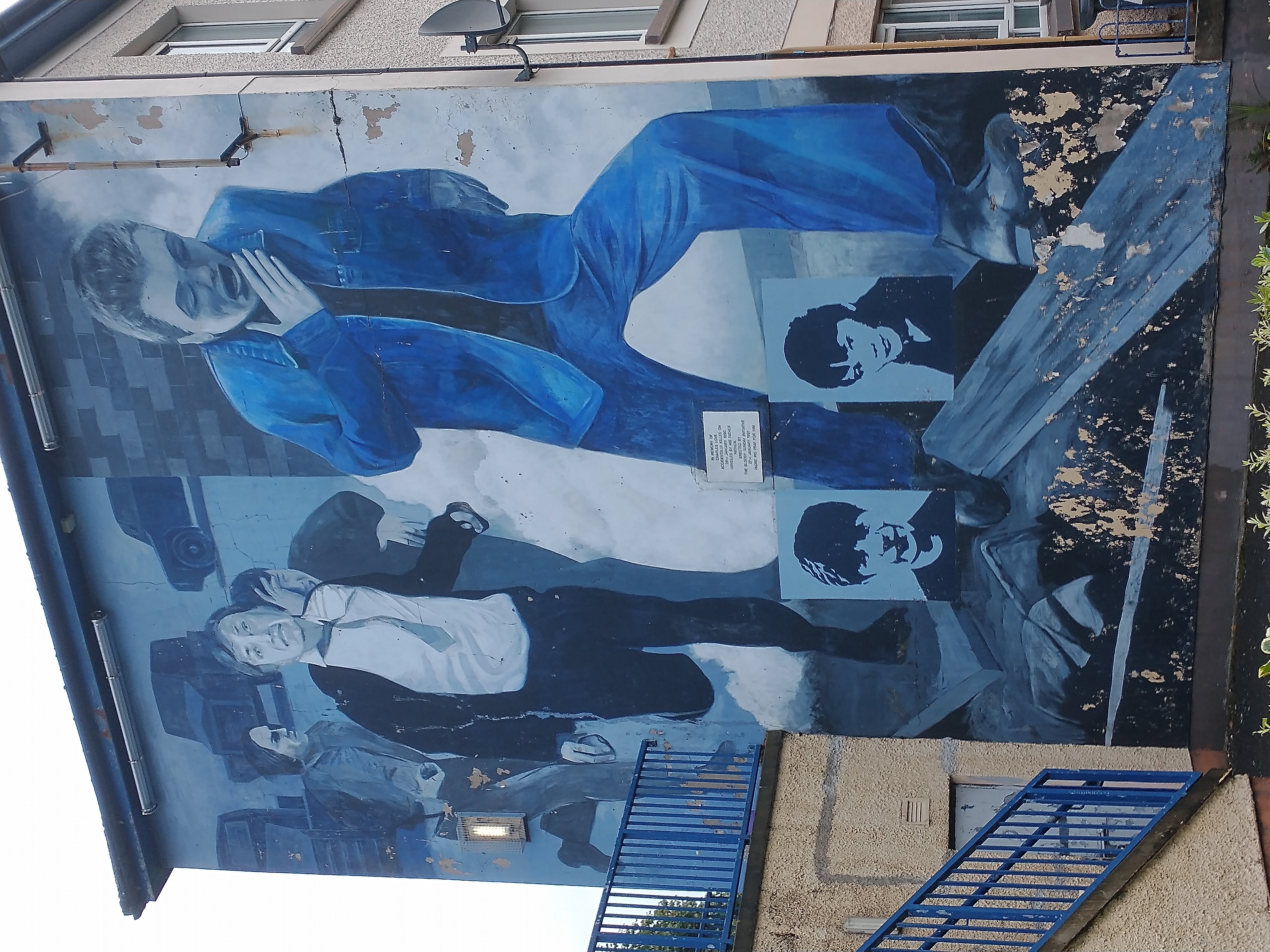
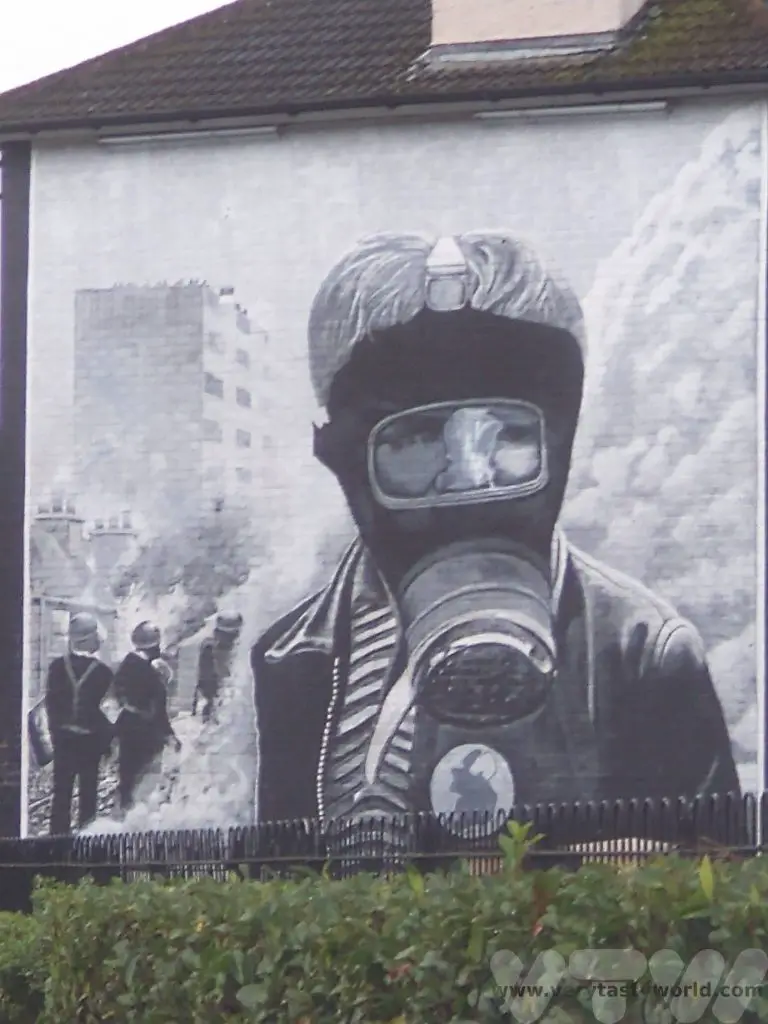

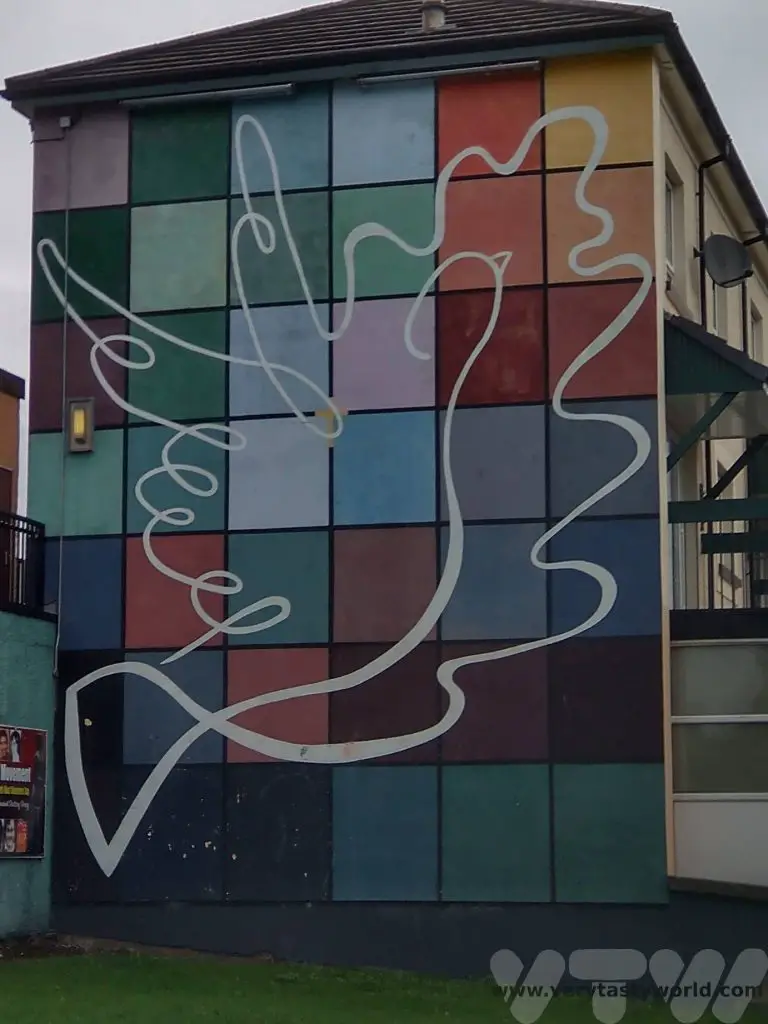
Free Derry corner is a landmark in the Bogside area where nationalists declared an autonomous area in the 1960s and 70s. Originally graffiti on the gable wall of a terraced house, the houses were demolished in later years but the wall remains.

The Good Friday Agreement in 1998 ended a significant amount of the violence associated with the Troubles. It acknowledged that that the majority of the people of Northern Ireland wished to remain a part of the United Kingdom and that a substantial section of the people of Northern Ireland, and the majority of the people of the island of Ireland, wished to bring about a united Ireland.
The Derry Peace Bridge was opened in 2011. It’s a bicycle and footbridge which crosses the River Foyle and links the Waterside area, which is mainly unionist, with Cityside, which is largely nationalist.
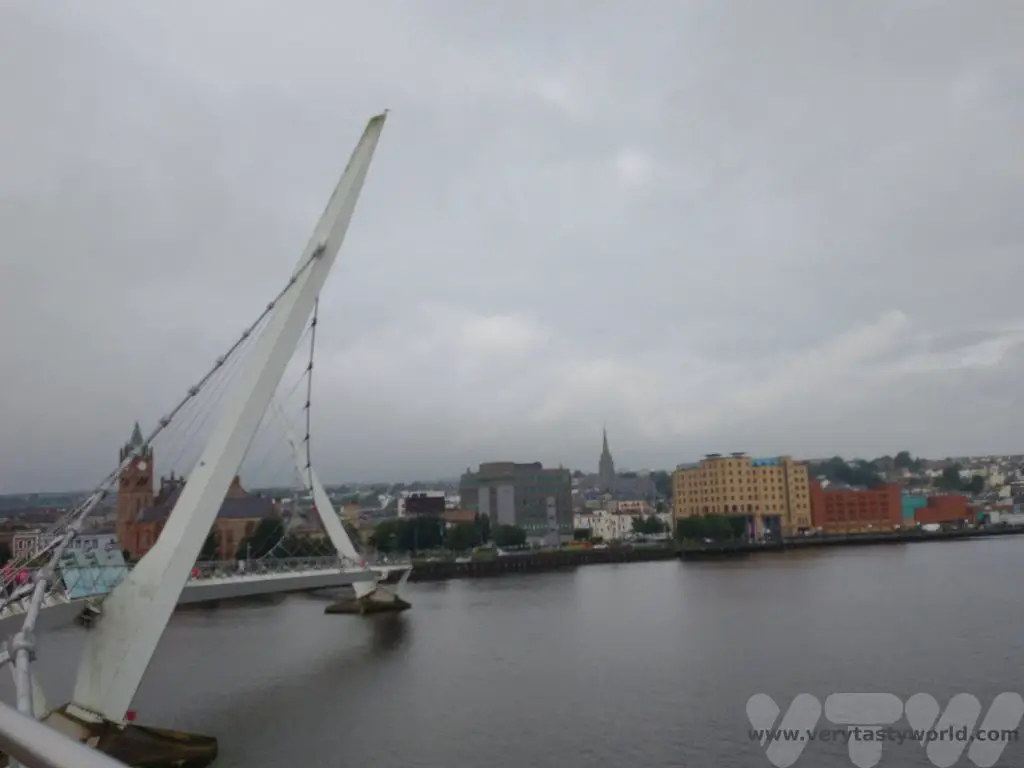
Browns in Town
A recommendation for foodies is Browns in Town, a sister restaurant to the fine dining establishment Browns Bonds Hill, a Michelin-starred restaurant with an excellent reputation. Located on Strand Rd, Browns in Town offers modern Irish cuisine – fine dining at exceptional prices. We enjoyed pan seared scallops with smoked beef, celeriac and a red wine jus, a pork wellington with jus, and pressed beef, served with a side order of champ – an Irish dish comprising creamy mashed potato with spring onion (and lashings of delicious butter).
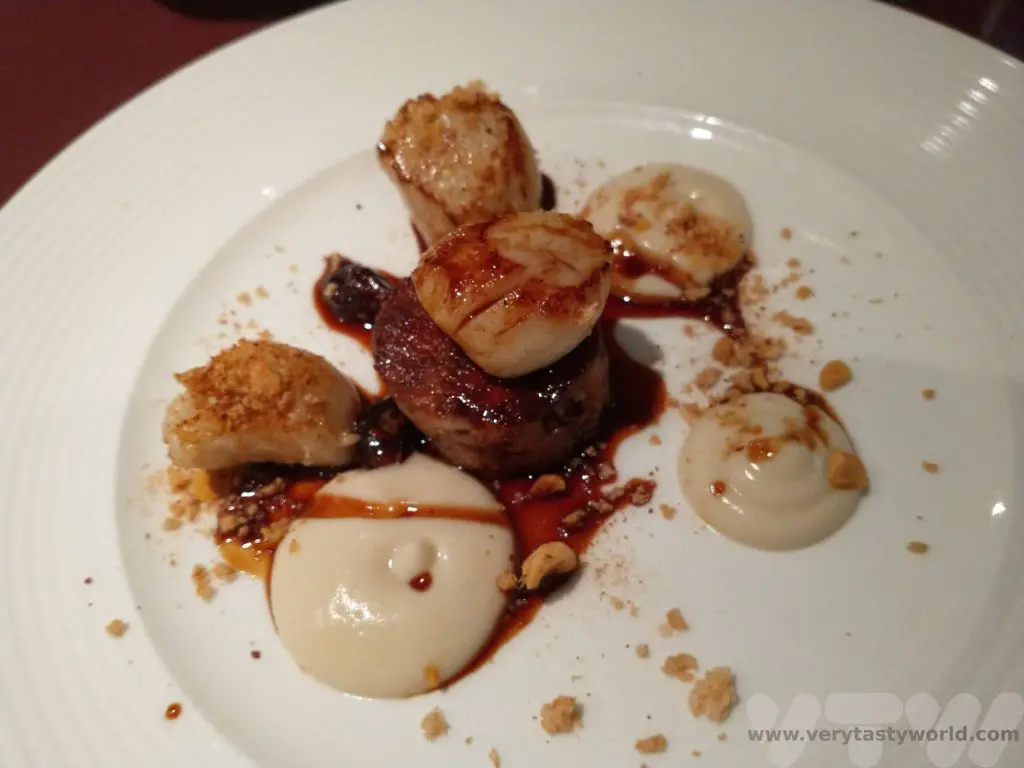
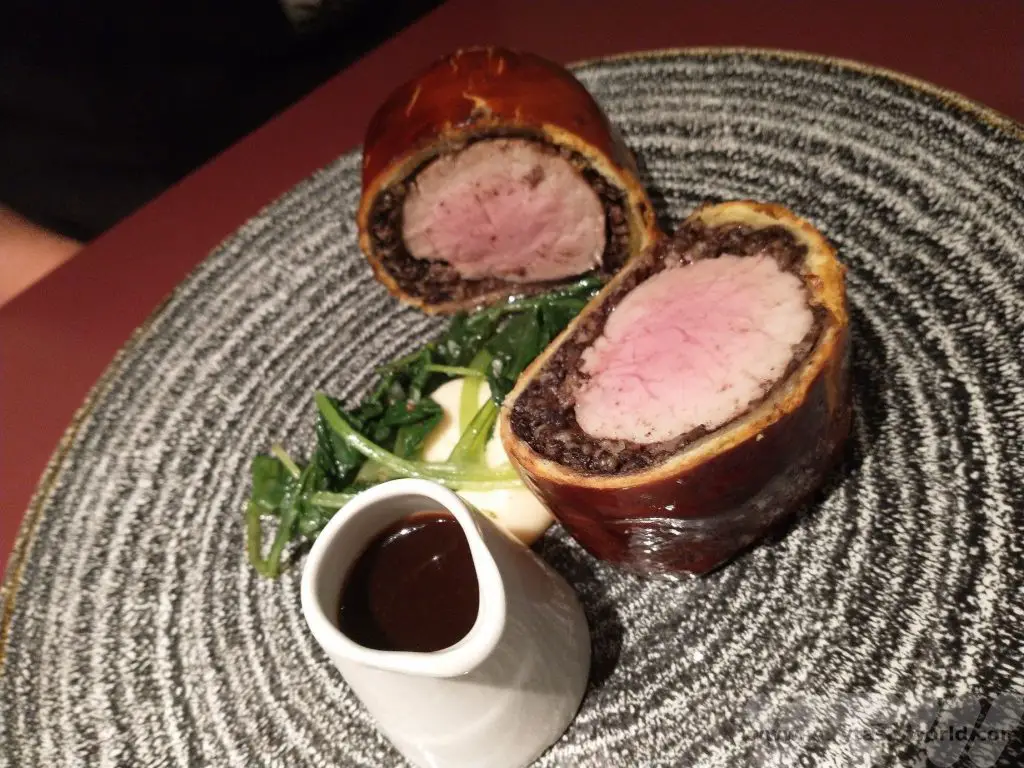
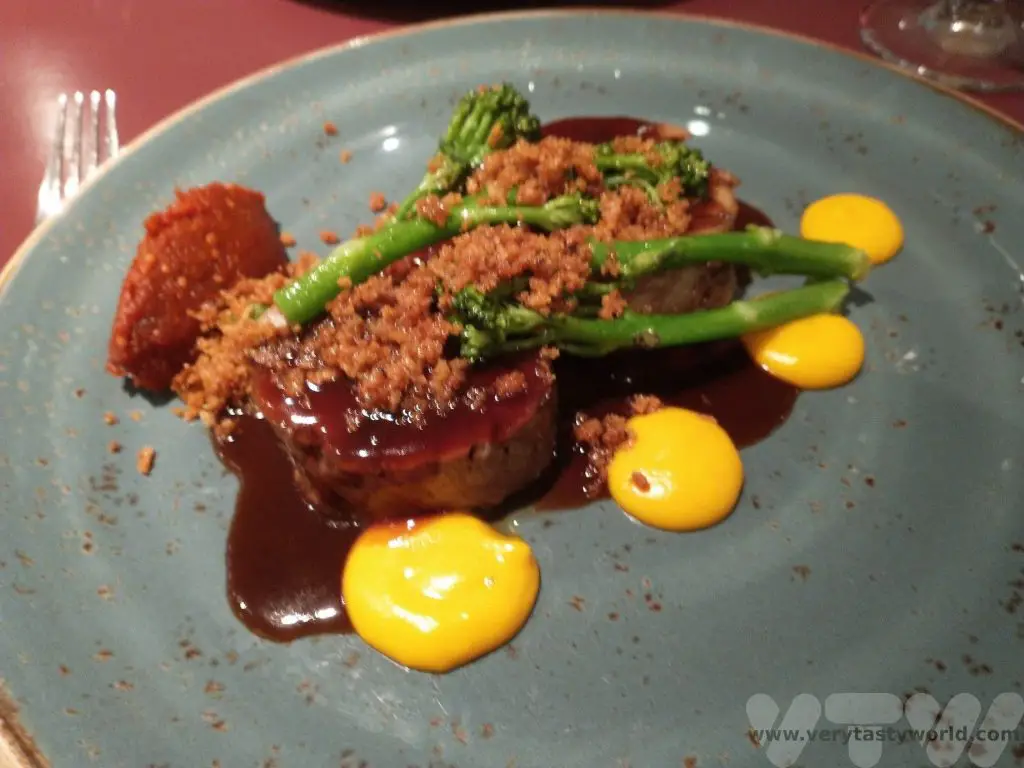
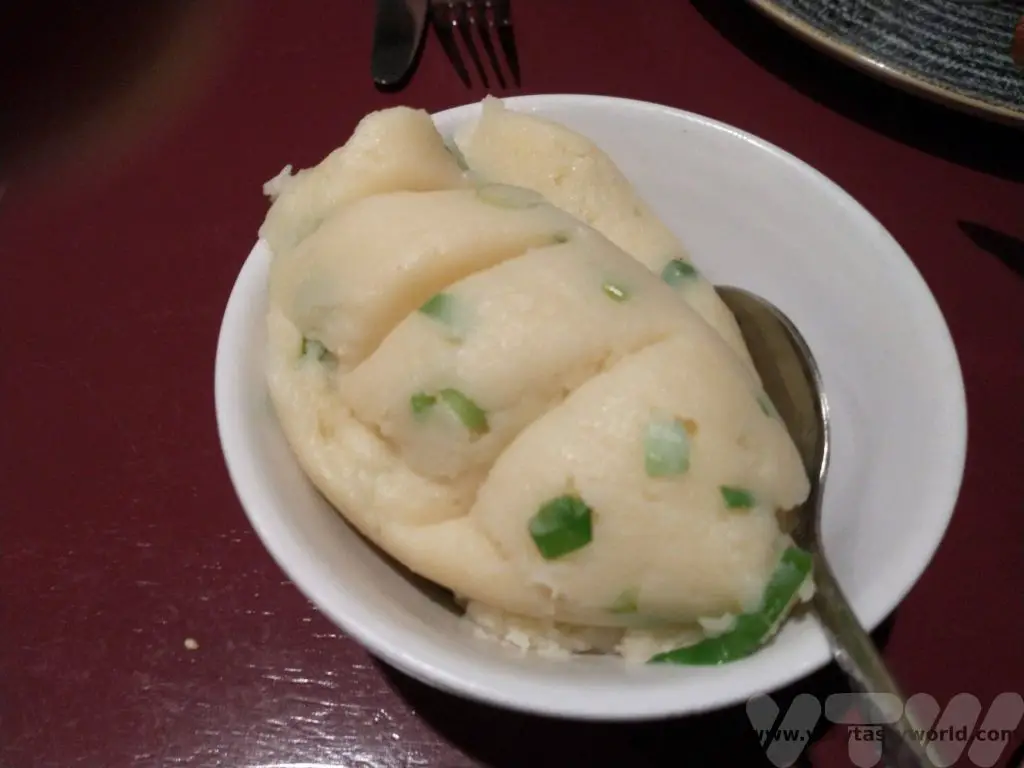
We visited Northern Ireland as part of a longer road trip where we also followed much of the Wild Atlantic Way in the Republic of Ireland. We can highly recommend this beautiful area with its very friendly people as a great place to enjoy a few days.
Belfast is just a couple of hours’ drive from Dublin. This blog post by faheyjamestravel has a list of things you can do there.

RECIPE: Biryani Raita Recipe
There are many cuisines around the world that use yoghurt-based dips or sauces to accompany particular dishes. Tzatziki is a Greek dish which incorporates cucumber and herbs into a Greek yoghurt. Salatat Khyar is an Arabic salad which is similar to tzakziki in that it uses cucumber and mint with the yoghurt but can be eaten as a standalone salad. And then there’s raita, often used in Indian cuisine as an accompaniment to ‘cool’ the spiciness of a main dish. This biryani raita recipe is simplicity itself to make and really delicious.
Yogurt is ideal to counteract the heat of chillies in any dish it accompanies. There’s a protein called casein which is found in dairy products. It binds to the active component of chillies which is called capsaicin and is the main cause of the burning sensation in the mouth. The casein helps soothe the burn. If you eat a spicy chilli, a drink of milk will help quash the heat far better than water.
(The combination of chilli and cheese in Bhutan’s national dish is cleverly designed to be spicy but the intense heat is tempered by the cheese.)
Raita uses cucumber but it can also have other vegetables such as onion and carrot, often diced. This dish can easily be adapted to incorporate different vegetables or even spices. If you wanted to add a warm earthiness, chuck in a teaspoon of cumin. Or add a touch of fire with a teaspoon of chilli or paprika. Harissa is a nice addition for a Middle Eastern dish. Similarly, you can vary the herbs – mint is a lovely alternative to the coriander or you can just add both in.
Our biryani raita is fantastically flexible in accompanying so many different types of dish.
Biryani Raita Recipe
Ingredients
3 heaped tbs plain natural yoghurt
2 garlic cloves (use 1 if you’re not so keen on garlic or are planning on kissing someone later on in the day)
Juice of half a lemon
Half a cucumber
2 spring onions (green onions)
Bunch of coriander/cilantro (mint also works really wall, or combine the two)
Pinch of salt. We particularly like crystal salt rather than table salt
Method
Grate the cucumber.
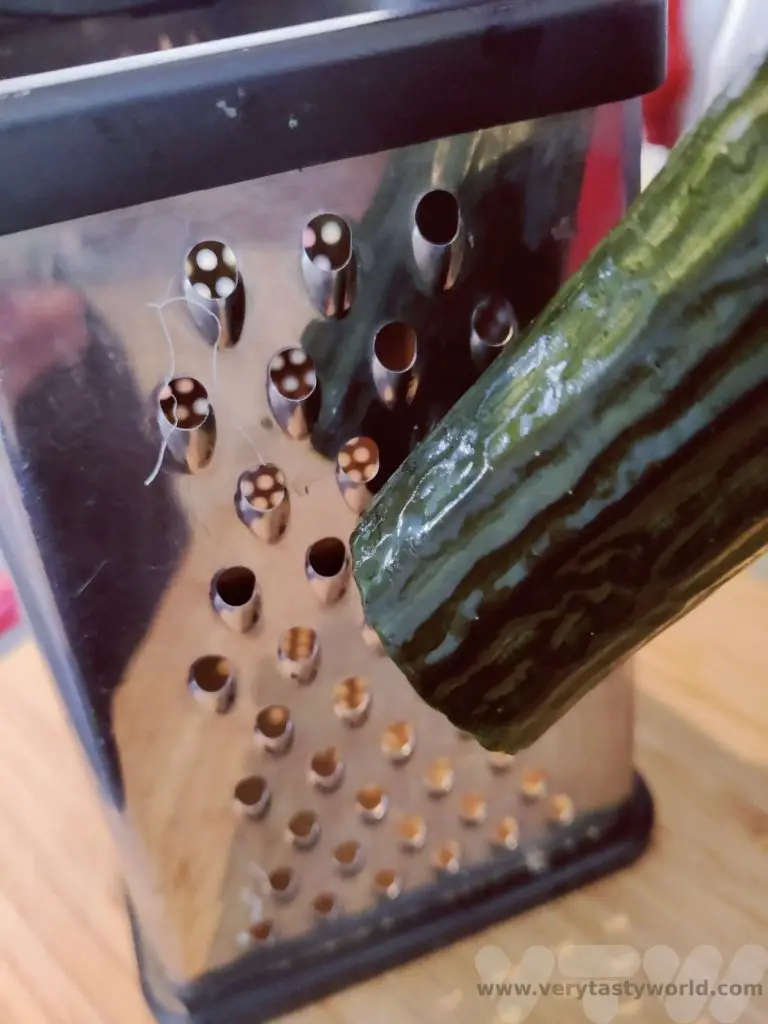
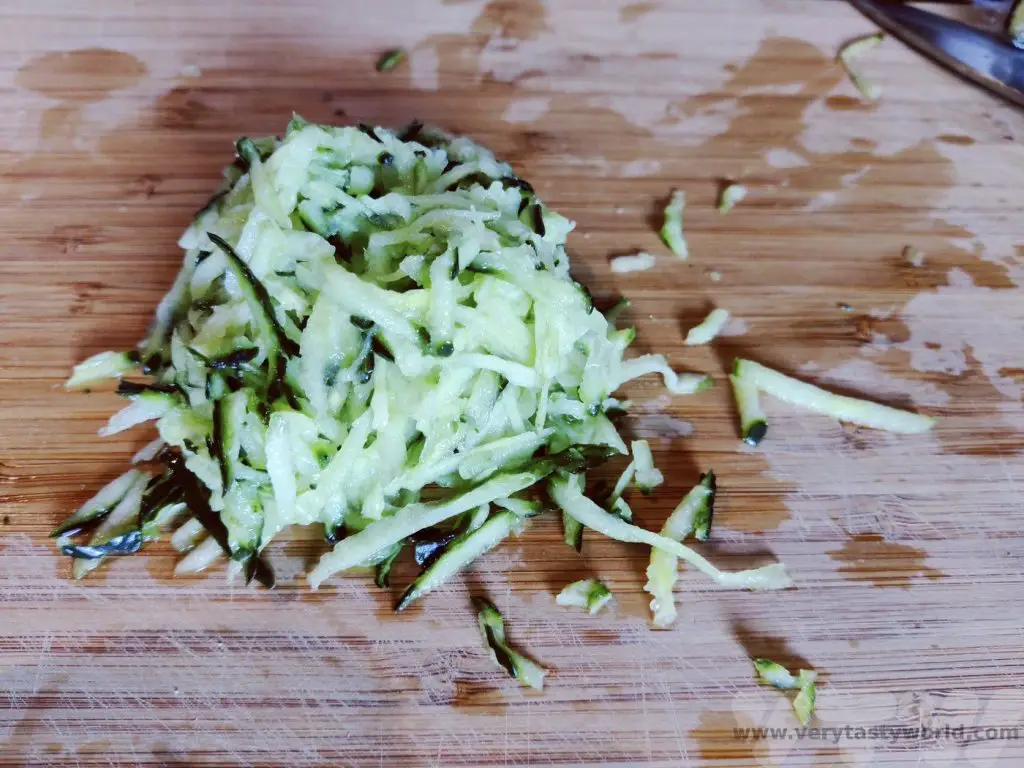
Gather up grated cucumber and squeeze the water out.
If you wish you can wrap the grated cucumber in a tea towel to absorb the rest of the water. It’s important to get as much water out of the cucumber as possible to avoid the raita becoming watery.
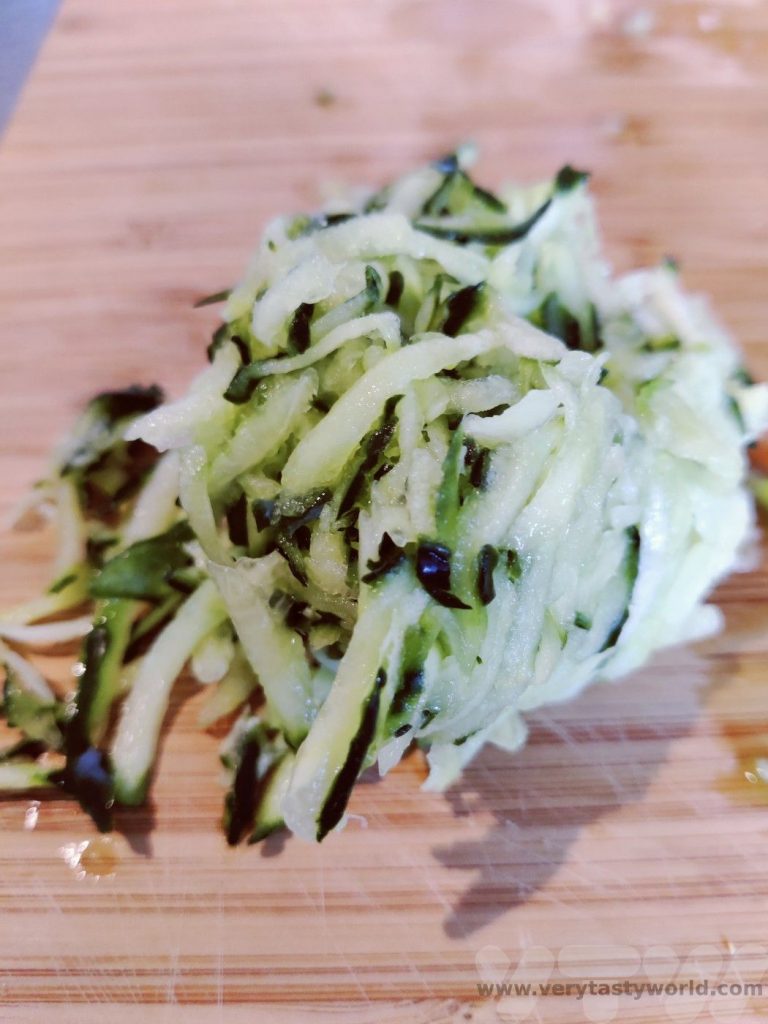
Finely chop the spring onions and coriander.
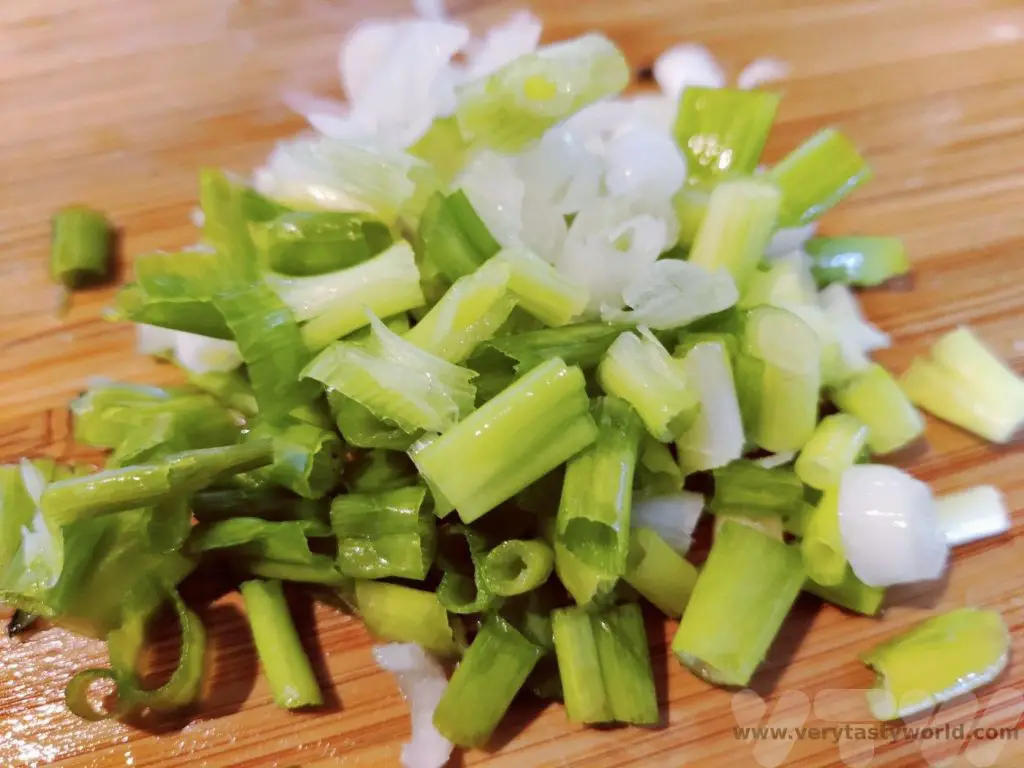
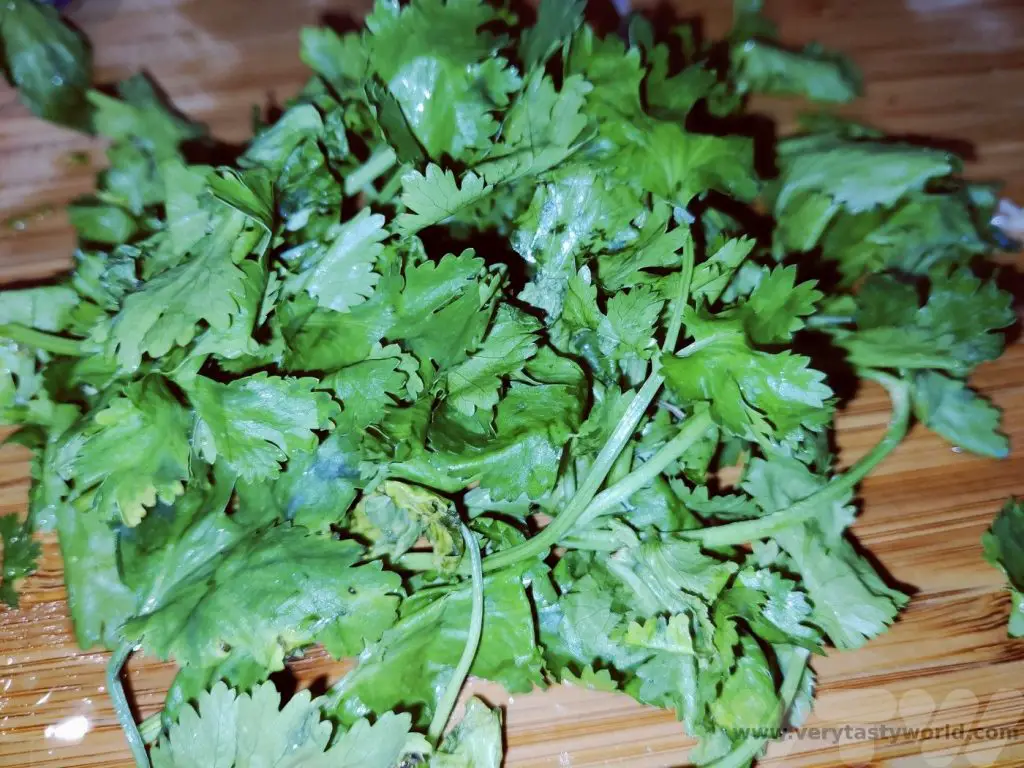
Place yoghurt in a bowl. Add the cucumber, spring onions and coriander.
Grate the garlic into the bowl – we find that a microplane grater is perfect for this. Our you could use a standard garlic press.
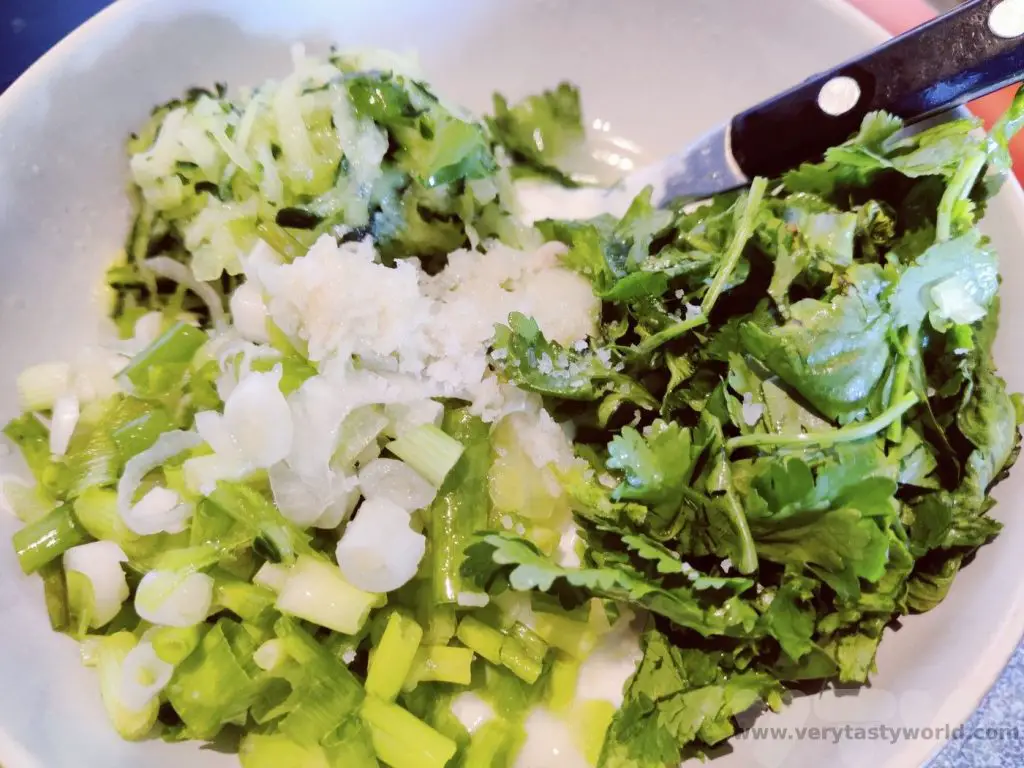
Squeeze the lemon to extract its juice, making sure that none of the pips end up in the mixture, and add the salt.
Mix together.
Ready to serve.
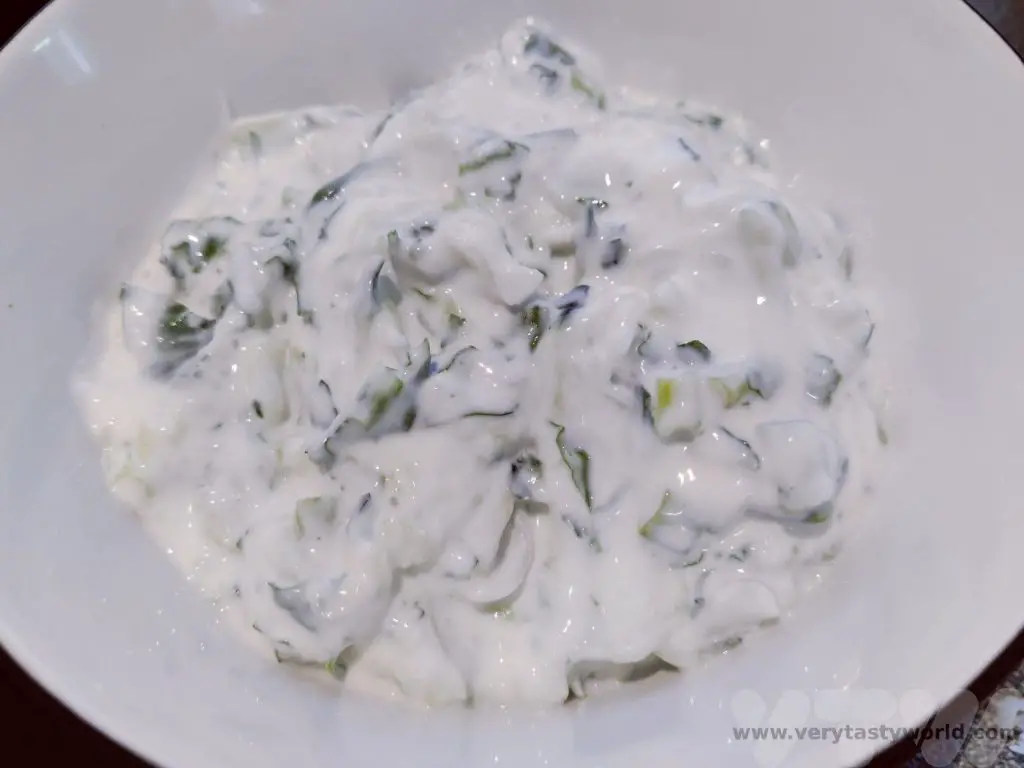
This works brilliantly to accompany a biryani, and cool it down if it’s particularly chilli hot.
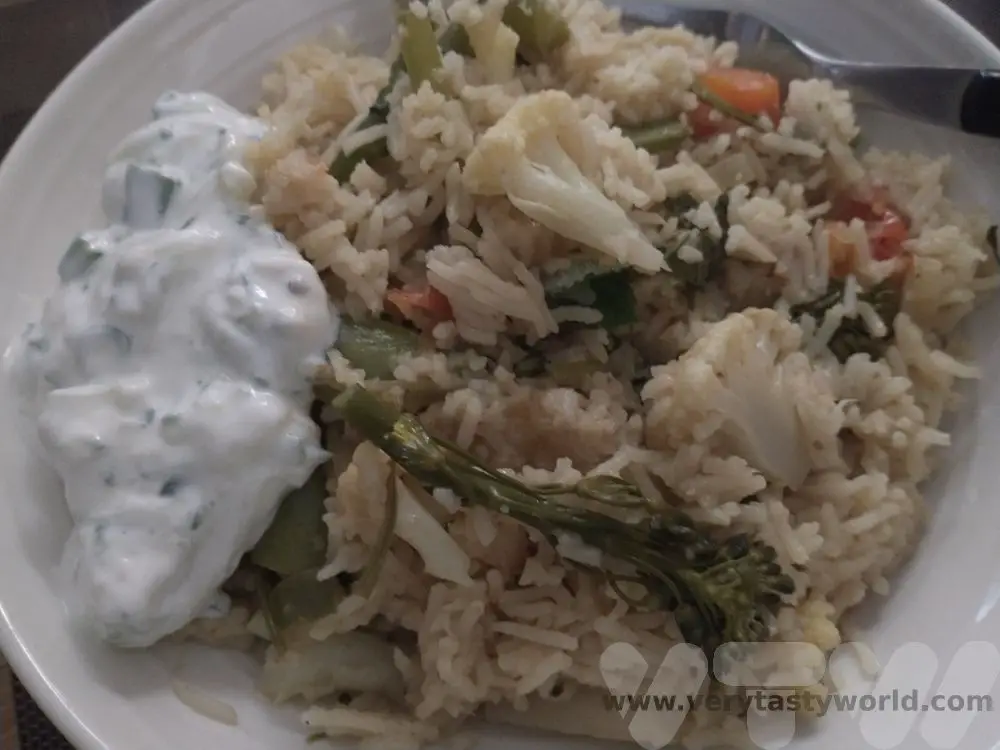
Or a delicious dollop as a great accompaniment to felafel in a wrap.
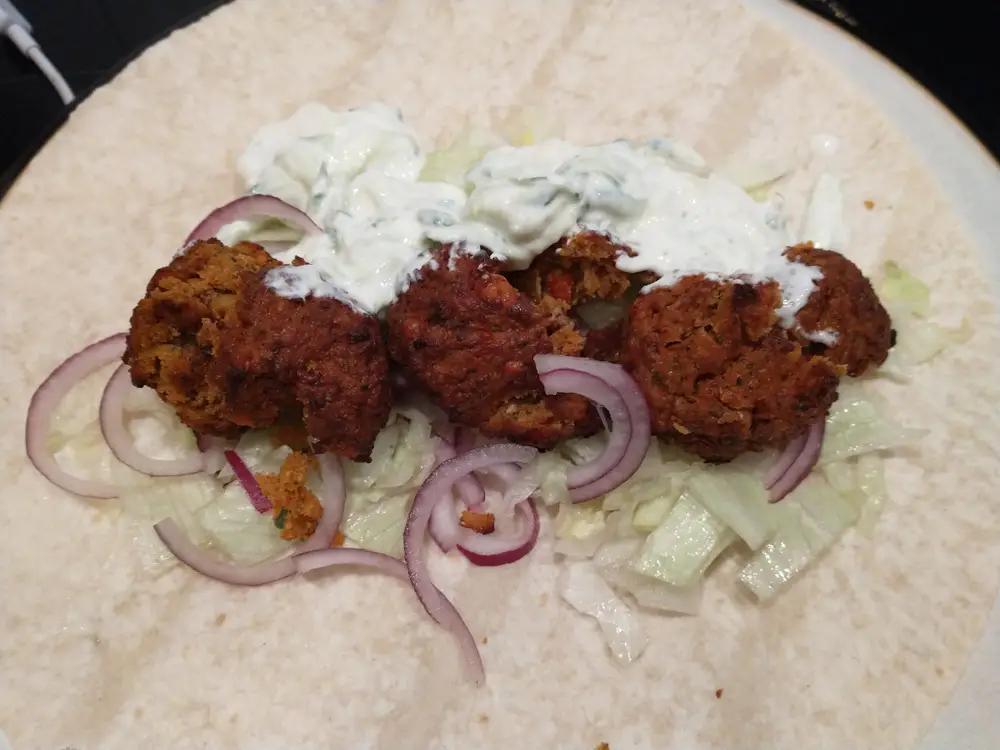
Or to accompany a Middle Eastern mezze. Here with home-made dolma (stuffed vine leaves), baba ganoush (aubergine dip) and tabbouleh (cous cous herb salad).
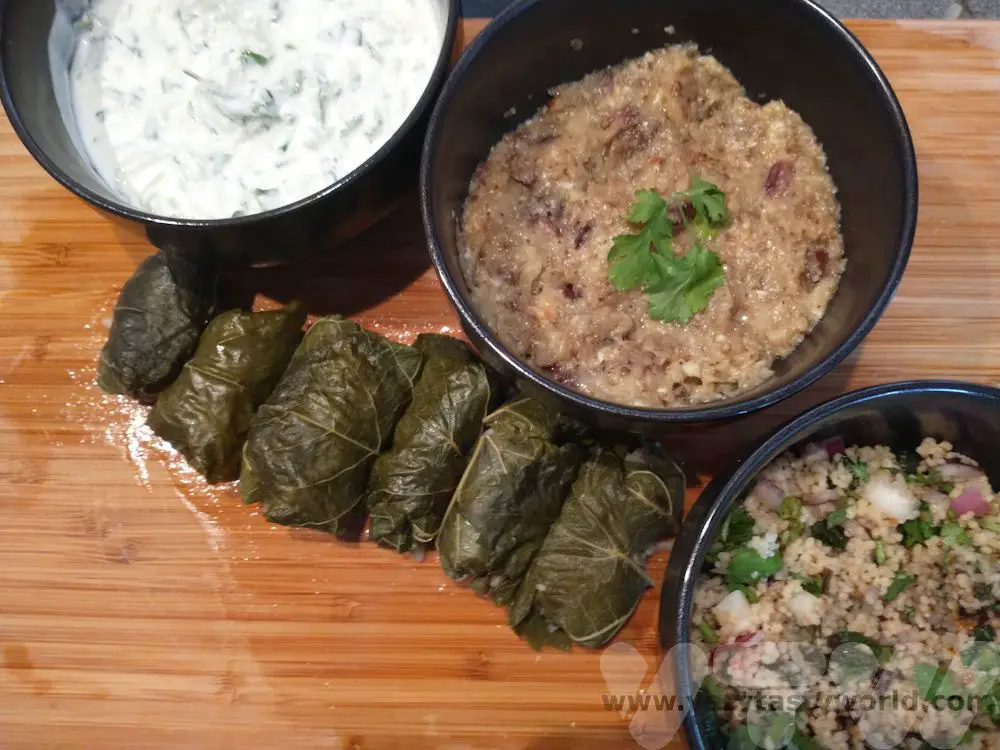
Related Posts You May Enjoy

- RECIPE Oyakodon Donburi
- Zero Waste Recipes Before Your Holiday
- RECIPE: Vegetable Biryani Tamil Nadu Style
- RECIPE: Vegan Wild Garlic Pesto
- Recipe: Venetian Pasta Sauce
- RECIPE: Biryani Raita Recipe
- RECIPE: How to Make Costa Rica’s Gallo Pinto
- Recipe: Japanese Simmered Pork Belly – Buta no Kakuni
- RECIPE: How to Make Umeboshi

The Makanai: Cooking for the Maiko House
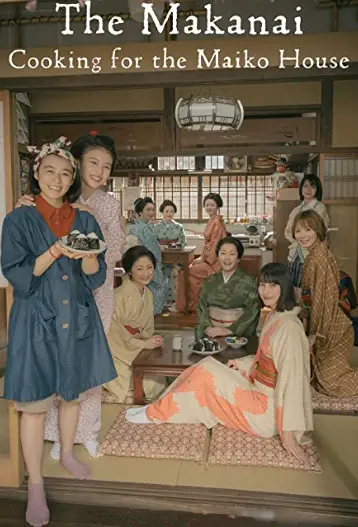
Director: Koreeda Hirokazu(是枝 裕和)
From the manga by Aiko Koyama
Starring: Nana Mori,Natsuki Deguchi,Aju Makita
Cuisine: Japanese
Country (of film origin): Japan
TV Rating: 9/10
Foodie Rating: 9/10
Review: Cuisine and culture combine in an emotional and educational entertainment about Kyoto life, friends, futures and food.
There’s a line in anarchic 80s British TV show The Young Ones when punk student Vivyan, talking about a TV show, yells, “It’s so bloody nice!” Whereas his character despised feelgood TV, you just can’t help falling for the voie de vivre while watching The Makanai, a charming and quite delightful Netflix series. Based on the manga Kiyo in Kyoto: From the Maiko House by Aiko Koyama, the teleplay is written and partly directed by Koreeda Hirokazu, whose Palm d’Or winning film Shoplifters ( 2018) takes a very different perspective on food and society.
Kiyo Nozuki (Nana Mori) and Sumire Herai (Natsuki Deguchi) are two best friends from Aomori prefecture who leave the cold northern region of Japan to become maiko in Kyoto. Maiko are apprentice geiko (the Kyoto term for geisha) and the sixteen year olds will join the Saka establishment and train in the arts of traditional singing and dancing. This is a whole new world for the pair as they need to learn the etiquette and the correct way to address their superiors and other maiko in their house – the geiko are ‘mother’ and their maiko companions are referred to as ‘sister’. It’s hard work and the daily routines preparing for the coveted roles are tough as they train and practice new skills.
In fact, it’s so tough that Kiyo just can not meet the requirements of the training and the mothers sadly inform her that she will not become a maiko. However, they recognise that she is a hard worker and a great cook, so Kiyo stays in the maiko house to become a worthwhile addition to the business as a makanai. It is her job to purchase all the food and prepare delicious meals for the household. So she dedicates herself to getting up early in the morning to embark on shopping trips to familiarise herself with market vendors so that she can obtain the necessary ingredients.
It is fortunate that her grandmother taught her to cook because the plethora of delicious dishes that Kiyo can produce is awesome in its variety and each meal looks utterly delicious. Fortunate for foodie viewers the creation of these dishes is shown in vignettes which will not only have your mouth watering, they will provide lots of inspiration for future recipes.
And so we follow Sumire’s journey as she becomes a talented apprentice with huge potential to progress to becoming a respected maiko and Kiyo, who could have been immensely jealous of her friend’s success, is unwaveringly supportive and genuinely happy in her new role.
Traditional events, integral to Kyoto culture and cuisine, are depicted through the whole series. Perhaps the most significant event occurs in episode seven by which time Kiyo is fully established as the makanai. The geiko and maiko ladies start the new year by attending a formal ceremony. But Sumire falls ill and loses her appetite, and it is down to Kiyo to cook up some comfort food. She is advised to produce a traditional Kyoto based remedy – udon noodles in broth – which requires distinct ingredients and implementation that the exceptional cook must learn to create.
Her regular market proprietors advise on the best venues in obscure parts of town to get the required ingredients to make an exemplary dashi (broth). A prodigious bonito flake creator marks the beginning of her quest and an exemplary kombu (kelp) nori (seaweed) producer introduces her to perfectly dried sheets of seaweed. This is as much a learning experience for the viewer as it is for our protagonist, although we can but dream of such delicacies.
The Makanai: Cooking for the Maiko House is a series unlike anything you have ever seen before. It is so full of companionship and understanding you genuinely take delight in the niceness portrayed; it’s as sweet as some of the immaculate desserts that Kiyo creates. When a series makes you want to have a delicately shaped egg sandwich and deep fry the crusts for an additional snacky surprise you know you have seen something different and delightful.
This is also a show about food and cookery in that the creation of the meals are an important element the story. And therein lies the show’s only real problem – you want there to be an ingredients list before each episode so you can make the dish afterwards. We’re definitely going to try some of the goodies that the maiko enjoyed. Be warned though – make sure you eat before watching or face inevitable pangs of hunger…
Related Posts You May Enjoy
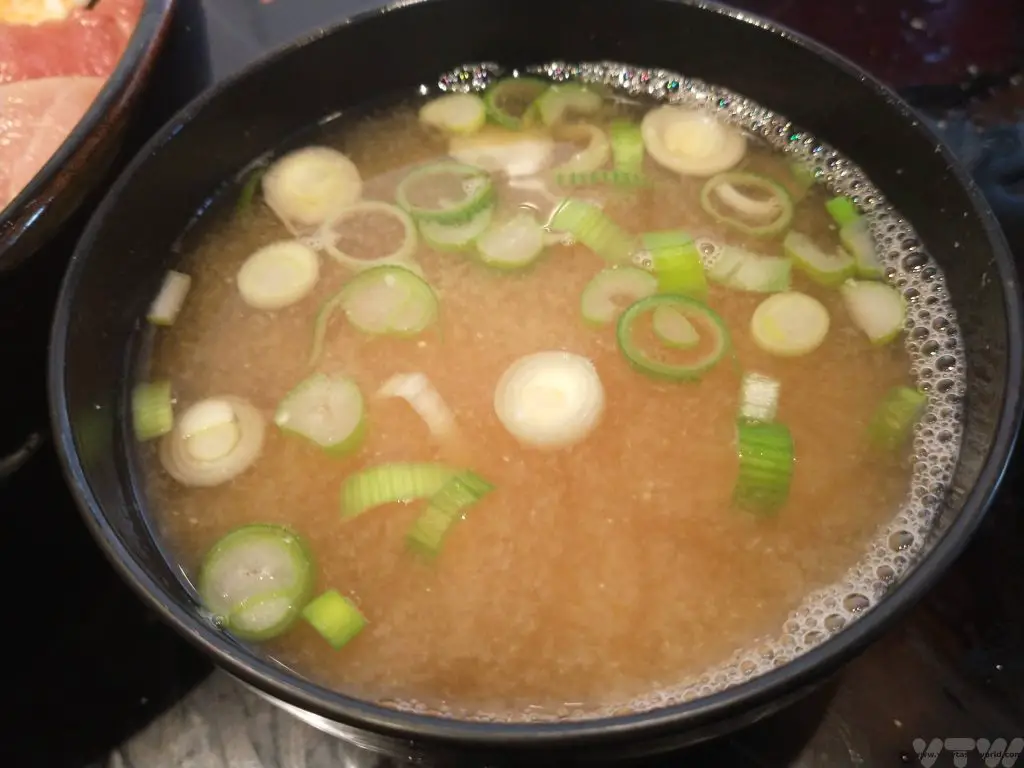
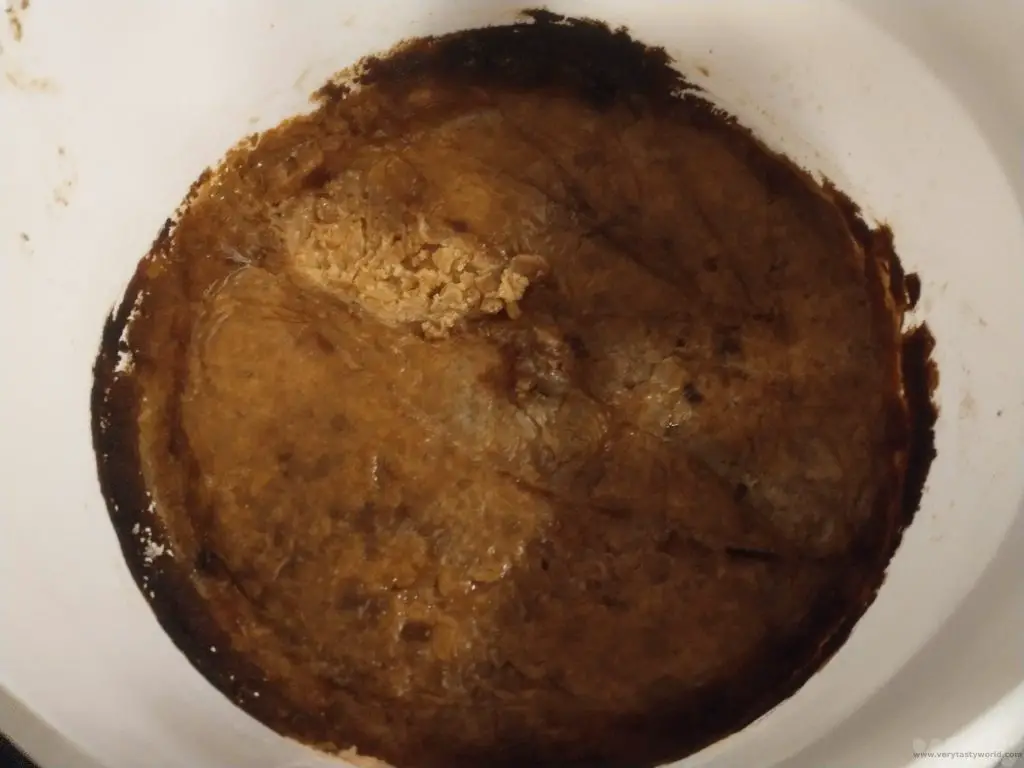

- The Makanai: Cooking for the Maiko House
- Film Review: Bao (2018)
- Film Review: Jadoo (Kings of Curry 2013)
- Film Review: Ramen Girl (2008)
- Film Review: Nina’s Heavenly Delights (2006)
- Film Review: Chocolat (2000)

- RECIPE Oyakodon Donburi
- Zero Waste Recipes Before Your Holiday
- RECIPE: Vegetable Biryani Tamil Nadu Style
- RECIPE: Vegan Wild Garlic Pesto
- Recipe: Venetian Pasta Sauce
- RECIPE: Biryani Raita Recipe
- RECIPE: How to Make Costa Rica’s Gallo Pinto
- Recipe: Japanese Simmered Pork Belly – Buta no Kakuni
- RECIPE: How to Make Umeboshi
A Visit to Bhutan’s Punakha Dzong
Punakha Dzong is both the second oldest and second largest dzong in Bhutan and is of huge historic and cultural importance to the Bhutanese people. It was the site of the former capital of Bhutan before the administrative centre moved to Thimphu in 1955. It is the location for one of the many festivals in Bhutan that are held throughout the year.
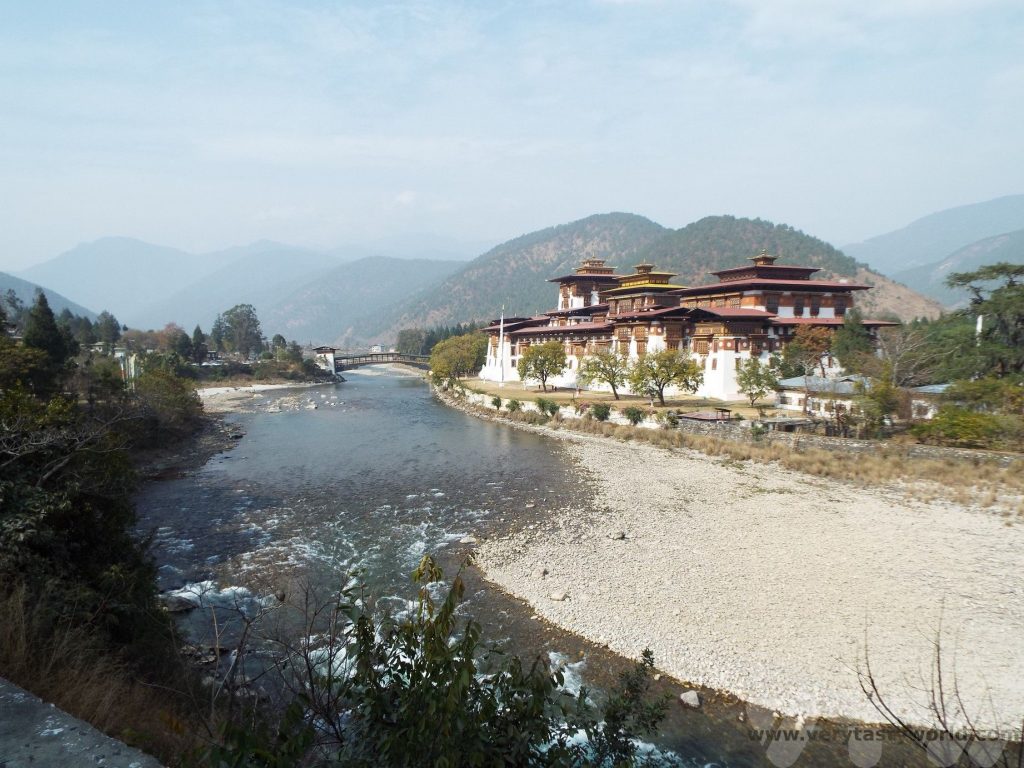
Getting to Punakha
When travelling in Bhutan independent travel is not encouraged and the government set a minimum daily price for visitors. When we visited there was a high season and low season and prices varied accordingly. The costs included transportation, accommodation, a driver and guide, and meals. Some of the money raised is used by the government as part of a sustainable development fund for education and healthcare for the Bhutanese people.
However, since Bhutan opened up following the pandemic, the minimum price has increased significantly, and the tourism fee is charged on top of the travelling expenses.
We were shown this amazing country by our delightful guide Dawa and driver-extraordinaire Tring. Punakha is located east of Bhutan’s capital and it takes around three hours to drive from Thimphu.
One thing that you get used to about driving through Bhutan is that the roads are rarely straight – they will wind their way up the mountain passes through multiple hairpin bends and then wind their way down. It’s a lovely way to travel although we were told that some visitors can occasionally suffer a degree of travel sickness.
On the way we crossed the Dochula Pass, at an altitude of 3100m, which offered wonderful views of the surrounding mountains.
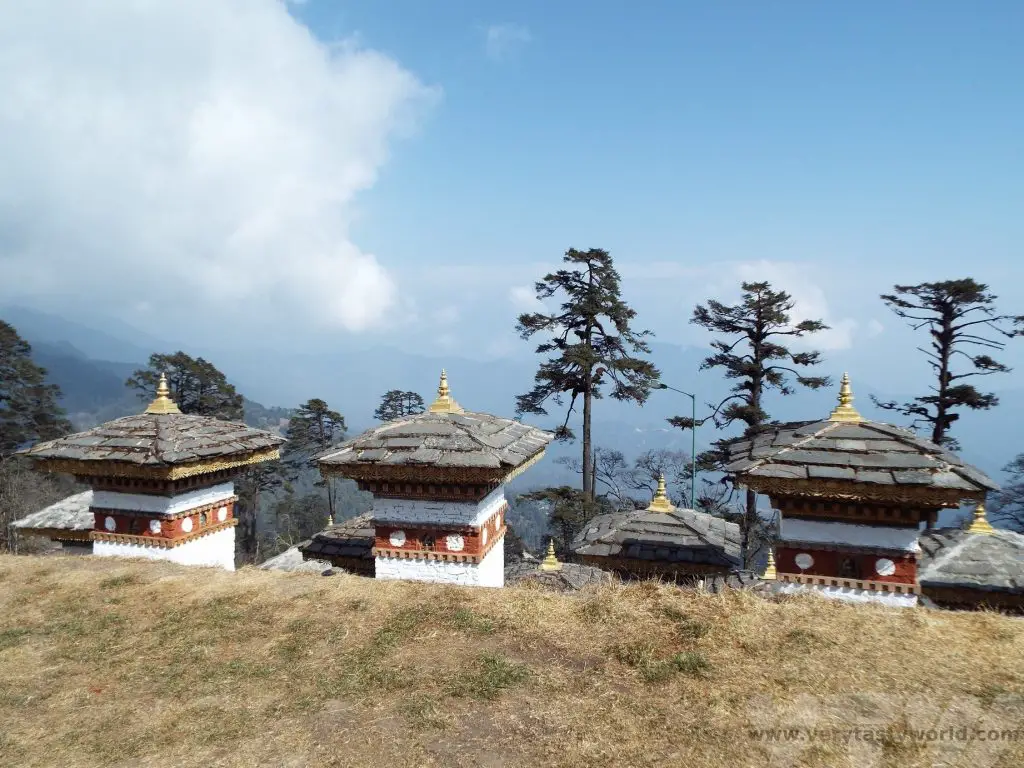
The pass is noted for the 108 Druk Wangyal Khang Zhang Chortens (also known as stupas) which are located on a hill beside the road. They are a memorial to Bhutanese soldiers killed in a battle between Bhutan and Assam insurgents in 2003.
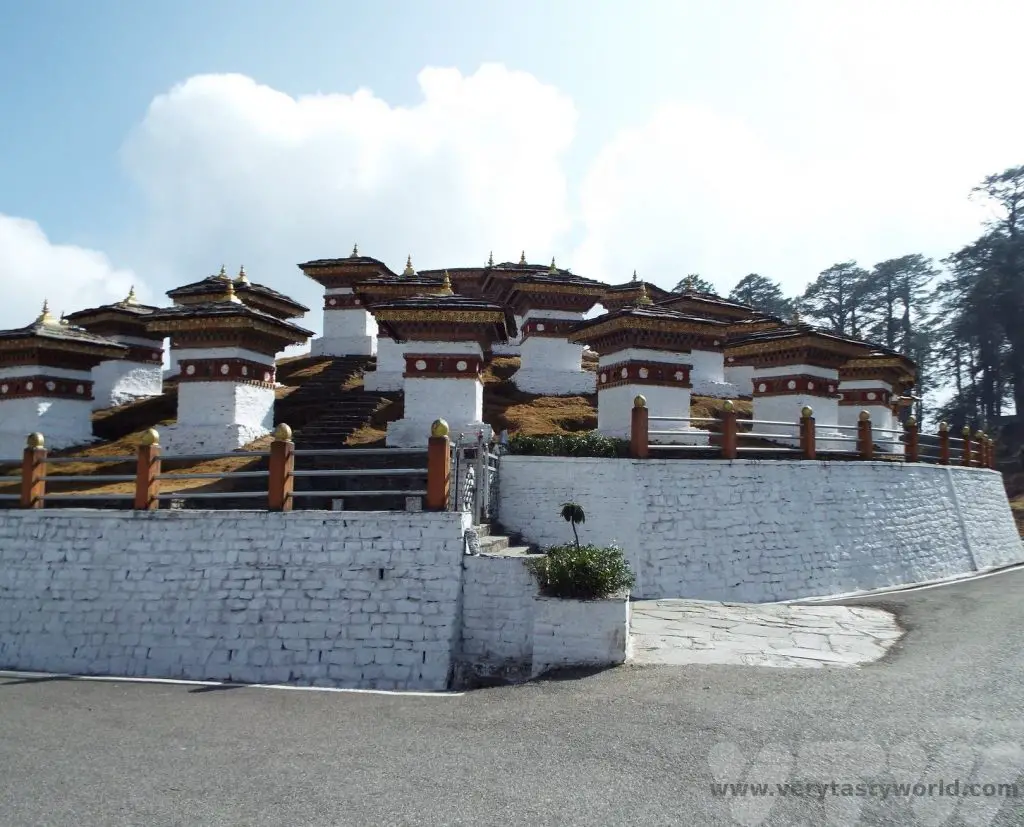
Visiting Punakha Dzong
Punakha Dzong is located at the confluence of the crystal-clear Pho Chu and Mo Chu rivers, respectively the male and female rivers, which join to form the Puna Tsang chu or Sankosh river. A dzong is a fortified monastery and its architecture is typical of this region.
One of the lovely things about Bhutan is that the country has a happiness index, created by the 4th King of Bhutan, who declared that ‘Gross National Happiness is more important than Gross Domestic Product.’ He was absolutely right. Punakha Dzong has another name: Pungthang Dewa chhenbi Phodrang which means ‘palace of great happiness’.
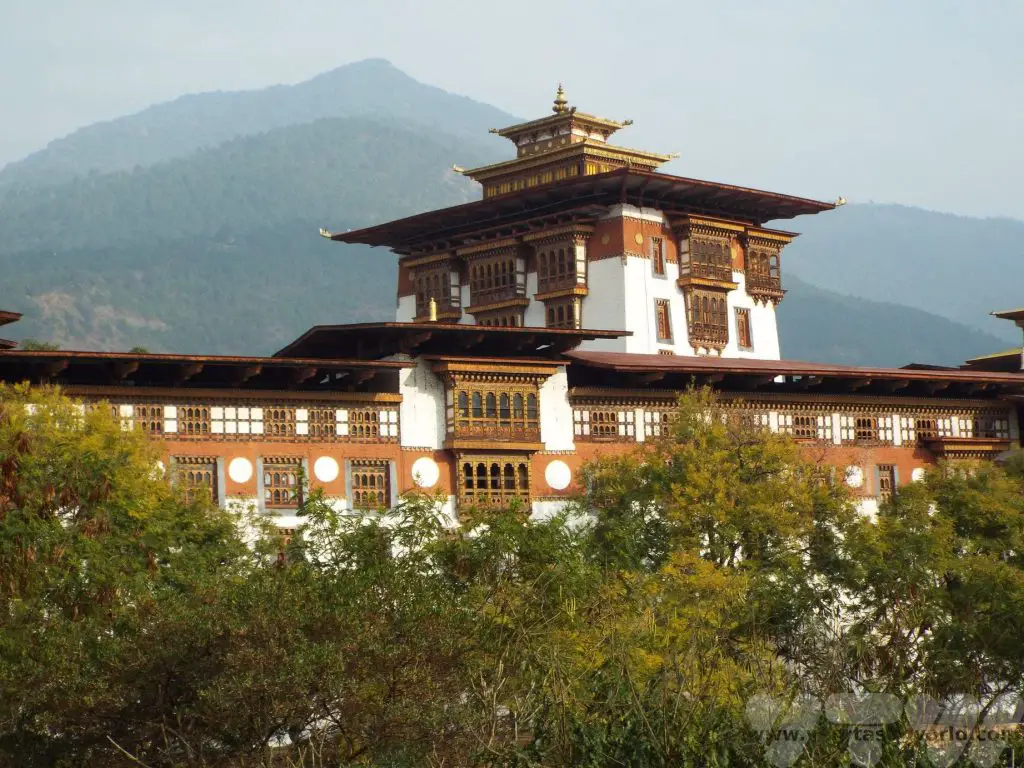
The dzhong was built in 1637-38, conceived by Ngawang Namgyal, 1st Zhabdrung Rinpoche, the Buddhist lama who unified Bhutan as a nation state. There is a legend that the architect had a vision, inspired by Zhabdrung, which encouraged him to design and construct the building.
The main central tower, the utse, is a hugely impressive piece of architecture. It is a fortress as much as monastery and as such has defensive walls all around. The entrance is defined by a very steep staircase and a huge wooden door. The interior is filled with beautiful murals depicting the life of Buddha as well as three large gilded statues – of the Buddha, Ngawang Namgyal and Guru Rinpoche, the most important saint in Bhutan, credited with bringing Buddhism to the country. He is also known as Padmasambhava, which means ‘born from lotus flower.’
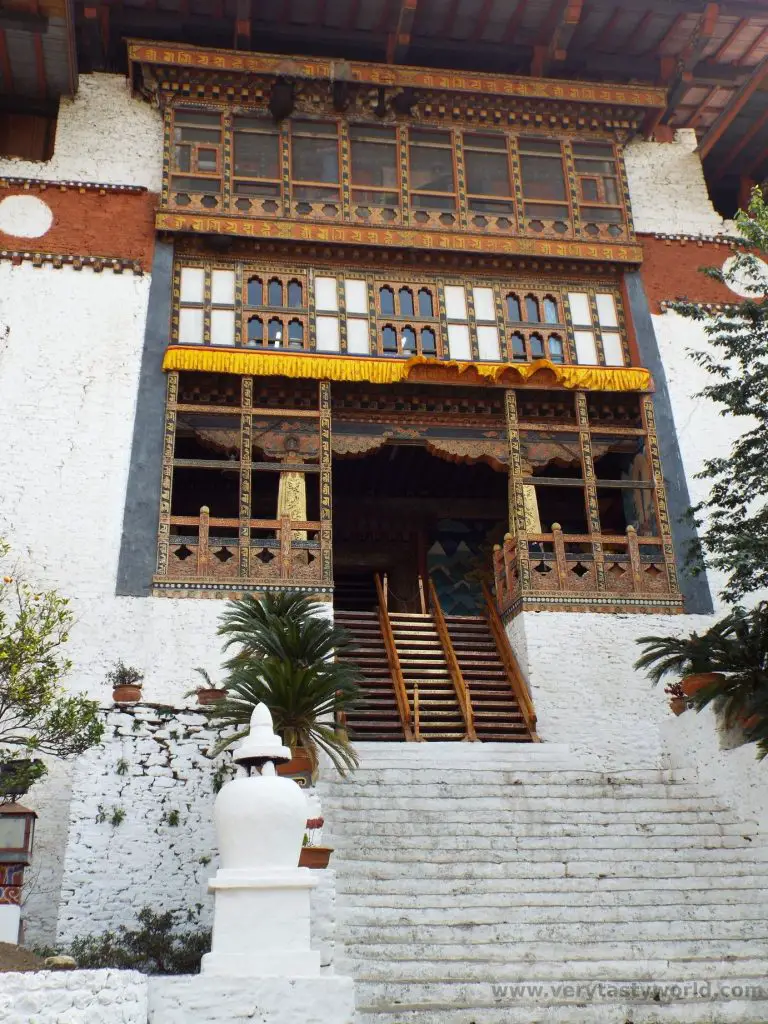
There are three courtyards within the dzhong, known as dochey. and these are surrounded by administrative offices and a bodhi tree, a sacred fig, which is hugely revered in Buddhism.
The last courtyard is home to the Nag Yul Bum Temple. National treasures such as the embalmed body of Zhabdrung and the original Kanjur, the holy book, are stored here. No one is allowed to enter besides the king and the chief abbot.
The dzhong also has a covered wooden bridge which crosses the clear blue waters of the Mo Chu. The original bridge was built in the 17th century but was destroyed during a flash flood in the 1950s. A replacement was completed in 2008.
When visiting monasteries in Bhutan conservative dress should be worn. We were advised that we should wear long sleeves when entering temples. If the weather is warm it’s fine to put on a light jacket (we used our light raincoats). Also, photography is usually forbidden inside temples and it’s important to respect this.
Punakha Festival and the King’s Birthday
Each year the Punakha festival is held in February or March, depending on Bhutan’s lunar calendar. It lasts five days. There are all sorts of displays throughout the festival. Punakha Drubchen celebrates the Bhutanese victory of the Tibetans, who invaded of Bhutan in 1639, with dramatisations and re-enactments of the battle. In 2005, Punakha Tshechu was introduced and this focuses on traditional Buddhist teachings. Folk dancing is an important part of the festivals. Everyone dresses up in their finest traditional clothes. Men wear a gho, a knee-length tunic and women wear a long ankle-length dress called a kira.
We just missed the festival dates but were lucky that the timing of our visit enabled us to join the festivities for the king’s birthday, a three day celebration for Jigme Khesar Namgyel Wangchuck, the fifth and current Druk Gyalpo. (We were doubly lucky because we later travelled into Nepal, where we joined in celebrations for the Hindu festival of Holi.) Even though we had arrived quite early, the festival was well under way. There was plenty of dancing…
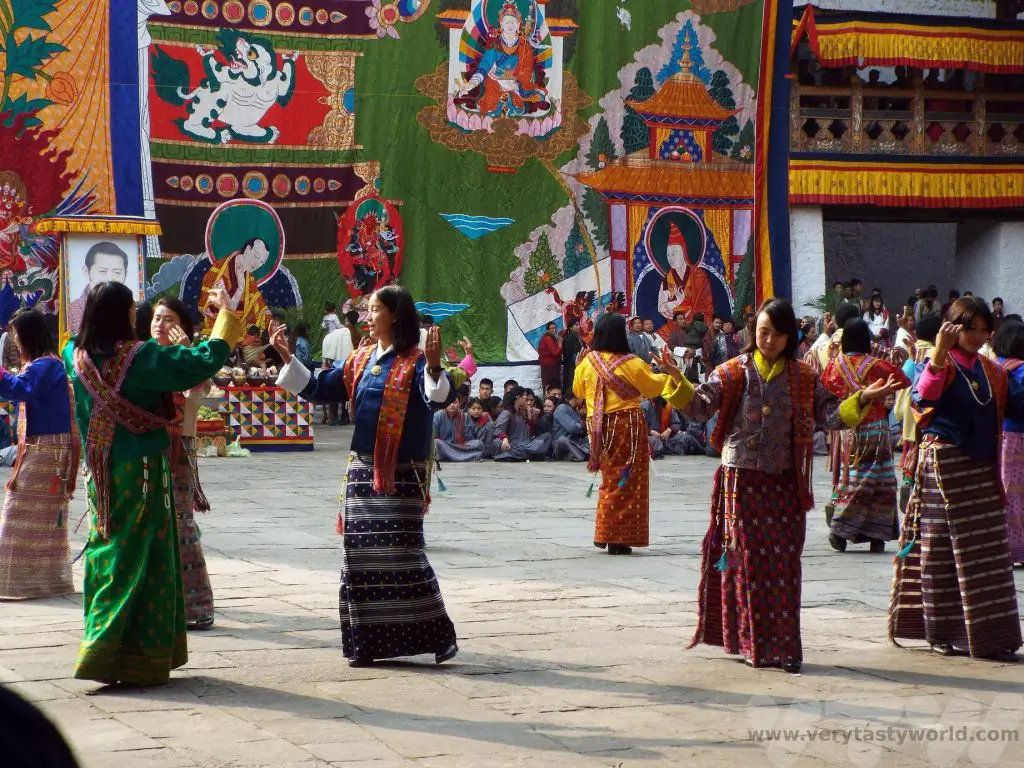
…formal…
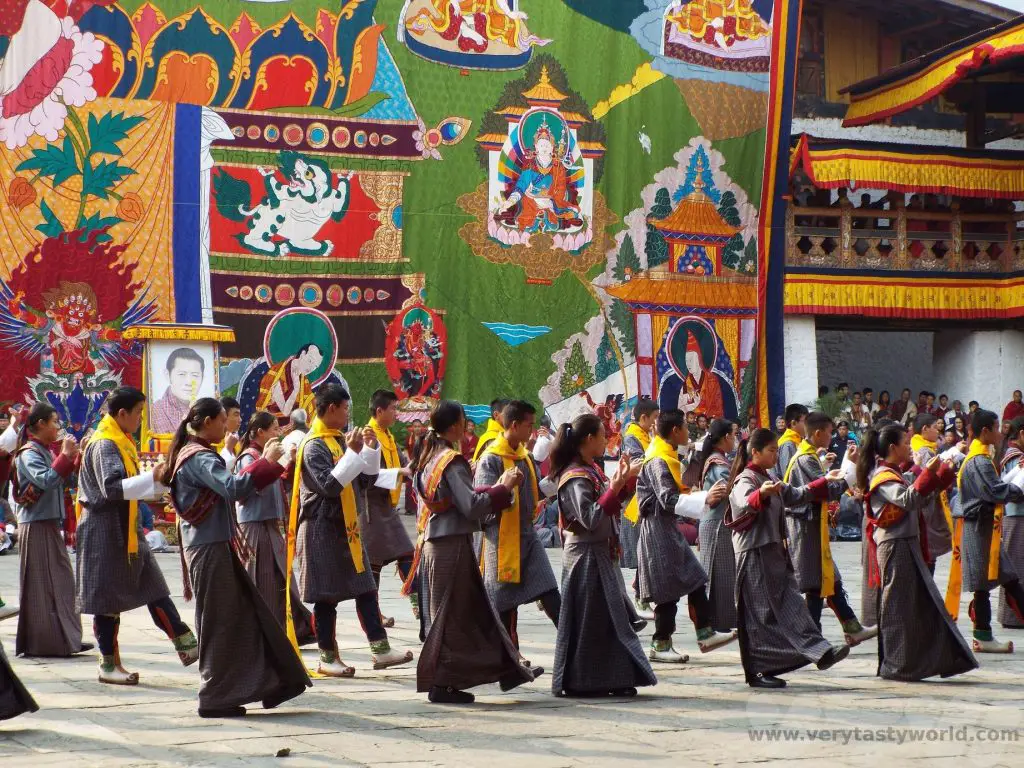
… and informal.
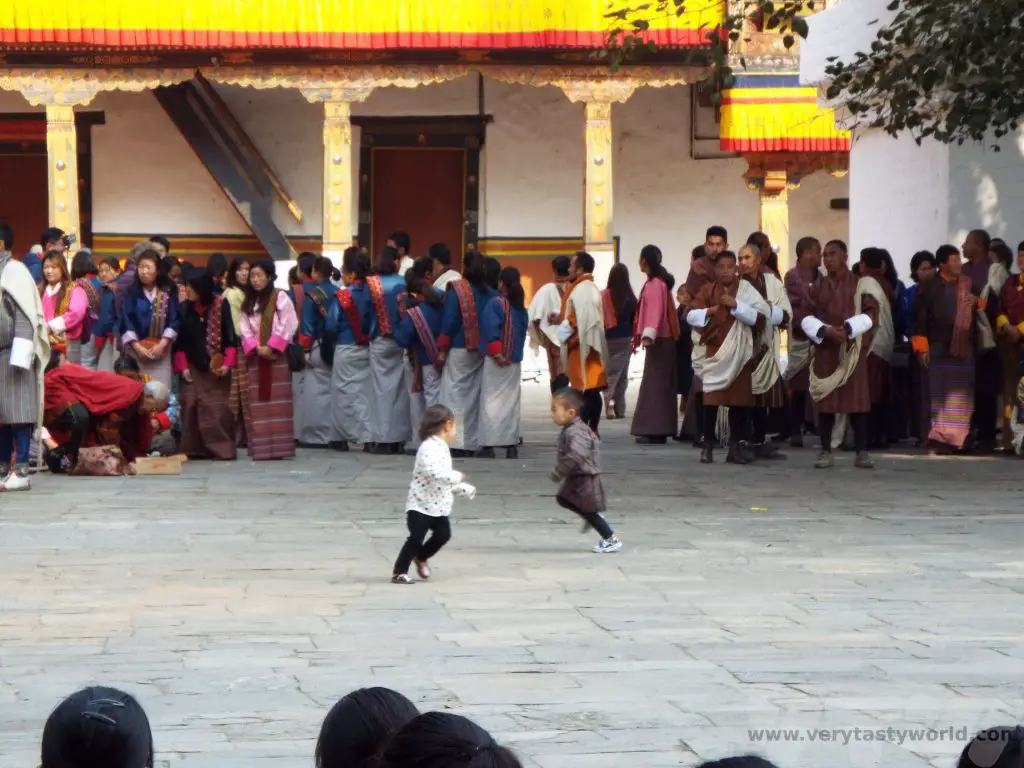
We watched the dancing from underneath the bodhi tree. As part of the celebration an enormous tapestry, known as a thongdrol, is unfurled. It is the most beautiful and colourful tapestry, taking up the side of a whole building within the complex. You can see a portrait of the king at the base of the tapestry. Respect for the king is enormous in Bhutan and his image can be found in most people’s homes.
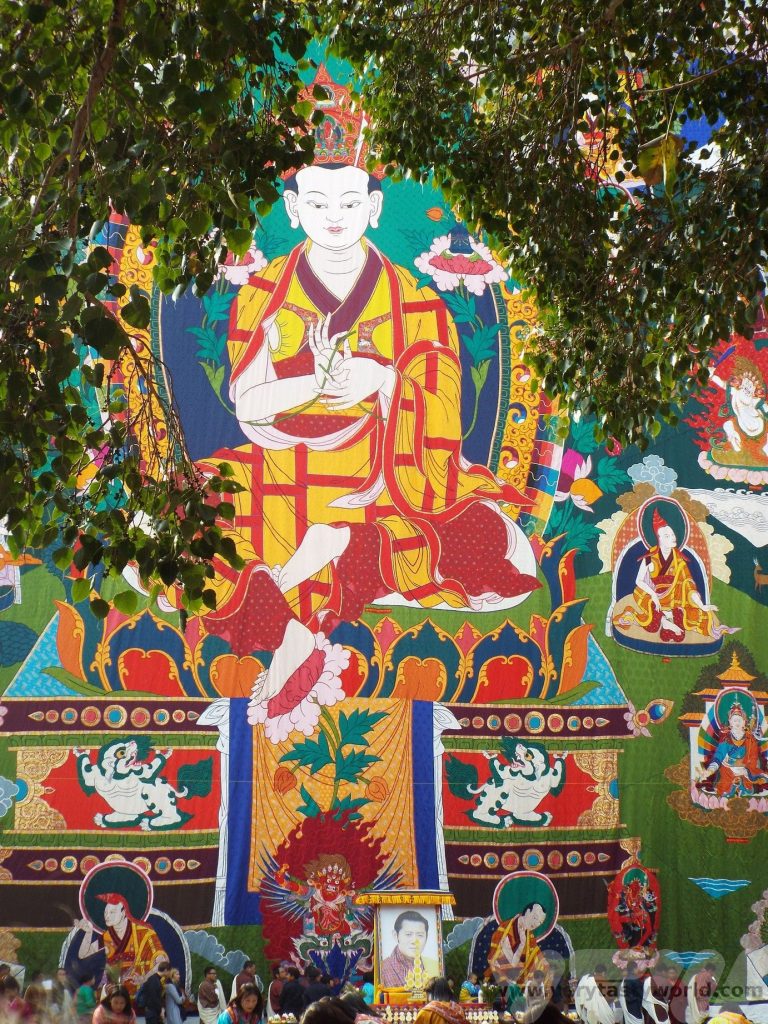
Inside the temple complex there were further celebrations with masked dances performed by the monks.
Above all else, it was a happy festival. Everybody welcomed us. We got chatting to some of the local ladies – they were very keen to practice their English (which was excellent) and we talked about the traditions in our countries.
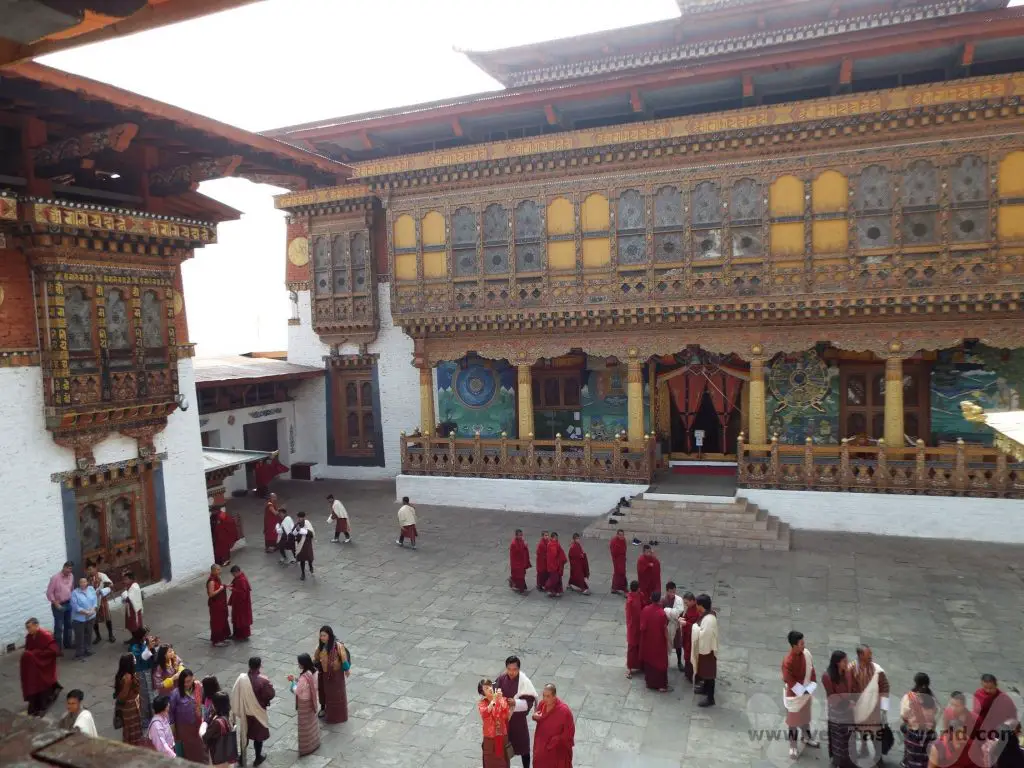
Other Things to See in the Area
Exploring the Rivers and Suspension Bridge
This is the longest suspension bridge in Bhutan and it crosses the Po Chu river, linking the Dzong to Shengana, Samdingkha, and Wangkha.
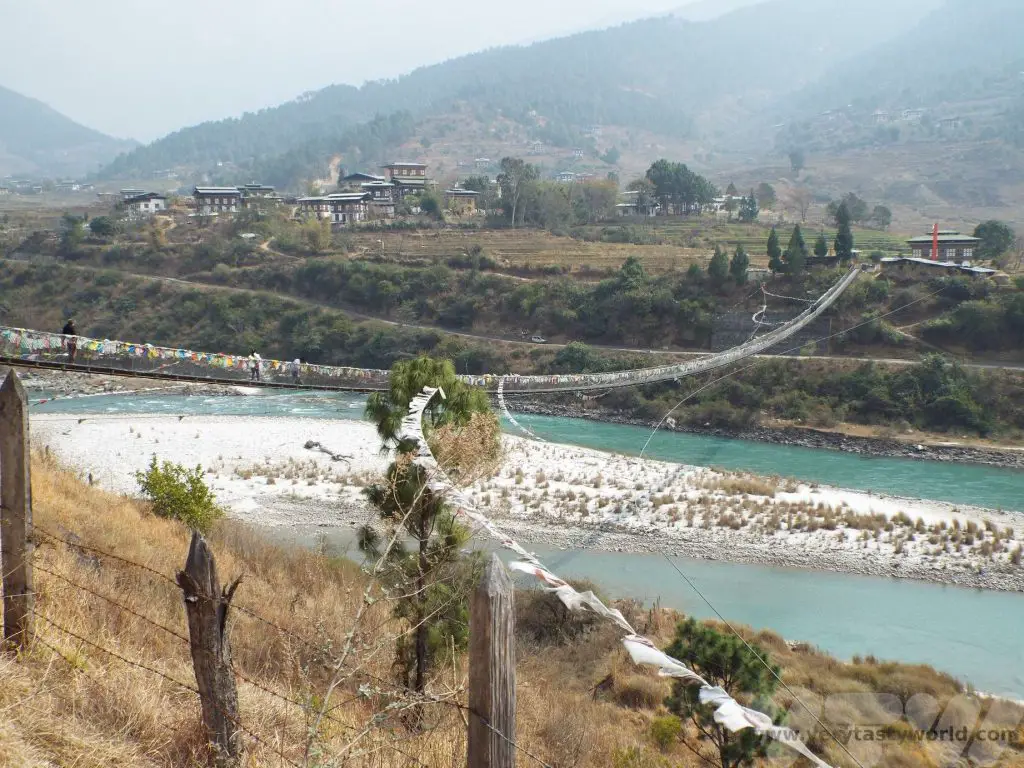
It’s 160m long and is emblazoned with prayer flags that wave vigorously in the breeze.
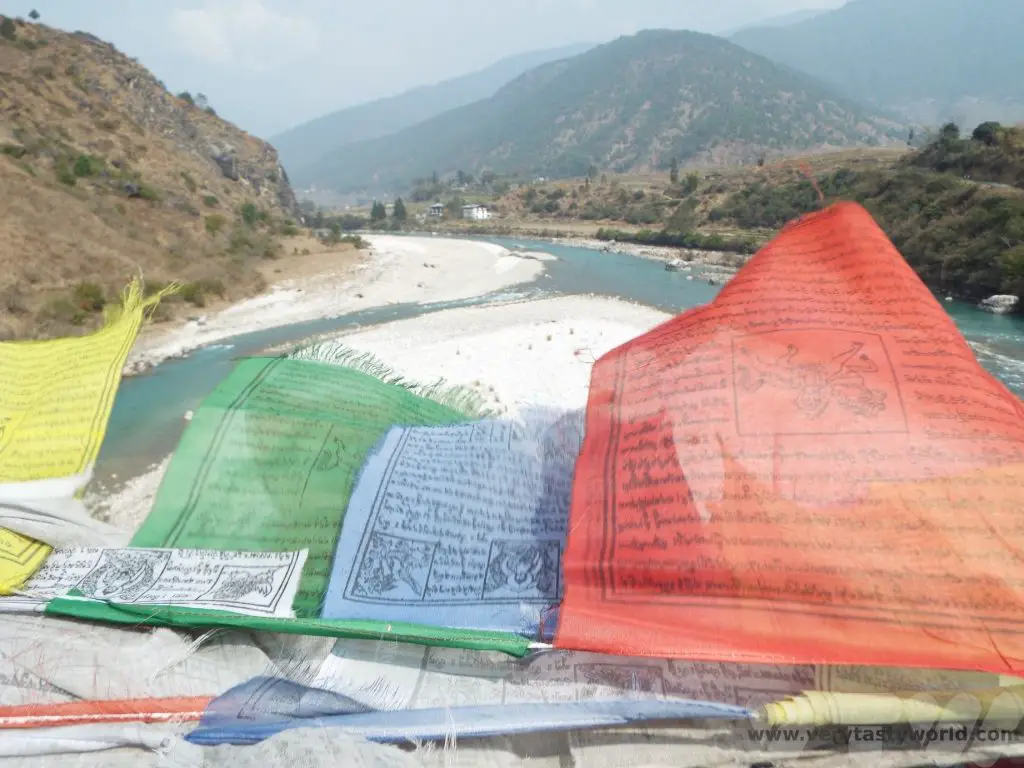
There are some good walks along the Mo Chu river upstream. It’s a really beautiful area. And, if you’re feeling adventurous, there may also be some opportunities to go rafting on the river.
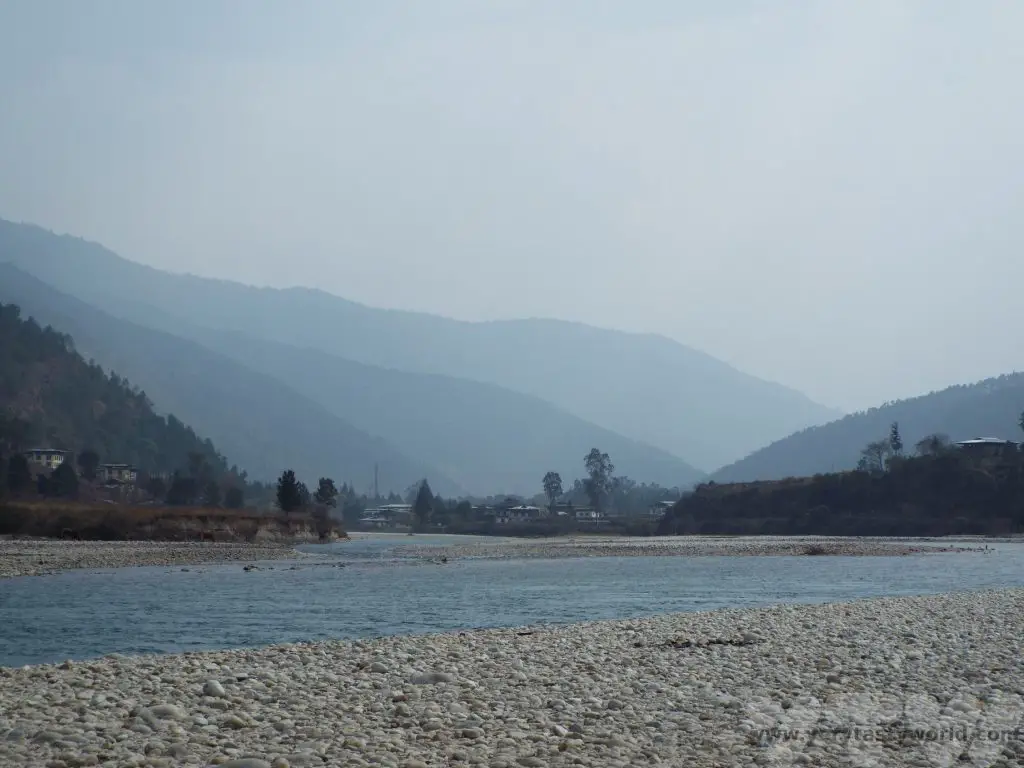
Sangchhen Dorji Lhuendrup
The Sangchhen Dorji Lhuendrup nunnery is located in Wolakha. It provides a permanent training and meditation centre for nuns. There are also opportunities for the nuns to learn various skills such as tailoring, statue making and thangka painting (a traditional style of Buddhist painting).
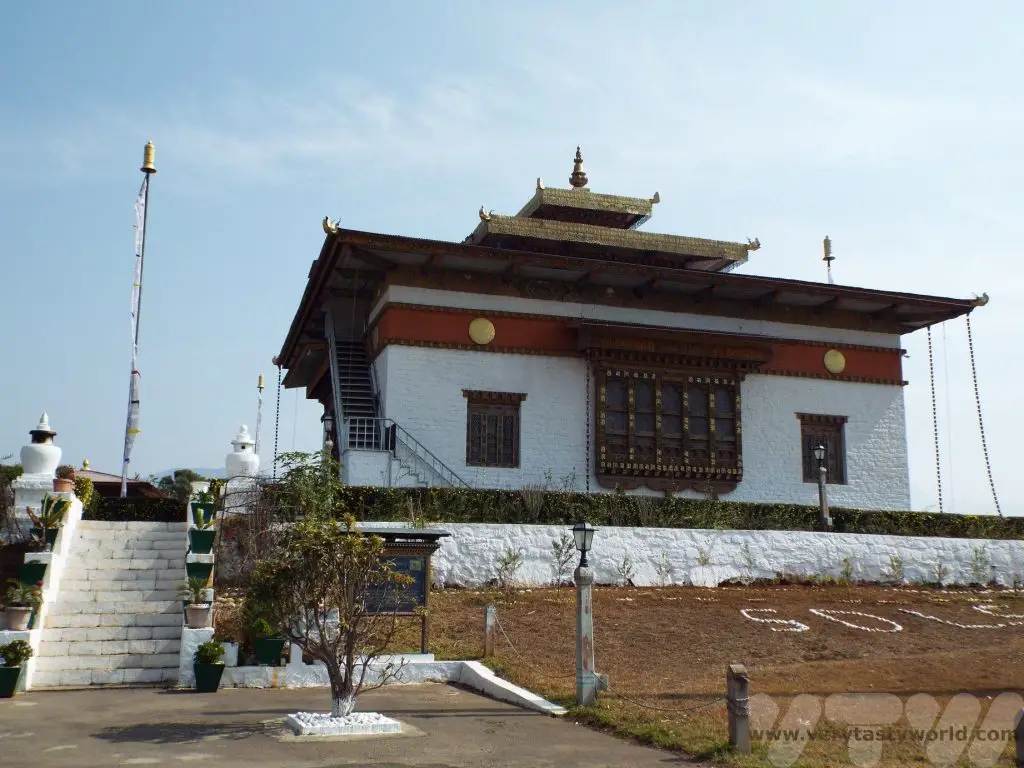
The temple has an impressive stupa.
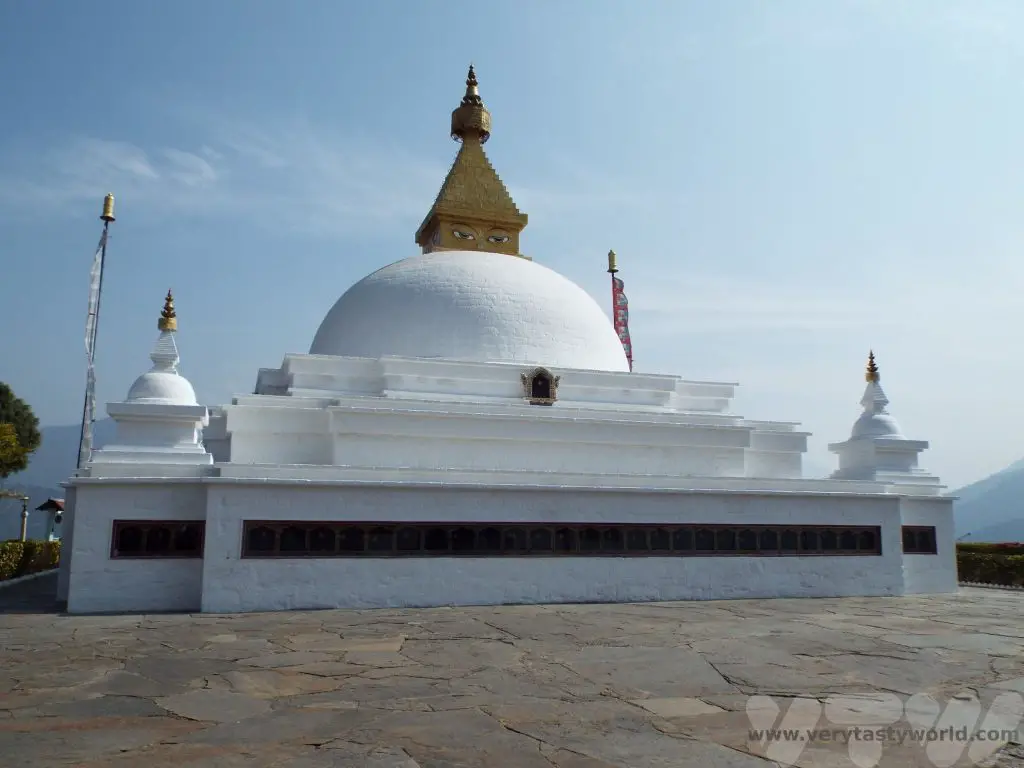
Chimi Lhakhang
Chimi Lhakhang is located around 10km from Punakha. It is a monastery built in the 15th century after being blessed by Lama Drukpa Kunley, also known as the ‘Divine Madman’, who had an, er, unusual approach to teaching Buddhism which often involved singing, dancing and generally being shocking. He brought from Tibet a wooden phallus adorned with a silver handle and this is housed in the monastery.
It is used to strike pilgrims, particularly women who wish to become pregnant, on the head as a blessing.
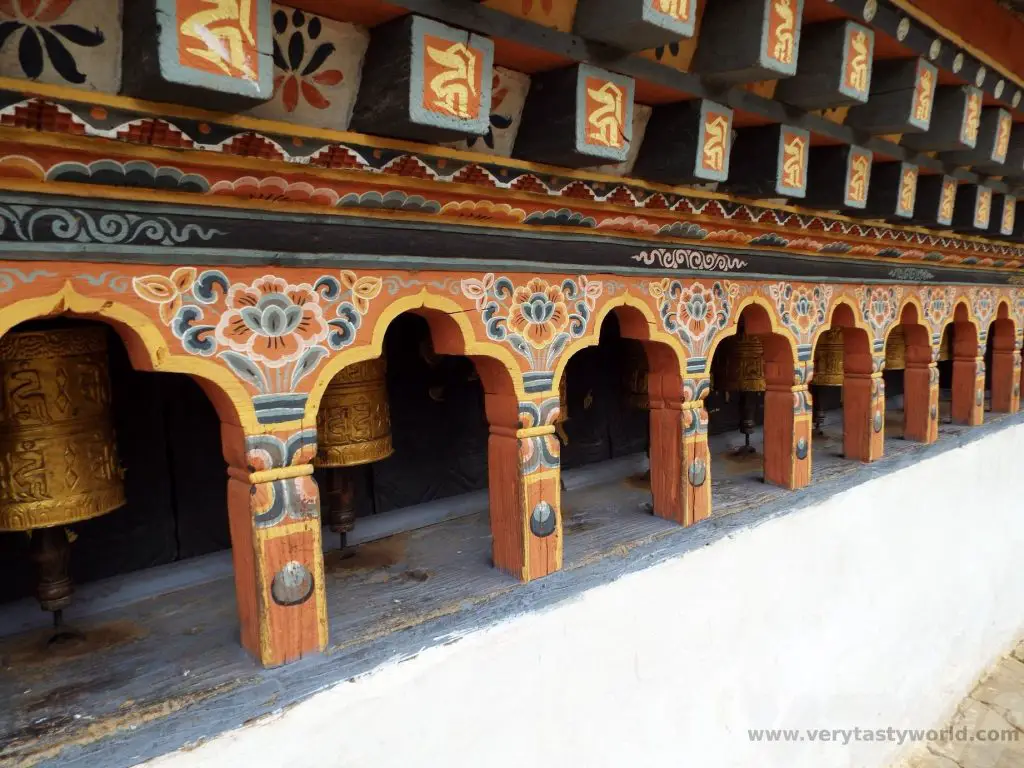
All through the area you will see paintings of phalluses on housing walls. It is a tradition in Bhutan that the phallus protects people from evil.
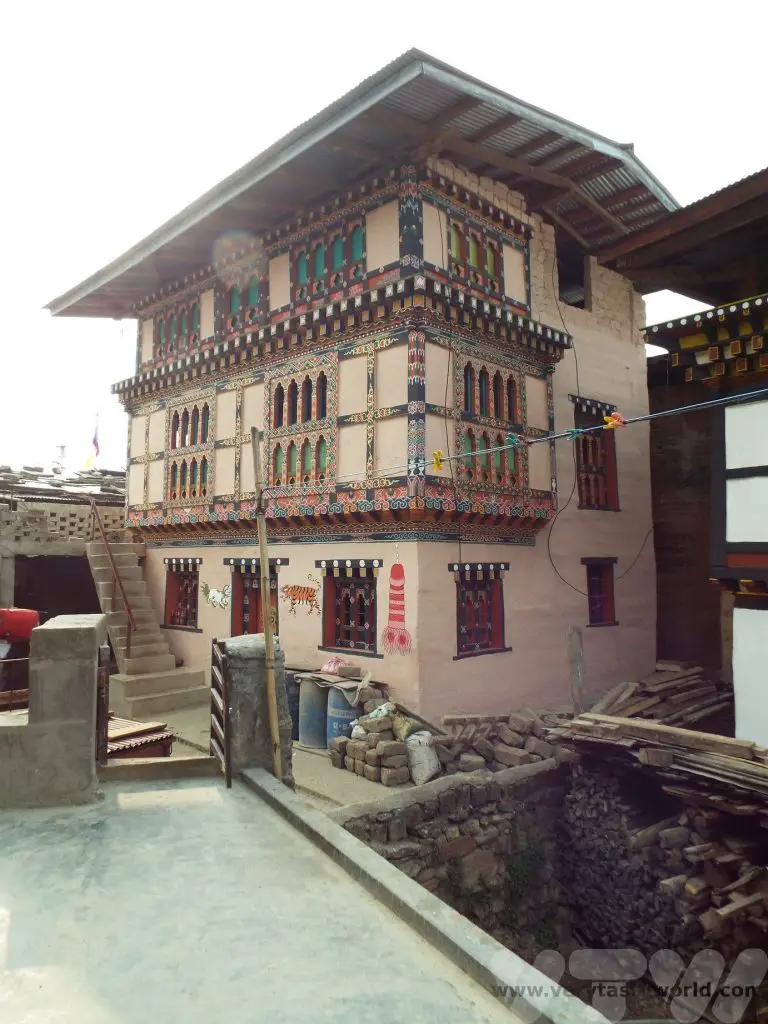
Staying At A Local Farmhouse
We spent the night in Chimi Lhakhang Farm – we had a cosy attic room and cooked dinner with our lovely hosts.
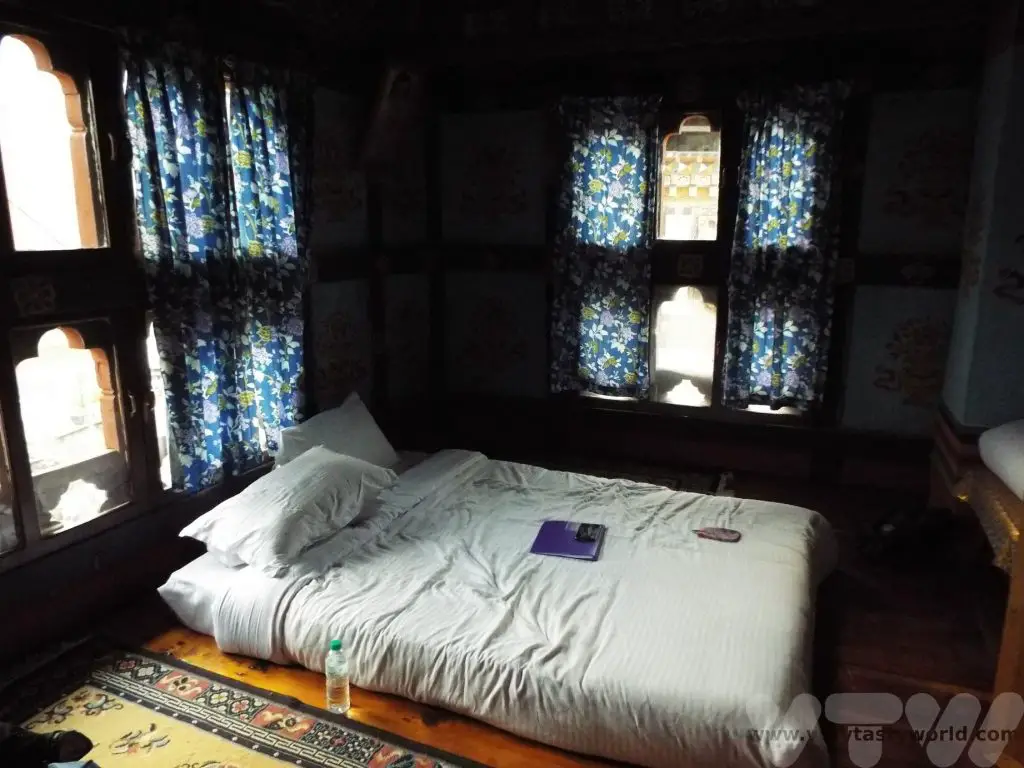
Our guide often asked what sort of food we would like to try – of course we asked if we could enjoy traditional Bhutanese food.
We had great fun in the evening and spent time in the kitchen preparing dinner with our hosts. Dawa and Tring joined in with the cooking as well.
The main dish was shakam paa, which comprised dried beef cooked with chillies and radish slices, spiced with dried chillies.
We also learned how to make khewa datshi, a dish of sliced potatoes with cheese.
And, of couse, the ubiquitous and utterly delicious ema datshi – chilli cheese.
All served up with red rice, it was a feast!
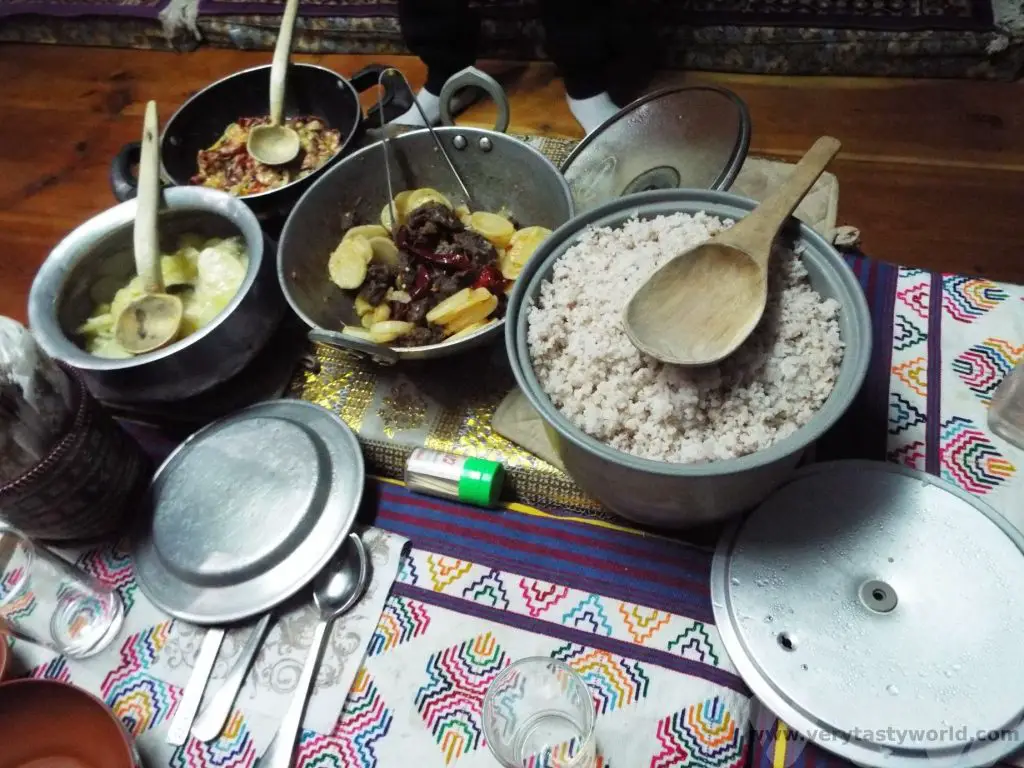
Related Posts You May Enjoy

- A One Day Hanoi Itinerary
- Mekong Meanderings
- A Chiang Rai Temple and A Country Retreat
- A Chiang Mai Tour in Northern Thailand
- Sunrise at Angkor Wat and Other Temples
- Mekong Delta River Cruise in Vietnam

A Chiang Rai Temple and A Country Retreat
Sometimes it’s possible to visit a place without actually going to the place itself. If that makes sense? This happened on our trip to northern Thailand. We had spent some time in Bangkok and Chiang Mai before heading towards the city of Chiang Rai. But somehow we didn’t quite manage to visit the city itself. Having driven up from Chiang Mai, our first stop was a famous Chiang Rai temple – The White Temple – followed by a lovely couple of days exploring the local countryside.
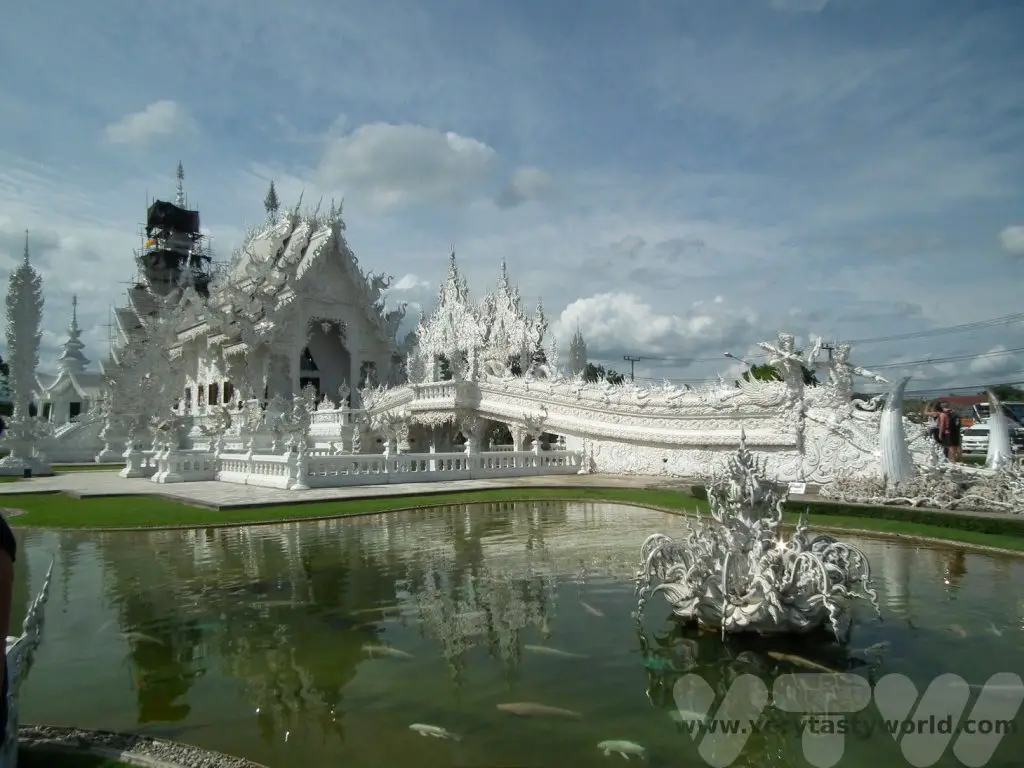
Chiang Rai Temple – The White Temple
It’s located about 13 kilometres south of Chiang Rai city and we can honestly say it’s one of the most bizarre buildings we have ever visited.
The temple itself was conceived and designed by Thai artist Chalermchai Kositpipat and built on an enormous scale, designed in the style of a Buddhist temple. Kositpipat also supervised the construction of this remarkable building. Although it bears a strong resemblance to ancient temples of the region, it is a modern structure which opened in 1997.
The building also has ornate naga serpents, supernatural creatures that are part human, part snake, which typically decorate Buddhist temples and are revered throughout the region.

You cross the Bridge of the Cycle of Rebirth…
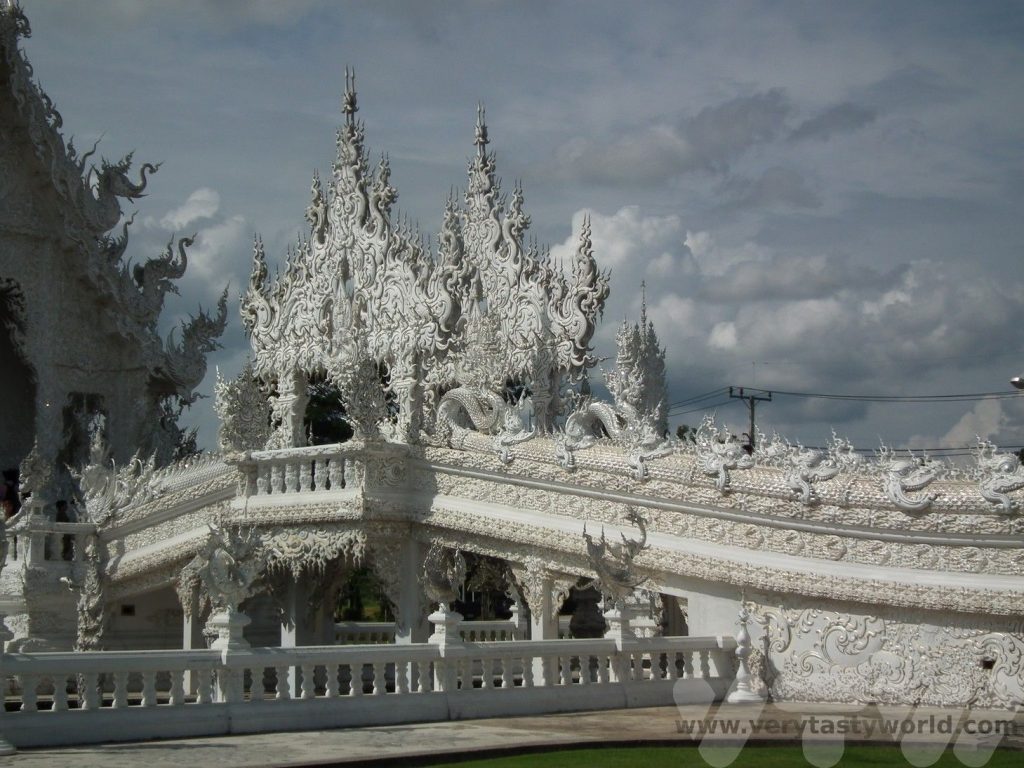
…passing by the fearsome guardians…
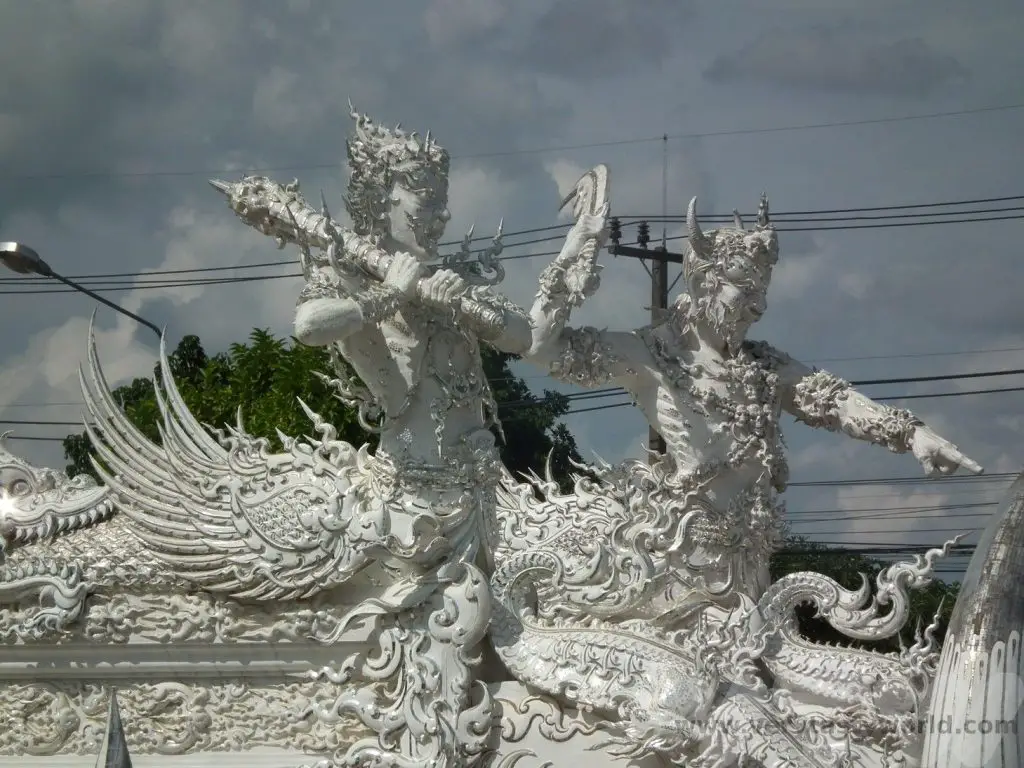
…over the lake of the damned souls…
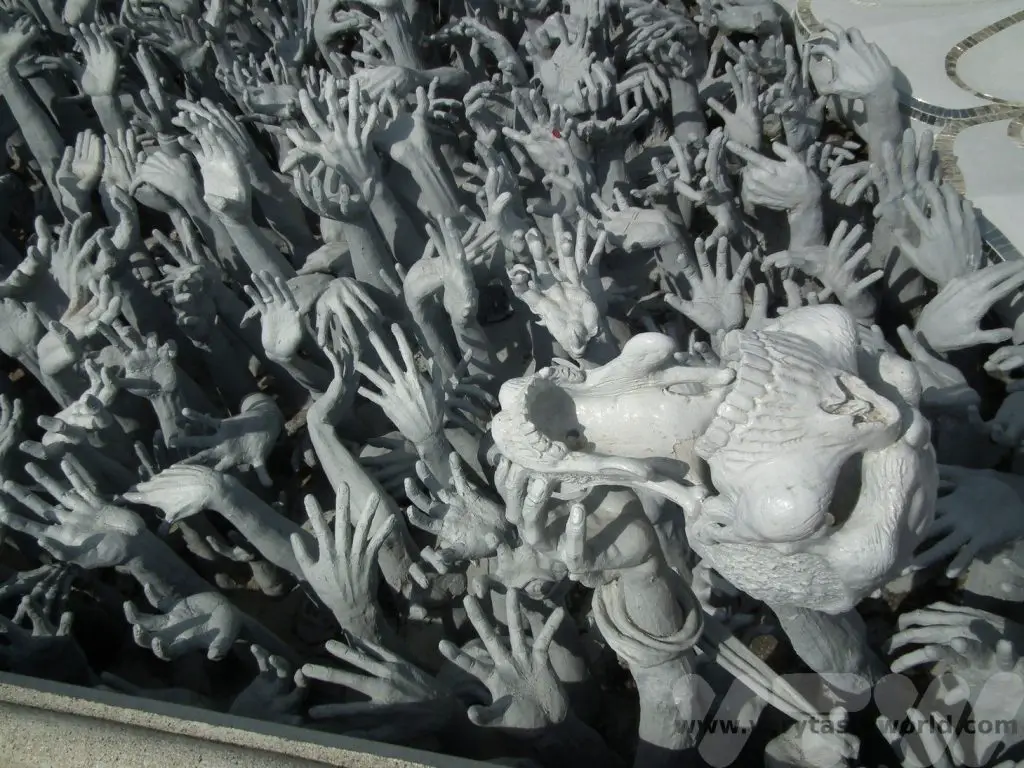
…in order to reach heaven.
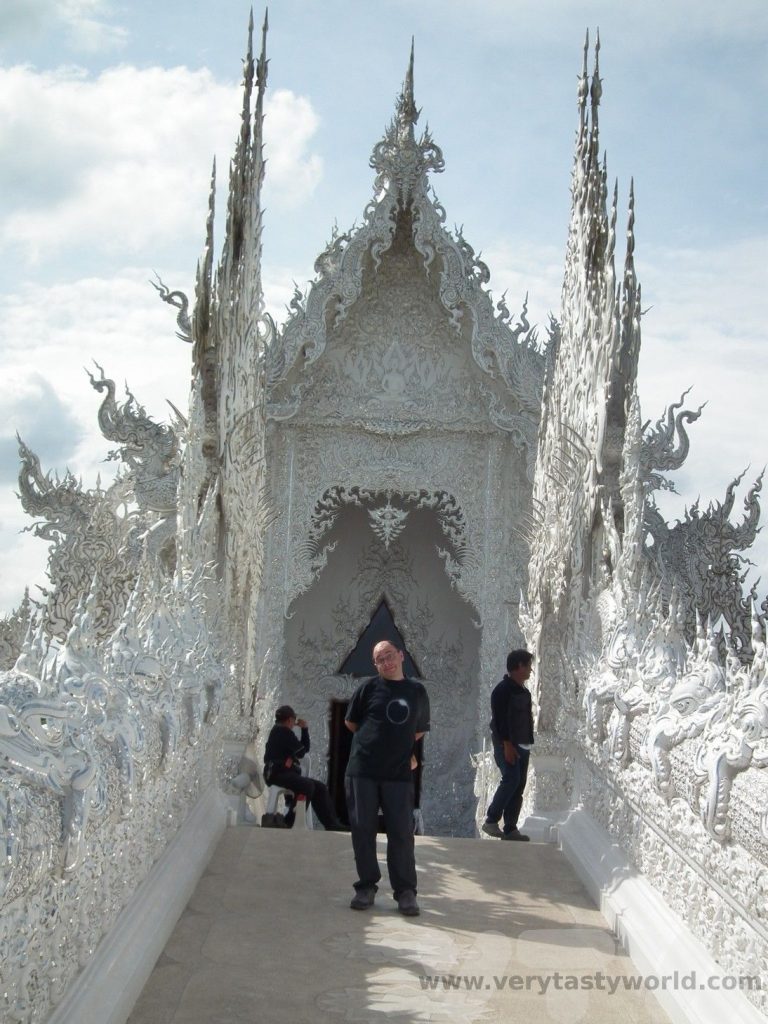
It is possible to go inside the temple, known as the ubosot, but, sadly, you are not allowed to take photos in there. We absolutely respected this, but it’s a shame because it contains the most astonishing bright and colourful murals. They combine Buddhist imagery with all sorts of modern historical and cultural icons – everything from Spider-man to Doraemon and Hello Kitty! The theme that pervades the White Temple is the conflict between good and evil in the world. You could spend hours enjoying the details, spotting all sorts of characters.
Chiang Rai’s White Temple Grounds
The temple itself was designed to be white to represent purity; a conscious choice to contrast with the temples throughout Thailand which are typically decorated in gold. Kositpipat apparently considered gold to be a colour for people who coveted evil thoughts and deeds. So it is the bathrooms that are decorated in a gorgeous gleaming gold. Possibly the most ostentatious toilets in the world!
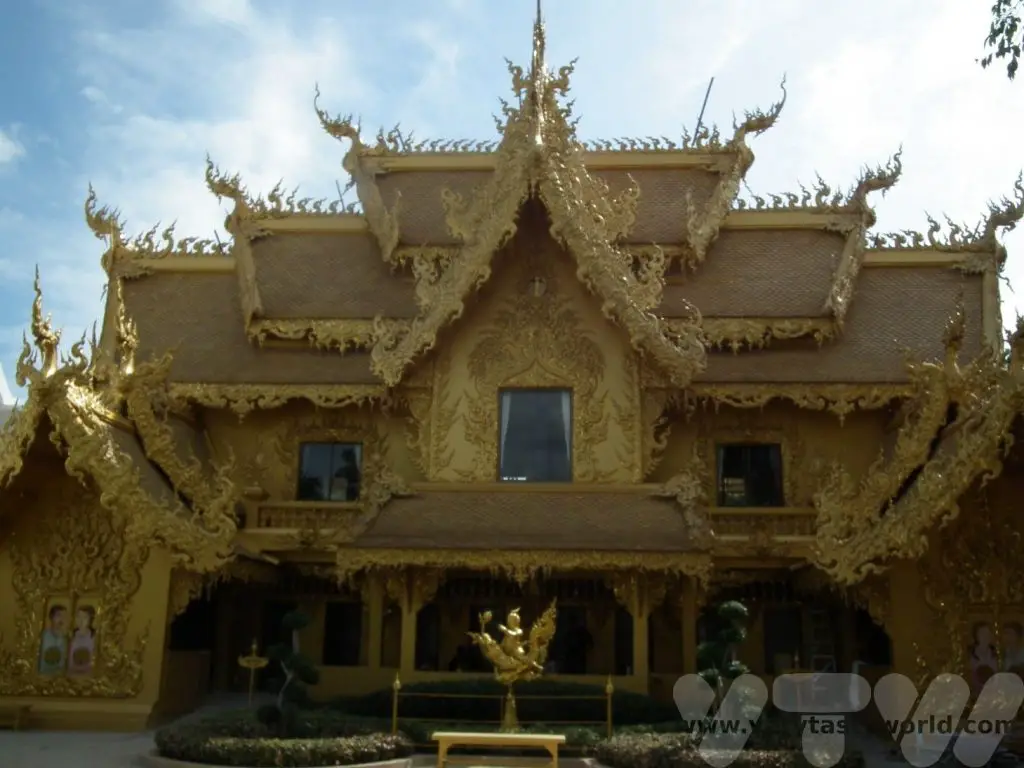
Even the traffic cones and trees are bizarrely decorated!
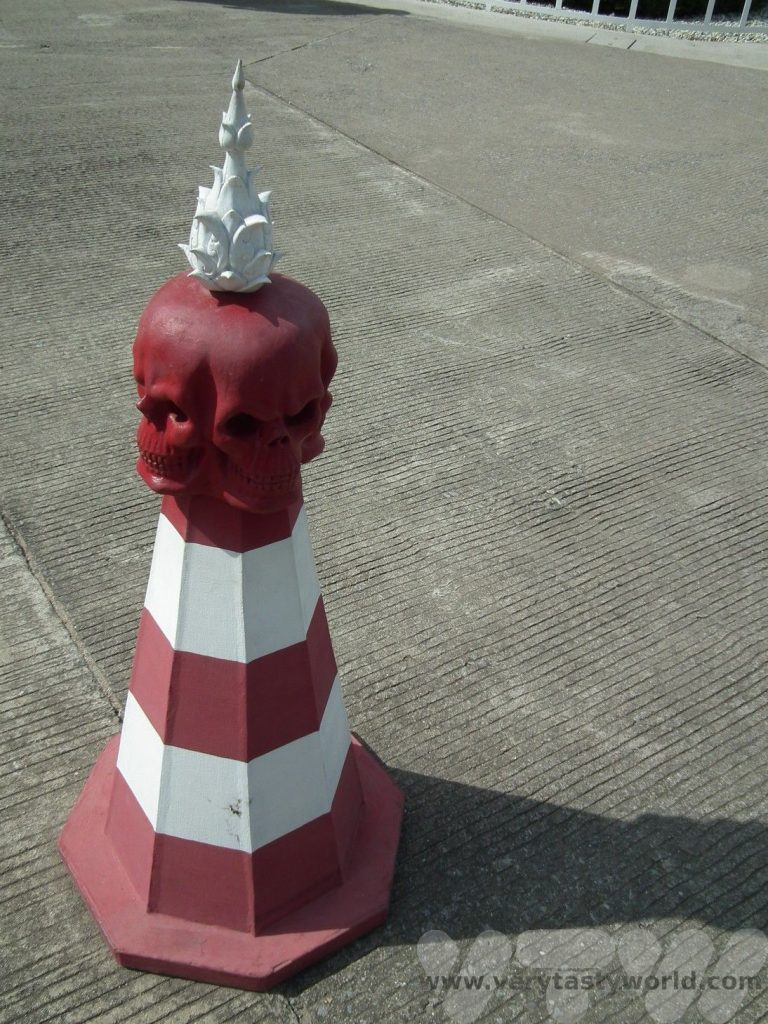
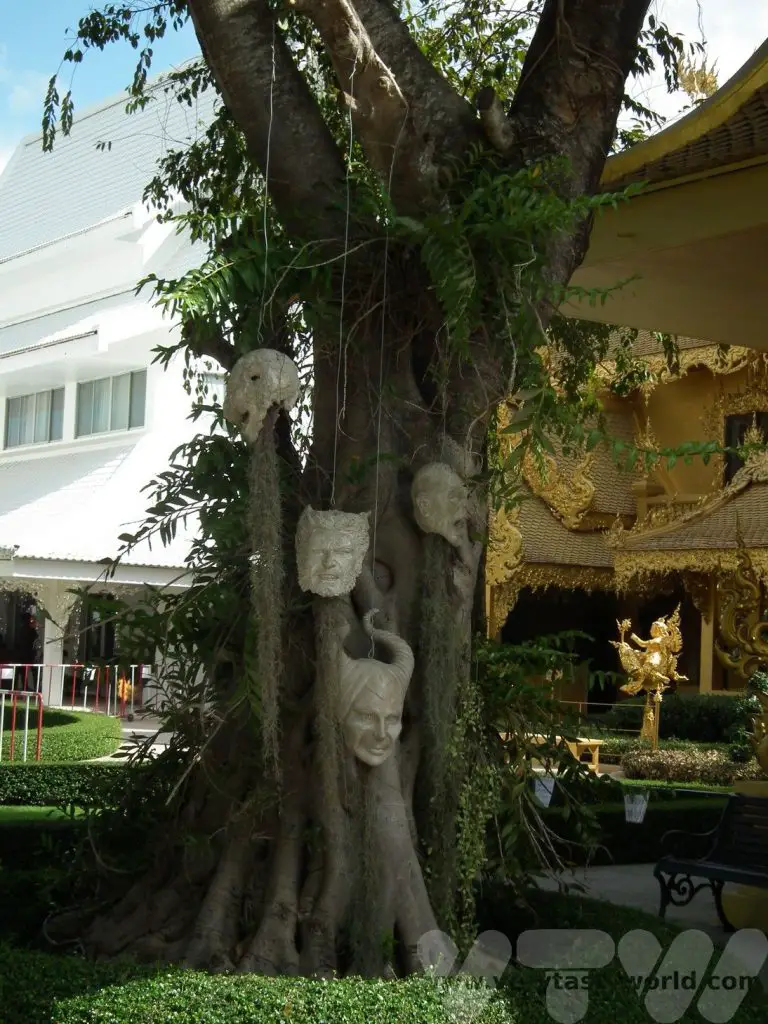
Kositpipat didn’t want money to be a consideration for visitors, so when we visited entrance was free. However, these days there is a nominal charge that is used towards maintaining the temple and gardens. Which is fair enough.
A Rural Retreat
Having visited the Chiang Rai temple we then headed out towards the hills.
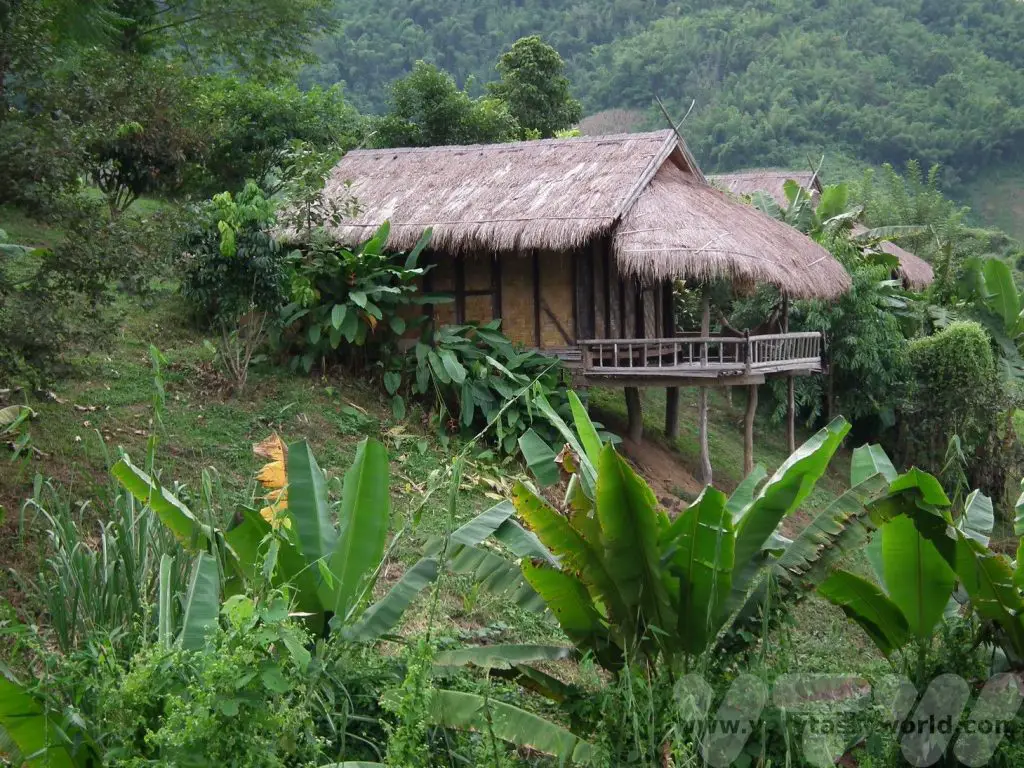
We were staying at the delightful Bamboo Nest, a rural retreat in the countryside. When you hear the phrase ‘rural retreat’ it often recalls images of luxury spas in pristine grounds but this was the opposite – a retreat much more suited to our tastes.
We stayed in a simple bamboo hut with thatched roof, which had no electricity and a wonderful view.
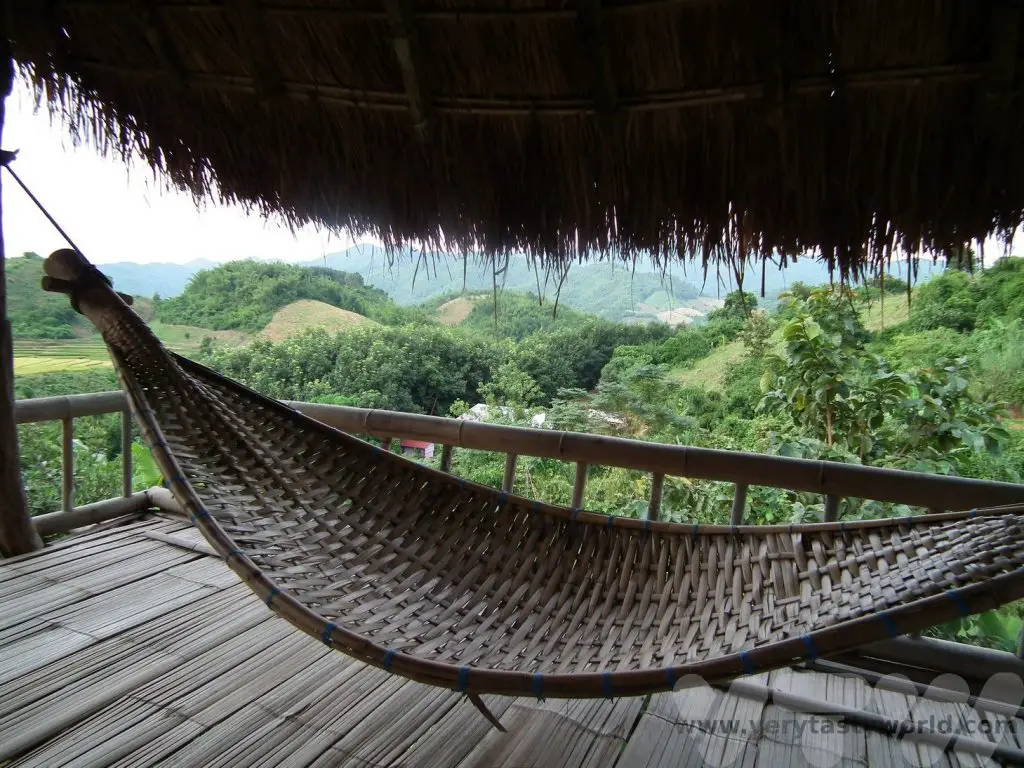
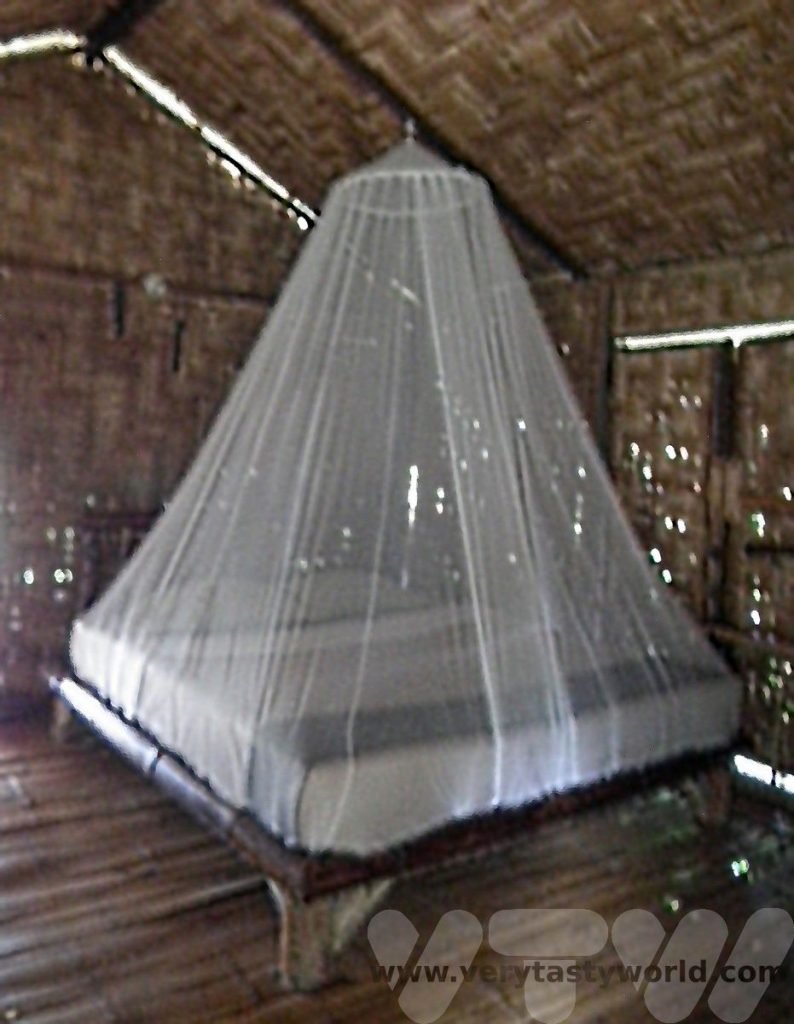
Dining was in a communal area where we enjoyed freshly cooked local meals with other guests. There was electricity available via a generator in this area which enabled the charging of phones and cameras and it also powered a fridge which conveniently contained cold soft drinks and beer, which you could purchase on an honesty basis. It was incredibly quiet and peaceful and a complete contrast to the hubbub of Thailand’s cities.
The Bamboo Nest team arranged our transportation to this remote site and will organise pickups if needed. Just get in touch directly to make a booking. We met Nok outside the White Temple and climbed into her 4WD, a vehicle that was most definitely essential for the area which we discovered as the car climbed higher and higher up the mountainside. The final leg of the journey was incredibly steep, muddy and occasionally slippery – a challenge even for a sturdy 4WD.
A Hike to the Hill Tribes
The main purpose of our visit was to enjoy some hiking in the area and to meet the local hill tribes. The hosts at Bamboo Nest can arrange a variety of excursions, either on a guided or self-guided basis, and we enjoyed a lovely long walk with Noi. It was initially a little disconcerting when he picked up a machete just before we headed out, but the walk was to take us through the mountainside forest and at times we would need to cut our own path. The treks offered are truly off the beaten track.
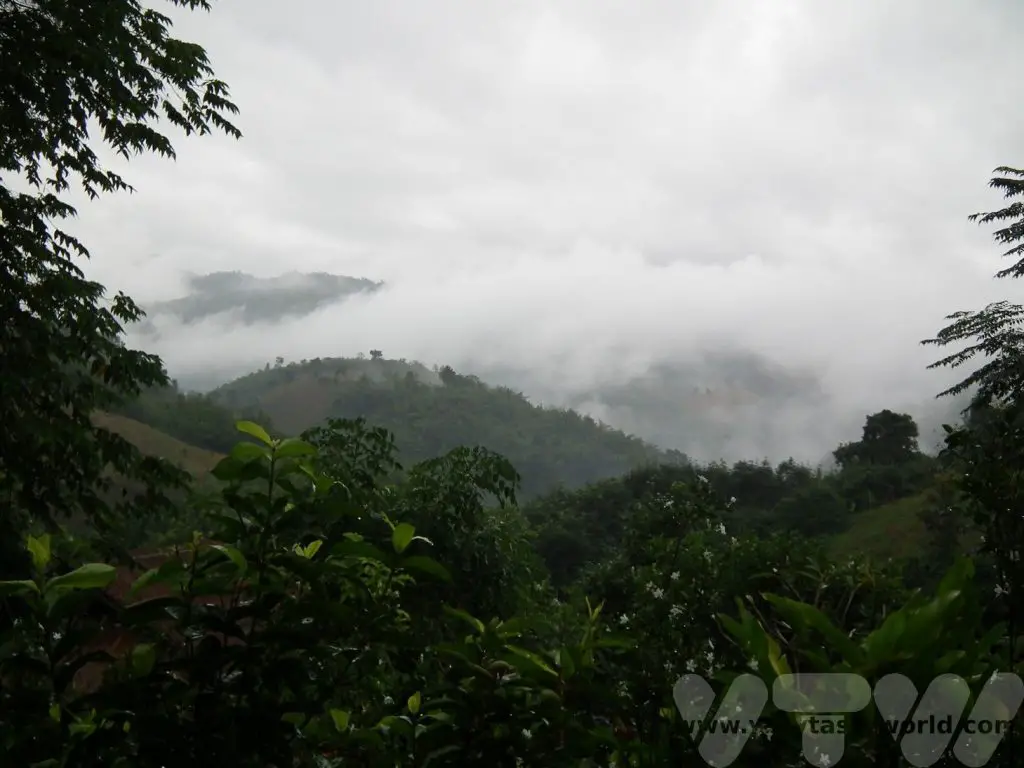
Thailand is hot and humid and occasionally rainy, so we had some slippery moments, particularly descending some of the steeper hills. It’s worth making sure you have good shoes and waterproofs as well as a change of clothing, just in case it rains and gets muddy.
The Chiang Rai area is home to a number of hill tribes, including the Akha and Lahu peoples. Hill tribes are ethnic minority groups who have settled in the region, living in a plethora of villages that are scattered across the mountains. The communities can be quite large or may comprise just a few families living together. Some of the villages are set up to receive tourists but Noi and Nok know the local people well, so we were able to visit a non-tourist village which gave us a much more personal and insightful experience.
After a couple of hours hiking we arrived at one of the villages of the Lahu tribe. The homes are constructed on stilts and have adjacent buildings where the farm animals reside.
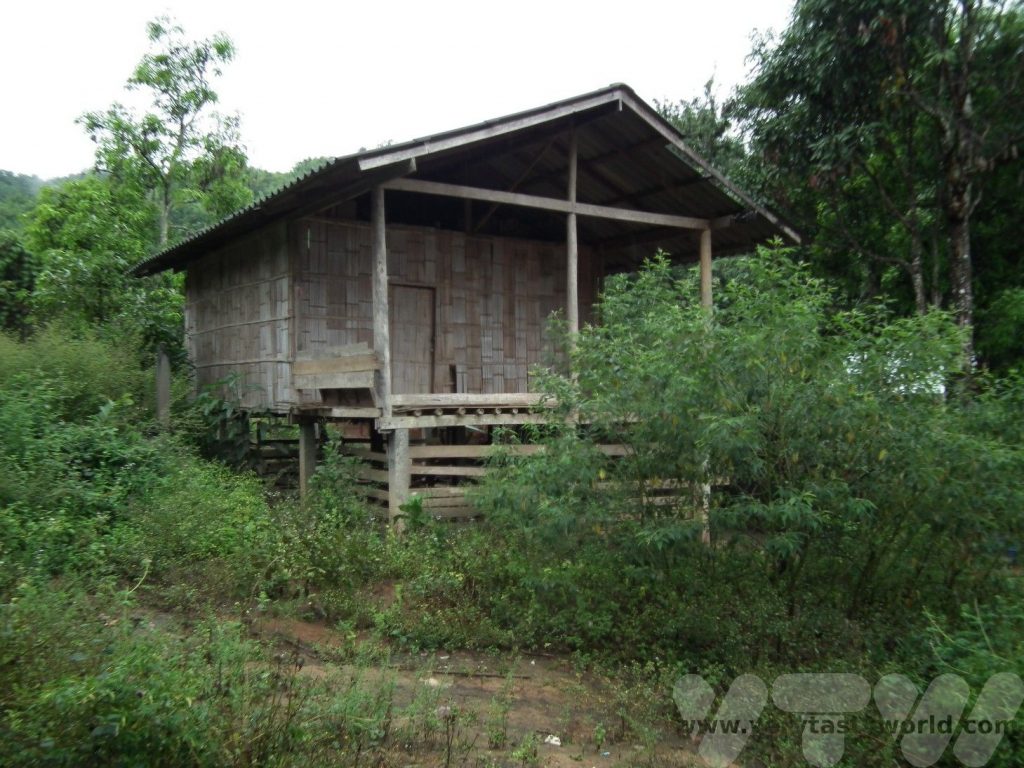
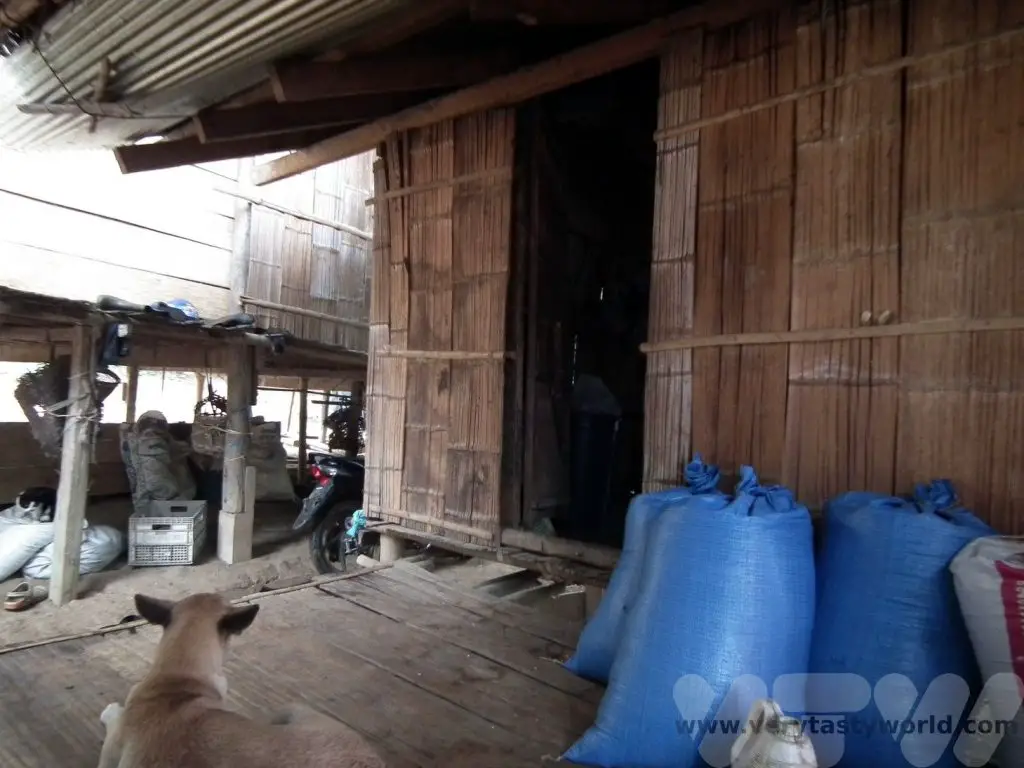
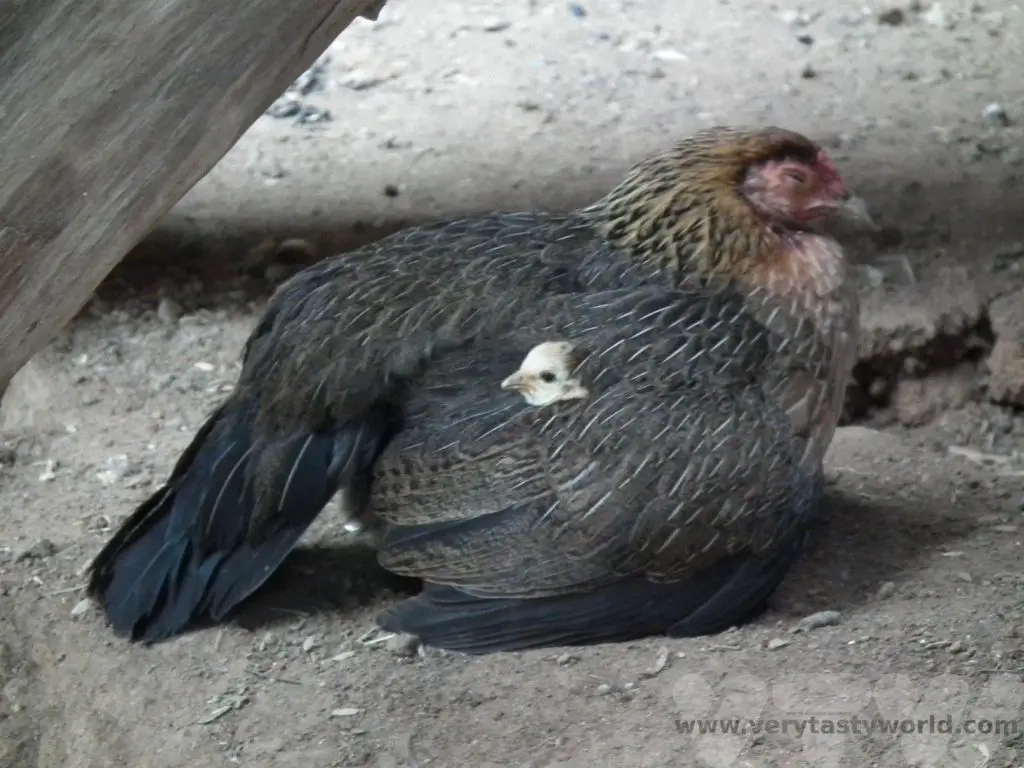
We were invited into a house to join a family where we helped prepare lunch.
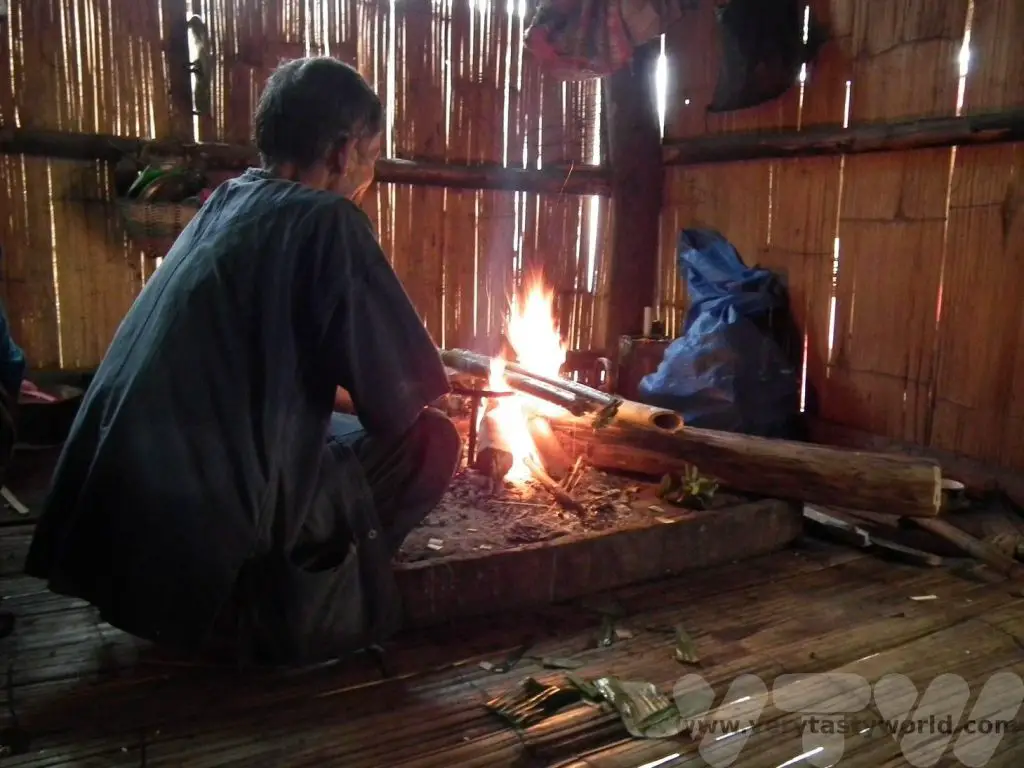
The houses have an open fire inside the main living area. River fish was ponassed onto sticks and cooked directly over the fire.
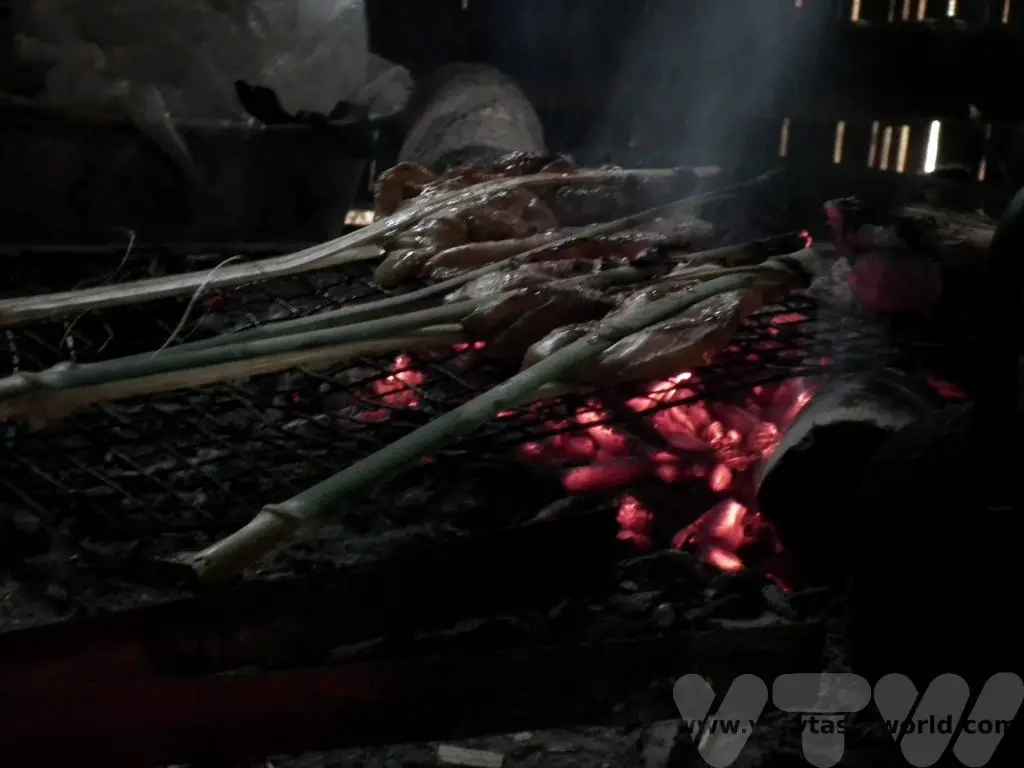
Bamboo stalks are segmented and hollow, so another part of meal was actually cooked inside these: Add sticky rice and water to a bamboo stalk, place it over a fire for a few minutes and… yummy sticky rice!
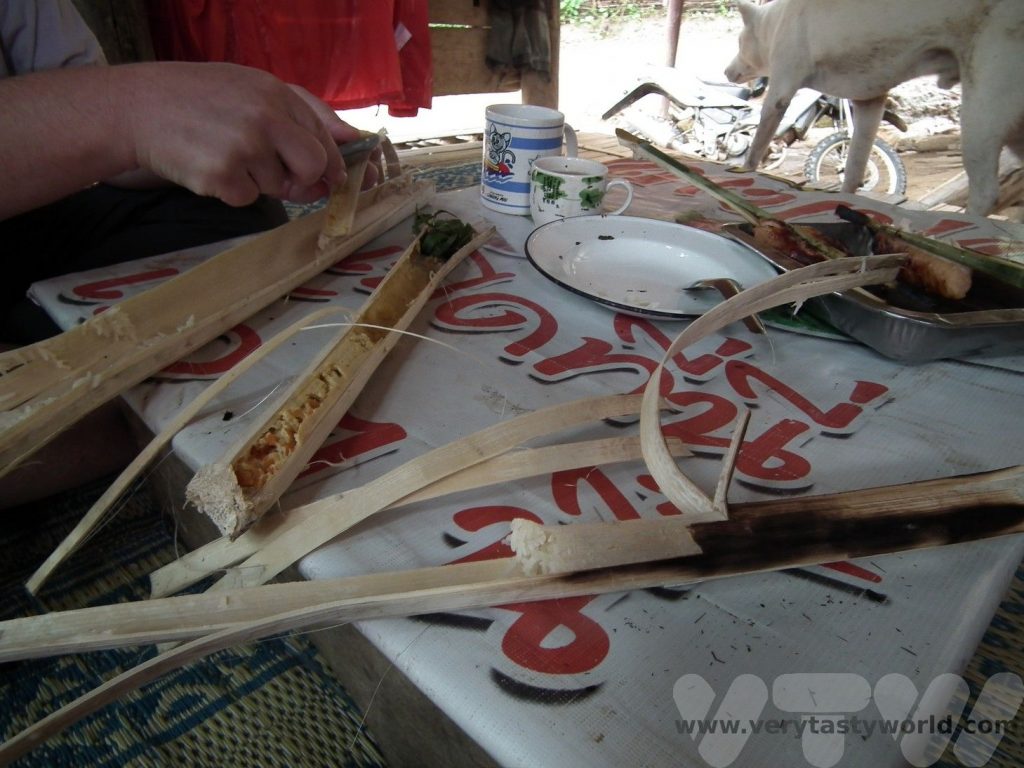
Pour some water into a stem, add a teabag, place over the fire and a few minutes later… a ‘pot’ of tea! Best of all was the egg – crack a couple of eggs, add some herbs, pour the mixture into the bamboo stalk, shake a bit, place over a fire (you guessed it) and a few minutes later… delicious cylindrical omelette.
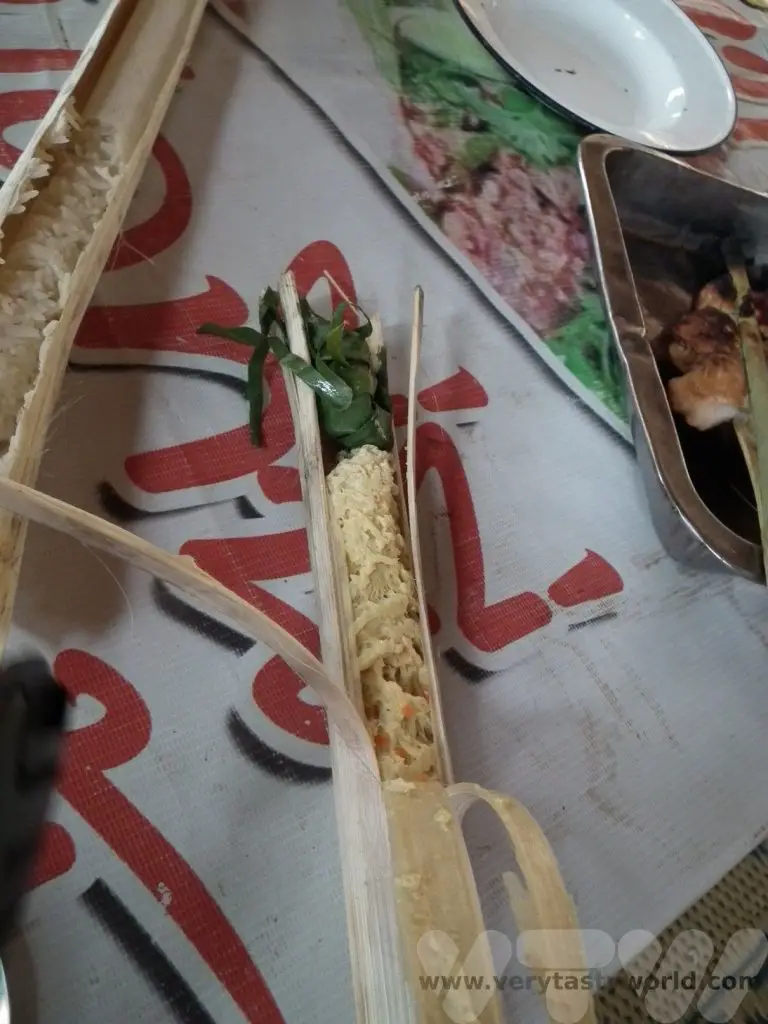
We then enjoyed a longboat ride along the Mae Kok river to visit the hot springs.
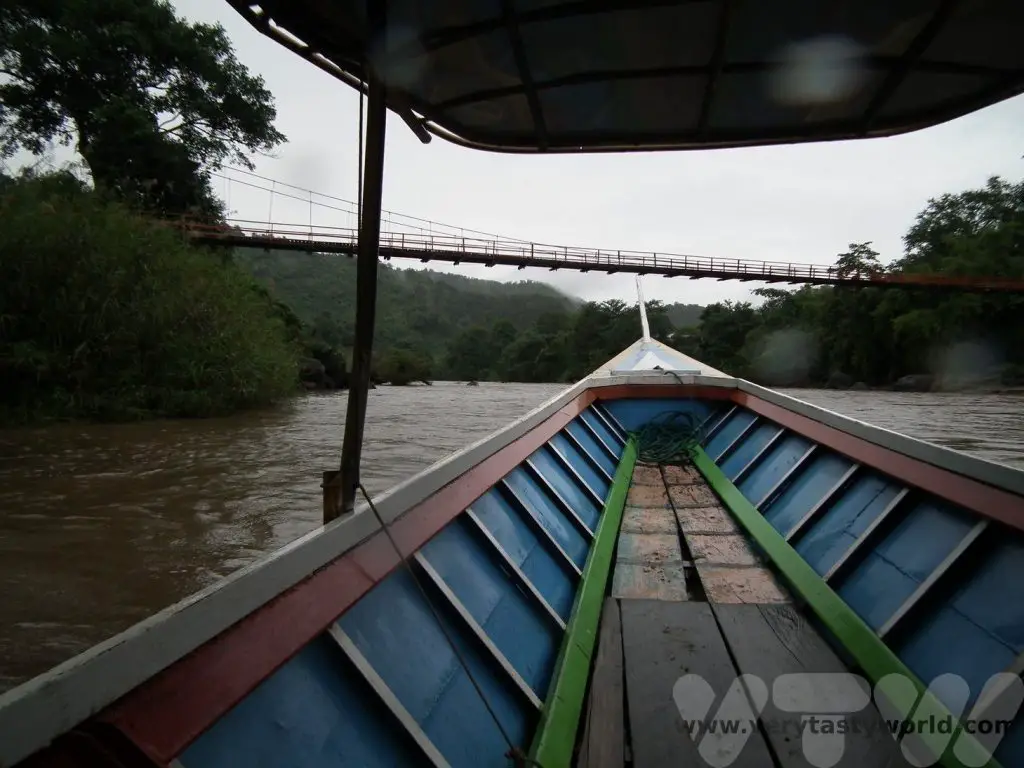
Some of the land in the area has been given over to commercial agriculture so it was also possible to walk to visit the local plantations. We could see bananas…
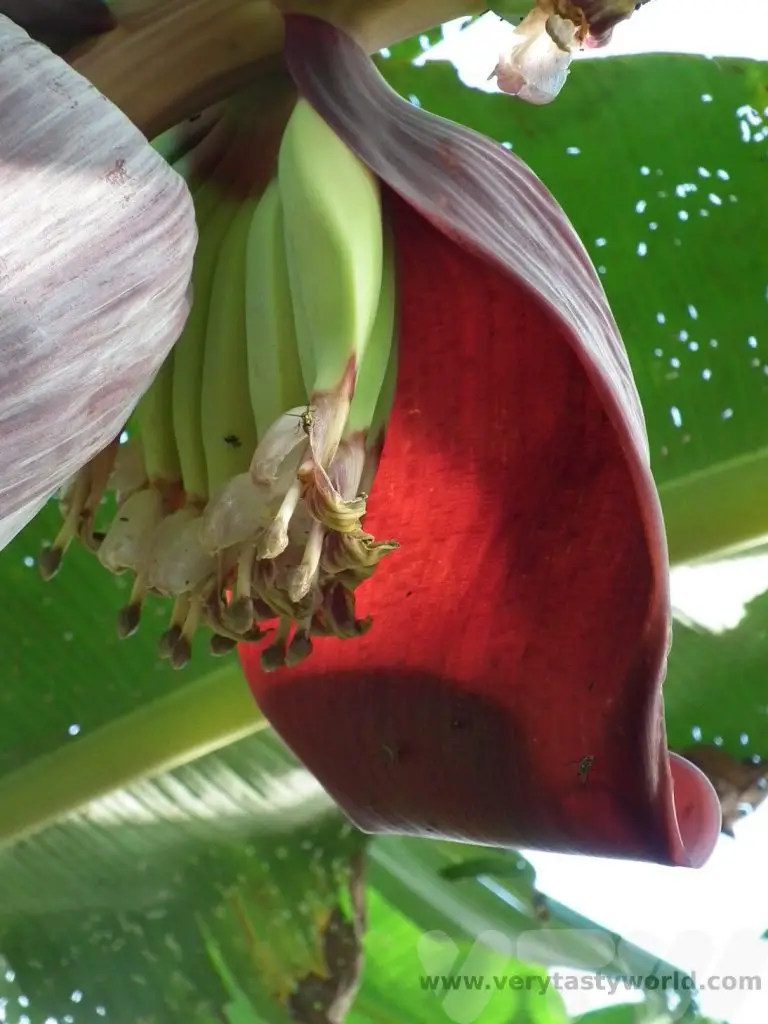
Pineapples…
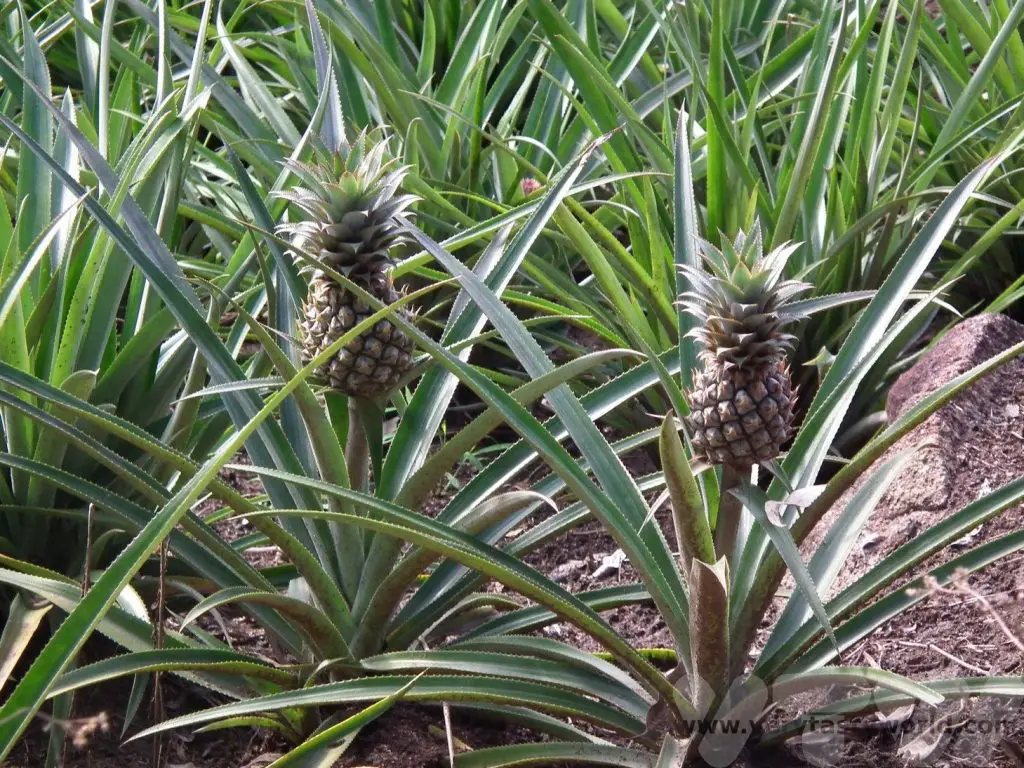
And tea.
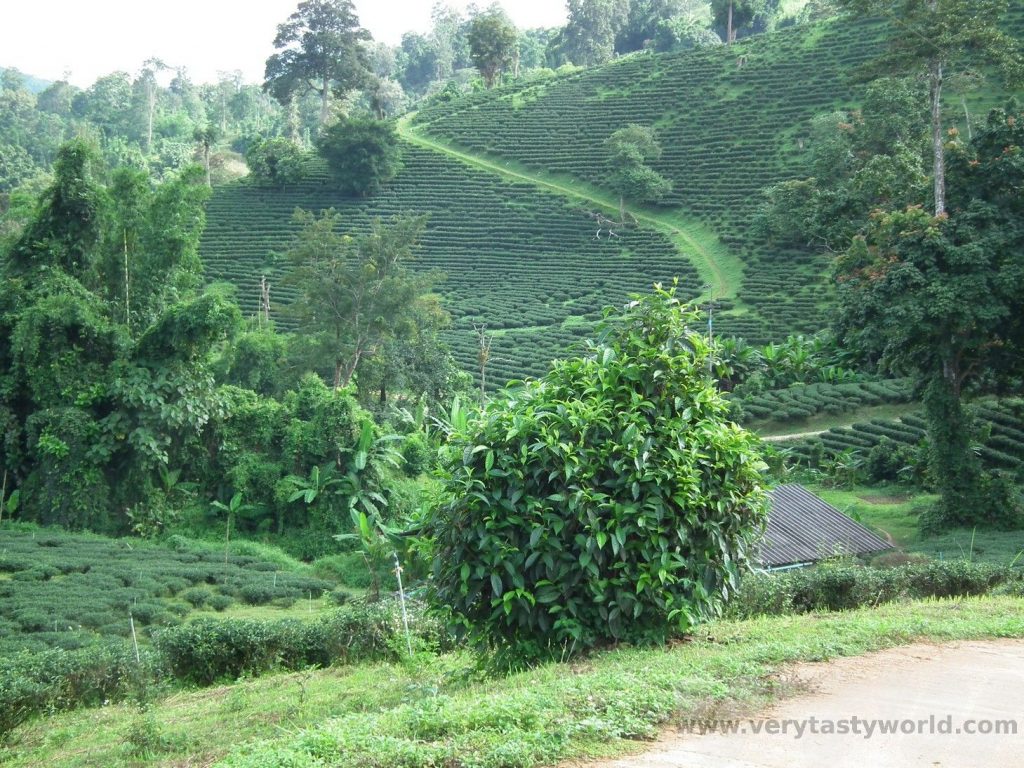
There were also some lovely waterfalls in the area.
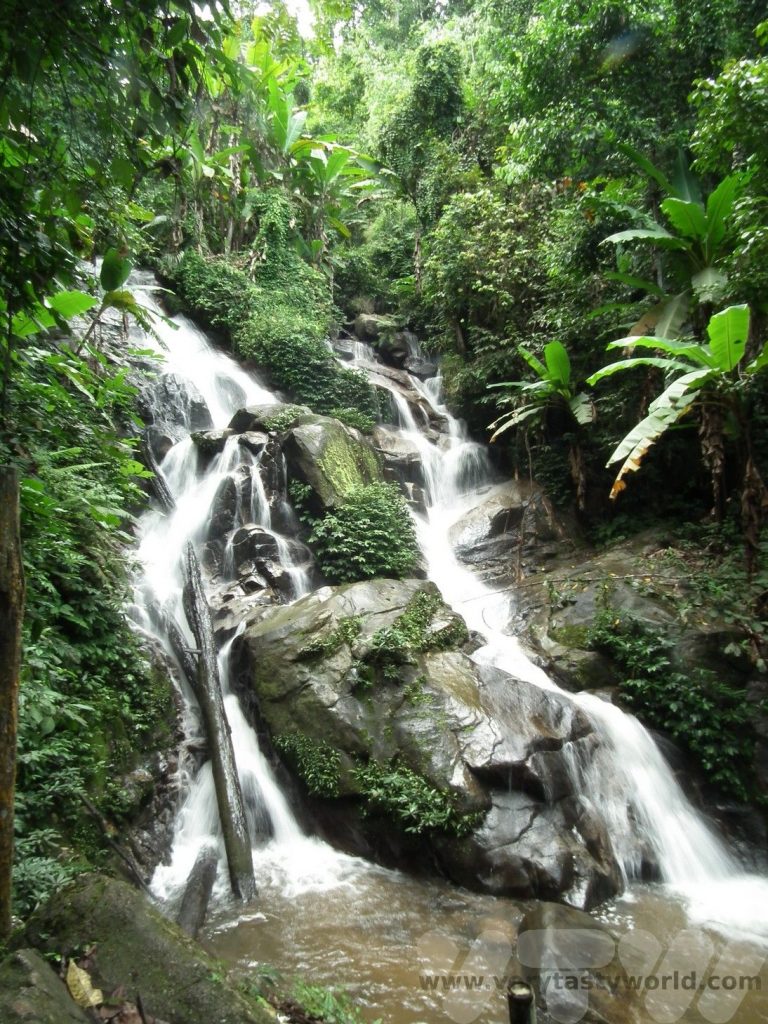
Each night a bonfire would be lit at Bamboo Nest and we could chat with the other guests and watch the glow of the fireflies flitting through the forest.
From the ostentation of the Chiang Rai temple to the simplicity of the remote hills of the Mae Bok basin, we couldn’t have had a more contrasting experience in this region of northern Thailand.
We just didn’t have time to visit Chiang Rai itself!
Related Posts You May Enjoy

Setsubun Food – Bean Throwing Day
Feb 3rd is Setsubun in Japan. Which means that it’s mame maki, or bean throwing, day. Setsubun is one day before Risshun – the first day of spring in the lunar calendar. It’s not considered to be the official new year, which is celebrated on the 1st January, but rather a new start. There are various ceremonial activities associated with the festival, including setsubun food.
Traditionally people throw roasted soy beans (fuku mame) at home, with the shout of ‘oni wa so to’ (get out demons!) and ‘fuku wa uchi’ (come in happiness!) Sometimes the beans are just thrown out of the front door but they may also be thrown at a family member wearing an oni – demon – mask. If people eat the number of fuku mame that’s equal to their age it’s believed that they will be healthy and happy for the year ahead.
Bean throwing ceremonies also take place at shrines across Japan. The Senso-ji temple in Asakusa will have thousands of visitors arrive to take part. Celebrities and sometimes sumo wrestlers are known to turn up to some of the events.
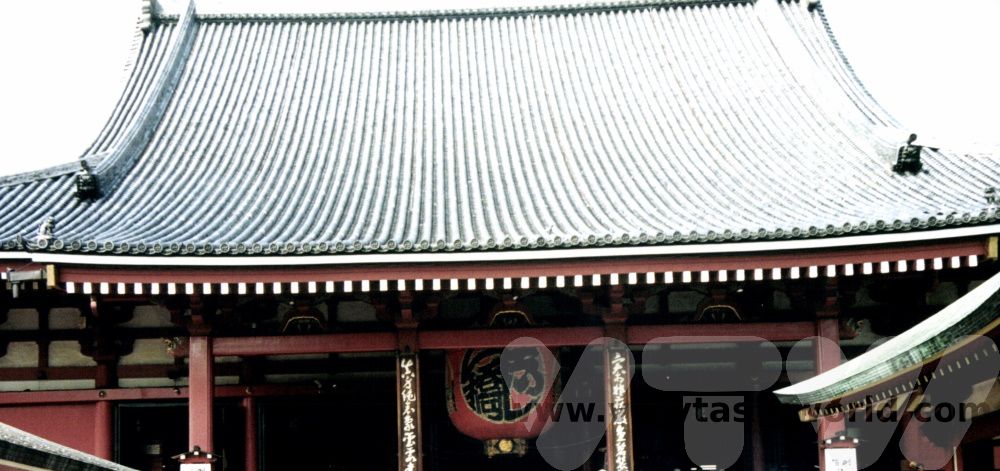
Setsubun Food Tradition
Over the years a foodie setsubun tradition has developed. This is thought to have originated in the Kansai region, in Osaka (always a great place for foodies!) and has become more popular throughout Japan over the years.
It involves eating ehomaki (good luck direction rolls) which are sushimaki rolls that haven’t been cut up. The idea is to eat the roll while facing in the lucky direction. You will need a compass because the direction is quite specific. Last year was the year of the rabbit and therefore the direction was south-south-east. 2024’s direction is east-northeast for maximum luck.
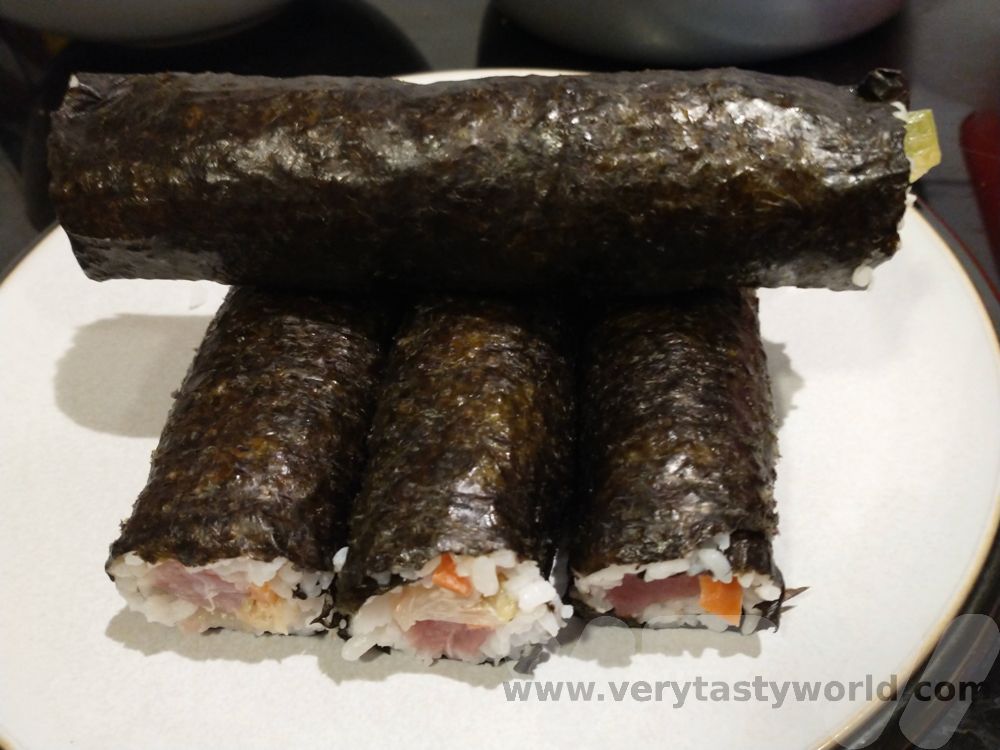
We often make maki rolls using a bamboo rolling mat. They are the easiest sushi to make, even for clumsy cooks such as we. When you’ve had a go at making nigiri or gunkan sushi you realise why it takes 10 years to train as a sushi chef!
There are lots of options for ehomaki filling. One of our favourites is maguro tuna with spicy kimchi and mayo.
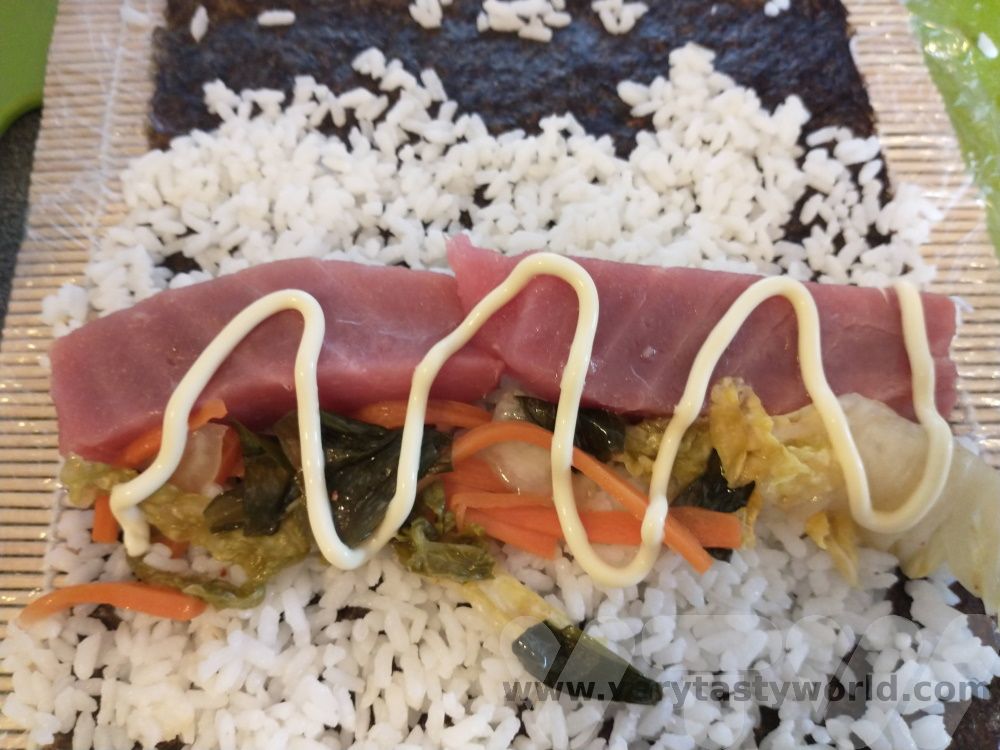
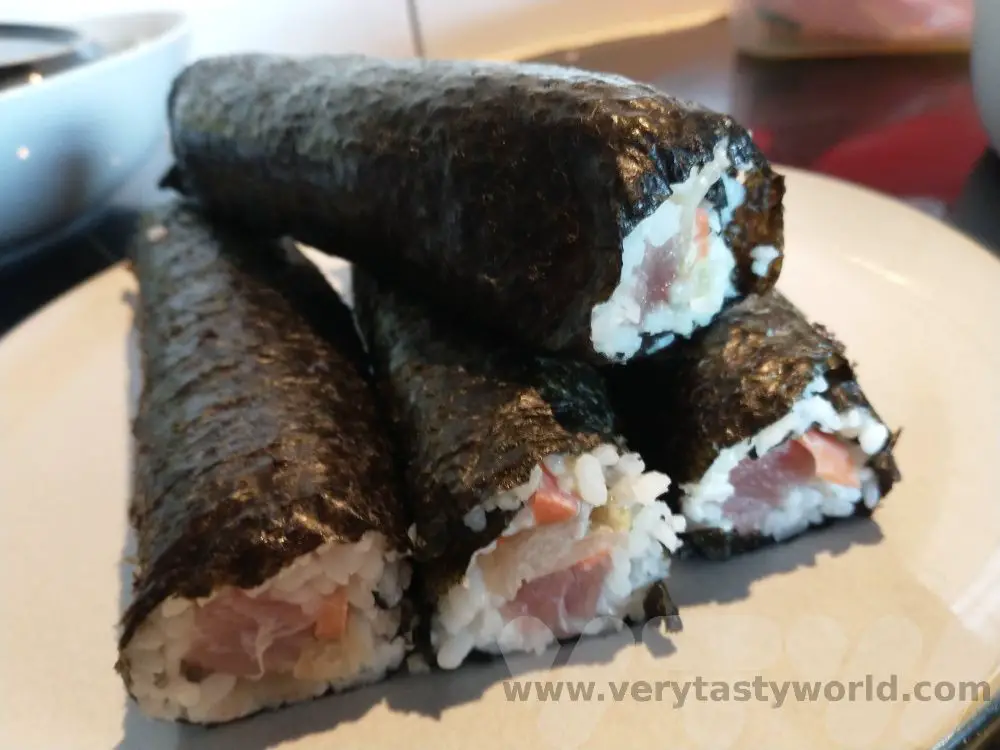

- Recipe: Simmered Shiitake Mushrooms
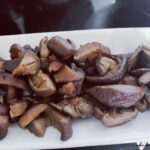
- How to Use Public Transport in Japan

- RECIPE Oyakodon Donburi

- Planning a Trip to Japan
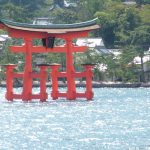
- The Makanai: Cooking for the Maiko House
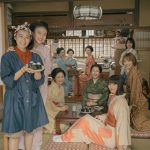
- Setsubun Food – Bean Throwing Day

- The Gassho Farmhouses of Rural Japan
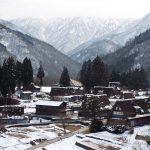
- Recipe: Japanese Simmered Pork Belly – Buta no Kakuni

- RECIPE: How to Make Umeboshi
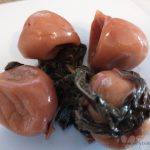

- RECIPE Oyakodon Donburi
- Zero Waste Recipes Before Your Holiday
- RECIPE: Vegetable Biryani Tamil Nadu Style
- RECIPE: Vegan Wild Garlic Pesto
- Recipe: Venetian Pasta Sauce
- RECIPE: Biryani Raita Recipe
- RECIPE: How to Make Costa Rica’s Gallo Pinto
- Recipe: Japanese Simmered Pork Belly – Buta no Kakuni
- RECIPE: How to Make Umeboshi
Happy New Year of the Rabbit
Year of the Rabbit begins 22nd January 2023 and celebrations will ensue.
Like many festivals all over the world, such as Diwali, Eid and Easter, Chinese New Year is derived from the lunar calendar and is celebrated with food, family reunions and festivities.
The animals associated with the years are based upon the Chinese horoscope. All twelve signs of the Chinese zodiac have different symbols and it is thought that people’s character traits can be reflected in those born in a particular year.

So the personality traits for someone born in the Year of the Rabbit could be deemed to be quiet, elegant, kind and responsible. The characteristics of Very Tasty World’s founders could be reflected in their zodiac animals because VTW has a compassionate, generous and very diligent Pig associating with a sharp, smart, recondite cheeky Monkey.

Our visit to China during the latter part of the New Year celebrations, known as Spring Festival, some years ago can be found in the post Gong Xi Fa Cai or Gung Hay Fat Choy! Happy New Year! It was a joyful time.
Food For the Festivities
Like many annual celebrations and gatherings this is the time for family and food with wide celebrations. Reunions and recipes join together in sociability and culinary joy.
Some of the more popular traditional dishes associated with lunar new year in China include a whole fish cooked with ginger, garlic and spring onion. Jiaozi – dumplings- represent coins which symbolise prosperity throughout the year. Long noodles suggest longevity and happiness and spring rolls signify wealth.
We have a recipe for baked whole fish cooked with ginger, garlic and spring onions using sea bass. The fish is always served whole as the head and tail represent the start and end of the year.

And it’s not all savoury. Sweet glutinous rice cakes suggest the possibility of moving up in the world and sweet rice balls which represent family harmony. Happy New Year!

- RECIPE Oyakodon Donburi
- Zero Waste Recipes Before Your Holiday
- RECIPE: Vegetable Biryani Tamil Nadu Style
- RECIPE: Vegan Wild Garlic Pesto
- Recipe: Venetian Pasta Sauce
- RECIPE: Biryani Raita Recipe
- RECIPE: How to Make Costa Rica’s Gallo Pinto
- Recipe: Japanese Simmered Pork Belly – Buta no Kakuni
- RECIPE: How to Make Umeboshi
RECIPE: How to Make Costa Rica’s Gallo Pinto
Gallo pinto is Costa Rica’s national dish. It’s so popular it can be eaten for breakfast, lunch and dinner. It comprises rice and beans cooked together and served with a variety of accompaniments – such as sausage, vegetables and eggs.
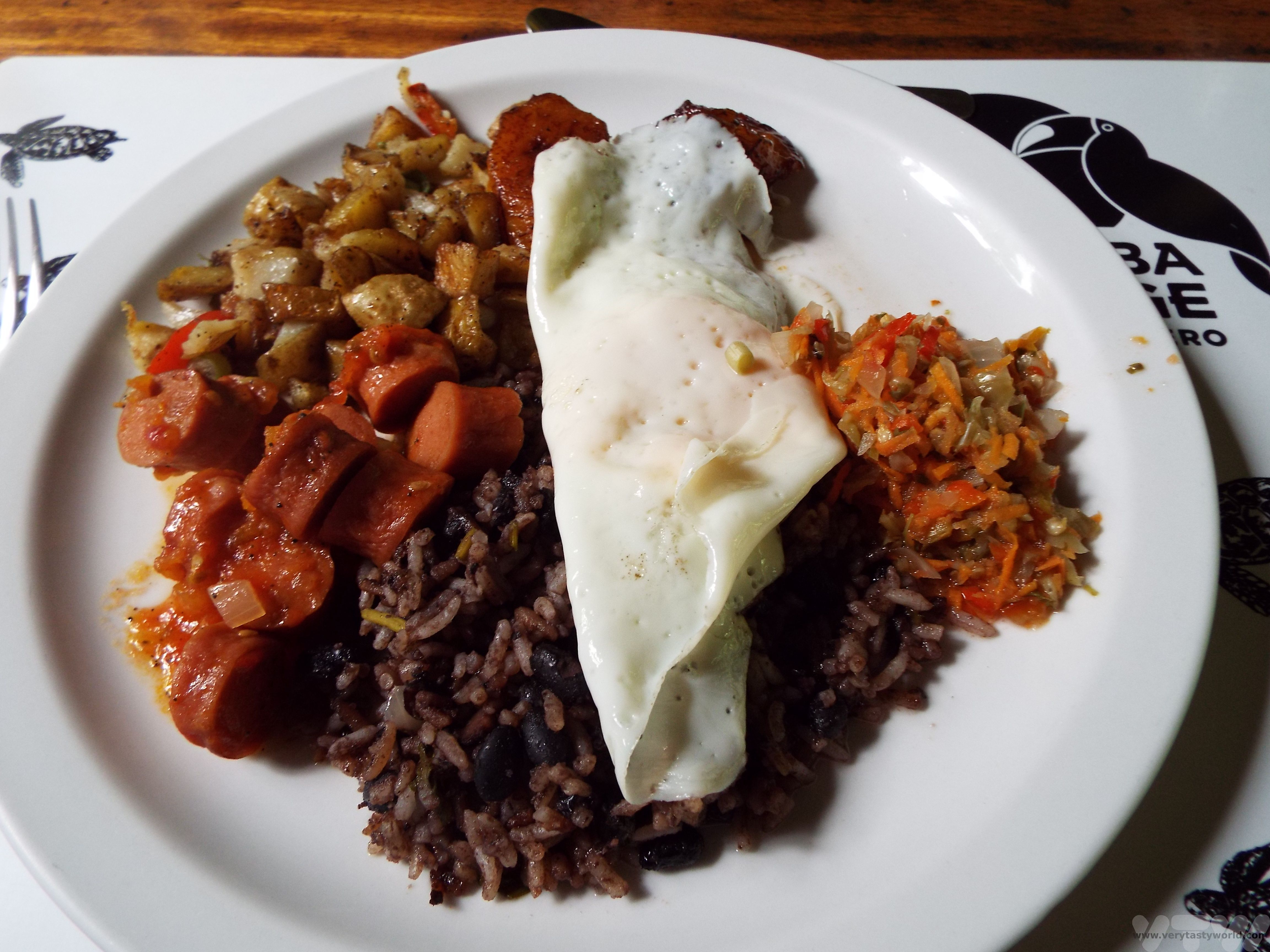
Gallo pinto can be translated as “spotted rooster” and refers to the black beans dotted through the white rice, the colours of which resemble a speckled chicken. Costa Rican food is considered to be highly nutritious and gallo pinto is no exception, but importantly, it’s also hearty, filling and delicious.
The type of rice used is traditionally white long grain. Brown rice or short grain rice is okay to use if that’s what you have. Gallo pinto is great if you cooked too much rice for dinner the night before – it’s an ideal leftovers meal.
The sauce used in this dish is called Lizano. If you ask for salsa at a restaurant in Costa Rica they will bring Lizano. It is used to accompany many dishes and we managed to bring back a couple of bottles from our trip. It is a tangy, spicy (but not searingly hot) sauce that has a lovely piquancy. It’s available in the UK but often at a massively inflated price – we’ve seen it available at an eye-wateringly expensive £30 for two bottles! No, we didn’t buy it. Instead we’ve worked out a recipe using easily available sauces/spices that replicates the flavour pretty well.
Gallo Pinto Recipe (Serves 4)
Ingredients
2 cups long grain white rice (our cups are around 150 ml)
1 tin of black beans (240g)
2 Tbs Lizano sauce (if you can’t get this you need 1 Tbs brown sauce, 2 tsp Worcestershire sauce, 1/2 tsp cayenne pepper, 1 tsp celery salt)
Clove or two of garlic (depending on how garlicky you feel), finely sliced or crushed
2 tsp cumin
1 egg per person
Lots of fresh coriander
Side Dish/Accompaniment Ingredients
Chopped vegetables – bell peppers, tomatoes, onion
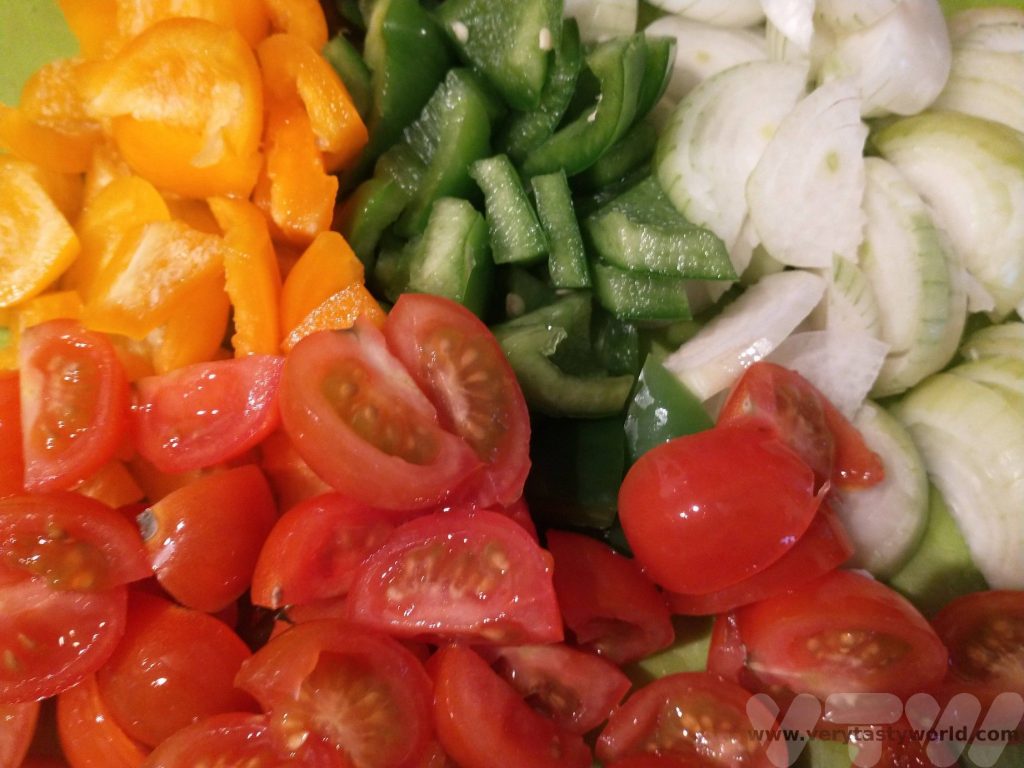
Method
Cook the rice. We use a ratio of 2 cups of water to 1 cup of rice. Our cups are around 150ml in size. Gallo pinto uses long grain rice.
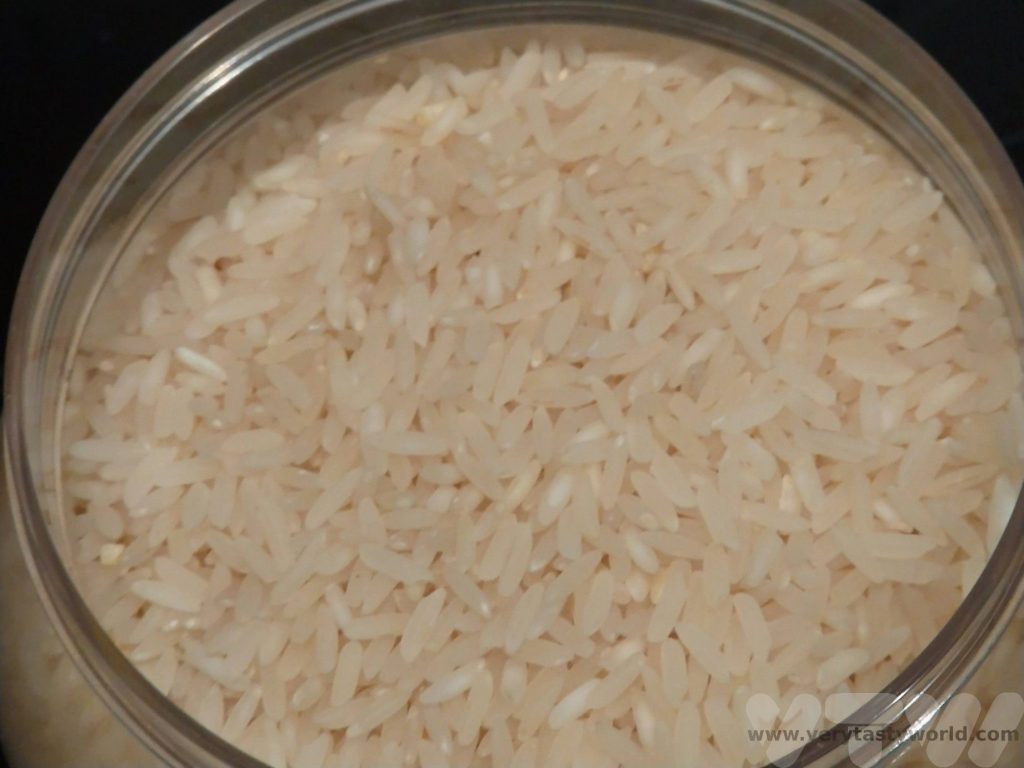
We use a rice cooker which is absolutely brilliant for cooking rice (as well as other things) as we can just bung the rice and water in and set it off. If you don’t have a rice cooker a saucepan is fine – use the same ratio of rice to water. When the rice has absorbed all the water it should be done. It’s absolutely fine to cook the rice well in advance and let it cool, in fact, it’s probably better not to put hot rice into the gallo pinto. Sometimes if we’re having a meal with rice the day before, we’ll make extra rice and let it cool down so that we can have gallo pinto the next day.
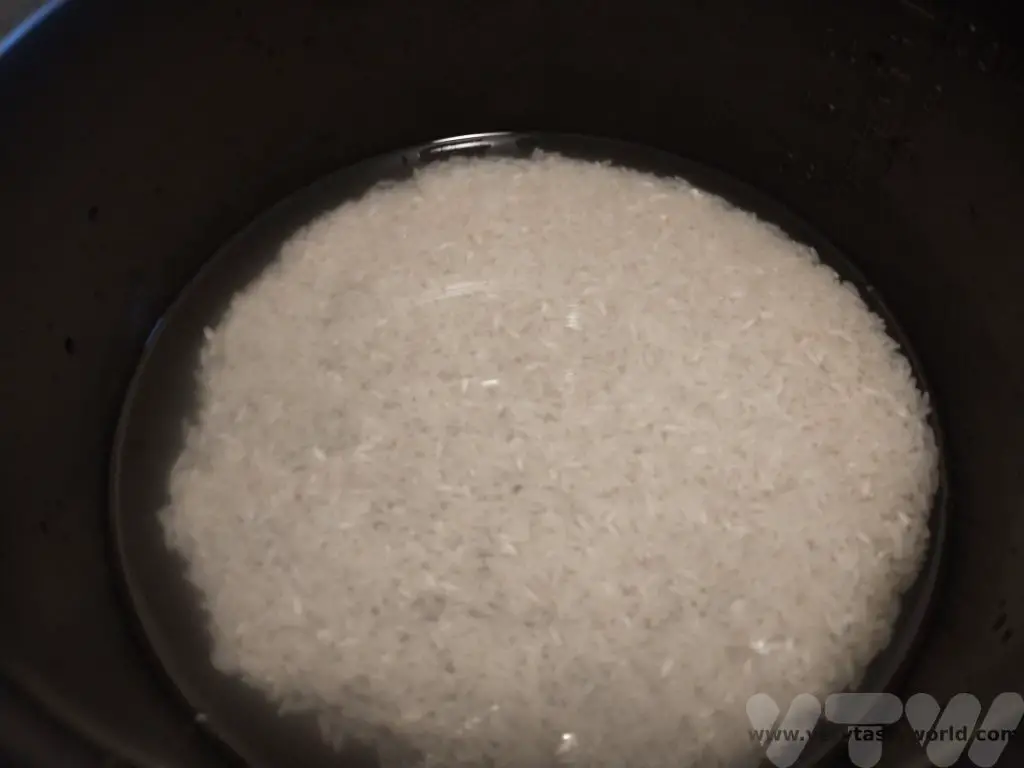
When ready to make the gallo pinto, gently fry the garlic in oil and add the cumin. Then add the rice and stir through.
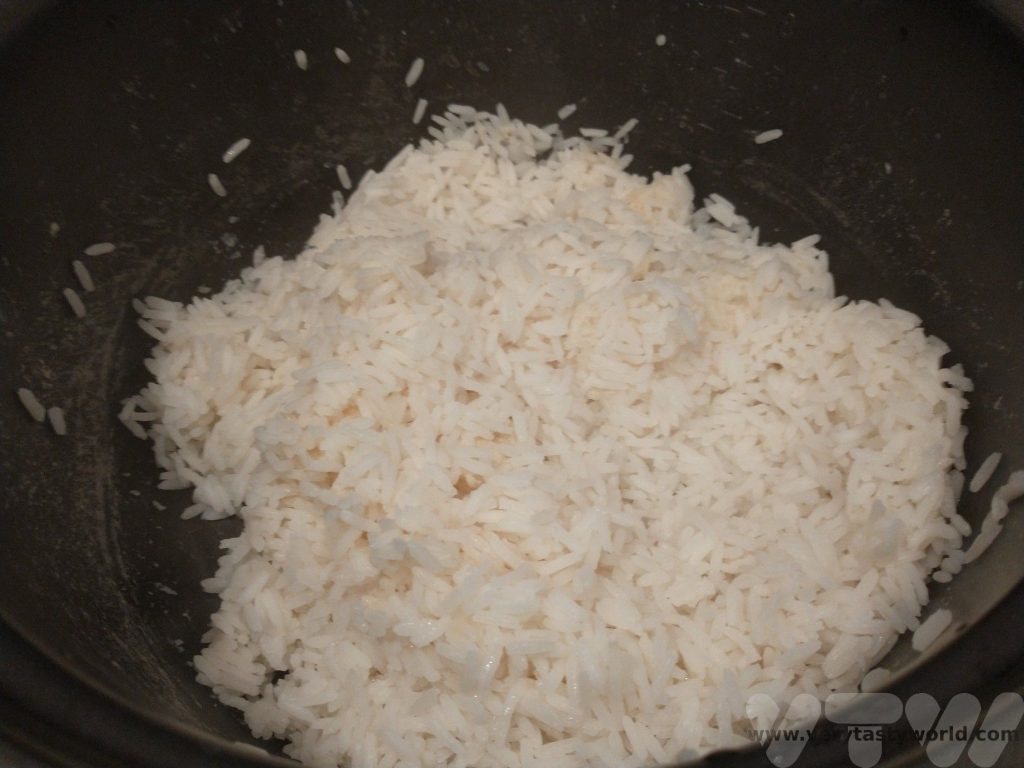
Open the tin of black beans and add the entire contents – including the water.
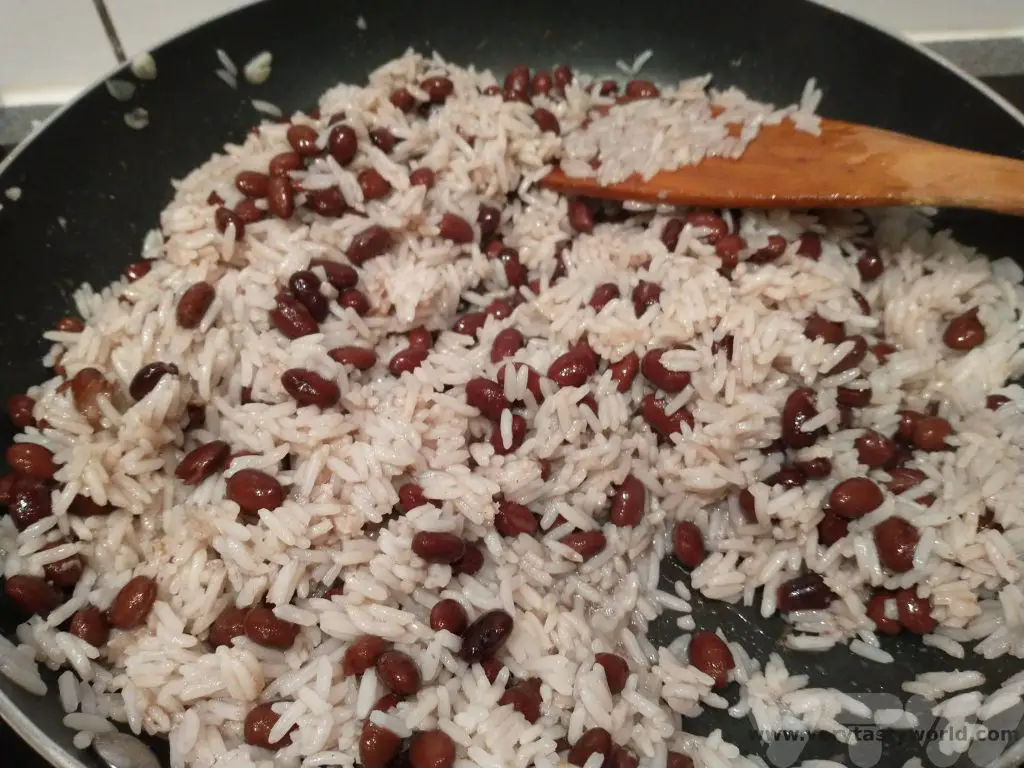
Add 2 Tbs of Lizano sauce.
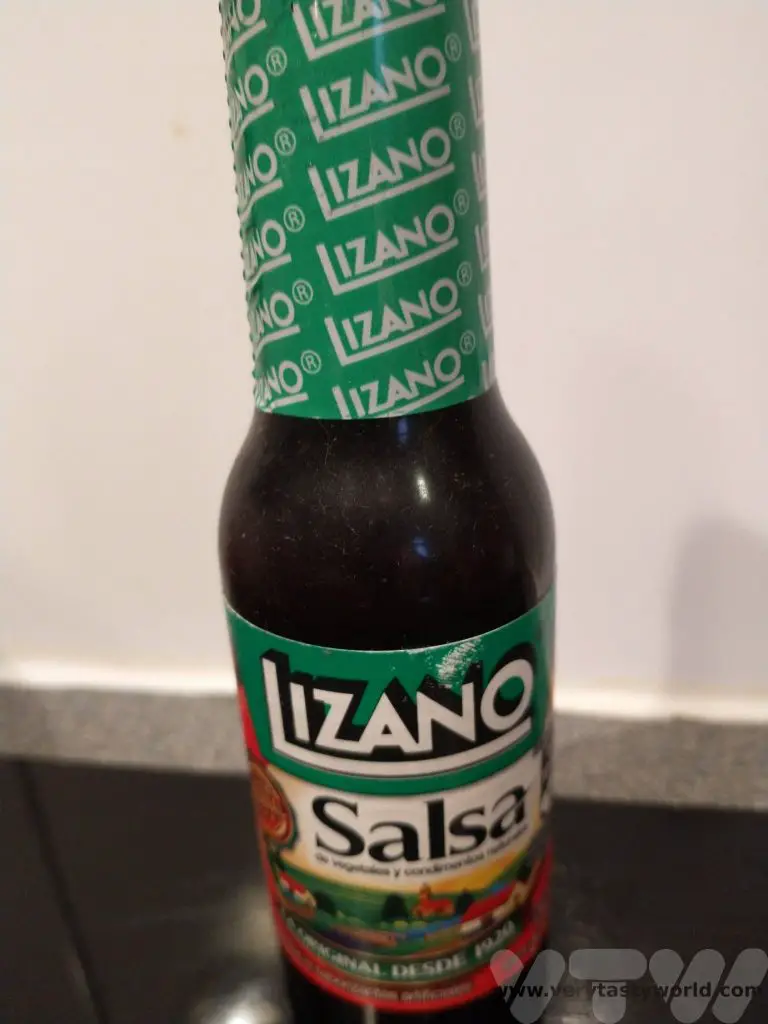
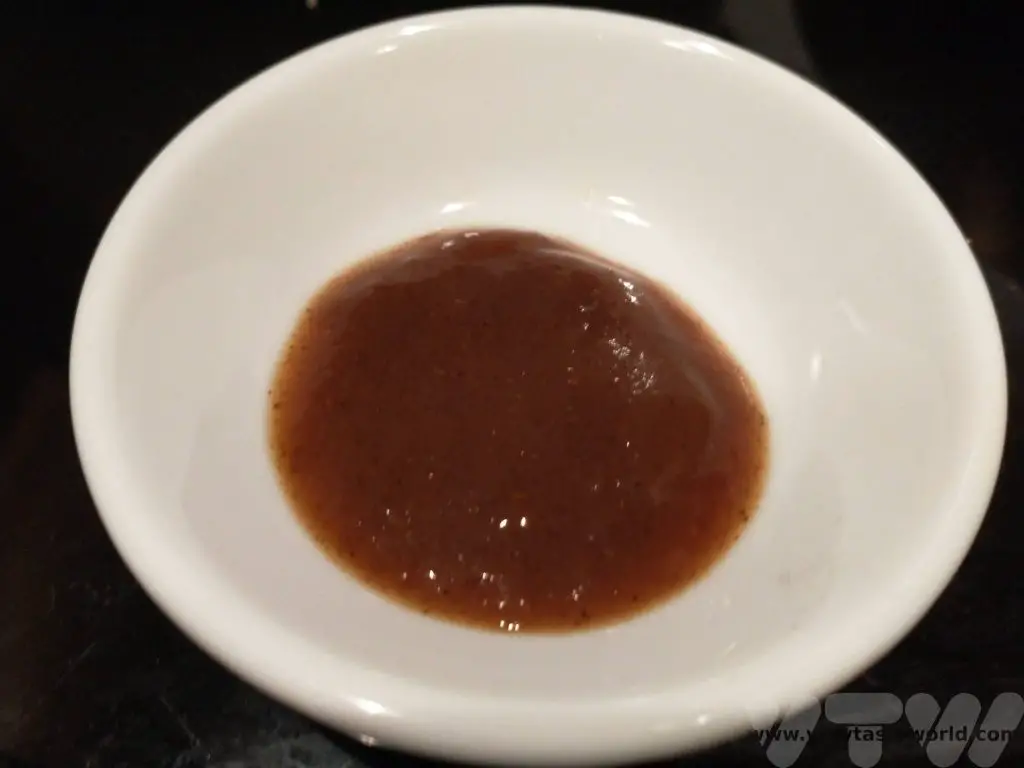
If you can’t get Lizano you can make a reasonable approximation by mixing brown sauce and Worcestershire sauce with spices: 1 Tbs brown sauce, 2 tsp Worcestershire sauce, 1/2 tsp cayenne pepper, 1 tsp celery salt.
Mix it all together gently.
Let the gallo pinto keep warm on a low heat while you fry an egg for each person.
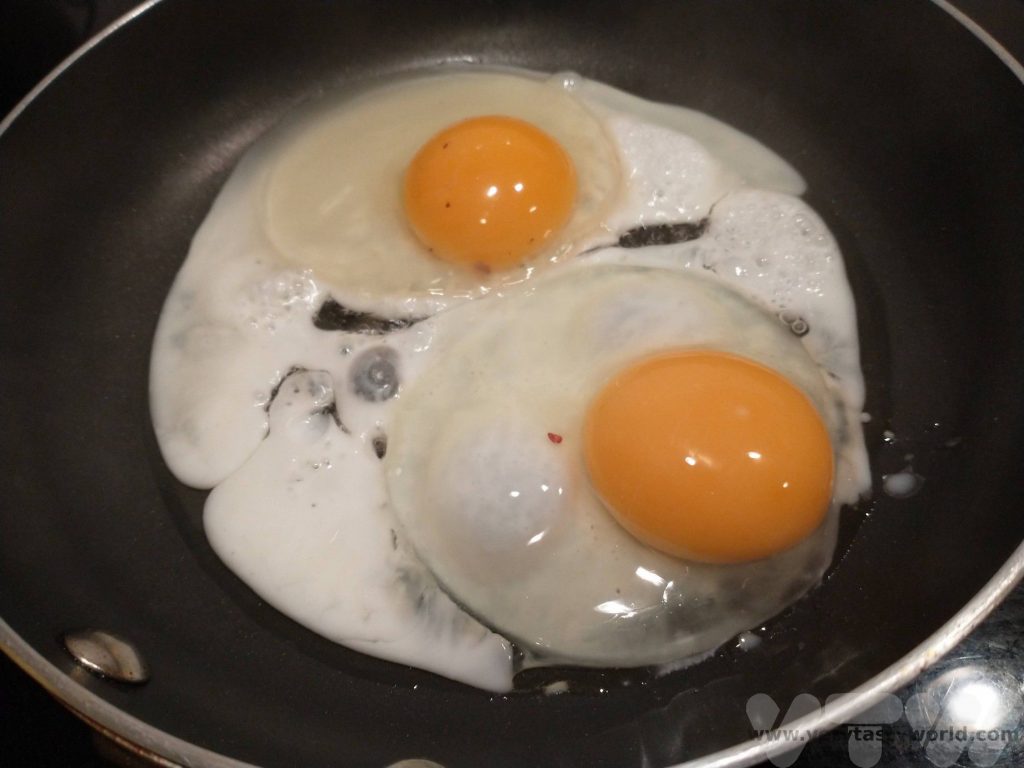
Garnish with chopped coriander.
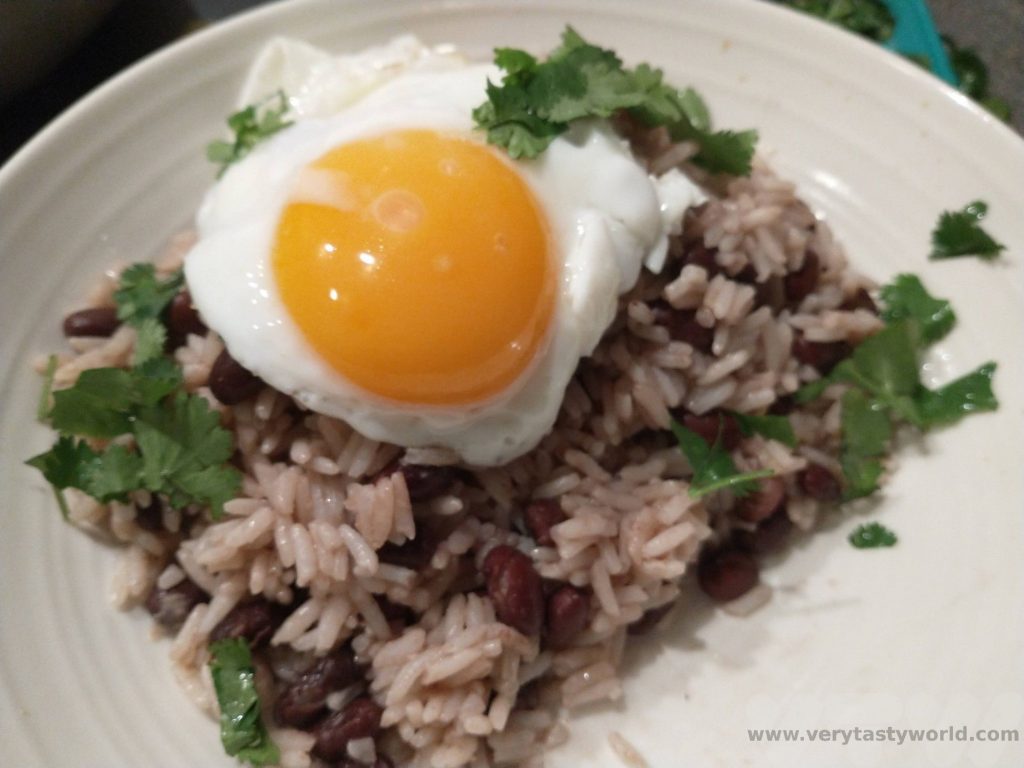
For a more complete meal, stir fry some vegetables and serve alongside the gallo pinto.
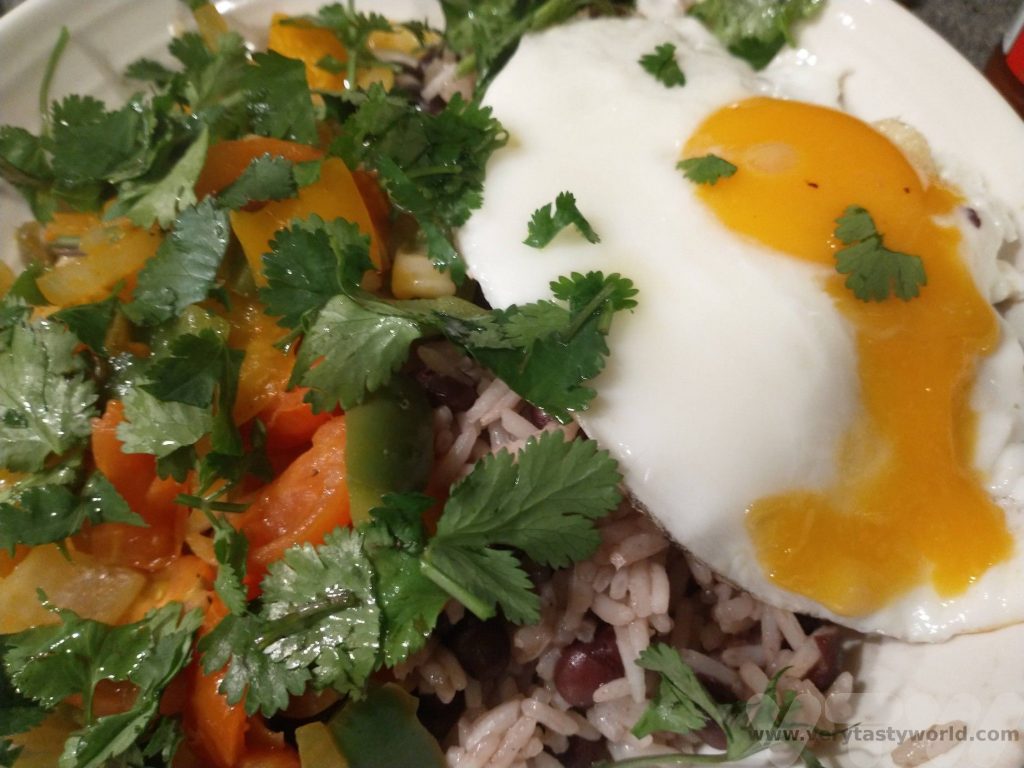
Alternative – at the garlic frying step, add chopped vegetables such as onion or bell pepper and stir into the gallo pinto itself.
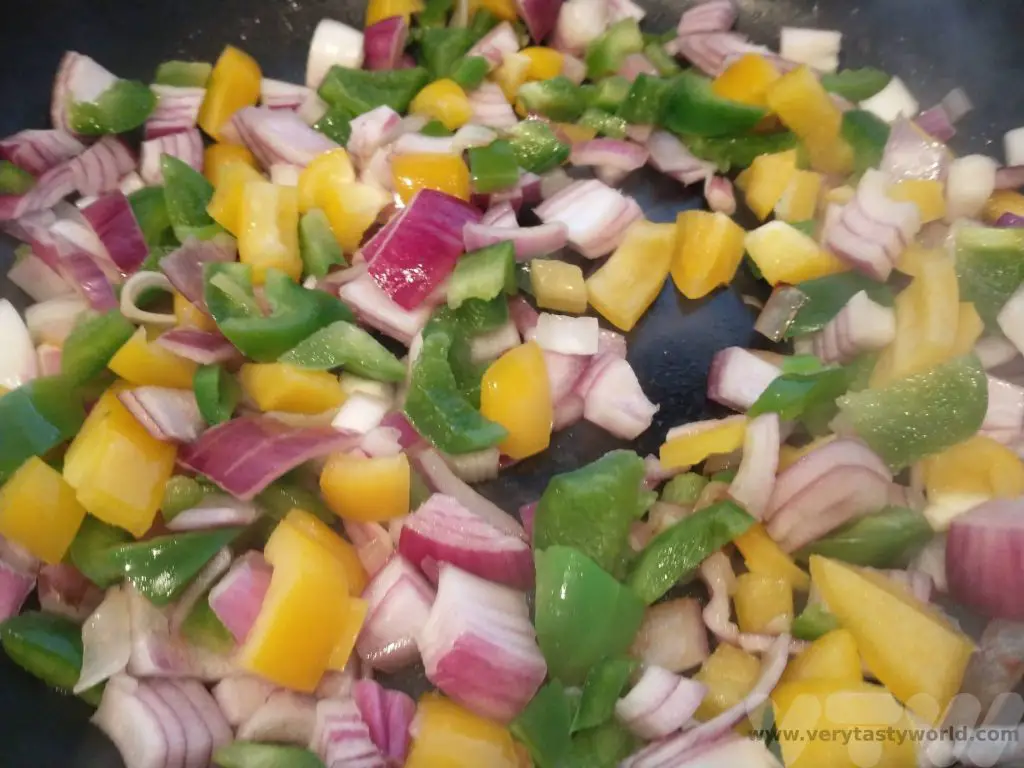
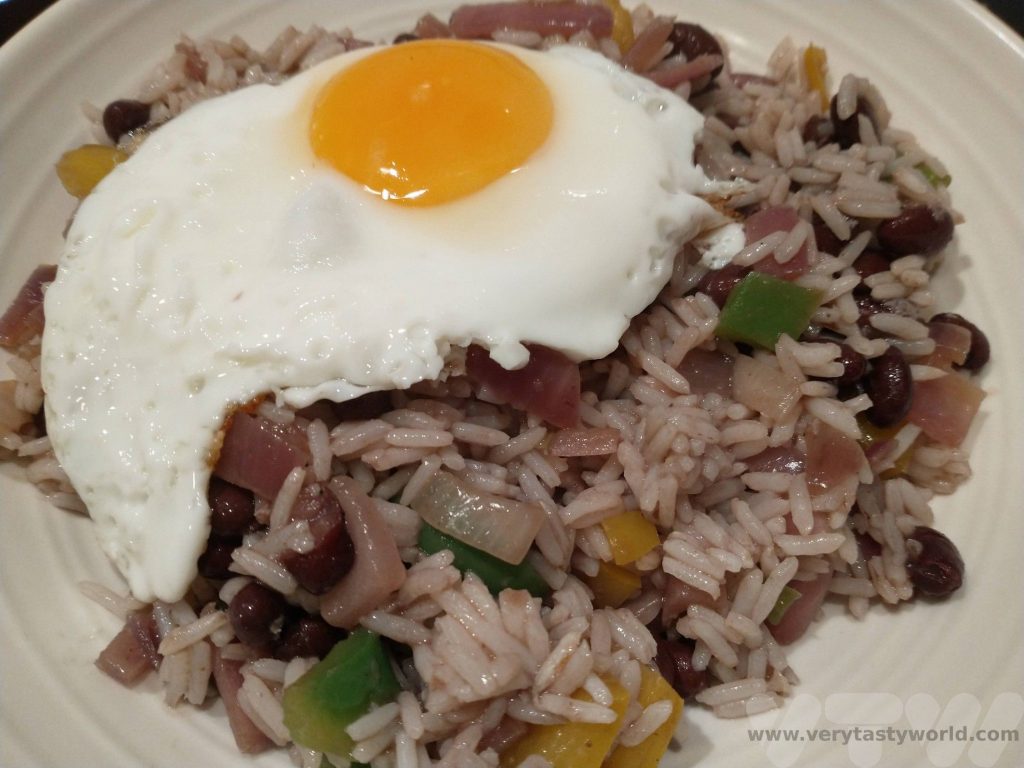
Gallo pinto can be eaten as a meal in itself but can also accompany other dishes. We enjoyed it with steaks, sausages and fried plantain amongst many other delicious ingredients.
Related Posts You May Enjoy

- Best Time To Visit Machu Picchu 2024 Update
- A 2 Week Patagonia Itinerary
- Day of the Dead in Campeche
- A Galapagos Land Based Itinerary
- RECIPE: How to Make Costa Rica’s Gallo Pinto
- A Tasty Puebla Food Tour
- Costa Rica Wildlife Sanctuary – Caño Negro
- Visit Torres del Paine National Park in Patagonia
- Atacama Desert Itinerary

- RECIPE Oyakodon Donburi
- Zero Waste Recipes Before Your Holiday
- RECIPE: Vegetable Biryani Tamil Nadu Style
- RECIPE: Vegan Wild Garlic Pesto
- Recipe: Venetian Pasta Sauce
- RECIPE: Biryani Raita Recipe
- RECIPE: How to Make Costa Rica’s Gallo Pinto
- Recipe: Japanese Simmered Pork Belly – Buta no Kakuni
- RECIPE: How to Make Umeboshi
The Gassho Farmhouses of Rural Japan
It’s not often that we use the word ‘unique’ because very often things described as such usually aren’t. Unique, that is. But there are some villages in rural Japan that are the only examples of their kind and they offer a fantastic glimpse into traditional life in the Japanese countryside.
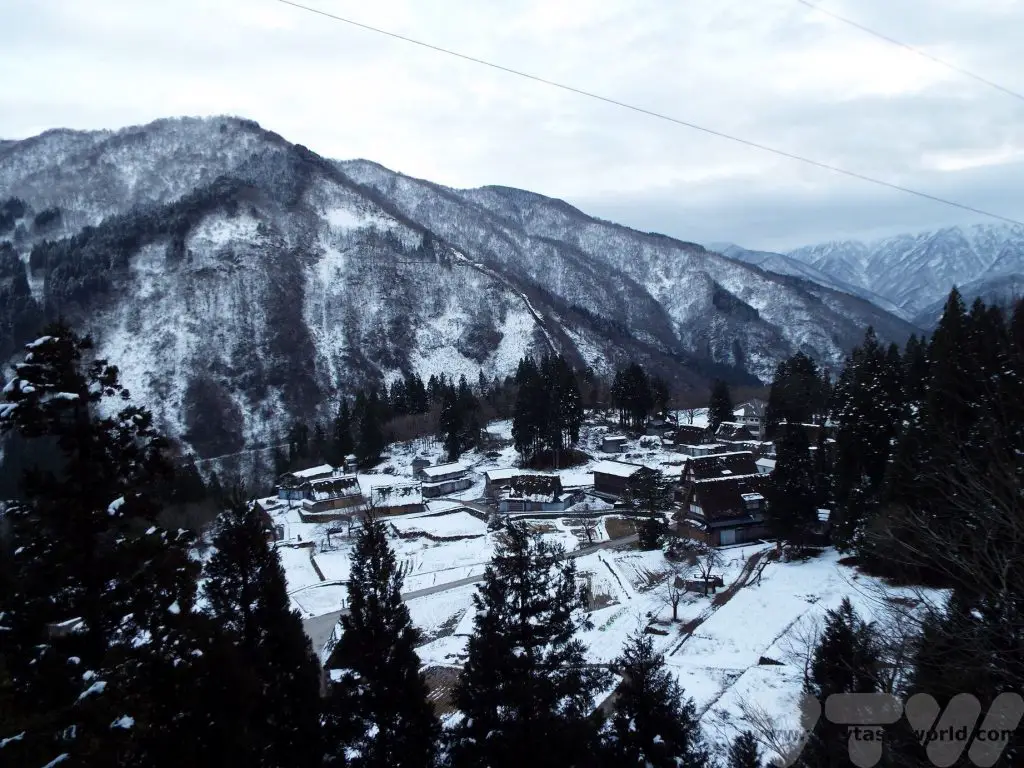
The historic mountain villages of Shirakawa-go and Gokayama have been designated as UNESCO heritage sites and were historically quite isolated from the rest of the world. The villages Ogimachi in Shirakawa-go, and Ainokura and Suganuma in the Gokayama region are located in central Honshu, on the Shogawa river valley, across the borders of the Gifu and Toyama Prefectures.
Ogimachi is probably the most famous of the villages and is known for its light-up events, where the whole village turns their lights on in winter-time and visitors come from far and wide to marvel at the beauty of a snowy wonderland. These are scheduled events and hugely popular. Reservation is essential, not only for staying in the village but also for attending the viewing and some transportation options.
Initially when planning our winter trip we thought that Ogimachi would be the obvious place to visit but unfortunately everybody else thinks that too. It was impossible to find accommodation in this lovely village, even when trying to book several months in advance. But we had a Plan B which worked very well indeed. Ainokura is smaller and quieter but similarly delightful.
Getting to Ainokura in Rural Japan
We had been staying in a business hotel in the lovely city of Kanazawa on the western coast of Japan and, as we planned to return there, left our main luggage at the hotel and just took an overnight bag with us. We then caught the shinkansen (bullet train) from Kanazawa to Shin-Takoaka. It is possible to catch a bus to Ainokura from Shin-Takoaka – the journey takes just over an hour or so – but we caught possibly the cutest train ever to Johana and caught our bus from there.


Ainokura can also be reached from Toyama. The shinkansen goes to Toyama and it’s possible to catch a bus from there. It is feasible to visit the village as a day trip from both Takoaka and Toyama but we recommend staying overnight.
Our bus to Ainokura left from Johana station and we embarked on a pleasant journey through the Japanese countryside. A short walk from the main road took us into the village.
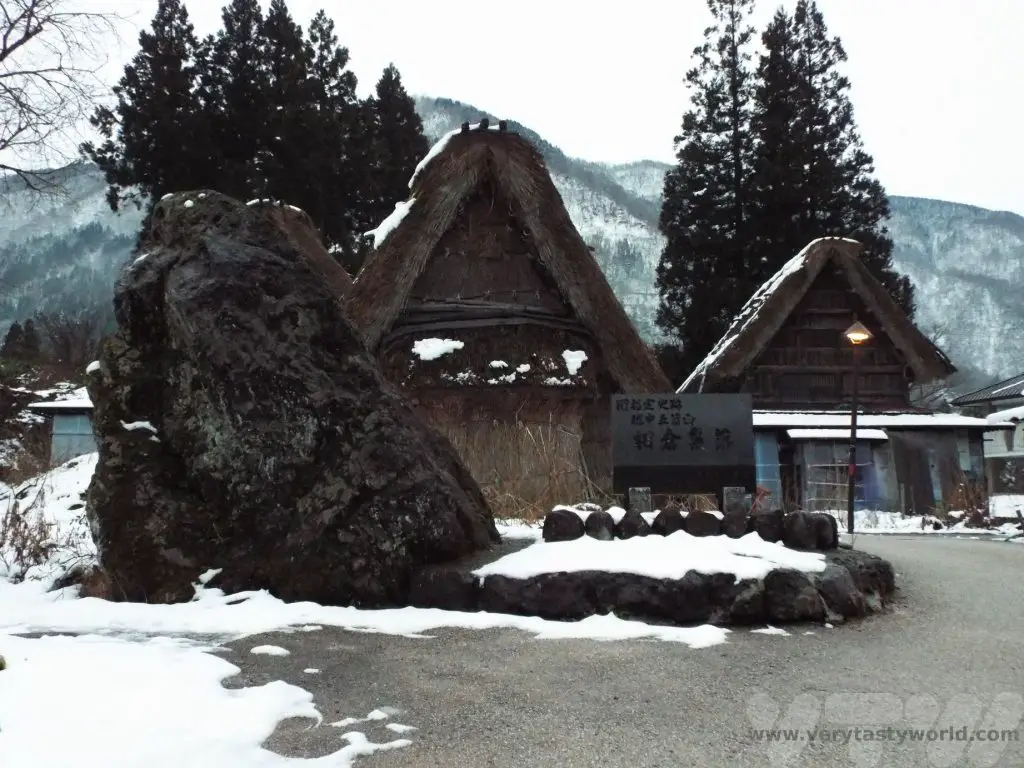
A word of warning: If you are visiting during the winter the area can experience a lot of snowfall – 2-3 metres on occasion. This may mean that occasionally buses can’t get through and are delayed until the roads can be cleared. It’s worth bearing this in mind when planning your onward journey.
Staying in a Gassho Farmhouse
The farmhouses are called ‘gassho’ which means ‘joining hands in prayer’ due to their very steeply pitched thatched roofs. Because the area experiences such heavy snow in winter, the roof design ensures that snow falls off the building quickly and this helps prevent the structure being crushed by its weight.
The houses have three or four levels – the top levels are not living areas but used for various industrial or farming purposes, such as making washi paper or rearing silkworms.
The front and back have a large gable with windows to let the light in.
We booked a room at Yomoshiro ryokan, a delightful family run house.
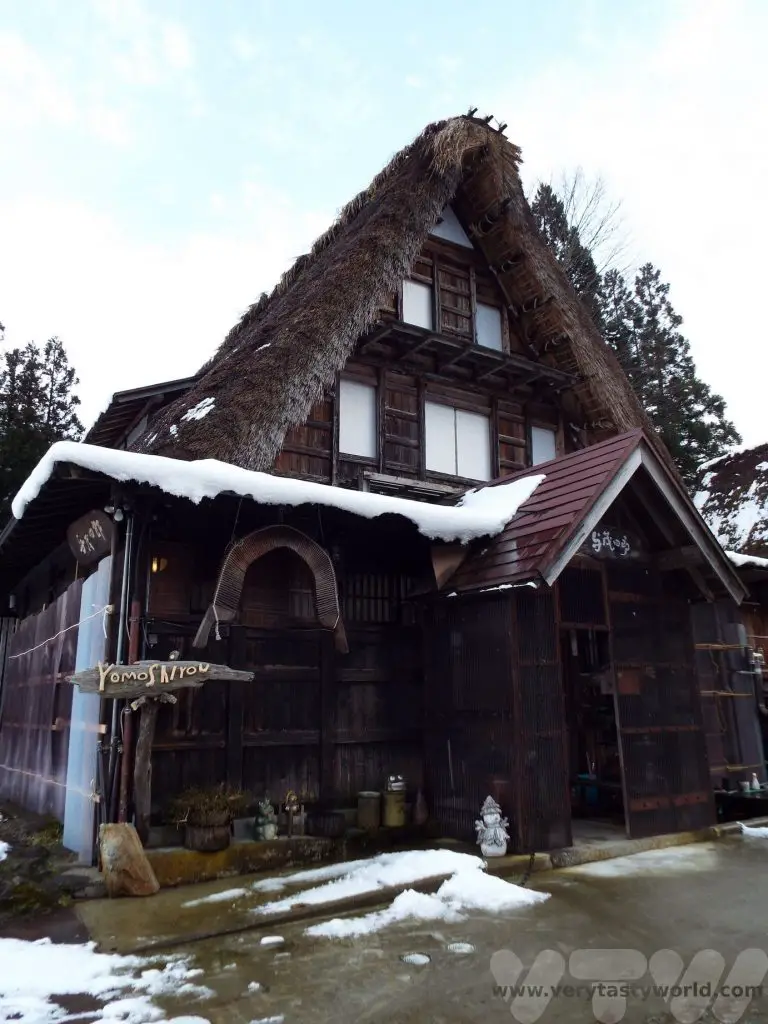
On arrival we took off our shoes and were offered an array of indoor slippers to wear. This is very common in all Japanese households, it’s considered very rude to wear outdoor shoes inside a house.
Our hosts were lovely and very welcoming. We were offered a cup of warm tea and a biscuit in the living area.
The living area has a sunken fire with a kettle suspended above the embers. The room was warm and toasty.
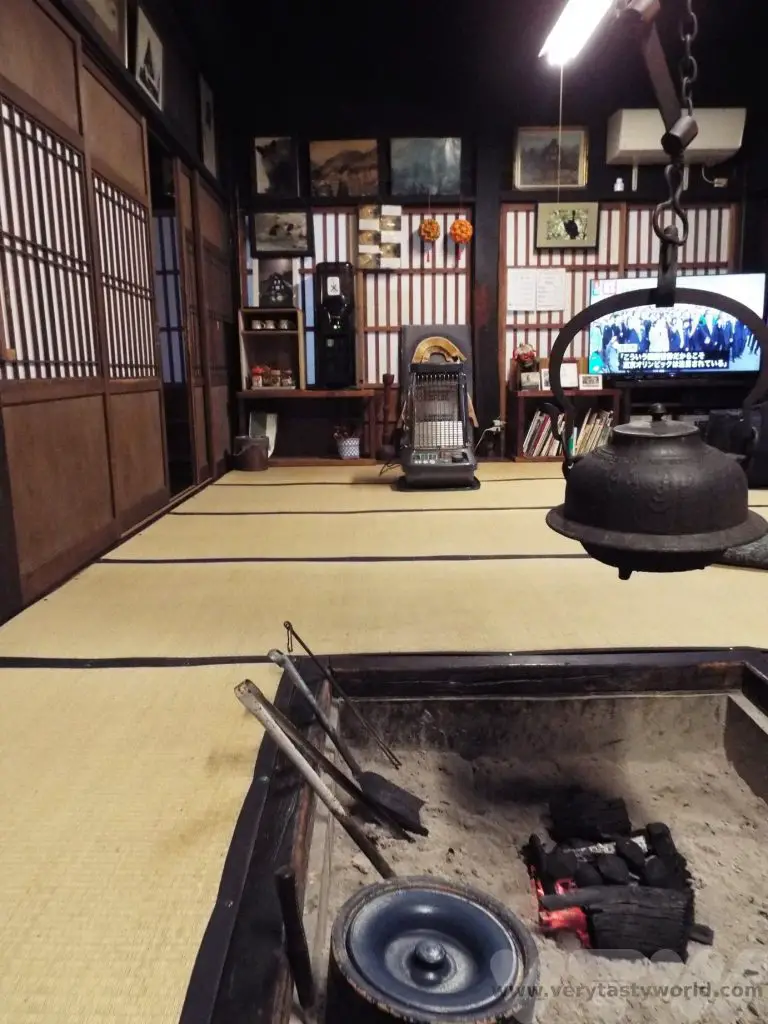
Our room was in traditional style with tatami (reed) mat and futon bedding on the flooring. Usually the bed is laid out while you are enjoying dinner.
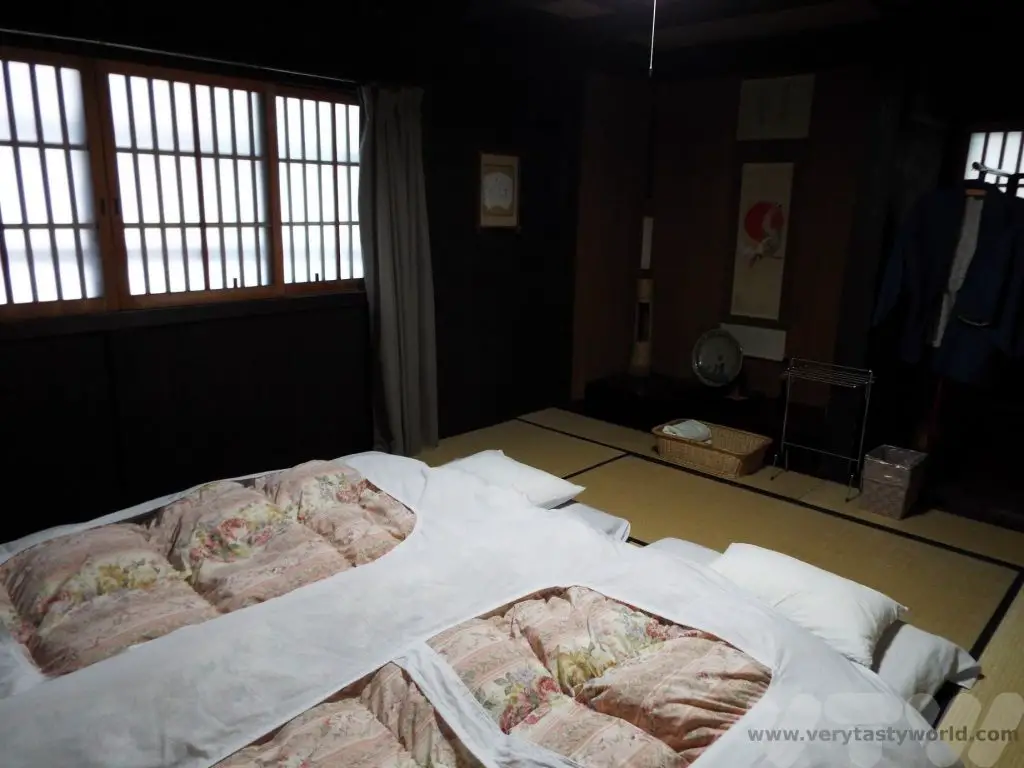
The bathroom and toilet were shared with other guests and one thing that you need to remember in Japan is to change your indoor slippers for bathroom slippers when you use the bathroom or toilet. And change them back – it is really easy to forget to change the slippers back and walking on the tatami in your bathroom slippers is like walking inside in your outdoor shoes.
Exploring the Village
We visited the day that our hosts reopened their accommodation after the new year holiday so unfortunately some of the attractions in the area weren’t yet open. There is a museum of traditional industries which demonstrates the paper making and silk activities of the region.
The village also has a folk museum that showcases traditional utensils, tools and musical instruments from the region.
There are a number of walks in the area. One of these is essential – a viewing area close to the village entrance where you can climb up the hillside to take that perfect shot of the village, nestled amidst the mountains.
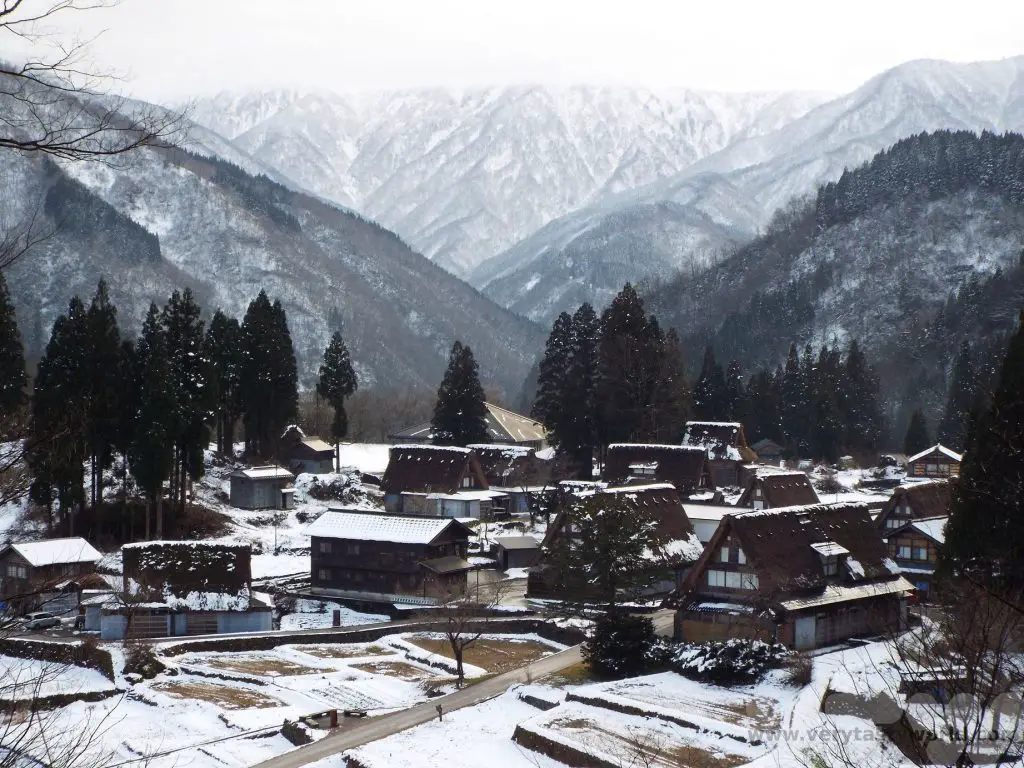
Back to the Gassho for Dinner
The costs of our stay included dinner and breakfast and this was a highlight of the visit as the food on offer was locally sourced, some even grown by our hosts. We dined with the other guests in the living area.
Our home-cooked dinner was utterly delicious. Char, a fish a bit like a trout, was salted and roasted on a spit in the fire.
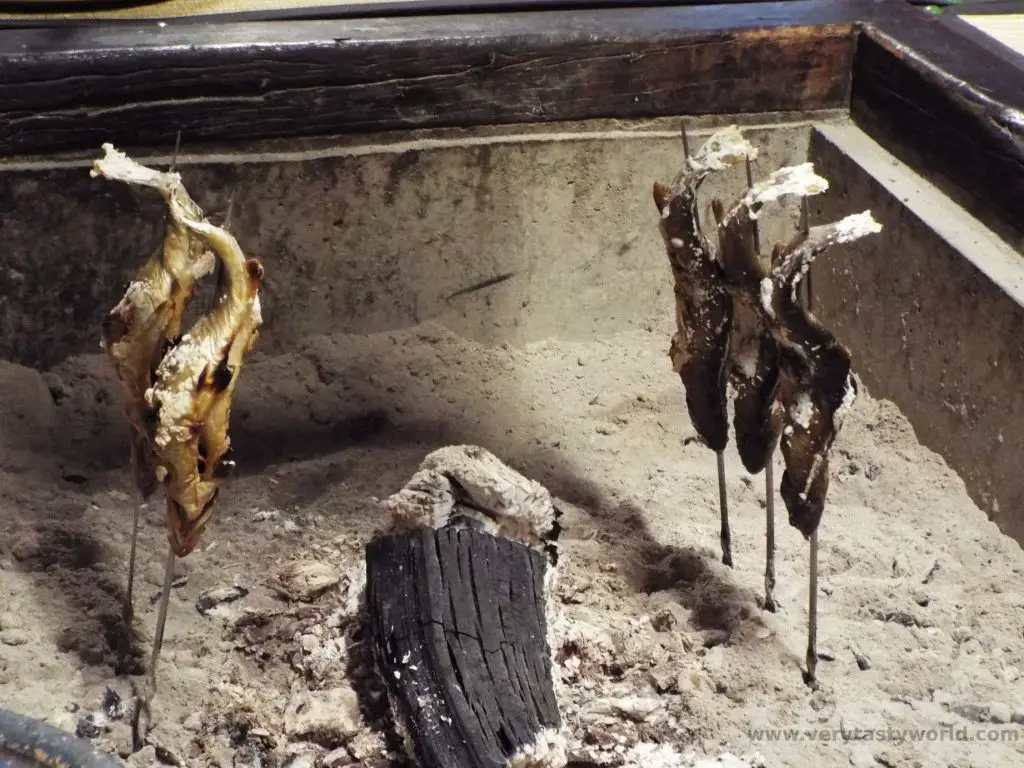
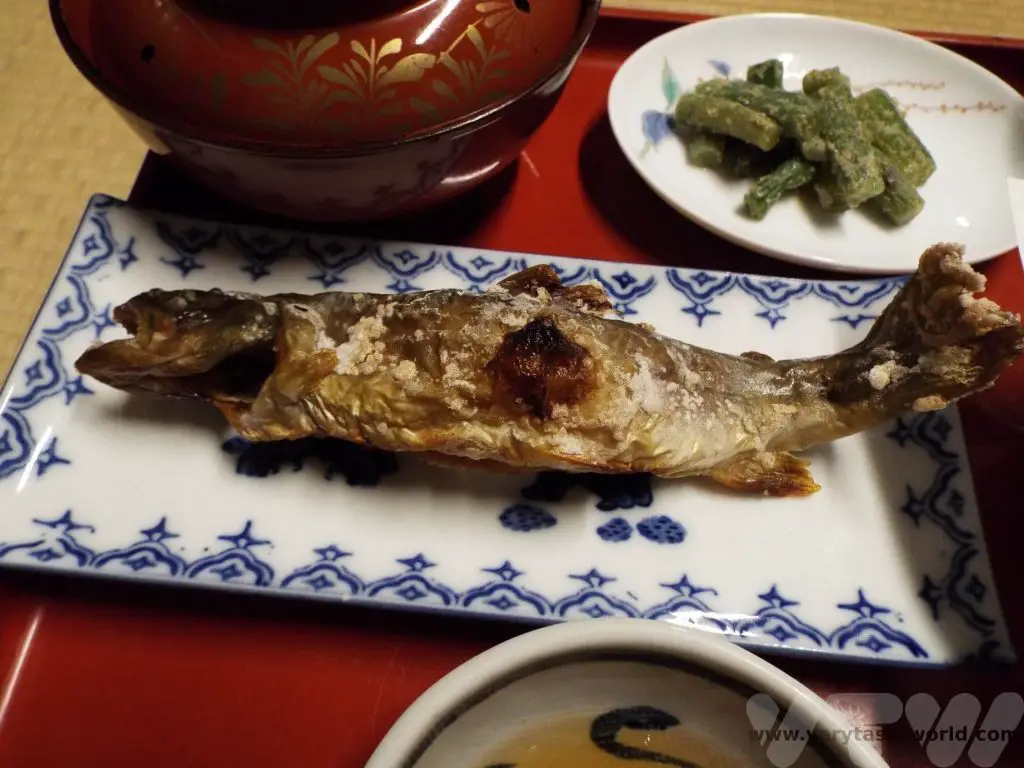
We were also served koi sashimi, vegetable tempura and a home-grown spaghetti squash, mountain greens, and simmered bamboo shoots, mushrooms and sweet potato.
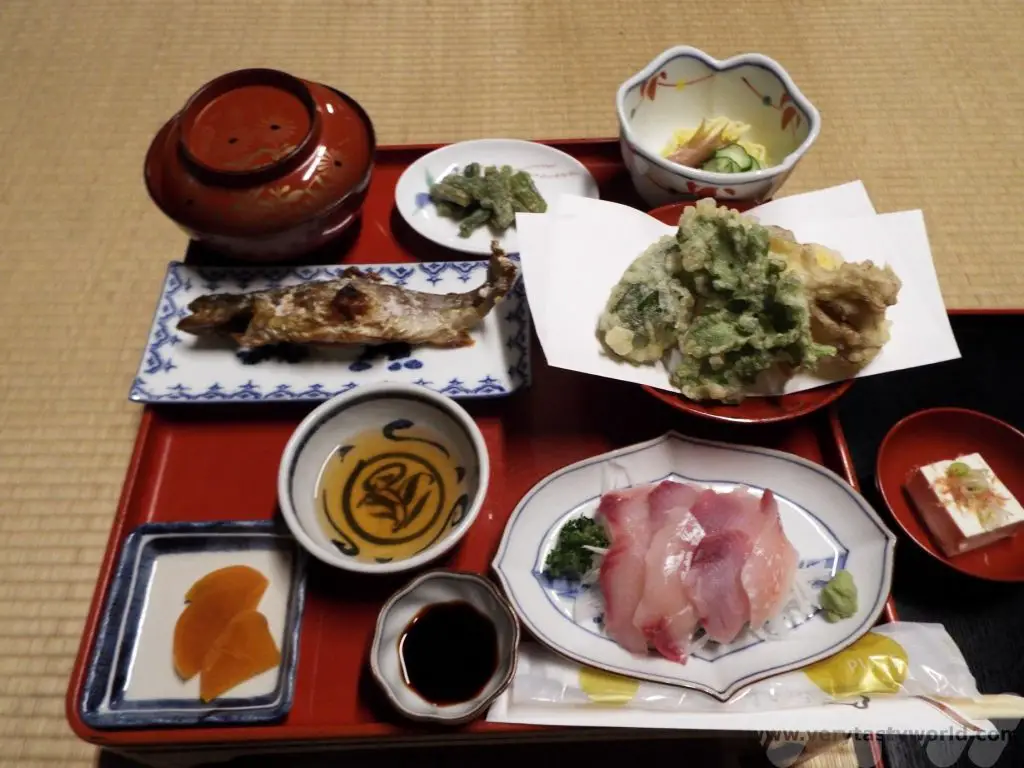
Rice accompanied the meal and we also enjoyed some local sake.
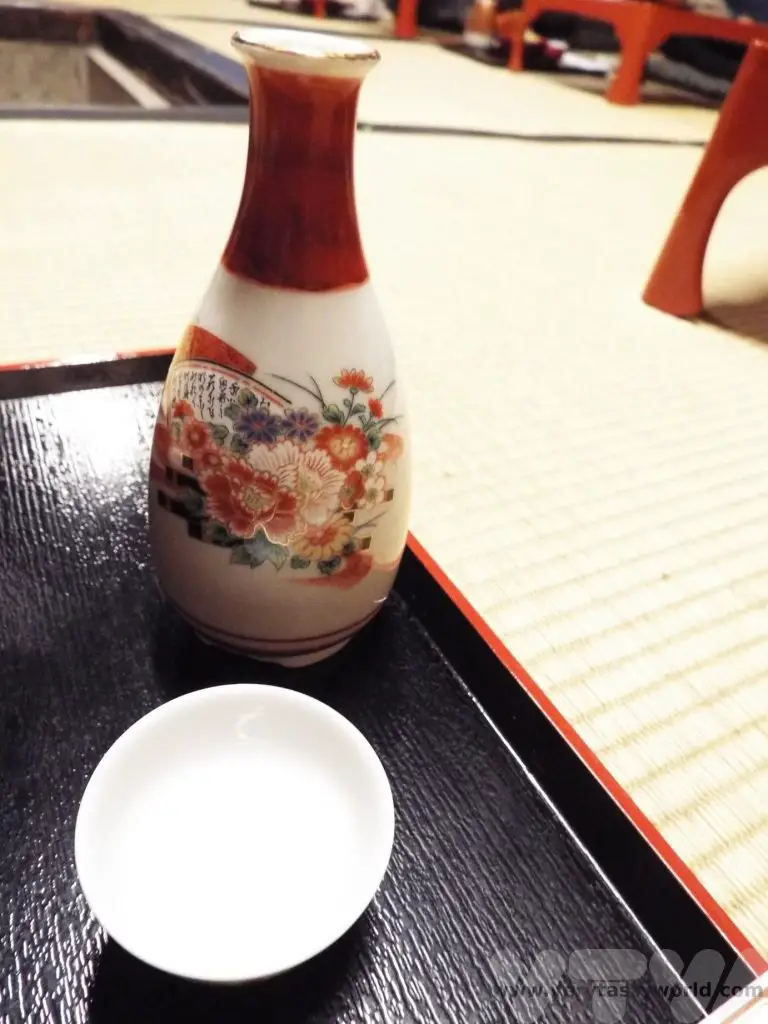
After dinner we were entertained with a documentary about the villages and then our hosts played some music using traditional instruments.
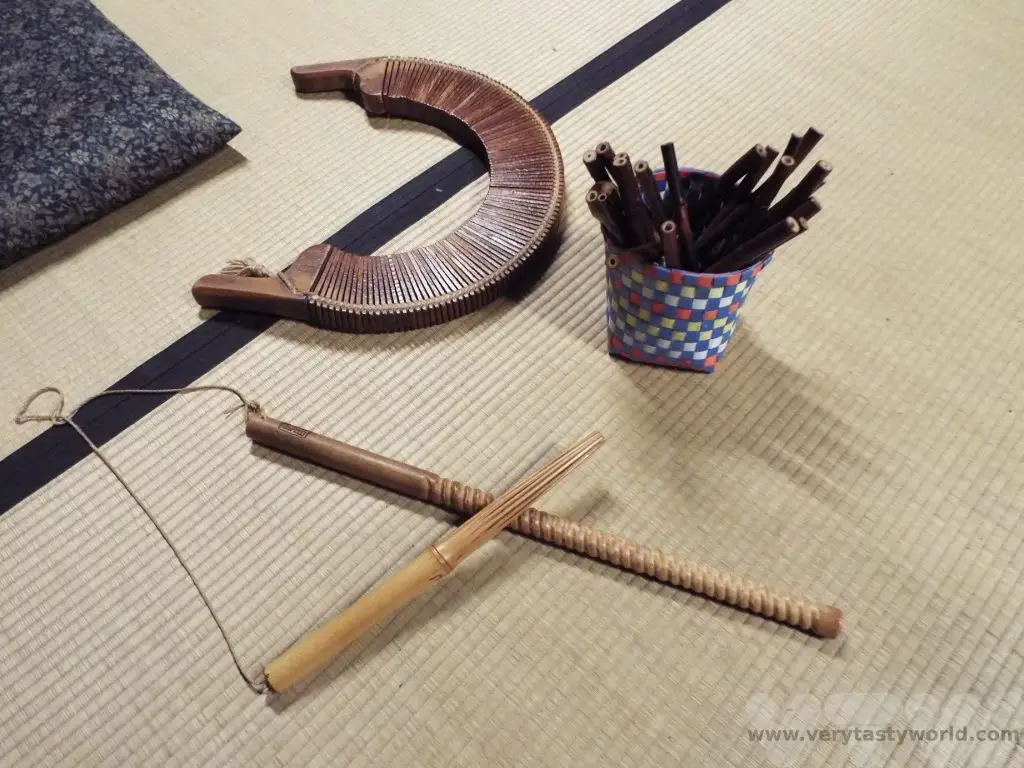
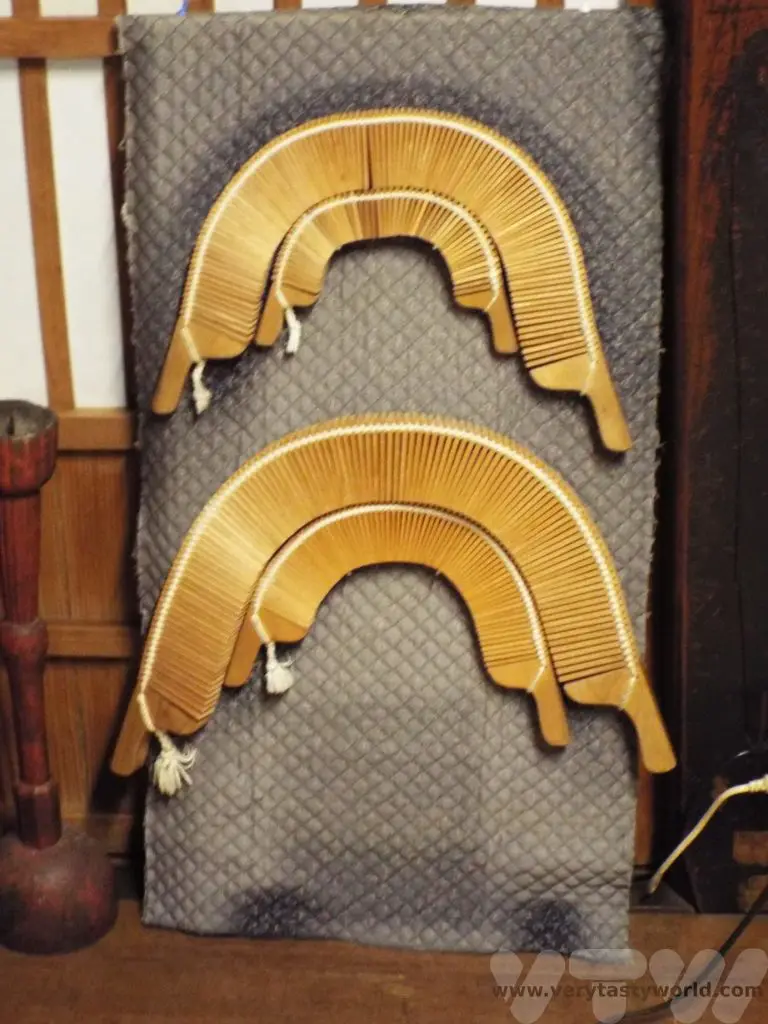
A lot of these are percussion, notably the sasara which comprises many wooden clappers which are strung together.
A Cosy Night’s Sleep
At bedtime we were provided with hot stones to put into our futons.
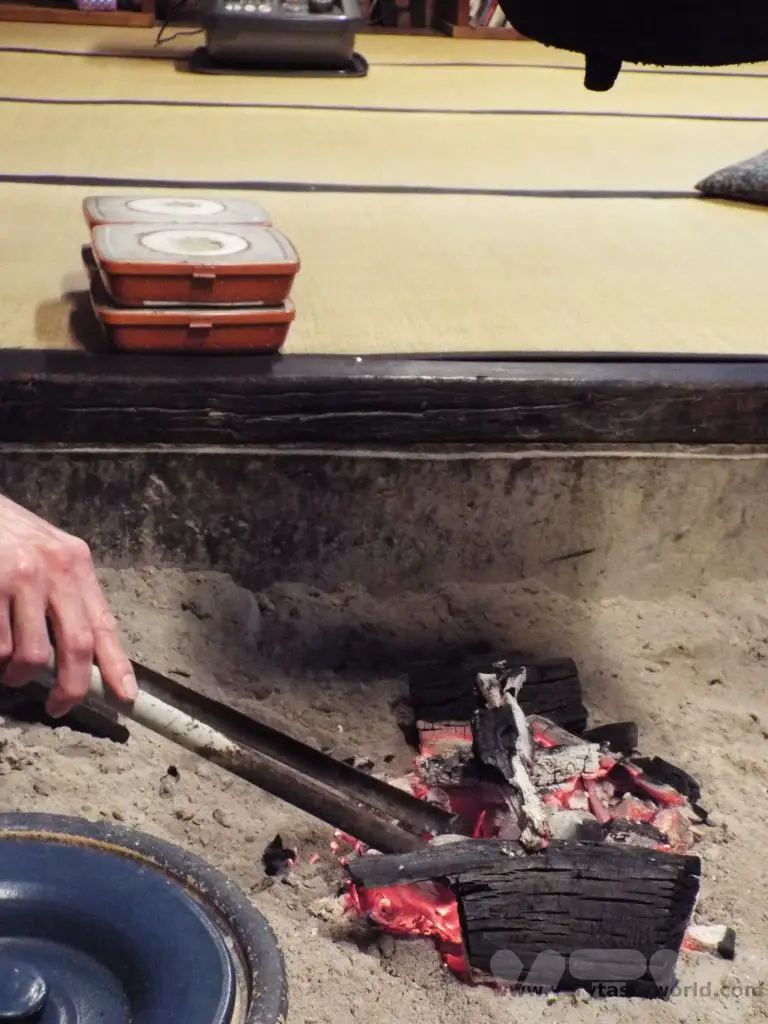
These stones had been heated in the fire and were placed inside ceramic boxes then wrapped in a thick cloth.
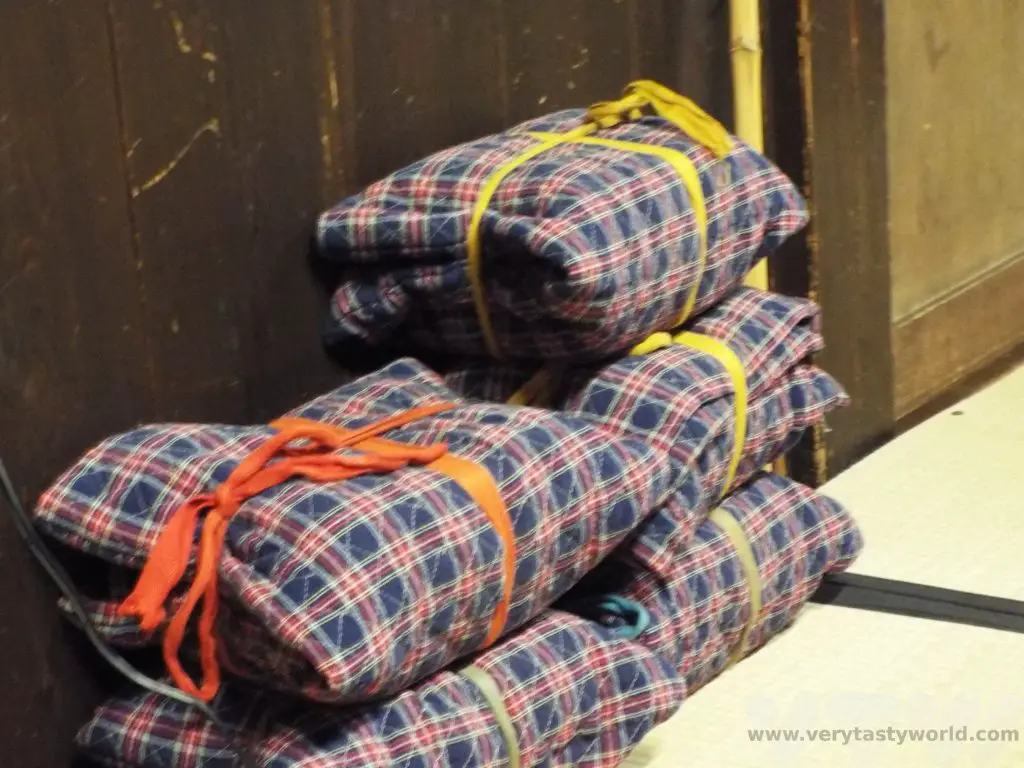
These were better than any hot water bottle we’d ever used, they retained the heat so well – they actually felt as though they were getting warmer through the night.
Breakfast the following morning was a traditional Japanese meal and also delicious. There were lots of fresh vegetable dishes, rice and miso soup.
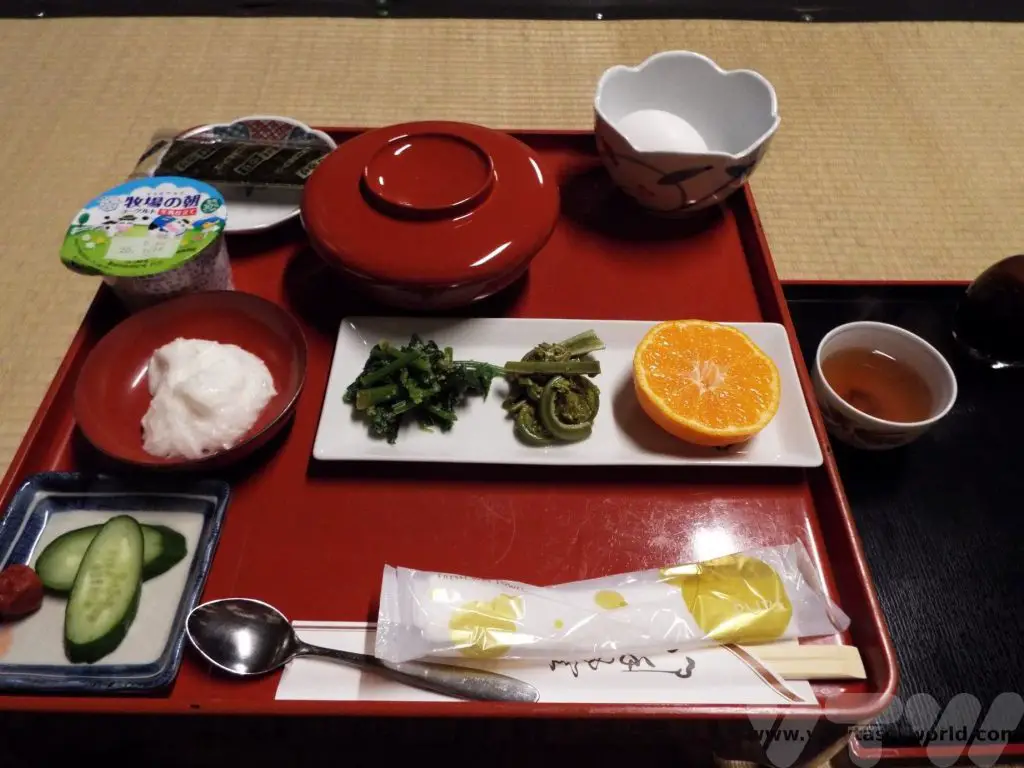
We were given the choice of a raw or boiled egg. We always choose raw egg. You mix it into the rice, which partially cooks the egg, add a bit of soy sauce to your taste and then scoop up the flavourful mixture with a piece of nori seaweed. You usually get a sour and salty umeboshi plum – a real wake-up call!
Staying in a gassho is a delightful way to spend time in rural Japan and is highly recommended. But… make sure you plan your trip and book early!
Related Posts You May Enjoy

- Recipe: Simmered Shiitake Mushrooms

- How to Use Public Transport in Japan

- RECIPE Oyakodon Donburi

- Planning a Trip to Japan

- The Makanai: Cooking for the Maiko House

- Setsubun Food – Bean Throwing Day

- The Gassho Farmhouses of Rural Japan

- Recipe: Japanese Simmered Pork Belly – Buta no Kakuni

- RECIPE: How to Make Umeboshi


